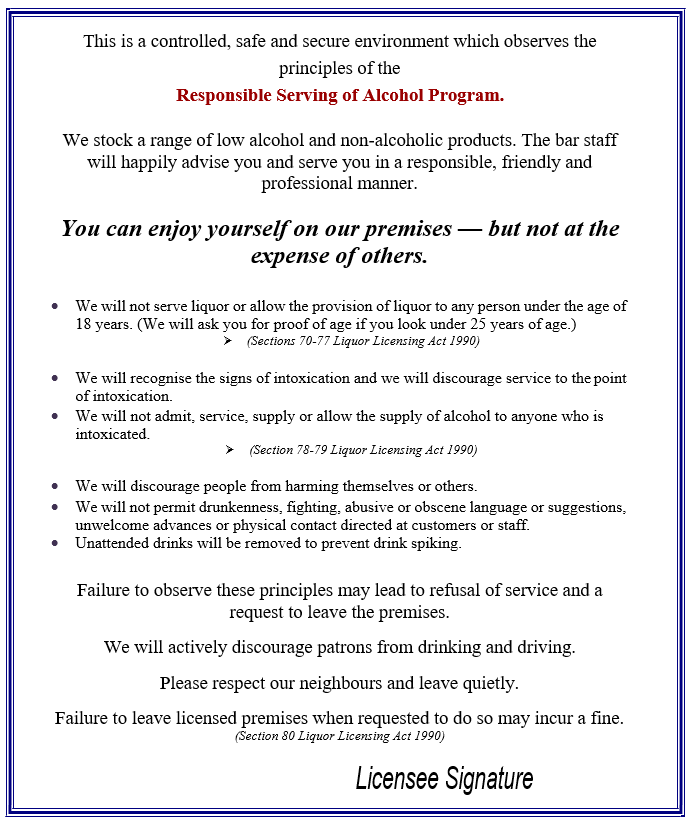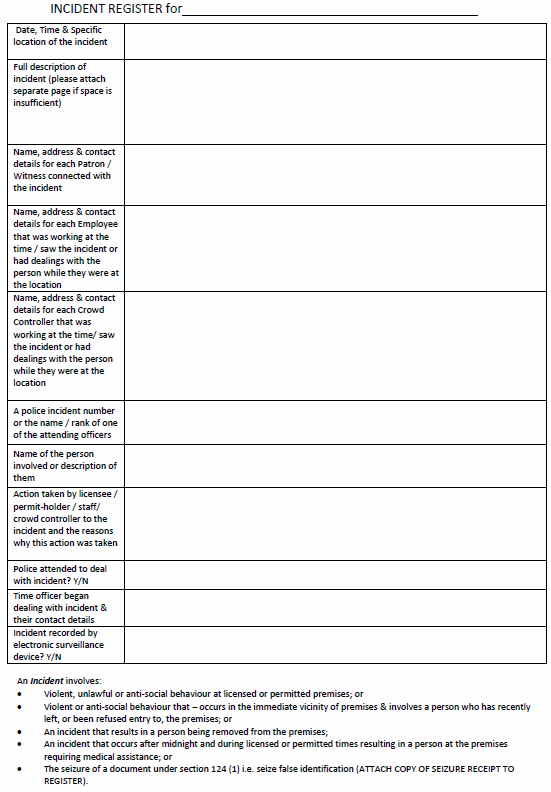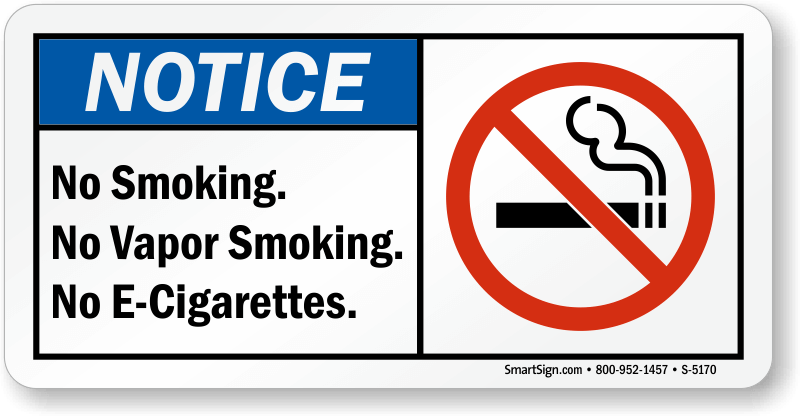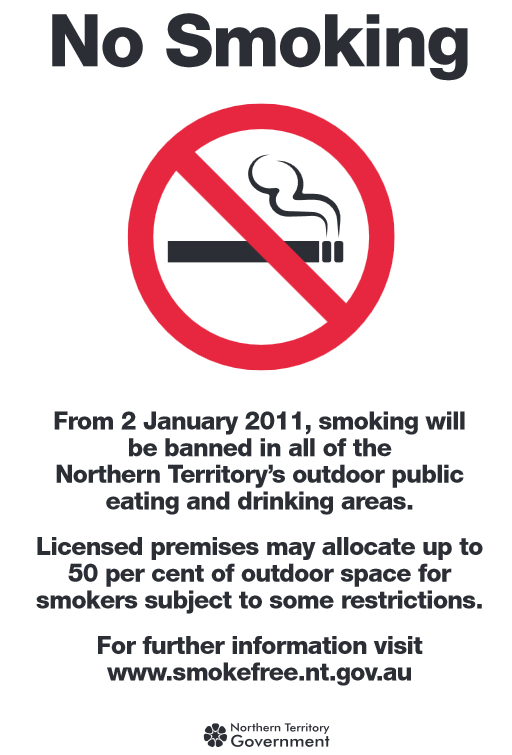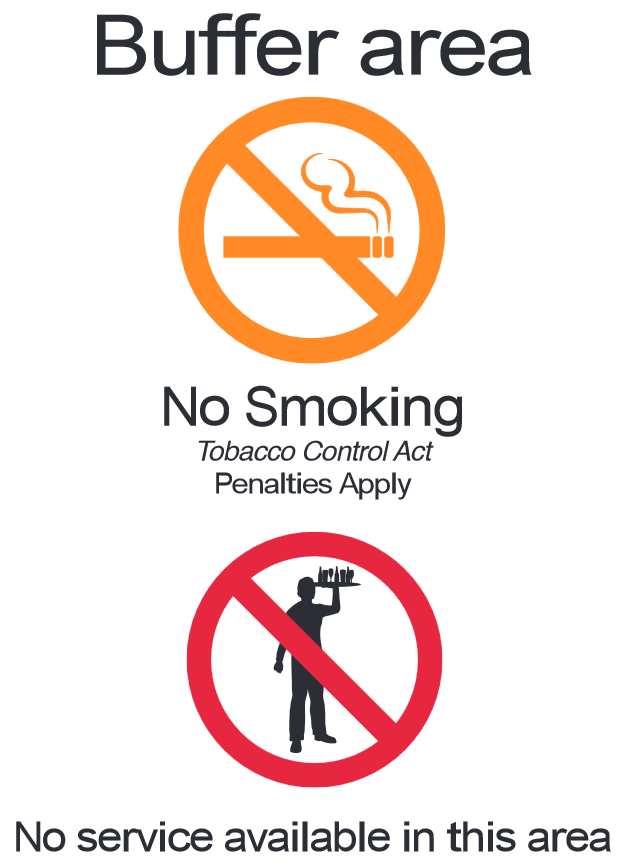Lesson 1: ABOUT THE UNIT – SITHFAB021 Provide Responsible Service of Alcohol
Introduction
Welcome to your Responsible Service of Alcohol course commonly known as the ‘RSA’.
It is mandatory for certain staff involved in the Australian liquor and gaming industries to have obtained the appropriate certification in the Responsible Service of Alcohol (RSA) within a limited time after first starting work.
- In QLD, RSA training must be completed within 30 days of starting work.
- In WA, club staff engaged in the sale, supply or service of liquor have 28 days from the date they commence employment/volunteer in that capacity to complete the course.
- In SA and TAS, an RSA must be obtained within 3 months of starting employment. In SA, security personnel must have an RSA before starting work. In Tasmania, you must be 16 years or older to do an RSA course.
- In the ACT, a Staff Responsible Service of Alcohol (RSA) must be obtained before starting work.
- In NT, employees need to have an RSA certificate within seven days of starting work at licensed premises.
- In VIC, licence and staff have one (1) month from the date they first sell, offer for sale or serve liquor on a licensed premise to complete an approved RSA training course.
The focus of this course is ensuring that staff who are providing, selling or serving alcohol are aware of the performance outcomes, skills and knowledge required to responsibly sell or serve alcohol on a licensed premise.
Application
This unit describes the performance outcomes, skills and knowledge required to responsibly sell or serve alcohol.
Responsible practices must be undertaken wherever alcohol is sold, served or supplied, including where alcohol samples are served during on-site product tastings. This unit therefore applies to any workplace where alcohol is sold, served or supplied, including all types of hospitality venues, packaged liquor outlets and wineries, breweries and distilleries.
The unit applies to all levels of personnel involved in the sale, service, including promotional service and supply of alcohol in licensed premises. Those selling or serving alcohol may include food and beverage attendants; packaged liquor salespersons selling in person, over the phone or online; winery, brewery and distillery cellar door staff; delivery services and supplier sales representatives. The unit also applies to security staff who monitor customer behaviour and to the licensee who is ultimately responsible for responsible service of alcohol (RSA) management.
RSA training may also need to be completed by other staff who have alcohol service responsibilities, such as:
- volunteers
- promotional staff
- contract employees
- directors of registered clubs
Sanctions or penalties apply to both the liquor licensees and staff who serve alcohol or undertake security duties where RSA training has not been undertaken.
The unit incorporates the knowledge requirements, under state and territory liquor licensing law, for employees engaged in the sales, service or supply of alcohol.
Certification requirements differ across states and territories. In some cases, all people involved in the sale, service including promotional service and supply of alcohol in licensed premises must be certified in this unit. This can include the licensee and security staff.
This unit covers the RSA skill and knowledge requirements common to all States and Territories. Some legislative requirements and knowledge will differ across borders. In some cases, after completion of this unit, state and territory liquor authorities require candidates to complete a bridging course to address these specific differences.
Context for Assessment
This course meets the requirements for the nationally accredited unit ‘SITHFAB021 Provide responsible service of alcohol’ and the state requirements for:
- Queensland
- South Australia
- Western Australia
- Northern Territory
- Australian Capital Territory (ACT)
- Tasmania
- Victoria (after completion of VGCCC’s free online RSA bridging course)
This assessment has three parts. The Knowledge Assessment and Incident Report may be completed wholly online, while Practical Assessment is meant to be answered verbally, via phone call, Galaxy’s audio recording platform, or the submission of an audio file.
Required Materials
Learning Materials
For this unit of competency, participants are provided with resources including learning and assessment materials required to achieve competency.
All the assessments and relevant documents of students are recorded, reported and stored as per government requirements.
Equipment and Facilities Required
For the purpose of enrolment and course completion, students would need to provide –
- Photo ID (e.g. Australian or foreign Passport, Drivers Licence, Proof of Age card)
- Unique student identifier (USI) – Click here to create a USI
To support the delivery and assessment of this program in an online environment, students need to have access to the following equipment and resources –
- Any device (computer/laptop/tablet/smartphone) with internet access. GTA’s website is optimised for mobile devices and does not use Flash etc. which does not work across devices/platforms. GTA’s site works on any device and platform.
- Any modern web browser. For example - Chrome, Safari, Firefox, IE etc.
- Telephone OR device capable of recording audio for the verbal assessment.
Reasonable Adjustment
To assess if a particular adjustment is reasonable, the following criteria will be considered:
- the student’s disability and views
- the effect of the reasonable adjustment on the student, including the effect on the ability to achieve learning outcomes, participate in courses or programs and achieve independence
- the effect of the proposed adjustment on anyone else affected, including the training centre, staff and other students
- the costs and benefits of making the adjustment.
In this instance, what is “reasonable” will be dependent on each individual’s requirement. Galaxy Training Australia will consider each case individually and in more complex cases, will confer with the relevant government department for advice.
Galaxy Training Australia will allow flexibility in relation to the way in which the program is delivered and assessed based on the student’s requirements. If the student, after reasonable adjustments and all possible adjustments have been accommodated and completed fairly, the student is still unable to fulfil the core requirements, it may then be reasonable that the student is deemed not competent for the unit.
An alternative course of study may be recommended to meet the student’s abilities and the Training Manager can assist in making this assessment.
Examples of adjustments may include:
- assistance of a Learning Support Teacher for LLN issues
- changes to course design, e.g. instead of written assessment task – change to verbal questioning & assessor to write the answers
- supply of specialised equipment or services, e.g. a notetaker for a student who cannot write.
Any reasonable adjustment required must be discussed with the assessor before starting the assessment. Email us at [email protected] or call us at 07 3062 722 to request a call back from an assessor.
Submission
The delivery hours may vary depending upon past experience, knowledge and general computer/internet skills of a user. The delivery hours include training (online), and assessment (online & practical) components. Students have access to the course 24/7 and may complete it at any stage over a 3-month period.
You may discuss your submission schedule with your assessor before starting the assessment.
Appeals
If you do not agree with any decisions made regarding the outcome of your assessment, you may discuss the matter with your assessor. Contact your assessor to arrange a time and day to discuss your appeal.
Expiry of Statement of Attainment
- For QLD, WA, SA and TAS, once you complete this course your Statement of Attainment does not expire .
- For ACT, the Statement of Attainment expires in 3 years .
- For NT, employees need to renew their RSA certificate every 3 years .
- For VIC, approved RSA online refresher course must be completed within 3 years of completing their last RSA program (and every three years thereafter).
However, government liquor and gaming authorities occasionally change the training requirements for RSA & RSG and at some point in the future you may need to update your training.
At Galaxy Training, we recommend that you do this every 3 years to ensure that your knowledge and skills are current and up to date.
Additional Training Requirements
It is mandatory for certain staff involved in the Australian liquor and gaming industries to have obtained the appropriate certification in the Responsible Service of Alcohol (RSA) within a limited time after first starting work.
The focus of this course is ensuring that staff who are providing, selling or serving alcohol are aware of the performance outcomes, skills and knowledge required to responsibly sell or serve alcohol on a licensed premise.
Queensland
RMLV Training - Responsible Management of Licensed Venues (QLD)
It is mandatory for Liquor Licensees (if individuals), Approved Managers and some Permit Holders to have a current Responsible Management of Licensed Venues (RMLV) certificate.
Record-Keeping Requirements
Licensees are no longer required to keep an RSA training register; however, they are still required to:
- keep copies of current training course certificates or statements of attainment for staff
- make copies available at the premises for inspection by
- an Office of Liquor and Gaming Regulation (OLGR) compliance officer
- members of the Queensland Police Service
Offence
Fine
Licensee/permittee fails to keep/produce copies of the approved manager's/licensee's current training and course certificates
$1,613
Western Australia
Approved Managers
Are appointed by the licensee of a liquor licensed premises to be the responsible person in charge of the premises.
There are two types of Approved Managers:
- Restricted – Applicable only on Club, Club Restricted and Occasional licensed premises. They need to complete SITHFAB021 Provide responsible service of alcohol
- Unrestricted – Applicable to all types of licensed premises. They need to complete SITHFAB021 Provide responsible service of alcohol plus a course in Management of Licensed Premises 52735WA (MLPLCA401A, MLPLCA402A and MLPLCA403A)
An Approved Manager ID Card must be kept on your person at all times whilst working.
Mandatory Training Register Required
Section 103A(1)(b) of the Act states that licensees must maintain, on the licensed premises, a training register that records the details of all employees/volunteers who have completed the Responsible Service of Alcohol unit of competency.
South Australia
A Responsible Person (RP)
A Responsible Person is a person approved by the licensing authority, issued with a photo identification badge indicating that they are approved as a responsible person under the Liquor Licensing Act 1997. Licensee must submit an application to get a badge for the person.
Requirement to Wear an Identification Badge
A Responsible Person must wear an identification badge at all times while on duty. Badges must be worn in a prominent position. It is suggested that they are worn at breast pocket height.
Record-Keeping Requirements
The licensee must produce evidence of the completion of responsible service of alcohol training by staff, within 7 days of being requested to do so by an authorised officer.
If you don't have a responsible person on duty, you can be issued an on-the-spot fine of $1,200 and a maximum penalty of $20,000.
Northern Territory
Responsible Service of Alcohol (RSA) certificates for staff involved in the service of alcohol are compulsory in the Northern Territory, in line with the rest of Australia.
- Staff are required to be RSA trained within seven days of starting work at licensed premises.
- Employees need to renew their RSA certificate every three years .
- RSA certificate for SITHFAB021 Provide responsible service of alcohol issued by any of the accredited Australian training providers is acceptable in the Northern Territory.
Record-Keeping Requirements
Licensees must keep an RSA register on the premises, with a copy of each staff member's RSA certificate included.
Tasmania
A licensee must not allow a person to serve liquor on licensed premises unless the person:
- has successfully completed an RSA course ; or
- is enrolled to undertake a course within 3 months of commencing work.
Record-Keeping Requirements
From 1 October 2018, the requirement for a licensee to maintain a Responsible Service of Alcohol (RSA) register is no longer mandatory.
Licensees need to retain a copy of the RSA certificate issued to any staff member involved in the sale and service of liquor, or evidence of a staff member’s enrolment in an approved course.
Licensees must be able to produce the certificates or evidence of enrolment when required.
Licensees can also keep the records electronically.
Australian Capital Territory
In the ACT, a Staff Responsible Service of Alcohol (RSA) must be obtained before starting work.
Record-Keeping Requirements
It is a requirement of the Act that licensees keep copies of RSA certificates for the following people:
- The licensee
- Each employee who serves liquor at the licensed premises
- Each crowd controller working at the licensed premises.
All copies of RSA certificates should be kept on the premises and be made available for inspection by an appropriate person on request.
Offences for Supplying liquor without RSA certificate:
Fine
Licensee or permit-holder without RSA
Up to $8,000
Employee without RSA
Up to $1,600
Licensee or permit-holder allows the employee to serve
Up to $8,000
Crowd controller without RSA
Up to $1,600
Licensee or permit-holder allows crowd controller to work
Up to $8,000
Fail to keep RSA certificates of each staff member
Up to $3,200
Victoria
Record-Keeping Requirements
It is a requirement of the Act that licensees keep copies of RSA certificates for the following people:
- The licensee
- Each employee who sells, offers for sale or serves liquor on the licensed premises
- Person responsible for the management or control of the licensed premises
Only RSA certificates issued within three years are valid. All copies of RSA certificates (photocopies or electronic copies are acceptable) should be kept on the premises and be made available for inspection by an appropriate person on request.
Offences related to RSA training:
Fine
Failure by licensee (natural person) to complete an approved RSA program (either refresher or initial training) within 3 years of last completing an approved RSA program
Up to 11,855
Failure by licensee (body corporate) to ensure that the person responsible for the management or control of the licensed premises has completed an approved RSA program (either refresher or initial training) within 3 years of last completing an approved RSA program
Up to 11,855
Failure by the licensee to ensure that any person who sells, offers for sale or serves liquor on the licensed premises has completed an approved RSA program within the 3 years prior to beginning to sell, offer for sale or serve liquor on the licensed premises
Up to 11,855
Failure by licensee to ensure that any person who sells, offers for sale or serves liquor on the licensed premises has completed an approved RSA program (either refresher or initial training) within 3 years of last completing an approved RSA program
Up to 11,855
Failure by the licensee to establish and maintain an approved RSA program register
Up to $988
Failure by the licensee to produce an approved RSA program register
Up to $988
Advanced RSA training
Anyone applying for a new late-night (general) licence or late-night (on-premises) licence that authorises the supply of liquor after 1 am for on-premises consumption must complete the Advanced RSA training course. This requirement does not apply in relation to late-night (on-premises) licences with restaurant and cafe conditions.
Interstate Recognition
Anyone with a nationally accredited RSA qualification obtained through face-to-face or online training from an RTO recognised in another state or territory will be able to complete the VGCCC’s free online RSA bridging course to have their qualification recognised in Victoria. Once you have completed the course, you will receive a Victorian RSA certificate that allows you to work in a Victorian licensed venue.
Your Role as an RSA Staff Member
Bar, liquor store and gaming area staff who sell, serve or provide alcohol to customers, must know how to follow responsible service of alcohol laws and responsible hospitality practices.
The following six learning areas cover the typical skills and knowledge of staff under RSA. These practices will be assessed using scenarios, online simulated events and verbal assessment.
- Sell or serve alcohol responsibly
- Identify issues related to the sale or service of alcohol to different types of customers, especially those at risk.
- Assess alcohol-affected customers and identify those to whom sale or service must be refused
- Refusing to provide alcohol
- Workplace skills
- Workplace knowledge
Visit https://training.gov.au/Training/Details/SITHFAB021 to get details on the unit - SITHFAB021 Provide responsible service of alcohol
What is the Responsible Service of Alcohol?
The aim of this course is to provide staff and management with the knowledge and ability to meet their responsibilities regarding the service of alcohol with due care and achieve an understanding of the law that controls the service of alcohol in their state.
Responsible Service of Alcohol (RSA) is about using the appropriate rules and strategies for all types of businesses and organisations that sell or provide alcohol, this includes:
- minimising the harm associated with misuse and abuse of liquor (including harm arising from violence and other anti-social behaviour),
- encouraging responsible attitudes and practices towards the promotion, sale, supply, service and consumption of liquor,
- ensuring that the sale, supply and consumption of liquor contributes to, and does not detract from, the amenity of the community
Following the above principles can assist licensees and their staff to sell alcohol responsibly and aid compliance with the local liquor laws.
What other reasons are there for the responsible service of alcohol?
Following are some other really good reasons to make sure that alcohol is served in a responsible way:
- Reduces your own personal (civil) liability (remember, there are heavy fines for individuals serving alcohol to those who are underage and intoxicated).
- Reduces the civil liability of the licensee or permit holder (there are even bigger fines for licensees and permit holders if people serve underage or people who are intoxicated).
- Minimises the possibility of fines, cancellation or suspension of the licence.
- Creates a safer and more pleasant workplace for you and other staff.
- Improves job security. A comfortable, profitable premises is more likely to keep staff.
- Minimises the harm to patrons shows that the premises is a good corporate citizen that values the wellbeing of its patrons.
- Reduces community problems such as noise, neighbourhood disruption, drink driving and violence.
- Creates a safer environment and contributes to community cohesion.
- Protects the reputation of the industry as one that recognises its responsibilities and complies with the relevant laws.
- Increases the potential for profitability. Premises that are seen to be a safe, comfortable places to go will minimise turnover of customers as well as staff; increasing revenue and reducing running costs.
- Premises with a good reputation as an employer, ensuring its staff are trained and supported in the workplace, will develop a positive ‘first port of call’ reputation among job seekers.
Did you know?
Generally, the profit margin on post-mix soft drink is much better than for alcoholic beverages.
The person who sits in your bar and drinks cola all night is, in fact, more profitable than those drinking boutique beers or top-shelf spirits.
Lesson 2: Alcohol & Intoxication
What is Alcohol?
Ethyl Alcohol is a spirituous or fermented liquid made by fermenting organic material (typically sugar-based) to develop a beverage of an intoxicating nature intended for human consumption. Its dose-related misuse is associated with a wide range of adverse consequences that can lead to significant harm to the individual and society.
The term alcohol originally referred to the primary alcohol known as ethanol (ethyl alcohol), the principal alcohol in alcoholic beverages.
Alcoholic beverages can be divided into three general classes:
- Beers
- Wines
- Spirits
Some would also classify liqueurs as an extra class, but essentially a liqueur is based on a spirit but has undergone further processing.
Alcohol is a legal drug. Alcohol (or ethanol) is also:
- an addictive drug
- a depressant drug, which means it slows down the messages travelling between the brain and the body
- in high doses, a toxic poison
Meaning of Liquor?
Liquor is a spirituous or fermented fluid or another substance where the level of ethyl alcohol (ethanol) is more than 0.5% by volume at 20ºC and is intended for human consumption.
Examples of spirituous or fermented fluids—alcoholic cocktails, beers, liqueurs, pre-mixed alcoholic drinks, spirits and wines
Examples of other substances— aerosol sprays, ice confections, jellies and powders
Liquor also includes any other substance containing ethyl alcohol (ethanol) that is prescribed by regulation as liquor.
The Path of Alcohol in the body
- Mouth: alcohol enters the body
- Stomach: some alcohol gets into the bloodstream in the stomach, but most moves on to the small intestine
- Small Intestine: alcohol enters the bloodstream through the walls of the small intestine
- Heart: pumps alcohol throughout the body
- Brain: alcohol reaches the brain
- Liver: alcohol is oxidised by the liver at a variable rate (depends on various factors including gender, health, stomach is full or empty, type of drink, etc.). Alcohol is converted into water, carbon dioxide & energy.
The average person’s liver will take about an hour to process 10 grams of alcohol, which is the amount of alcohol in a standard drink.
There are many stories and ‘old wives’ tales’ about how to sober up after being intoxicated. Some of the most common are taking a cold shower, vomiting and drinking coffee.
The only way that alcohol can get out of the system is through the liver and no matter how much coffee, dancing or exercise a person does, the rate at which this happens is pretty much fixed.
Alcohol and your Brain – Tune In Not Out
The effects of Alcohol?
As people drink more their Blood Alcohol Concentration (BAC) gets higher and the effects of intoxication become more pronounced.
Low Doses
Medium Doses
High Doses
• Relaxing effect
• Reduces tension
• Lowers inhibition
• Slower reflexes
• Reduces coordination
• Impaired concentration
• Impaired reaction time
• Slurred speech
• Drowsiness
• Change in emotions (anger, aggression)
• Distorts visual and hearing ability
• Vomiting
• Breathing difficulties
• Unconsciousness
• Coma
• Death
How alcohol affects us
Not all people are affected by alcohol in the same way and different amounts of alcohol can have different effects.
Several factors influence the rate at which a person becomes intoxicated:
- amount of alcohol consumed
- the general state of health
- gender
- body weight
- medications
- food intake
Alcohol is absorbed into the bloodstream as a person drinks.
It is initially absorbed through the stomach walls, but the majority is absorbed through the intestines and then carried through the bloodstream to the brain.
There are a number of other health issues from the use of alcohol. These range from an increase in the risk of cancer, stroke, liver damage and heart damage among others. See below for examples of short and long-term issues related to alcohol misuse.
Short term issues
Long term damage
Headache, nausea, memory loss, vomiting, diarrhoea, absenteeism from work, loss of concentration, unsafe sex, loss of control of motor functions, personality changes.
Heart disease, high blood pressure, stomach ulcers, liver disease, weight problems, brain damage, memory loss, dependence, anxiety, financial problems, cancer, pregnancy complications, learning difficulty, fits, nerve damage, muscle damage.
Definition of Intoxication
The consumption of alcohol, illicit drugs or medicines can cause intoxication. Dealing with intoxication at a conceptual and practical level is a priority for both legislators and police.
While serving and supplying an intoxicated and/or drunk person is an offence in every state and territory, each jurisdiction defines these terms in different ways and applies different obligations in relation to the offence of intoxication.
The offence may apply to anyone:
- A licensee
- A staff member
- A club director
- A volunteer (who has liquor service responsibilities)
- A patron
What is Intoxication?
The most common definitions of intoxication used in the state/territory laws:
‘Intoxicated’ is “a state of being in which a person’s mental and physical faculties are impaired because of consumption of alcohol (or other drugs) so as to diminish the person’s ability to think and act in a way in which an ordinary prudent person in full possession of his or her faculties, and using reasonable care, would act under like circumstances”.
It is the responsibility of licensees and staff to monitor a patron’s behaviour, level of intoxication and to prevent the service of alcohol to an intoxicated person. Intoxicated patron must be refused service of further alcohol and either leave the premises or in some circumstances, offered non-alcoholic beverages such as soft drinks, tea or coffee.
Drunk (WA)
Intoxicated (NSW, VIC, SA, ACT, TAS, NT)
Unduly Intoxicated (QLD)
Legal definition of “Intoxication”
Queensland
For the purpose of Liquor Act 1992, a person may be taken to be unduly intoxicated if—
- The person’s speech, balance, coordination or behaviour is noticeably affected; and
- There are reasonable grounds for believing the affected speech, balance, coordination or behaviour is the result of the consumption of liquor, drugs or another intoxicating substance.
Western Australia
A person is considered to be drunk if:
- the person is on licensed premises or regulated premises; and
- the person’s speech, balance, co‑ordination or behaviour appears to be noticeably impaired; and
- it is reasonable in the circumstances to believe that that impairment results from the consumption of liquor
South Australia
A person is intoxicated if:
- the person's speech, balance, co‑ordination or behaviour is noticeably affected; and
- it is reasonable in the circumstances to believe that the affected speech, balance, co‑ordination or behaviour is the result of the consumption of liquor or some other substance;
Northern Territory
A person is intoxicated if:
- the person's speech, balance, coordination or behaviour appears to be noticeably impaired; and
- it is reasonable in the circumstances to believe the impairment results from the person's consumption or use of liquor or a drug.
Tasmania
Section 78 of the Liquor Act prohibits the serving or sale of liquor to any person who is intoxicated and section 79 prohibits the supply of liquor on licensed or permit premises to people who are intoxicated.
For the purposes of the Liquor Licensing Act 1990, a person is intoxicated if:
- the person's speech, balance, co‑ordination or behaviour is noticeably affected; and
- it is reasonable in the circumstances to believe that the affected speech, balance, co‑ordination or behaviour is the result of the consumption of liquor or other substance.
Australian Capital Territory
For the purposes of the Liquor Act 2010, a person is intoxicated if:
- the person's speech, balance, co‑ordination or behaviour is noticeably affected; and
- it is reasonable in the circumstances to believe that the affected speech, balance, co‑ordination or behaviour is the result of the consumption of liquor or some other substance.
Victoria
For the purposes of the Liquor Control Reform Act 1998, a person is in a state of intoxication if:
- The person’s speech, balance, coordination or behaviour is noticeably affected; and
- There are reasonable grounds for believing the affected speech, balance, coordination or behaviour is the result of the consumption of liquor.
What is a Standard Drink?
According to National Health and Medical Research Council (NHMRC), a standard drink is any drink that contains approximately 10 grams of alcohol.
The concept of a 'standard drink' is a measure not of how much liquid has been consumed, but how much pure alcohol has entered the body system.
Different alcoholic beverages contain different amounts of alcohol.
Staff serving alcohol need to prepare and serve standard drinks or samples according to industry requirements and professional standards.
Calculating a Standard Drink?
If standard drink information is not provided on the container, then you easily calculate a standard drink with the help of following formula:
Volume of container in litres# x % alcohol by volume (ml/100 ml) x 0.789* = The number of standard drinks
# 1 litre = 1000 ml
* The specific gravity of ethyl alcohol is 0.789
For example, a 425 ml glass of full-strength beer (4.8% of alcohol by volume) is:
0.425 x 4.8 x 0.789 = 1.6
Australian labelling laws
Under the Food Standards Code (FSANZ sections 1.2 & 2.7) an alcoholic beverage containing more than 1.15% alcohol by volume must include a statement of the alcohol content. This statement must indicate the volume of alcohol in the alcoholic beverage as a proportion of the alcoholic beverage.
The label on a package of an alcoholic beverage must include a statement of the number of standard drinks in the package.
Where the package contains ten or less standard drinks, this statement must be accurate to the first decimal place. Where the package contains more than ten standard drinks, this statement must be accurate to the nearest whole number of standard drinks.
Lesson 3: Benefits & Adverse Effects of Alcohol
Benefits of Alcohol
The consumption of alcohol is an integral part of Australian culture, social occasions, and activities. Alcohol often signifies a time to be shared with others and for many Australians “having a drink” is synonymous with relaxation, socialising, and good times. Many historical and social factors contribute to the way in which alcohol is used today.
The liquor industry offers a variety of benefits to its customers and employees. Here are just a few:
- A Social Atmosphere: Bars and restaurants that serve alcohol provide a space for friends and family to come together, relax, and enjoy each other's company.
- Good Food and Drink: Whether you're looking for a craft cocktail or a cold beer, the liquor industry has something for everyone. And with food options ranging from pub fare to fine dining, there's always something tasty to pair with your drink of choice.
- Entertainment: Many bars and restaurants offer live music, comedy shows, trivia nights, and other forms of entertainment that make for a memorable night out.
- Jobs: The liquor industry provides employment opportunities for bartenders, servers, kitchen staff, live performers & tradespeople.
People use alcohol for a variety of reasons:
- It's a cultural thing
- As a social activity with friends
- It can be liberating and empowering to some people
- It can be a form of currency. People repay a favour with a slab of beer for example
- It tastes good
- It makes people feel good
- May have beneficial health properties
- It’s a social leveller - having a drink is common to all classes
They may also drink for:
- Relaxation
- Religious observance
- Peer influence
- Enjoyment
- Mood alteration
- Enhanced creativity
- Intoxication
- Addiction
- Boredom
- Habit
- Overcome inhibitions
- Escape or forget problems
- To ‘drown their sorrows’
Benefits of Alcohol to the Community
Throughout Australia, pubs and clubs have traditionally served as community meeting places, particularly in rural or remote locations, where alcohol is viewed as an integral part of a rural lifestyle and is symbolically associated with values such as “self-reliance”, “hardiness”, and “mateship”.
Local hotels and clubs are often seen as a primary source of entertainment and provide the main venue for community and sporting groups. In many cases, these “watering holes” contribute to community cohesion and identity
Benefits of Alcohol to the Economy
The contribution of alcohol to the Australian economy is substantial with annual sales of alcohol products contributing in excess of $15 billion, providing government revenue from indirect taxes on alcohol beverages is estimated to be in excess of $5.5 billion. In 2011 it was estimated that Australian households spent on average $1682 per year on alcohol.
Alcohol is also an important part of the tourism and hospitality industry which provides employment for approximately 925,000 people directly and indirectly. In 2014 Tourism Australia, forecasted a total domestic and international tourism spend of $107.1 billion.
In addition, there are many industry sectors involved in the sale and supply of alcohol products, including primary producers, manufacturing and packaging companies, retailers, marketing and advertising, printing, commodity and component suppliers, transport, and many independent suppliers of trade services.
Adverse effects of excessive alcohol consumption
Patrons who have consumed excessive amounts of alcohol and are intoxicated may display aggressive behaviour towards the staff and other customers at an alcohol-serving venue.
Patrons who have consumed excessive amounts of alcohol may be destructive towards venues that refuse to serve them any more alcoholic drinks.
Staff members of establishments are obligated to take care of intoxicated patrons.
Not only it harms the reputation of the liquor industry and the hospitality venues, but also affects the reputation of the venue as an employer amongst job seekers.
In Australian society, alcohol is the most widely used drug and is responsible for a considerable burden of death, disease and injury in Australia.
When combined, the total effects of alcohol abuse add up to a huge cost to the Australian economy with the annual economic cost of alcohol and illicit drug misuse at approximately $36 billion.
Alcohol costs Australia $36 billion/year: ABC report
Adverse effects of alcohol
Drinking is a major factor in much of the injury resulting from road crashes and other accidents, and in social problems such as violence, family breakdown, night-time assaults, child abuse and neglect.
Alcohol-related harm is not restricted to the individual drinkers but has devastating consequences for families, bystanders and the broader community.
Alcohol-related issues have been rated as the 3rd greatest problem faced by 15-24-year olds.
Alcohol consumption has resulted in significant fiscal and health costs in Australia. In 2010, the cost of alcohol-related harm (including harm to others) was reported to be $36 billion. Alcohol is also associated with 3,000 deaths and 65,000 hospitalisations every year.
The Hidden Harm
The Hidden Harm: Alcohol’s impact on children and families
Funded by FARE and undertaken by the Centre for Alcohol Policy Research (CAPR), The hidden harm: Alcohol’s devastating impact on children and families, reveals the full extent of alcohol-related family and domestic violence in Australia.
The 2015 study examined the prevalence and effects of heavy drinking on families and children, and the extent to which they persisted or changed over time.
It paints a concerning picture of the prevalence of alcohol-related family and domestic violence in Australia, shedding new light on a hidden dimension of alcohol harms that occur largely behind closed doors.
The Hidden Harm: Key Findings
The hidden harm draws on two national surveys of alcohol’s harm to others, service system data and qualitative interviews with families. Providing for the first time a detailed and valuable insight into the magnitude of the problem and the large numbers of Australian children who are being put at risk.
- In 2011 there were 29,684 police-reported incidents of alcohol-related domestic violence in Australia, and that’s just in the four states and territories where this data is available.
- Children are being verbally abused, left in unsupervised or unsafe situations, physically hurt or exposed to domestic violence because of others’ drinking. Many were also witnessing verbal or physical conflict, drinking or inappropriate behaviour.
- Over a million children (22 per cent of all Australian children) are estimated to be affected in some way by the drinking of others (2008).
- 142,582 children were substantially affected (2008), and more than 10,000 Australian children are in the child protection system because of carers drinking (2006-07).
For details, visit: http://fare.org.au/the-hidden-harm-alcohols-impact-on-children-and-families/
Lesson 4: BAC - Blood Alcohol Concentration
What is BAC?
BAC stands for Blood Alcohol Concentration and is a measure of the amount (%) of alcohol in your blood.
Your BAC begins to rise the instant you start drinking and usually takes an hour after you finish your last drink to reach its highest level.
After a heavy drinking session, it could take up to 18 hours for alcohol to leave your system. Your liver only processes equivalent to 1 standard drink per hour.
ONE standard drink per hour will raise the BAC* by around 0.0155g.
Effect of Alcohol by BAC Level
Relative Stages
Indication
BAC Level
Effects
Feeling of wellbeing
Up to 0.05
Talkative, relaxed, confident, happy, cheerful
Getting risky
0.05 to 0.08
Impaired judgment, lack of attention, reduced inhibitions
For the purpose of RSA, patrons below this line could be considered as ‘intoxicated’
Dangerous
0.08 to 0.15
Speech slurred, visual impairment, nausea and vomiting, slowed reflexes, balance affected.
Stupor
0.15 to 0.40
Laboured breathing, loss of bladder control, sleepy, passing out, unable to walk unaided.
Death
Over 0.40
Coma, shock, death
Factors that affect the BAC
Alcohol affects every person in different ways. Two people standing side by side drinking the same drinks and drinking the same amounts will be affected differently. This is due to the following factors:
Factor
Reason
Age
The body’s digestive system becomes less effective as one gets older. This means that older individuals are more likely to exhibit the effects of intoxication.
Gender
Women’s bodies contain a lower percentage of water than men’s bodies, and as alcohol is a water-soluble chemical, men can absorb a lot more of it. This means they are naturally less prone to the effects of intoxication. Also, men have a higher number of enzymes to break down alcohol molecules.
Rate of consumption
Drinking at a faster rate leads to a rise in blood alcohol content. An effective strategy is to reduce the rate of your alcohol consumption and rehydrate the body with water. In many countries, bars and clubs are legally required to offer free tap water.
Drink strength
The alcohol content within beer, wine and spirits ranges from 1-40% alcohol by volume. It is essential to be aware of the alcoholic strength of alcoholic drinks. Cordials, sodas and sweet juices can disguise the taste of alcohol customers can easily be unaware of the alcoholic strength.
Liver function
Damaged or unhealthy livers cannot process alcohol as efficiently as healthy ones, resulting in higher BACs.
Typically, the liver of a healthy person processes 1 standard drink per hour.
Body type and fat or muscle content
A larger person has more blood to dilute the alcohol, and so will take longer to reach the same BAC as a smaller person. Also, muscle absorbs alcohol but fat does not, so the more body fat a person has, the faster their BAC will rise.
Metabolism
Metabolism varies from person to person, and affects the rate at which alcohol is processed by the body.
Emotional state
Can affect the BAC too. Stress can cause the body to divert blood from the stomach and small intestines to the muscles, slowing down the rate of absorption of alcohol into the bloodstream. When you calm down and your blood flows normally again, you may experience a surge in BAC.
Medications
Remember, alcohol itself is drug. As such, it can interact with a variety of prescription medications, which are known to act as catalysts and intensify the negative side effects of alcohol.
Food
Drinking alcohol on an empty stomach will raise your BAC higher than a person who has eaten before drinking. Consuming food either before or during the consumption of alcohol slows down the absorption of alcohol into the bloodstream. Your stomach doesn’t make a difference between food and alcohol and tries to process everything at the same time. This essentially means that the alcohol you consume is kept in the stomach for a longer period, delaying the absorption into the bloodstream.
Carbonation
The gasses within carbonated drinks stimulate the digestive system. Thus, alcohol passes through the body faster.
Diabetes
Alcohol produces a chemical reaction that substantially spikes the body’s glucose levels. It is imperative that diabetics always consult their doctors regarding alcohol consumption.
Alcohol intolerance
The liver enzymes used to break down alcohol differ from person to person, depending on genetic make-up. These enzymes work at different rates, meaning some people will naturally process alcohol faster than others. This can also be observed across cultures, with people from different cultures able to consume substantially different amounts of alcohol.
Group of people that are at higher risk than others from the adverse effects of alcohol
Type of People
Reason
Young people
Many young people practice binge drinking, excessive drinking, or irresponsible drinking and are unused to the strengths of some alcohols. Rates of risky behaviours are generally higher among young people than the broader population.
Women, particularly pregnant women
There is a possibility of Foetal Alcohol Spectrum Disorders if women drink during pregnancy.
Aged or Older People
An aged body is no longer able to process or manage large doses of alcohol, additional medications may have adverse side effects if taken with alcohol. Harmful use of prescription medications and alcohol is increasing in older people (ages 60 or over) in Australia. Older people can be more susceptible to the harms arising from alcohol, tobacco and other drug use as a result of pain and medication management, isolation, poor health, grief/loss/life events and loss of independent living.
People affected by the consumption of illicit & other drugs
Many medications and drugs have adverse side effects if alcohol is consumed.
Keeping safe - the female element
- It is sometimes said that women get more intoxicated than men and there are some physiological (human function) reasons why this might appear to be the case.
- Women carry less water in their bodies (50% of total weight) than men (60% of total weight). This means that alcohol is slightly more diluted in the body of a man compared to a woman.
- The menstrual cycle has an impact. Results of an investigation revealed the following variation in BAC depending on the stage of the woman’s cycle despite drinking the same amount of alcohol:
- During the menstrual period 0.064
- Between periods (at ovulation) 0.068
- Just prior to the menstrual period 0.080
- Women should be aware that the same amount of alcohol will have different effects depending on their cycle.
- The contraceptive pill contains properties that interfere with the enzymes in the liver that break down alcohol. This means that women on the Pill metabolise alcohol at a slower rate and the BAC will take much longer to return to zero.
Drinking and Driving
Comparison of the BAC drink driving limits per state/territory
State
Learner
Provisional/ Probationary
Open
Commercial
ACT
0.00
0.00
0.05
0.00 over 15t GVM (gross vehicle mass)
NSW
0.00
0.00
0.05
0.02 over 13.9t GVM - Drivers of all commercial vehicles i.e. taxis, passenger vehicles carrying more than 12 pax; dangerous goods
VIC
0.00
0.00
0.05
0.00 over 4.5t GVM
QLD
0.00
0.00
0.05
0.00 over 4.5t GVM
TAS
0.00
0.00
0.05
0.00
NT
0.00
0.00
0.05
0.00 over 15t GVM - Drivers of all commercial vehicles i.e. taxis, passenger vehicles carrying more than 12 pax; dangerous goods
WA
0.00
0.00
0.05
0.00
SA
0.00
0.00
0.05
0.00
Those who operate commercial aircraft, public or heavy vehicles, commercial vessels, machinery, and mobile plant or farm equipment must observe blood alcohol levels required by their employer’s company policy as well as those required by law.
Lesson 5: Harm Minimisation and Duty of Care
Each State and Territory in Australia has its own laws surrounding the provision, supply and sale of alcohol, and underpinning are the concepts of Harm Minimisation and Duty of Care.
A simple definition of Duty of Care is that:
“We all have a duty of care to take reasonable care not to cause foreseeable harm to other people or their property.”
Duty of Care
Employers are responsible for the health, safety and wellbeing of all persons on the premises, including:
- The customers who are allowed access to alcohol
- Staff who are providing the services
- Other customers who are present
- Anyone else who might be adversely affected by the provision of alcohol
Vicarious Liability
A licensee or manager may be held legally responsible for the actions of staff under their supervision.
That is, if a staff member commits an offence under the Liquor legislation, the licensee or manager may be deemed to have committed the same offence.
It makes sense then to ensure that staff are properly trained and fully aware of their responsibilities.
Duty of Care Obligations
Licensees/managers and staff have a duty of care to their staff and customers under both the Liquor and the Occupational Health and Safety (Work Health and Safety) Legislation.
This means that employers have a responsibility to ensure a safe workplace as well as ensure that a safe system of work is implemented in the workplace.
This principle applies to the service of alcohol as well. Not providing alcohol responsibly can put the safety of both your staff and customers at risk.
Harm Minimisation
Harm Minimisation is one of the strategic principles behind a range of responsible service of alcohol policies and procedures used by government and industry to minimise the negative impact of alcohol abuse and misuse on patrons, their families and the community.
Licensed venues have a responsibility to ensure that their operations are undertaken in a socially responsible manner and are committed to doing so in accordance with the extensive framework of:
- Federal and state legislation, regulations and codes
- Broadcasting and advertising industry codes of practice
- Self-regulatory industry initiatives
Refusing service of further alcohol is one of the strategies for harm minimisation. It includes:
- Refusing to serve further alcohol
- Offering an alternative
- Asking the patron to leave the venue
Your role in harm minimisation
Common themes to liquor control across all states/territories
Despite the differences that exist in liquor licensing legislation across Australia there are strong common themes across all jurisdictions.
Liquor Legislation controls:
- Who may sell and supply alcohol
- The commercial practices of licensed premises
- Obligations and duties of licensees
- Disciplinary procedures, offences and penalties
- Who may consume and access alcohol
- Where alcohol may or may not be consumed and/or possessed.
Obligations required by law
The goal of the harm minimisation initiatives is to improve individual and community safety and reduce human, health, economic and social costs associated with the misuse of alcohol.
Licensees and staff of licensed premises have a range of obligations to their patrons under the relevant state/territory liquor legislation:
Queensland
Under the Liquor Act 1992, it is an obligation of licensees and permittees to:
- Maintain a safe environment for patrons and staff of the relevant premises; and
- Ensure liquor is served, supplied and promoted in a way that is compatible with minimising harm to anyone; and
- Preserve the amenity of the area in which the relevant premises are located.
Western Australia
Licensees have an obligation under the Liquor Control Act 1988 to:
- Minimise the harm associated with liquor abuse;
- Encourage responsible attitudes towards the sale and consumption of liquor; and
- Ensure the sale and consumption of liquor contributes to and does not detract from, the amenity of community life.
South Australia
It is an offence under the Liquor Licensing Act 1997 to sell or supply liquor to a person who, you believe, is intoxicated.
An offence may be committed by the licensee, responsible person and the person by whom the liquor is sold or supplied.
https://www.cbs.sa.gov.au/documents/intoxication-guidelines-in-plain-english0e8c.pdf
Liquor Licensing Act 1997, states that a licensee must –
- Establish and maintain appropriate practices to minimise undue offence, annoyance, disturbance, noise or inconvenience to people who reside, work or worship in the vicinity of the licensee’s premises.
- Ensure the safety or welfare of children attending kindergarten, primary school or secondary school in the vicinity of the licensed premises
- Ensure the amenity of the locality of the licensed premises would not be adversely affected
Northern Territory
Licensees have very heavy and strict obligations under the Liquor Act 2019 and their liquor licenses in respect to the sale and supply of alcohol (see Part 4 of Liquor Act 2019).
The most significant obligation states:
“A licensee or an employee of a licensee must not sell or otherwise supply liquor to a person who is drunk.”
Other General Obligations
- A licensee or employee of a licensee must not sell adulterated liquor.
- A person must not enter, or remain on, premises that are licensed for the consumption of liquor on the premises unless they are open for the sale of liquor in accordance with the conditions of the licence.
- A licensee or an employee of a licensee must not permit indecent, violent, quarrelsome or riotous conduct to occur on or at the licensee's licensed premises.
- A child must not enter or remain on licensed premises or any part of licensed premises that is a prohibited area
- A person must not sell or otherwise supply liquor to a child on licensed premises; or permit someone else to sell or otherwise supply liquor to a child on licensed premises; or engages in conduct that results in a child being sold or otherwise supplied with liquor, or consuming liquor, on licensed premises.
- Licensee must not contravene licence conditions
- A person must not sell any liquor unless the sale is authorised by a licence.
- A licensee must not employ a child to sell or otherwise supply liquor on licensed premises unless permitted by the Director-General to sell or otherwise supply liquor on licensed premises as an employee of the licensee; or someone undergoing employment training.
- A child must not purchase or collect liquor.
Banned Drinker Order (BDO)
If you have a BDO, it means you are not allowed to purchase, possess or consume alcohol for the period of your order. This includes buying takeaway alcohol. You will also be on the Banned Drinker Register (BDR).
You can receive a BDO by:
- alcohol-related interactions with police
- the BDR registrar following a referral by an authorised person
- choice - through a self-referral to the BDR.
You can also be placed on the BDR through an alcohol restriction attached to a court or parole order.
Tasmania
The Liquor Licensing Act 1990 regulates the sale, supply, promotion and consumption of liquor in Tasmania.
- The object of this Act is to regulate the sale, supply, promotion and consumption of liquor, so as to –
- minimise harm arising from the misuse of liquor by –
- ensuring that the supply of liquor is carried out in a way that is in the best interests of the community and does not, as far as practicable, detract from public amenity; and
- restricting undesirable liquor promotion and advertising and the supply of certain liquor products; and
- encouraging a culture of responsible consumption of liquor; and
- facilitate the responsible development of the liquor and hospitality industries in a way that is consistent with the best interests of the community.
- It is the obligation of any person on whom a function is imposed or a power is conferred under this Act to perform the function or exercise the power in such a manner as to further the object set out in subsection (1).
The Act prohibits:
- the sale of liquor except as authorised by a licence, permit or general liquor exemption and prescribes certain qualifications and best interests of the community considerations before an authority to sell liquor may be granted;
- the sale of liquor to young people and to intoxicated people; and
- granting a licence in connection with the activities of a supermarket.
Australian Capital Territory
Licensees have an obligation under the Liquor Act 2010 to:
- minimise the harm associated with the consumption of liquor;
- facilitate the responsible development of the liquor and hospitality industries in a way that takes into account community safety; and
- encourage and support liquor consumers to take responsibility for their consumption and their behaviour if it is affected by the consumption of liquor.
Victoria
Victoria boasts a vibrant hospitality and tourism industry with a culture of appreciating fine food and entertainment. The sale and enjoyment of alcohol is part of this.
Holding a liquor licence is a privilege, not a right, and selling alcohol comes with very real and serious obligations. As the holder of an on-premises licence you are allowed to supply alcohol to people within your licensed area. Other general licence obligations include:
- The venue must not cause problems with the amenity of the surrounding area.
- A copy of the current licence must be displayed in an obvious place where anybody can read the conditions.
- Licensees and staff involved in the supply of alcohol need to complete an RSA training course approved by the VGCCC.
- Free drinking water must be available to patrons on licensed premises where alcohol is consumed on-site.
- Alcohol must not be supplied to a person who is intoxicated.
- Drunken or disorderly person must not be allowed to be on your premises.
- People under 18 years must not be allowed to drink alcohol on your licensed premises under any circumstances.
Alcohol Harm Minimisation Campaigns
The goal of the harm minimisation initiatives is to improve individual and community safety and reduce human, health, economic and social costs associated with the misuse of alcohol.
The Australian Government fund numerous Alcohol Harm Minimisation Campaigns through various agencies and departments to try and change the attitude and approach of the Australian drinking culture.
Queensland
What's your relationship with alcohol? is designed to achieve cultural change around drinking behaviour, promote responsible drinking practices, and ensure a safer environment in and around Queensland’s licensed venues. The aim is to encourage people to stop, think and even talk about the impact alcohol might have on their lives.
The Mates Motel road safety campaign encourages people to care for each other by planning to separate drinking and driving by inviting friends to stay at their place.
Some licensed venues in south-east Queensland have a Skipper program . A ‘skipper’ is a person chosen by a group to get everyone home safely. Participating premises provide free soft drinks to the designated skipper.
Western Australia
The Alcohol Think Again education campaign is part of a comprehensive approach in Western Australia that aims to reduce the level of alcohol-related harm and ill-health in Western Australia.
South Australia
Drink too much, you're asking for trouble campaign aims to make people sit up and take notice of the negative impacts of drinking too much in terms of health/safety, legal and social harms so they start to think about whether they need to reduce their alcohol consumption.
The Mandatory Alcohol Interlock Scheme aims at drivers disqualified from driving following a serious drink driving offence.
Northern Territory
Championship Moves Awareness Campaign aimed to tackle alcohol-related violence, encourage friends to look out for friends, and to make a smart move and step in to prevent a fight or incident before it escalates
Tasmania
Towards Zero How to be a real mate is the message of the latest in the “Real Mates Don’t Let Mates Drink Drive” campaign. The commercials use humour to get the message across.
Australian Capital Territory
Pregnant Pause is an initiative developed by the Foundation for Alcohol Research and Education (FARE), to highlight the dangers of Foetal Alcohol Syndrome and get women to stop drinking during pregnancy.
Victoria
Alcohol Change Vic is a collaboration of health and allied agencies that share a vision of a community that supports all Victorians to be healthy and well. They campaign for policy change to free Victorians from the significant harm and health impacts caused by the alcohol industry and its products.
Don’t Miss the Party campaign aim to reduce the number of alcohol-related interpersonal assaults in and around night time venues within the municipality.
National Campaigns
Alcohol Truth
The campaign puts the facts at the forefront of discussion on alcohol. Alcohol Truth explores alcohol industry efforts to counter evidence-based strategies to tackle alcohol harm in Australia.
Booze-Free Sport
Women Want to Know
The project encourages health professionals to routinely discuss alcohol and pregnancy with women and to provide advice that is consistent with the National Health and Medical Research Council's Australian Guidelines to Reduce Health Risks from Drinking Alcohol.
National Drug Strategy
The National Drug Strategy, is a cooperative venture between Australian, state and territory governments and the non-government sector, is a national framework for building safe, healthy and resilient Australian communities through preventing and minimising alcohol, tobacco and other drug-related health, social, cultural and economic harms among individuals, families and communities.
The National Drug Strategy 2017-2026 identifies three different types of priority areas of focus for consideration in implementation: actions, populations and substances. These priorities reflect current available evidence of harms, as well as the views presented through the consultation processes undertaken to support the development of the Strategy.
Pervasiveness of alcohol
The majority of Australians aged 14 years or over have tried alcohol, and many continue to drink throughout the lifespan:
- around 90 percent have tried alcohol in their lifetime; and
- over 80 percent have consumed an alcoholic drink in the past 12 months
Current use and trends
Location and amount of alcohol consumption - It’s not just people’s tastes in alcohol that evolve as they age; attitudes towards drinking and the places at which they generally do so also change significantly.
The latest National Drug Strategy Household Survey (2016) found that:
- About 8 in 10 Australians aged 14 or older reported they had consumed alcohol in the past year and 6.5% drank on a daily basis.
- About 1 in 4 (24%) people aged 14 or older reported they had been a victim of an alcohol-related incident in 2016.
- About 1 in 6 (17.4%) people aged 14 or older had put themselves or others at risk of harm while under the influence of alcohol in the last 12 months.
- About half of the recent drinkers took action to reduce their alcohol intake and the main reason for doing this was due to concern for their health.
Australian Guidelines to Reduce Health Risks from Drinking Alcohol
These guidelines are developed by National Health and Medical Research Council (NHMRC) to provide the Australian population with clear and evidence-based advice about alcohol, to help people make informed choices about their drinking. The guidelines are also intended to form the evidence base for future policymaking and educational materials.
These guidelines contribute to Australia’s National Alcohol Strategy 2019–2028, which aims to prevent and minimise alcohol-related harms by improving awareness and understanding of those harms.
Guideline 1: Reducing the risk of alcohol-related harm for adults
To reduce the risk of harm from alcohol-related disease or injury, healthy men and women should drink no more than 10 standard drinks a week and no more than 4 standard drinks on any one day.
The less you drink, the lower your risk of harm from alcohol.
Guideline 2: Children and young people under 18 years of age
To reduce the risk of injury and other harms to health, children and people under 18 years of age should not drink alcohol.
Guideline 3: Women who are pregnant or breastfeeding
- To prevent harm from alcohol to their unborn child, women who are pregnant or planning a pregnancy should not drink alcohol.
- For women who are breastfeeding, not drinking alcohol is safest for their baby.
Click here to read the Australian Guidelines to Reduce Health Risks from Drinking Alcohol.
Lesson 6: Measures of Alcohol
Use of Standard Measures is legislated
In Australia, licensed venues must use measures that have been approved by the National Measurement Institute (NMI).
The National Measurement Act 1960 and the National Trade Measurement Regulations 2009 are the main laws covering trade measurement.
The trade measurement laws cover:
- the definition of the legal units of measurement
- the use of measuring instruments for trade
- testing and verification of these measuring instruments
- transactions by measurement
- licensing of the businesses that verify trade measuring instruments (these are known as servicing licensees)
NMI: Information
Serving BEER
Beer, ale and stout dispensed from taps must be sold in approved, batch-tested glassware or batch-tested acrylic containers marked in millilitres (mL), or litres (L). This includes glass and acrylic jugs.
- There are no prescribed sizes for beverage measures for the sale of beer, ale and stout but must be served in a volume measurement in metric units.
- Terms such as ‘seven’, ‘middy’, ‘pot’, ‘10oz’ or ‘schooner’ do not legally specify a particular size.
- Traders should ensure that any advertising using such terms should also include the actual size of the glass (e.g.: ‘middy’–285mL, or ‘schooner’–425mL)
Serving WINE
- A standard serve of wine is 100ml at 12.5%alc./vol .
- Wine is served in Australian bars/restaurants either by the glass or by the bottle. Wine in Australia does not have a standard serve, but by law, all wine containers must state how many standard drinks are in the container.
- It is common for Restaurants and Bars to stock wine glasses that are approximately 240ml in volume and the common practice is to serve about 150ml of wine into the glass which equates to about 1.5 standard drinks.
- When refilling customers wine glasses at a restaurant table, always check with the customers first.
- Many restaurants and bars state the serving size of the glass wine on the menu and how many standard drinks this is equivalent to.
Categories of Wine
Wine (from the Latin vinum) is an alcoholic beverage made from fermented grapes. There are four (4) main categories of wine consumed in Australia.
White Wine: ~8% – 12% alc./vol.
- Common varieties - Chardonnay, Sauvignon Blanc, Semillon, Verdelho, Pinot Gris
Red Wine: ~11% – 14% alc./vol.
- Common varieties - Shiraz, Cabernet Sauvignon, Merlot, Pinot Noir, Rose
Sparkling Wine: ~8% – 12% alc./vol.
- Common varieties - Sparkling Red, Sparkling White, Sparkling Rose, Prosecco, Champagne (which can only be produced in France)
Fortified Wine: ~16% – 22% alc./vol.
Wine bottle sizes
Volume
Name
Standard Bottles
Number of Standard Drinks (12%)
Name Meaning
375ml
Demi
½ bottle
3.75
“half” in French
750ml
Standard
1 bottle
7.5
Sometimes known as a ‘full’
1,500ml
Magnum
2 bottles
15
Sometimes known as a ‘double’
3,000ml
Jeroboam
4 bottles
30
Biblical founder of Israel, also known as ‘double magnum’
4,500ml
Rehoboam
6 bottles
45
Biblical, son of Solomon, King of Judah
6,000ml
Methuselah
8 bottles
60
Biblical oldest man lived to age 969, also called ‘Imperial’
9,000ml
Salmanazar
12 bottles
90
Biblical king of Assyria
12,000ml
Balthazar
16 bottles
120
Biblical one of the 3 wise men
15,000ml
Nabuchadnezzar
20 bottles
150
Biblical king of Babylon
20,000ml
Solomon
26 bottles
200
King Solomon, the wisest of all men, built the Temple in Jerusalem
The above table describes the different wine bottle sizes in common use throughout the world. The most common sizes used in Australia are Demi, Standard and Magnum.
Serving SPIRITS
Spirits are a distilled beverage, liquor, hard liquor or hard alcoholic beverage produced by distillation of a mixture produced from alcoholic fermentation.
In Australia the following spirits must be served using an NMI-approved spirit measure:
- Brandy (including Cognac and Armagnac)
- Gin
- Rum
- Vodka
- Whisky (Whiskey)
Approved spirit measures include simple measures commonly referred to as thimble measures, ‘egg cups’ or ‘jiggers’, or more complex dispensers that require verification by servicing licensees such as those marked ‘ETN’ in the picture below.
Spirit Measures
Serving LIQUEURS
A liqueur is an alcoholic beverage made from a distilled spirit that has been flavoured with fruit, cream, herbs, spices, flowers or nuts and bottled with added sugar or another sweetener.
- A standard serve of liqueur is 30ml or 1 nip (~40%). Serve as per serving a spirit.
- As some liqueurs have very high ‘alcohol by volume’ percentages, care should be taken during service.
- Young persons may focus on drinking these strong liqueurs to get intoxicated quickly.
- Commonly measured using a Jigger.
Serving COCKTAILS
A cocktail is a mix of different three or more ingredients with at least one of the ingredients being alcoholic.
- Common recipes today often contain 45-60 ml of spirit and/or liqueur with a non-alcoholic mixer such as soft drink, cream, juice.
- It is best practice to create cocktails that are equivalent to no more than two (2) standard drinks.
- Some state/territories have banned cocktails that contain more than 45 ml of liquor after midnight.
- Liquor authorities commonly come across examples of extra-large or extra strong cocktails that are definitely not responsible.
- Commonly measured using a Jigger.
Measuring Devices
Approved Measuring Devices
Non-Approved Measures
Serving Devices
Non-Approved Serving Devices
Undesirable Liquor Products
Many state authorities throughout Australia have banned a number of liquor products and declared them as undesirable due to their packaging or inappropriate context.
Undesirable products may include:
- Alcoholic ice blocks
- Alcohol aerosol products
- Alcoholic milk
- Alcohol vapour
- Alcoholic Jelly cups
- Powdered Alcohol
- Alcohol served in ‘syringe’ containers
Licensees and Staff must also stay up-to-date with the liquor products that are deemed undesirable and ensure that you do not sell or supply these banned items.
In Tasmania, the Minister has the ability to prohibit the sale of undesirable liquor products.
What makes a liquor product undesirable?
Any of the following things may cause a product to be considered undesirable -
The name, packaging or design:
- is likely to be attractive to minors
- is indecent or offensive; and/or
- encourages irresponsible, rapid or excessive consumption
The product:
- is likely to be confused with soft drinks or confectionery; and/or
- has a special appeal to minors
- it is otherwise in the public interest to ban it
Other banned products:
Lesson 7: How do people become Intoxicated?
Typically, it is people who consume alcohol in medium to high doses that become intoxicated.
The most common ways they achieve this is by:
- Pre-loading - consuming quantities of alcohol at home prior to venturing on a night out.
- Binge drinking - generally refers to drinking heavily over a short period with the intention of becoming intoxicated. The practice of drinking ‘shots’ can be associated with ‘binge drinking’.
- Drinking strong alcoholic beverages – i.e. drinking products that are high in alc%/vol. It is important that staff are aware of the alcoholic strengths of all beverages they sell.
- Drinking erratically
- Drinking excessively
- Consuming illicit drugs and medications
Another way that people get intoxicated (involuntarily) and is a controversial issue that needs to be discussed is:
- Drink Spiking
How to assess intoxication?
- Observe changes in the behaviour of customers
- Observe the emotional and physical state of customers
- Monitor noise level of customers
- Monitor drink purchases of customers
Conditions that may exhibit similar symptoms/signs to intoxication:
- Some physical, intellectual, psychiatric, sensory, neurological or learning disabilities, or acquired brain injury, can produce similar-looking behaviour to that of a person who is intoxicated.
- Anti-discrimination laws require that people with disabilities have equal and full access to the social activities offered by premises.
- As a bar staff, you should be mindful of the various condition/disabilities that a person may have when assessing intoxication.
- Be aware and sensitive when making a judgement call on whether to refuse service of alcohol. If you need to, get a second opinion from your workmates or supervisor and use other signals such as smell.
Before you refuse service to someone on the basis they may be intoxicated, you should try to determine whether they have a medical condition or disability that is causing signs or symptoms similar to intoxication. These include:
- acute infections
- acquired brain injury
- brain trauma/tumours
- diabetes/hypoglycaemia
- epilepsy
- head injuries
- pneumonia
- seizures and post-seizure states
These are examples only.
If the person has a medical condition or disability, it is likely that they or their friends will be able to tell you. However, you must always be conscious of and sensitive to a person’s right to privacy.
If a person who has or may have a pre-existing medical condition has been drinking, it may still be reasonable to form a belief that they are intoxicated as a result of alcohol consumption. In this case, you should follow the appropriate refusal procedures that are in place within your venue.
Guidelines for determining intoxication
The indicators below are only some of the observable signs that someone is or is becoming intoxicated.
Speech
- Incoherent or muddled speech
- Loss of train of thought
- Rambling or unintelligible conversation
- Slurring words
Balance
- Bumping into or knocking over furniture or people
- Falling down or cannot stand
- Difficulty walking straight
- Staggering or stumbling
- Swaying uncontrollably
- Unsteady on feet
Coordination
- Difficulty counting or paying money and fumbling change
- Difficulty opening or closing doors
- Dropping drinks
- Inability to find mouth with a glass
- Spilling drinks
Behaviour
- Aggressive
- Annoying/pestering others
- Argumentative
- Bad-tempered
- Belligerent
- Confused
- Overly friendly
- Difficulty paying attention
- Not understanding normal conversation
- Drowsiness or sleeping at a bar/table
- Disorderly
- Exuberant
- Inappropriate sexual advances
- Loss of inhibition
- Loud/boisterous
- Offensive
- Physically violent
- Rude
- Vomiting
- Using offensive language
Other observations which can assist you in determining intoxication are:
- Does the person smell of alcohol?
- When did the person enter the premises?
- How long has the person been drinking?
- Was the person affected by alcohol when they entered the premises?
- Consider the type of alcohol and how much have you observed the person consume?
- Is the person drinking rapidly?
- Has the person been vomiting?
You may still need to talk to the person and/or their friends; or get a second opinion from your workmates and/or supervisor before a final decision can be made.
The mean volume of alcohol consumed in Australia has remained stable since 1991.
However, the type of beverage consumed has shifted toward spirits and pre-mixed drinks, especially among younger drinkers.
(Source. Australian Guidelines to Reduce Health Risks from Drinking Alcohol, 2009)
Indicators of erratic drinking patterns
Many drinkers consume alcohol responsibly; however, a substantial proportion of drinkers consume alcohol at a level that is considered to increase their risk of alcohol-related harm and become intoxicated.
- Mixing a wide range of drink types
- Drinking quickly and asking for more immediately
- Ordering more than one drink for own consumption
- Mixing alcohol consumption with consumption of prescription or illicit drugs
- Consistently returning to a tasting site to request more samples
- Ordering multiple samples or large samples
- Drinking ‘rapid intoxication’ beverages
- Ordering ‘triple shots’ or extra-large drinks
- Drinking out of jugs, large containers or ‘Yard Glasses’
- Consuming illicit drugs and medications
Rapid Intoxication Drinks
A rapid intoxication drink is one that is designed to be consumed rapidly or contains a high percentage of alcohol. Examples of these drinks are:
- served in a small glass or container (such as shooters, shots, bombs, test tubes, jelly shots and other similar drinks)
- prepared on the premises and contains more than 45mL of spirits or liqueur
- a pre-mixed alcoholic drink (RTD) containing more than 5% of ethyl alcohol (ethanol) or containing more ethanol than 2 standard drinks (a pre-mixed drink must fall within both the 5% alcohol by volume threshold and the 2 standard drinks threshold to be served after 12 midnight in some states)
Binge Drinking
Binge drinking is a very harmful practice of drinking too much in a short period of time or in one-off episodes. Young people are particularly at risk as they may not have access to alcohol over the long term, but get hold of it only occasionally.
Binge drinking can lead to aggression, domestic violence, health issues, unsafe sex and sexual assault.
Following responsible service of alcohol practices can reduce the incidence of binge drinking and underage drinking which is often associated with binge drinking.
Research has shown that 67% of all alcohol consumed in Australia is drunk in a manner that is dangerous to health through habits such as binge drinking and drinking on more than five days per week.
However, it is most common in the 18-24 years age group with over 93% of the alcohol drunk by males liable to cause health problems and 82% for young women.
Alcohol and other drugs
Alcohol belongs to the depressant category of drugs because it affects the central nervous system and causes it to function in a different way.
Combining alcohol with any other drug can be dangerous. The negative effects of one drug may be greatly increased by the other. Combining alcohol and other drugs can also reduce the effectiveness of medications such as antibiotics.
Mixing alcohol with other drugs that act as a depressant e.g. sleeping pills, heroin and cannabis, can:
- make it harder to think clearly
- make it harder to coordinate movement
- compound the risk of fatal respiratory failure.
Certain drugs, such as stimulants, may mask the effects of alcohol and cause a person to feel that they’re not intoxicated. This can place them at risk of injury as they may feel overconfident and not realise, they are intoxicated.
The duty of care of the server includes ensuring that patrons are not injured on the premises. Clearly, the interaction of alcohol and other drugs can lead to a greater risk of injury such as falls. It pays to be aware of such issues and to take action as soon as possible for the safety of the patron, others on the premises and yourself.
If you think that someone has been affected by drugs, you should stop serving them alcohol immediately. A person who has taken prescription or illicit drugs may exhibit erratic behaviour that is not directly related to the consumption of alcohol.
Illicit and illegal drugs can have an unwanted effect on health and behaviour. However, you must also consider that many people are prescribed drugs for conditions such as heart complaints, blood pressure and pain relief, which can also have adverse effects if mixed with alcohol.
See the following table for the possible results of a mix between common drugs and alcohol.
Drug
Possible effect of interaction with alcohol
Antibiotics
• Reduced effectiveness of antibiotic
• Nausea/vomiting, headache and convulsions
Anti-depressants
• Increased sedation effects
• May increase blood pressure
• May reduce the effectiveness of the anti-depressant drug
Cardio vascular medication
• Dizziness and reduced drug effectiveness
Pain relievers (eg ibuprofen, aspirin)
• Increased risks of bleeding in the stomach and failure of blood clotting
• Increased effects of alcohol
Pain relievers (eg morphine, codeine)
• Sedation
• Increased possibility of overdose
Benzodiazepines (eg Valium and other sedatives)
• Increased drowsiness
• Depressed heart and breathing function
Marijuana
• Increased sedation effect with slowed reactions
Amphetamines
• Increased drug effect (10 foot tall and bullet-proof)
• Anxiety, shortness of breath and racing heartbeat
Signs that indicate a person is affected by illicit drugs
There are many signs, both physical and behavioral, that indicate a person is intoxicated through drug use.
Each drug has its own unique manifestations, but there are some general indicators that a person is using drugs:
- Sudden change in behaviour
- Mood swings; irritable and grumpy and then suddenly happy and bright
- Withdrawal from family and friends
- Careless about personal grooming
- Changed sleeping pattern; up at night and sleeping during the day
- Red or glassy eyes
- Sniffly or runny nose
Click here to access 'Drug use information for hospitality and event managers – SA'
Drink Spiking
Spiking occurs when alcohol and/or another drug is administered or attempted to be administered to a person without their knowledge or consent. This is perpetrated by adding alcohol or another drug to someone’s drink or food or injecting it into someone’s body via a needle.
These additives may be colourless, tasteless, and odourless, meaning the victim may not be aware of any difference to their drink. Spiking can happen anywhere, anytime.
The most common targets are young women and lead to heavy intoxication and/or unconsciousness. The resulting harms include sexual assault, robbery and unsafe sex.
Drink spiking can be used as a malicious attempt to hurt the victim through injury, or sexual assault. Some people also spike people’s drinks for fun as foolish jokes.
Drink spiking is a crime punishable by fines and imprisonment.
Alcohol is the most frequently used drug in drink spiking incidents.
This can by giving a person:
- A stronger alcoholic drink
- Adding alcohol to their non-alcoholic drink
- Adding extra shots to an alcoholic drink
A variety of other substances have also been identified such as:
- Rohypnol
- Gamma-hydroxybutyrate (GHB)
- Gamma-butyrolactone (GBL)
- Tranquillizers
- Most often benzodiazepines, including Valium (diazepam) and Rohypnol
- Ketamine
Date rape drugs are particularly dangerous when mixed with alcohol because they combine to have a very powerful anesthetic effect. In extreme cases, it can lead to a coma or even death.
It is important to be aware of signs that someone’s drink has been spiked. Spiking affects people differently, although the main indicators can be:
- mental confusion or incoherent
- loss of consciousness
- feeling disorientated
- poor visibility
- feeling dizzy or faint
- feeling ill or sleepy
- feeling drunk even if they’ve only consumed a small amount of alcohol
These signs may be similar to intoxication, so it is important to talk to the affected person to ensure you understand the situation and manage it appropriately.
Who is targeted?
- 4 out of 5 victims are female
- Around half of drink spiking victims are aged under 24
- Of the reported drink spiking incidents, a majority have no associated criminal victimisation, indicating that ‘prank spiking’ may be a common motivation for drink spiking
- Between 20 and 30 per cent of incidents reported to police involve sexual assault.
Drink Spiking Safety tips in Pubs and Clubs
PREVENTION
Staff can improve the personal safety of patrons in pubs and clubs and stop the occurrence of drink spiking by:
- Monitor the environment and report any suspicious behaviour to your manager.
- Be aware of unusual requests, like odd combinations of alcohol or drinks not on the menu.
- Have a policy in place around what to do if there is a suspected/ attempted/ actual spiking.
- Remove unattended glasses from the bar area and surrounds, as well as other areas like bathrooms.
- Respond to requests for assistance from patrons who report feeling unsafe. Take them to a secure part of the premises and let your manager know. Assess the situation and work out the best course of action.
- Trust your instincts – if something feels wrong but you’re unsure how to manage the situation, report it to your manager. Be aware of unusual requests, such as odd combinations of alcohol or drinks not on the menu.
RESPOND
If you are concerned that a customer believes their drink has been spiked –
- Alert the affected person
- Talk to the affected person and stay with them to ensure you understand the situation and manage it appropriately
- If required, ask a colleague or supervisor for help
- Call 000 if the person requires medical attention
- Take the person to a secure part of the premises
REPORT
Make a report in the incident book including any details of people they may have been drinking or socialising with.
It is also important that you contact police on these occasions, especially if a robbery or assault has occurred as a consequence.
Keep a list of local services handy for quick reference in the event of a drink spiking. These can include:
- Triple Zero (000)
- Crime stoppers (1800 333 000)
- Police Assistance Line (131 444)
- Your local Police station’s direct number
- Local taxi services
- Counselling services 1800RESPECT
Lesson 8: Legislation
As Alcohol is legally classified as a drug, government legislation restricts the sale, provision and production throughout Australia.
Every state or territory has a liquor licensing authority that administers the Liquor Act, approves licensee applications, issue licenses and administers licensing regulations.
The legislation aims to ensure that:
- Alcohol is only sold by responsible people
- Liquor outlets are located in appropriate locations (that do not disturb residents)
- Harmful effects of alcohol are minimized or avoided
- The law also restricts who can consume alcohol (e.g. young people or intoxicated patrons), the hours of trading and the types of businesses which can sell liquor.
To comply with the liquor laws, licensees and staff, MUST
- Not serve alcohol to anyone under the age of 18
- Recognise the signs of impending intoxication and not serve anyone who is showing those signs
- Not serve anyone who arrives at the licensed premises already intoxicated
- Understand the principles of ‘standard drinks’ and safe drink-drive levels
- Discourage patrons from engaging in activities which can harm themselves or others, including irresponsible, erratic or rapid drinking; and
- Understand the impact of alcohol abuse and misuse on the community
The legislation that applies to each state
State/Territory
Legislation
ACT
Liquor Act 2010
NSW
Liquor Act 2007
Gaming and Liquor Administration Act 2007
NT
Liquor Act 2019
Liquor Regulation 2019
QLD
Liquor Act 1992
Liquor Regulation 2002
Tackling Alcohol-Fuelled Violence Legislation Amendment Act 2016
SA
Liquor Licensing Act 1997
Liquor Licensing (General) Regulations 2012
Liquor Licensing (Declared Criminal Organisations) Regulations 2015
TAS
Liquor Licensing Act 1990
Liquor Licensing Regulations 2016
Liquor Licensing (Fees) Regulations 2015
Liquor Licensing (Infringement Notices) Regulations 2018
VIC
Liquor Control Reform Act 1998
Liquor Control Reform Regulations 2009
WA
Liquor Control Act 1988
Liquor Legislation Amendment Bill 2015
Objectives of the Liquor Acts
The ‘objective’ of the liquor acts is the main purpose of the legislation. The ‘objectives’ determine the primary approach that needs to be maintained by licensees and staff in liquor venues.
Queensland
The objectives (purpose) of Queensland’s Liquor Act 1992 are:
- to regulate the liquor industry in a way compatible with:
- minimizing harm caused by alcohol abuse and misuse and associated violence; and (Examples of harm - adverse effects on a person's health, personal injury, property damage)
- minimizing adverse effects on the health or safety of members of the public
- minimizing adverse effects on the amenity of the community
- to facilitate and regulate the optimum development of the tourist, liquor and hospitality industries of the state having regard to the welfare, needs and interests of the community and the economic implications of change; and
- to provide for the jurisdiction of the tribunal to hear and decide reviews of certain decisions under this Act; and
- to provide for a flexible, practical system for regulation of the liquor industry of the state with minimal formality, technicality or intervention consistent with the proper and efficient administration of this Act; and
- to regulate the sale and supply of liquor in particular areas to minimize the harm caused by alcohol abuse and misuse and associated violence;
- to regulate the provision of adult entertainment; and
- to provide revenue for the state to enable the attainment of this Act’s objects and for other purposes of government.
https://www.legislation.qld.gov.au/view/pdf/inforce/current/act-1992-021
Western Australia
Objects of the Liquor Control Act 1988
- The primary objects of this Act are —
- to regulate the sale, supply and consumption of liquor; and
- to minimize harm or ill-health caused to people, or any group of people, due to the use of liquor; and
- to cater for the requirements of consumers for liquor and related services, with regard to the proper development of the liquor industry, the tourism industry and other hospitality industries in the State
- In carrying out its functions under this Act, the licensing authority shall have regard to the primary objects of this Act and also to the following secondary objects —
- to facilitate the use and development of licensed facilities, including their use and development for the performance of live original music, reflecting the diversity of the requirements of consumers in the State; and
- to provide adequate controls over, and over the persons directly or indirectly involved in, the sale, disposal and consumption of liquor; and
- to provide a flexible system, with as little formality or technicality as may be practicable, for the administration of this Act.
- If, in carrying out any of its functions under this Act, the licensing authority considers that there is any inconsistency between the primary objects referred to in subsection (1) and the secondary objects referred to in subsection (2), the primary objects take precedence.
https://www.legislation.wa.gov.au/legislation/statutes.nsf/main_mrtitle_546_homepage.html
South Australia
The object of Liquor Licensing Act 1997 is to regulate and control the promotion, sale, supply and consumption of liquor—
- to ensure that the sale and supply of liquor occurs in a manner that minimises the harm and potential for harm caused by the excessive or inappropriate consumption of liquor; and
- to ensure that the sale, supply and consumption of liquor is undertaken safely and responsibly, consistent with the principle of responsible service and consumption of liquor; and
- to ensure as far as practicable that the sale and supply of liquor is consistent with the expectations and aspirations of the public; and
- to facilitate the responsible development of the licensed liquor industry and associated industries, including the live music industry, tourism and the hospitality industry, in a manner consistent with the other objects of this Act.
https://www.legislation.sa.gov.au/__legislation/lz/c/a/liquor%20licensing%20act%201997/current/1997.65.auth.pdf
Northern Territory
Purposes of the Liquor Act 2019:
- The primary purpose of this Act is to minimise the harm associated with the consumption of liquor in a way that recognises the public's interest in the sale, supply, service, promotion and consumption of liquor.
- The secondary purposes of this Act are:
- to protect and enhance community amenity, social harmony and community wellbeing through the responsible sale, supply, service, promotion and consumption of liquor; and
- to regulate the sale, supply, service, promotion and consumption of liquor in a way that contributes to the responsible development of the liquor industry and associated businesses in the Territory; and
- to facilitate the diversity of licensed premises and associated services for the benefit of communities in the Territory; and
- to regulate the sale, supply, service, promotion and consumption of liquor in a way that stimulates the tourism and hospitality industries.
- To achieve its purposes this Act:
- regulates the sale, supply, service, promotion and consumption of liquor; and
- prohibits certain products and activities in relation to the sale, supply, service, promotion and consumption of liquor; and
- provides for the appointment of persons to administer and enforce compliance with this Act; and
- establishes offences and processes to enforce compliance with this Act.
- A person exercising a power or performing a function under this Act must have regard to the primary and secondary purposes of this Act and must exercise the power and perform the function in a way consistent with those purposes.
https://legislation.nt.gov.au/en/Legislation/LIQUOR-ACT-2019#
Tasmania
In Tasmania, the sale of liquor is regulated under the Liquor Licensing Act 1990. The Act has a strong harm minimisation focus, prohibiting the sale of liquor except as authorised by a licence, permit or general liquor exemption. In particular, it also includes provisions that prohibit the sale of liquor to young people and to intoxicated persons, and the sale of undesirable products.
The object of this Act is to regulate the sale, supply, promotion and consumption of liquor so as to –
- minimise harm arising from the misuse of liquor by –
- ensuring that the supply of liquor is carried out in a way that is in the best interests of the community and does not, as far as practicable, detract from public amenity;
- restricting undesirable liquor promotion and advertising and the supply of certain liquor products;
- encouraging a culture of responsible consumption of liquor;
- facilitate the responsible development of the liquor and hospitality industries in a way that is consistent with the best interests of the community.
In addition, the Act is supported by the:
- Liquor Licensing Regulations 2016, which prescribe various matters for the purposes of the Act including minimum age requirements for the sale and service of liquor on licensed and permit premises, certain matters relating to barring orders and evidence of age documents;
- Liquor Licensing (Fees) Regulations 2015, which prescribe fees for liquor licences and permits; and
- Liquor Licensing (Infringement Notices) Regulations 2018, which provide the ability to issue infringement notices and specify the prescribed offences and penalties for breaches of the Act.
https://www.treasury.tas.gov.au/liquor-and-gaming/liquor
Australian Capital Territory
In the ACT, Access Canberra applies a risk-based compliance approach to ensure resources are targeted to where the risks of harm, unsafe practices or misconduct are the greatest, thereby strengthening its capacity to take action where the community, workers and the environment are most at risk.
The object of the Liquor Act 2010 is to regulate the sale, supply, promotion and consumption of liquor—
- to minimise the harm associated with the consumption of liquor; and
- to facilitate the responsible development of the liquor and hospitality industries in a way that takes into account community safety; and
- in a way that encourages and supports liquor consumers to take responsibility for—
-
- their consumption of liquor; and
- their behaviour if it is affected by the consumption of liquor.
http://www.legislation.act.gov.au/a/2010-35/
Victoria
In Victoria, the supply and consumption of liquor is regulated under the Liquor Control Reform Act 1998.
The objects of the Act are –
- to contribute to minimising harm arising from the misuse and abuse of alcohol, including by:
- providing adequate controls over the supply and consumption of liquor
- ensuring as far as practicable that the supply of liquor contributes to, and does not detract from, the amenity of community life
- restricting the supply of certain other alcoholic products
- encouraging a culture of responsible consumption of alcohol and reducing risky drinking of alcohol and its impact on the community
- to facilitate the development of a diversity of licensed facilities reflecting community expectations
- to contribute to the responsible development of the liquor and licensed hospitality industries
- to regulate licensed premises that provide sexually explicit entertainment.
In addition, the Act is supported by the Liquor Control Reform Regulations 2009. It covers a range of specific matters in relation to licensing and the regulation of liquor, including prescribing licence fees and application requirements. The regulations complement the Act and provide further detail to give effect to the intentions of the Act.
https://www.legislation.qld.gov.au/view/pdf/inforce/current/act-1992-021
Role of Liquor Authorities
It is the role of the state/territory Liquor Authorities and Police to ensure that licensed premises implement and manage the responsible service, supply and provision of alcohol.
Through various functions, they provide leadership and strategic direction to the liquor industry through rigorous enforcement, compliance, investigative, monitoring and field education programs.
Responsibilities:
- Regulation of the liquor and gaming industry
- Implementing the government’s liquor reform process
- Approving liquor and gaming license applications
- Approve extended trading hours
- Develop guidelines and interpretive information on how to comply with laws, regulations and codes of practice
- Enact disciplinary matters
For detailed information on ACT Liquor Authorities, please use the following file –
Key Agencies that regulate the sale or supply of Alcohol
State/ Territory
Agency
Website
QLD
Office of Liquor and Gaming Regulation (OLGR)
https://www.business.qld.gov.au/industries/hospitality-tourism-sport/liquor-gaming/liquor
NSW
Liquor & Gaming NSW
ACT
Access Canberra (Fair Trading)
VIC
Victorian Commission for Gaming and Liquor Regulation (VCGLR)
TAS
Department of Treasury and Finance (Tas) Liquor and Gaming Branch
SA
Consumer and Business Services (CBS)
WA
Department of Racing, Gaming and Liquor (DRGL)
NT
Northern Territory Licensing Commission
Compliance Officers (Inspectors)
Role of Compliance Officers (Inspectors)
Undertake inspections & enforcement of:
- complaints received from the public or other licensed venues;
- investigating matters referred to the Office;
- inspection programs to determine compliance;
- allegations concerning the suitability of licensees and club secretaries;
- liquor and gambling harm minimization enforcement programs; and
- covert compliance inspections of licensed venues.
Legislated powers of Compliance Officers (Inspectors)
- can enter a licensed venue at any time (with or without a police officer) if it is considered reasonable grounds exist that a breach has been, or is being, committed;
- can require the licensee/secretary to produce all books and records relating to the operation of the venue;
- can seize documents and make copies or take extracts from them;
- can request identification from a young person suspected of being under 18; and
- can interview any person at the venue in relation to any relevant matter.
The Police
- Have wide-ranging enforcement powers under the liquor laws
- Can issue penalty notices or on-the-spot fines for breaches
- Can prosecute a licensee, a staff member or a patron
- Can take disciplinary action against a licensee on certain grounds
- Short term closures of licensed venues
A person is guilty of an offence when they:
- Hinder or obstruct an authorized officer in the exercise of powers;
- Fail, without reasonable excuse, to comply with a requirement of an authorized officer;
- Fail, without reasonable excuse, to answer, to the best of the person’s knowledge, information and belief, a question put by an authorized officer.
(NOTE: a person may decline to answer a question if the answer would tend to incriminate the person of an offence)
Non-compliance with the law
All licensees and staff have an obligation to follow the relevant state/territory liquor acts and regulations. Non-compliance with liquor laws is a serious offence.
Police and Liquor and Gaming Authority Compliance Officers in each state/territory can issue licensees, staff and patrons on-the-spot fines, infringement or penalty notices which can lead to hefty penalties for breaches of the liquor laws.
Infringement notices
It is a mechanism to impose an immediate monetary sanction for certain types of breaches, sending a clear and timely message that there are consequences for non-compliance.
Depending on the situation both Licensee’s and staff could end up in court and if found guilty of an offence a further liable. If guilty of an offence, this liability could be in the form of:
- Increased penalties or fines
- Increased license conditions – which may restrict trading hours or services
- Loss of liquor license – repeated offences of serving intoxicated or disorderly patrons and underage offences
- Loss of job – if found negligent in upholding their duties, licensees and staff could receive court orders disallowing them to manage or work in the hospitality industries
- Jail-time – some serious offences can lead to imposed jail penalties
Non-compliance video:
Lesson 9: Preventing Intoxication
Responsible Bar Service
Serving in a bar is not just a matter of pouring beers, mixing drinks and making cocktails.
Responsible service is also about:
- maintaining the cleanliness of your venue
- managing the behaviour of your patrons
- ensuring patrons do not get intoxicated
- ensuring patrons leave your venue safely
Video - Follow the Law
Reducing Harm in a Liquor Venue
The easiest way for staff to reduce the harm associated with alcohol abuse and misuse is to control the service of alcohol to persons at most risk of causing harm.
To minimise the harm associated with the service of alcohol, the staff must:
- Refuse service earlier to ensure customers do not become intoxicated.
- Refuse entry to customers who are already intoxicated.
- Refuse supply of alcohol to intoxicated customers and ensure they do not receive alcohol from other patrons (Secondary Supply); and
- Refuse to provide alcohol to intoxicated customers, in a responsible manner.
Strategies to prevent Intoxication
Serving a customer continuously to the point of intoxication is a serious breach of liquor legislation and if caught you and your licensee could face fines and stronger disciplinary action by liquor authorities.
Strategies the venue can implement to slow down the intoxication of customers
- Actively promote low and non-alcoholic drinks
- Promote food accompaniments or provide free food snacks
- Wait for the person to re-order, don’t automatically fill up drinks
- Slow service down - keep busy attending to other patrons or cleaning
- Point to the relevant sign outlining legal responsibilities
- Alert other staff to a patron showing initial signs of intoxication
- Serve water with drinks and ensure water is constantly available for patrons
- Talk to the patrons to gauge their level of intoxication
- Deter risky or aggressive behaviour
- Don’t promote rapid, excessive or irresponsible consumption
- Restricting the types of alcohol available, particularly late at night e.g. A restriction on the sale of shots, high strength RTD’s late at night
To be able to prevent intoxication, you must get out into the customer areas and monitor your patrons and your environment. The types of things you need to look out for include:
Excessive number of empty glasses on customer tables
- Did they drink all of them?
Excessive number of full drinks on a table
- Stockpiling drinks can lead to excessive consumption or issues with getting patrons to leave towards closing time
Risky behaviour of patrons
- Dancing on tables may sound like fun but can lead to serious accidents
Unattended drinks
- Keep an eye out for situations where ‘drink spiking’ can occur
Loud obnoxious behaviour
- Are patrons getting annoyed or upset by the behaviour of others around them?
Eight ball tables and games of challenge
- Can be a source of contention especially when patrons are drinking alcohol, people can get easily upset over differences in rules, cheating or inappropriate displays of sportsmanship
Set up a routine to regularly check the toilet facilities
- Check the cleanliness, aroma and presentation of the area look for signs of drug deals or usage, if there is vomit, faeces or excrement, either clean it up or organise someone else too.
Video - We all play a role
More Strategies for Preventing Intoxication
- House policies
- RSA retraining
- Management & Directors to support RSA & staff
- Employing RSA monitor or host
- Conducting Internal self-audits
- Implementing voluntary entry restrictions, such as curfews, particularly on busy nights
- Restricting the number of drinks that can be purchased at one time, particularly in large venues where patrons can be regularly buying drinks for others who may be drunk
- Waiting for patrons to re-order their drinks, rather than topping them up
- Incorporating RSA style messages in-venue advertising and promotions to reinforce to patrons that intoxication and associated behaviour is not tolerated
- Employing RSA marshals (hosts) to monitor patrons and consumption levels
- Conducting high visibility security patrols to deter intoxicated people from entering or loitering
- Ensuring any liquor promotions comply with the liquor laws
Reducing your liability
As intoxication offences are known to cause the most harm due to alcohol misuse and abuse, the first and most common-sense way of reducing venue liability is to implement and maintain the refusal of service to intoxicated, violent or disorderly patrons and underage persons.
Other preventative practices to reduce liability
Common sense approaches should be put into place in all venues serving alcohol. Licensees and managers must:
- Ensure that all new staff are properly inducted to the venue with an understanding of their responsibilities.
- Hold regular staff meetings to discuss RSA issues.
- Ensure that staff have a good understanding of RSA issues and are able and willing to refuse service.
- Always support staff and colleagues in implementing RSA
- Lead by example; be visibly committed to the principles of RSA
- Always keep records of incidents, events and problems in an incident register
- Maintain signage and public displays of support for RSA and include this information on your website and social media channels where applicable.
- Make sure staff are properly trained and consistently:
- apply their training/knowledge of RSA in the workplace
- follow the relevant Responsible Service of Alcohol Code of Practice
Lesson 10: Refusing Service
It is highly likely at some point during your career in the hospitality industry that you will encounter a minor, an intoxicated or a disorderly patron and would have to either refuse service or entry.
Refusing service helps improve the safety of the licensed premises, especially where any further consumption of alcohol may place other patrons and staff at risk. It also reduces the potential risk of litigation for the licensee.
As per the legislation in each state, the following patrons may not be sold or supplied alcohol:
- Minors
- Intoxicated (Drunk) persons
- Disorderly patrons
- Criminally declared bikie gang members
Deciding to Refuse Service
Refusing service should not be taken lightly. Typically, your customers don’t want to be refused, they are at your venue for a purpose, they are hopefully enjoying themselves, the entertainment, the company, the social setting. They see drinking alcohol as the fuel for their enjoyment and for you to suddenly announce that they can’t enjoy themselves anymore is going to upset them.
If you serve, sell or supply alcohol in a licensed venue, you are the one responsible for making the decision to refuse service.
The decision you make will have consequences and you will need to deal with any conflict or issues that arise.
If you fail to refuse service to customers who are intoxicated, disorderly or minors you may be prosecuted under the state/territory laws.
Disorderly person
Anyone causing a disturbance or behaves in a manner that discomforts another person by being abusive, offensive, aggressive or by demonstrating inappropriate behaviour.
What are the main reasons for refusal?
The law requires it!You are required by law to refuse service in the case of minors, unduly intoxicated or disorderly patrons.
The safety of others!
The consumption of liquor by a particular patron is placing the safety of other patrons in jeopardy.
Civil litigation!
The licensee and staff can be held responsible for not adhering to the law, should an intoxicated patron endanger their life or the lives of others.
Fortunately, most customers know the law regarding refusing service and the majority of people will take your refusal of service with good grace. But there is always going to be some that will argue.
Remember to look for more than one sign of intoxication and stop a problem before it gets out of control.
Identifying Risky Situations
You should always be observant of customers getting into situations that pose a threat to the safety or security of yourself, colleagues, customers or property.
For any of the below scenarios, you will need to either warn the customer(s), refuse service to the customer(s), or ask them to leave the premises, depending on the severity of the situation.
Behaviours that may lead to you giving a verbal warning:
- Risky behaviour such as dancing on tables or the bar, climbing through windows, sliding down bannisters
- Loud boisterous behaviour disrupting other customers
- Mischievous behaviour such as running, jumping, pushing, play fighting
- Argumentative behaviour, especially if you have a pool (eight ball) table.
- Any inappropriate behaviour that may lead to or cause conflicts
Behaviours that may lead to asking a customer to leave premises:
- Aggressive, rude or violent behaviour (includes spitting)
- Sexually inappropriate behaviour. Including prostitution and soliciting
- If a person has vomited due to alcohol consumption, they must be immediately refused service of any more alcohol. You will need to remove the individual from public areas, provide support and enquire if they need medical assistance.
- Inability to control toileting skills
- Racially inappropriate or discriminatory behaviour
- Drug use/consumption
Offer Alternatives
A common strategy used by bar staff is to offer a glass of water to a patron that is exhibiting the initial signs that they will shortly become intoxicated if they continue drinking in the same manner.
In this situation:
- Provide the customer with a warning that if they do not comply with your request to drink the water that you may have to refuse them service altogether
- Ask them to wait a period of time before requesting another drink
- On their return reassess their state of intoxication before serving more alcohol
Just because the customer is being refused alcohol doesn’t always mean he/she must leave the venue.
Remember you can be fined for allowing your customer to become intoxicated.
It is a requirement under law that water is offered free or at a reasonable cost to customers at all times whilst the venue is serving alcohol.
Other alternatives that you could offer are:
- a meal, snacks or food items
- a range of non-alcoholic beverages
- a range of mocktails
- coffee or tea
How to Refuse Service?
Sometimes it’s hard to make the decision to refuse service and for some people, it’s even harder to actually do it.
A simple plan can be useful, especially for people new to the industry. Have a procedure such as this displayed in an obvious place back of the house to help staff on the front line cope better.
There are, however, some basic steps that should always be followed. These include:
- follow your workplace policy – while all staff should be capable of and experienced in refusing service, the policy should detail staff and management responsibilities
- be respectful of the customer and avoid embarrassing them by being rude or abusive
- speak to the customer when they are on their own
- be calm but firm – don’t give in and allow “one more for the road”
- advise other staff and security that the service has been refused.
When you refuse service to a customer, it’s important to be clear about what is happening and also to remain respectful and polite throughout. This helps to prevent the situation from escalating. Some points to remember:
Early intervention
It is a proactive strategy where an RSA worker helps prevent a customer from becoming intoxicated by intervening early. You can use a variety of strategies to prevent customer intoxication:
- be proactive and communicate with your customers
- monitor your customers and note changes in drinking behaviour
- keep an eye on high-risk areas in your venue or at your event, such as vertical drinking bars, toilets, and darkly lit or congested areas.
Offer an alternative
Refusal to serve alcohol is not a total ban on service if caught early enough. Offer a soft drink, a coffee or a break from drinking altogether.
Deliver the message to the patron without an audience
Refusing service in front of a patron’s friends, or a crowd, can humiliate the patron and create an aggressive or emotional situation. Doing it in private can ‘save face’ for the patron and mitigate the opportunity for a patron to ‘make a scene’.
Use open body language
Be aware of how you deliver the message. Avoid getting aggressive. Use open body language such as showing open palms and keeping a passive attitude. Never put the person down (eg by calling them a drunk or waving a finger at them).
Be polite and tell it from your point of view:
- “I’m sorry; if I served you another drink, I’d be breaking the law”
- “I’m sorry; if I served you another drink, I could lose my job”
- “I’m concerned about your safety”
Understanding body language can be very helpful in seeing trouble and dealing with it effectively. When dealing with a situation, you need to be assertive if you want people to do as you say, not aggressive or passive. The table below shows the signs to look out for if someone is getting aggressive.
Aggresive
Assertive
Passive
Posture
Leaning forward
Upright/straight
Shrinking
Head
Chin jutting out
Firm, not rigid
Head down
Eyes
Staring, piercing or glaring eye contact
Good, regular eye contact
Glancing away, minimal eye contact
Face
Set or firm
Expression fits the words
Smiling even when upset
Voice
Loud and emphatic
Calm, clear and controlled
Soft, trailing off at end of sentences
Arms
Hands on hips, fists, pointing, jabbing
Relaxed/moving easily, open palms
Slow and hesitant or fast and jerky
Movement/walking
Slow and pounding or fast, deliberate
Measured pace suited to situation
Slow and hesitant or fast and jerky
Explain your concern without prejudice
Let them know that their welfare and the welfare of others is your first concern; it’s not a power trip for you. Be courteous. Refusal today does not mean refusal forever. They may still be welcome as a customer tomorrow.
Use the law as a defence and use the term “we”
Take yourself out of the argument by letting them know you have no choice under the law and that the licensee, staff and patrons expect you to take action. If needed, repeat firmly that by law you cannot serve them another drink.
Stay calm
Speak with a firm, confident voice that’s not aggressive or raised – behaviour triggers behaviour so you can calm them down if you remain calm yourself.
Never use intimidating or attacking language. Some people may get aggressive. Stay cool. Fight fire with water, not more fire. And remember, no one ever won an argument with a customer, even if you are right. Remember to focus on the behaviour, not the individual.
Get assistance
Ensure you have a backup from other staff and supervisors/management. If you feel the issue is getting out of hand, call in someone who can help you.
Consider a short-term ban if necessary
Management is able to impose a short-term ban where they believe it is required.
Avoid physical force
If required, leave that to security and consider getting police help.
Report
Make a note in the incident book and tell other staff and establishments if you/your supervisor think it is necessary.
Remember: You are legally required to refuse service to unduly intoxicated patrons, disorderly patrons and minors.
Ask the patron to leave
If the unduly intoxicated or disorderly patron does not comply with your request or starts to get aggressive or violent, they can be removed from the premises using appropriate force. Check with management regarding your house policy in this matter.
Be prepared
Asking people to leave the premises is an unfortunate and often difficult exercise.
Therefore, you should understand that police are unable to remove patrons unless they have already been asked to leave by the licensee or staff.
It is a good idea to have a procedure in place to help staff manage these situations.
Police, especially in rural or remote areas, can be asked to be involved in developing a procedure.
Requirement to leave
A licensee, permittee, or an employee, can evict a person from licensed premises in exercise of the right to refuse to sell or supply liquor or in the exercise of a power or duty under the liquor legislation. The person must not resist the licensee, permittee, employee or refuse to leave the premises when required to do so.
The specific requirements are different in each state/territory, but typically the following situations would require a person to leave the premises:
- They are underage
- The person committed an offence
- The person was intoxicated
- The person was acting offensively
- The person was violent or aggressive
Details on the requirement to leave for each state/territory are covered in the following document –
Barring Procedures
Licensees can deal with troublesome patrons, including those that are disruptive, violent, intoxicated or fail to adhere to venue rules and policies in a variety of ways.
The options range from:
- Refusing entry or removing a person at the time of the incident,
- Barring the person for an extended period of time (single or multiple venues) or
- Seeking a formal banning order against the person.
Typically, a licensee or responsible manager can bar a person from the licensed premises for any of the following reasons:
- The person behaves in an offensive or disorderly manner
- The person commits an offence
- The licensee or responsible person believes that the welfare of the person or the person’s family is seriously at risk as a result of the consumption of alcohol by the person
- Any other reasonable ground
If you need to have a customer banned, discuss the situation with your manager.
Barring procedures for each state/territory are covered in the following document –
Offer Transport Options
Providing safe transport options to patrons is an important element of harm minimisation especially if your customer is intoxicated and you require them to leave the premises.
Safe transport options, particularly late at night, should be promoted to patrons to reduce the potential for drink driving. Depending on the nature and location of the licensed premises, safe transport options can also reduce the potential for noise disturbances as patrons leave the premises.
-
Licensed premises courtesy bus
-
Call a friend or a designated driver for pickup
-
Taxis
Wherever possible, licensed premises should promote the use and availability of taxis. Options include:
- offering to call a taxi for patrons;
- having a free phone available for patrons to call a taxi;
- displaying taxi signage; and
- promoting taxi voucher schemes - which are sometimes introduced as a local liquor accord strategy.
-
Public transport
Licensed premises can promote the use of this option by making details of public transport available near the premises which can include promoting local bus/train/ferry timetables and making announcements before the last local service of the night.
Remember, you have a duty of care and a legal requirement to ensure that your customers are safe even after they have left the venue.
DOs and DON’Ts
DO
- Obtain agreement from a supervisor and notify security, if available, before speaking to the patron.
- Be polite and avoid value judgements. Use tact - politely inform the patron you will not serve them any more alcohol.
- Point to posters/signs to reinforce your decision.
- Explain the reason for refusal of service (e.g. Continued bad language, inappropriate behaviour).
- Offer (if appropriate) non-alcoholic beverages instead, or to phone a taxi or a friend to drive them home. It is harder to get angry with someone offering to do something for you.
- Make sure that they leave the premises safely and that they do not hang around outside.
- Enter incidents relating to refusal of service in a log book, especially those involving threats or aggression.
DON't
- Call your patron a 'drunk' - warn them politely that their behaviour is unacceptable.
- Be persuaded to give them 'one last drink' after you have stated that they have had enough.
- Agree to let the person finish their drinks (it is an offence under the liquor act to allow a minor or unduly intoxicated or disorderly person to consume liquor on licensed premises).
- Raise your voice. If they raise theirs, lower yours.
- Put off refusal hoping that the patron will leave after the next drink - act while the patron can still be reasoned with.
- Judge other people.
- Think the matter is over because you have verbally addressed it.
- Tell them what to do or how to behave.
Australian outlaw motorcycle clubs
Outlaw Motor Cycle Gangs (OMCGs) are one of the most high-profile manifestations of organised crime. They have an active presence in all Australian states and territories. It is the criminal activities of OMCGs that distinguish them from recreational motorcycle riding clubs, which are made up of people who get together solely to ride their motorcycles and socialise.
The most recent assessment of OMCGs identified that there are 38 ‘one per cent’ OMCGs operating in Australia, with about 4,500 patched members, 900 prospects and over 2500 associates. The following motorcycle clubs are considered outlaw clubs across Australia -
Current legislative procedures on OMCGs
Jurisdiction
Legislation
South Australia
Statutes Amendment (Anti-Fortification) Act 2003
Statutes Amendment (Liquor, Gambling and Security Industries) Act 2005
Statutes Amendment (Liquor, Gambling and Security Industries) Act 2005
Statutes Amendment (Power to Bar) Act 2008
Serious and Organised Crime (Control) Act 2008
New South Wales
Crimes Legislation Amendment (Gangs) Act 2006
Crimes (Criminal Organisations Control) Act 2009
Western Australia
Corruption and Crime Commission Act 2003
Queensland
Criminal Proceeds Confiscation Act 2002
Police Powers and Responsibilities Act 2000
Victoria
Crimes (Assumed Identities) Act 2004
Crimes (Controlled Operations) Act 2004
Evidence (Witness Identity Protection) Act 2004
Major Crimes (Investigative Powers) Act 2004
Surveillance Devices (Amendment) Act 2004
Tasmania
Police Offences Amendment Act 2007
Northern Territory
Justice Legislation (Group Criminal Activities) Act 2006
Serious Crime Control Act 2009
Australian Capital Territory
Crimes (Controlled Operations) Act 2008
Crimes (Assumed Identities) Act 2009
Lesson 11: Minors
In Australia, a minor is a person who is under the age of 18. If in doubt — check it out!! Always ask for proof of age. As a general rule, if a person looks under 25 years of age, they should be asked to show proof of age. Even alcohol in desserts must be considered. You could reduce your liability by being alert and consistent.
In general, the younger and smaller a person is, the less tolerant they are to alcohol. This means that minors are at a greater risk from the effects of alcohol. Additionally, puberty is often accompanied with risk-taking behaviours like binge drinking, dangerous physical activities, and risky sexual behaviour such as having unprotected sex.
This is why it’s critical to be rigorous and proactive in your approach to preventing underage drinking.
It is an offence to serve or supply alcohol to minors (exemptions apply in some states) and if done so, the licensee, the responsible person and the person who sold or supplied the alcohol are each guilty of an offence. The minor is also guilty of an offence and may face several fines.
The main offences are:
- Selling or supplying alcohol to a minor
- Allowing a minor in an unauthorised area on licensed premises
If a person is not able to present a suitable ID, he or she must be refused service and made to leave the premises immediately. As per the law, any person with a fraudulent ID will be prosecuted and the ID must be seized.
Who is a responsible adult for a minor?
Each of the following persons can be called a responsible adult for a minor –
- A parent, step-parent or guardian of the minor
- An adult who has parental rights and responsibilities for the minor
Terminology that is commonly used to define a person who is under the age of 18 -
Juvenile (WA)
Child (NT, ACT)
Minor (NSW, VIC, SA, QLD, TAS)
Follow the Law responsible service of alcohol campaign – Brad
When is, a minor permitted on licensed premises?
No, minors are not allowed to drink alcohol on licensed premises.
A minor is generally permitted on licensed premises in each of the following conditions –
- Eating a meal on the premises or is accompanied by a responsible adult who is responsibly supervising the minor
- Lives on the premises; is a resident, if accommodation is supplied
- Performing duties as an employee on the premises or while receiving training for employment or work experience (in some states minors cannot serve alcohol)
- For a purpose, and in circumstances, approved by the state/territory Commissioner for Liquor and Gaming or stated in a condition of the licence or permit
Proof of Age
Queensland
Acceptable evidence of the age of a person is a document, issued to the person, that—
- Is one of the following—
- An adult proof of age card;
- A recognised proof of age card;
- An Australian driver licence;
- A foreign driver licence;
- An Australian or foreign passport; and
- Is current; and
- Bears a photo of the person; and
- Indicates, by reference to the person’s date of birth or otherwise, the person has attained a particular age.
Western Australia
There are only three acceptable forms of photo ID under Section 126(2) of the Liquor Control Act 1988:
- Current Australian Driver's Licence with photograph
- Current passport
- Current Western Australian Photocard
South Australia
ID that can be accepted as proof of age in accordance with regulation 18 of the Liquor Licensing (General) Regulations 2012, which provides that the following can be produced as evidence of age:
- A current photographic driver's licence
- A current photographic Proof of Age card
- A current passport issued by the Commonwealth or under the law of another country
- A current photographic KEYPASS identification card
Northern Territory
The photo ID system in NT reads many different types of identification cards, including all of the following:
- Driver licence
- Passport
- Evidence of age card - also known as 18+ card
- Other forms of photographic identification as approved by Licensing NT.
The Northern Territory's alcohol photo ID system identifies people in Katherine and Alice Springs who are not allowed to buy takeaway alcohol. It targets problem drinkers identified by the courts.
Tasmania
All proof of age documents must include a photo and be current. Acceptable documents prescribed in the Liquor Licensing Regulations 2016 are:
- Driver licence issued in Australia
- Firearms licence
- Passport
- Keypass identity card (issued by Australia Post), including Keypass in Digital iD™
- A document issued by a Commonwealth, state or territory government department that shows the holder’s name, photograph and age
Australian Capital Territory
The types of acceptable ID that can be accepted as proof of age in the ACT in accordance with regulation 18 of the Liquor Licensing (General) Regulations 2012, are:
- A current photographic driver's licence
- A current photographic Proof of Age card issued by the Registrar of Motor Vehicles or by a corresponding public authority of the Commonwealth or another State or a Territory;
- A current passport
- A current photographic KEYPASS identification card
Victoria
Acceptable evidence of age documents are:
- An Australian driver licence
- An Australian or foreign passport
- A ‘proof of age’ card or equivalent from another state of Australia
- A Victorian learner permit
- A Keypass card or Keypass in Digital iD
- A Victorian marine licence
- A foreign driver licence in the English language or if not in the English language, must be accompanied by an official English translation or an International Driving Permit
If an underage person uses a fake identification card (ID) to gain entry to licensed premises or to purchase alcohol, the Act provides a legal defence for licensees and staff if they have sighted one of the above.
Follow the Law responsible service of alcohol campaign – Sonny and Tana
What should staff look for when checking ID?
Follow below rules to reduce the risk:
- Always check ID in well-lit areas where alterations will be more obvious (have an initial checkpoint at the front door).
- Hold the ID and take your time examining it - be sure.
- Feel around the edges of the photo, birth date and the edges of the card. Look for bubbles, wrinkles, and bumps - these may show the card has been tampered with.
- Young people are altering the dates of birth by either scratching and/or using nail polish remover to change the dates both front and back of a licence.
- Check the photo matches the person (do distinguish facial features match? This can be difficult at times if in doubt ask for supporting ID).
- Check the birth date on the ID confirms the patron is over 18 years (as driver licences and other forms of ID can be issued to young people).
- Ensure the ID includes a hologram or other security feature. Be aware security features are constantly improving and as a result, not all licences will look the same.
- Ask the customer to sign a piece of paper to verify signatures.
TIPS:
- Tape the ‘critical date’ (the date on which a person must have been born to be at least 18 years of age today) to the cash register (or somewhere visible to staff but not to customers) each day. Crowd controllers can write it on their hand at the start of the shift.
- Look for suspicious behaviour like groups just hanging around or one person buying multiple drinks in a group.
Examples of False ID
Consider the following when asking for identification
- Those who appear underage and who have no ID are generally underage.
- Expired licences are not acceptable forms of identification (over 50% of licences seized as false ID are expired at the time of seizure).
- Ask the customer to take their ID out of any protective casing for you to inspect.
- Consider body language. Those who look under 18 expect to be asked, those under 18 years of age fear being asked.
- When you make a decision stick to it.
- Support staff when they make a decision not to serve unless proof of age can be produced.
- Make sure all staff are consistent in their judgements.
False/Fake/Fraudulent ID
Queensland
According to the law, the person to whom the false document is produced, must seize and confiscate the document and give it to an investigator.
If you suspect that an ID is false, you must confiscate the ID and give it to management or security.
The ID must then be sent to the Queensland Office of Liquor and Gaming Regulation (OLGR) along with the details of the incident.
Western Australia
If a person is believed to be underage, they can be asked to leave the licensed premises, have their ID confiscated, receive an on the spot fine from police and/or be convicted of a crime.
Staff may confiscate false ID and forward it to the Western Australian Police.
South Australia
As a staff member, if you believe a person is underage and he/she does not leave the licensed premises, you may hold onto the false ID until police arrive. Anyone, other than a police officer or inspector, who confiscates an ID must give it to a police officer within seven days or risk an on-the-spot fine.
For more information, visit: https://www.cbs.sa.gov.au/files/seizing-an-id-form
Northern Territory
The false ID used by anyone on or trying to enter, licensed premises can be confiscated by staff or the police.
A person caught using false ID can:
- Have the false ID confiscated.
- Be asked to leave the licensed premises.
- Be fined by police.
Tasmania
It is an offence under section 72A of the Act for a young person under the age of 18 to produce false identification, and it carries a fine of up to 10 penalty units. However, some young people will still try to use a fake ID and are very clever at producing a genuine-looking ID. If you are provided with a fake ID and do not perform reasonable checks you may still be found to be legally responsible if that person turns out to be under 18 years old and you have sold or served them alcohol.
If you suspect that a person’s ID is fake then section 92A of the Act grants you the power to seize the fake ID. This also applies to police officers and crowd controllers. The suspected fake ID must be handed into a police station together with written notice within 72 hours after the time it was seized. The written notice must include:
- the time and date of seizure;
- the place of seizure;
- the nature of the reasonable suspicion that prompted the seizure;
- the responsible entity's name and address; and
- give any police officer such information concerning the seizure of the document as the police officer may require.
Failure to meet this requirement may result in a maximum fine of 10 penalty units. People presenting fake ID can also be fined up to 10 penalty units.
The dollar value of a penalty unit is adjusted each year based on the consumer price index. The latest fee unit can be found on the Liquor and Gaming website at: https://www.treasury.tas.gov.au/liquor-and-gaming/liquor/resources-for-licence-holders/licensing-penalties
From 1st July 2024, the value of 1 penalty unit is $202
Australian Capital Territory
Staff members and police can confiscate ID they believe to be false. (Note: Staff members cannot confiscate passports). False ID MUST be confiscated and forwarded to the Commissioner (ORS) within 7 days.
Staff members must give a receipt for confiscated ID, containing:
- The type of ID confiscated
- Why it was confiscated
- When it was confiscated
- Name and address of licensed venue
- Who the confiscated ID will be sent to
Confiscating identification is an incident and must be entered in the incident register. A copy of the receipt must be attached to the incident register.
If a person is caught using false ID they can be cautioned or the matter may be heard in court. The person may receive a fine if convicted in court.
Victoria
If a customer is found to have a fake ID, this should be seized immediately, unless it is a driver's licence, and handed to Victoria Police.
Can a Minor Work in Licensed Premises?
Some state/territories allow minors to be employed in licensed premises to serve or sell alcohol. Generally, there are restrictions applied and limits to the numbers of hours per week they may be employed, times at which they finish and areas within which they may work, at all times they must be directly supervised and cannot be placed in a responsible position of a licensed area.
The following video provides some advice for parents about alcohol and young people:
Details for each state/territory are covered in the following document –
Lesson 12: Signages
Most liquor venues have to meet requirements to use statutory signage on the licensed premises for a range of circumstances. Signs are useful for notifying both staff and patrons of their legal requirements and the fines for breaking liquor laws.
NOTE: Click on signage to open in fullscreen mode
Queensland
Western Australia
South Australia
Northern Territory
Tasmania
The Liquor Act (section 60) states that licensed areas must have the right signage, stating whether an area is restricted or prohibited, placed in a conspicuous position. Licensees that breach this obligation can be fined up to 20 penalty units. The signs assist the staff of licensed premises and their patrons to comply with relevant legislation and Responsible Service of Alcohol and Responsible Conduct of Gaming principles. Not all signs are mandatory, but all are intended to help make sure that patrons stay safe and enjoy themselves in licensed premises.
Section 61
Licensee to prohibit or restrict the entry of young people to certain parts of licensed premises. Licensees that breach this obligation can be fined up to 20 penalty units.
Section 84
- Areas of licensed premises may be designated to prohibit or restrict the entry of young people
- Section 84 provides for the Commissioner for Licensing to prohibit or restrict the entry of underage persons to areas of licensed premises.
Section 72 of the Liquor Act allows people under the age of 18 to be permitted to remain on licensed premises to have a meal or when in the company of a responsible adult.
Here is the guide that can be used to define underage access –
Hotels
Underage access
Not Designated
Permitted at all times
Restricted
Under certain conditions
(e.g. lounge bar and dining areas to have a meal or otherwise only with a responsible adult)
Prohibited
Not permitted at any time
(e.g. public bar and gaming lounge)
Clubs
Underage signed in by a member or can be a member in their own right. No access to gaming areas
All signs are free can be printed from –
https://www.treasury.tas.gov.au/liquor-and-gaming/liquor/resources-for-licence-holders/liquor-signs or sent to you by either contacting or attending the offices of the Liquor and Gaming Branch located at Hobart and Launceston.
Prohibited Area
A prohibited area is an area where young persons under the age of 18 are not to enter under any circumstances or at any time. This notice must be displayed if the Commissioner for Licensing has designated any part of licensed premises as a prohibited area. Display this sign in a conspicuous position at each entrance to any part of the designated area.
Restricted Area
A restricted area is one where young people are allowed to enter, and remain in, as long as they are in the company of a parent or legal guardian, or are there to have a meal. This notice must be displayed if the Commissioner for Licensing has designated any part of licensed premises as a restricted area. Display this sign in a conspicuous position at each entrance to any part of the designated area.
Prove It! No ID – No Entry
This notice is important for staff and patrons as it sets out the acceptable forms of ID, so that staff can ensure that young people do not gain entry to prohibited areas. Display this notice at the entrance to prohibited areas of licensed premises, particularly night clubs and late-night venues, where young persons are not allowed to enter at any time.
Prove It! No Proof – No Purchase
This notice is important for patrons and staff as it sets out the acceptable forms of ID so that staff can ensure that young people do not access alcohol. Display this notice in restricted areas where young persons are allowed entry but are not allowed to purchase or consume alcohol.
Australian Capital Territory
Victoria
For detailed information on signages, please use the following file –
Lesson 13: Offences
Offences
Each state/territory has a range of offences that relate to the sale or service of alcohol and the non-compliance with the law and industry codes. The organization, licensee and individual staff members and patrons can all be held liable.
QLD, SA, NT, TAS, ACT (Intoxicated person can remain on licensed premises provided patron is closely monitored and/or it is not safe for the person to evict in that condition)
NSW, VIC, WA (Offence to allow the intoxicated patron to remain on licensed premises)
Some of the major offences that relate to the sale or service of alcohol that a licensee or staff member will be fined for are:
- Sell liquor to an intoxicated/drunk patron
- Sell liquor to a disorderly patron
- Sell liquor to a minor/child/juvenile
- Allow the intoxicated/drunk patron to consume liquor
- Allow the disorderly patron to consume liquor
- Allow a minor/child/juvenile to consume liquor
- Allow the intoxicated/drunk patron to remain on licensed premises
- Allow a violent, disorderly or aggressive patron to remain on licensed premises
- Allow a non-exempt minor/juvenile to remain on licensed premises
For detailed information on Offences, please use the following file -
Lesson 14: Requirements for a Licensed Venue
License/Permit Types and Trading Hours
Typically, all businesses that sell serve or provide alcohol are categorised into specific licence types and have restrictions placed on the hours they can operate.
Each licence type has its own characteristics and legal requirements.
To help you to serve alcohol responsibly, and within the licence conditions (or restrictions), it is recommended you find out about your venues licence type, house management policy and other procedures you need to abide by.
For detailed information on different licence types and trading hours in each state/territory, please use the following file –
STATE
STANDARD TRADING HOURS
Queensland
10 am to 12 midnight
South Australia
Monday to Saturday 8 am-midnight
Western Australia
Monday to Saturday 6 am-midnight and Sunday: 10 am - 10 pm
Northern Territory
Sunday to Friday 10 am - 10 pm and Saturday 9 am -10 pm
Australian Capital Territory
7 am to midnight
Tasmania
Sunday to Monday: 5 am to midnight
Victoria
7 am to 11 pm
Good Friday and Christmas Day:
- On Good Friday and Christmas Day patrons are only allowed to consume alcohol on licensed premises in conjunction with a meal in a part of the premises that is ordinarily set aside for dining if the meal is also prepared, served and intended to be eaten on the premises.
Trading Hour Extension:
- A licensee must apply to the Liquor and Gaming Authority to extend their trading hours before they can trade and serve alcohol at times other than their approved trading hours.
Lockout:
- The lockout is in place to protect patrons, the community and hospitality workers from alcohol-related harm in and around licensed venues. It restricts the entry or re-entry of patrons in a venue, after a specified time.
Grace Period:
- It is the time period after closing before patrons must leave the premises.
The private function
A licensee is responsible for the sale and any consumption of liquor on the licensed premises even if the liquor is consumed at a function such as a private party or Christmas party, for example.
Therefore, all aspects of the obligations to abide by the law and to observe responsible service of alcohol still exist. Also, if the arrangement includes the guests bringing their own alcohol, you still have a responsibility to ensure that it is served/consumed in a responsible way.
At the end of the day, the responsibility of the licensee, the permit holder, and the servers cannot be avoided by thinking that the patron or patron’s guests are responsible.
Tips for private functions
- Conduct a pre-interview briefing with the function organiser and explain the obligations of the liquor law and the house policies. Ask them to appoint someone who will be responsible for the event and to be the contact person should problems arise.
- Send a copy of the house policy to the organiser with the function confirmation so they know in advance what your requirements and expectations are.
- Keep a supply tally at the dispense bar to monitor table and personal consumption of alcohol.
- Limit the number of bottles and jugs to each table.
- Do not replace bottles or jugs until an empty one is returned to the bar.
- Slow down the replacement rate if necessary.
- Keep the water topped up at every table and pour water for those who might need to slow down.
- The function organiser should be informed if warnings need to be issued.
- All staff and supervisors need to be aware of the procedures for the service of alcohol for the function. It’s everyone’s responsibility.
- Ensure that a representative or responsible person for the organisation is known and in attendance at the function.
Did you know?
Nationwide, it has been estimated that less than one-third of all alcohol is consumed on licensed premises but consumption of alcohol is associated with two-thirds of the problems with intoxication.
This includes arguments and violence near licensed premises and alcohol-related crime.
(Source: National Alcohol Strategy, Alcohol and Your Health, Fact Sheet 20)
Monitoring Noise and Disturbance Levels
The most common complaints received by licensing authorities, concerning licensed premises is music escaping from the building causing annoyance to nearby residents. This is usually caused by a combination of loud entertainment, noisy patrons in and near the venue and building structures that are not capable of containing the noise.
Some noise disturbance complaints stem from serious problems relating to:
- the management and operation of the venue, or
- violent, anti-social or criminal activity involving patrons in the vicinity of the venue.
Disturbances and criminal activity involving patrons can often be linked back to their levels of intoxication and the questionable serving practices of the venue in the first instance.
Many noise and disturbance complaints relate to venues that trade into the early hours of the morning. Complaints from this time relate to patron activities in the vicinity of licensed premises, such as noisy vehicles, noisy patrons, and vandalism, littering and urinating.
Licensing authorities may impose a condition on the license if the building is unable to contain noise levels. The ability of the premises to contain noise, and not the type of entertainment, determines whether or not a condition is imposed.
For more information regarding Environment Protection in the ACT, please use the following link -
https://files.accesscanberra.act.gov.au/legacy/3019/Licensed%20premises.pdf
Required Music Volumes
The typical music volumes required for common forms of entertainment include:
Source
Volume (decibels relative to the carrier)
Person talking normally at 1m
60-65 dBc
Piped restaurant music
65-75 dBc
Video disk background music
80-95 dBc
Soloists/duos
85-105 dBc
Other small bands
95-110 dBc
Small rock band
105-120 dBc
Common grounds of disciplinary complaints
It includes –
- breach of licence conditions
- licence not operated in the public interest
- e.g. allowing patrons to conduct drinking competitions
- intoxicated persons on or leaving the premises
- swearing, yelling, profane language
- the licensee/manager has engaged in activities likely to encourage liquor abuse
- e.g. irresponsible liquor promotions such as all you can drink offers; and
- acts of violence involving patrons have frequently occurred on or near the premises.
Government agencies affected by the effects of excessive alcohol consumption
Affect of excessive alcohol consumption
Government Agency
Lack of regulations
Local councils
High blood pressure, heart failure, alcohol-related diseases
Health facilities
Violent behaviour, increase in crime rates
Local police
Car accidents due to driving under the influence of alcohol
Road authorities & local police
Amenity
The amenity in this situation is the quality of pleasantness or agreeability of an area.
The licensee must ensure that the liquor licence and the business activities that take place on the premises must not detract from, or be detrimental to, the amenity of the area in which the premises are situated.
Maintaining the amenity of the area
- Ensure you follow the approved hours of operation of the premises
- Do not exceed the maximum number of patrons permitted on the premises
- Maintain security arrangements
- Observe all entry and exit locations and maintain behaviour and noise levels of customers leaving the premises at all times
- Maintain behaviour and control noise in outdoor area management to minimise amenity impacts on nearby properties
- Manage patrons who are smoking
- Remove general waste during approved hours, do not empty glass bins late at night (store in appropriate area for removal next day)
- Manage and control entertainment provided by live bands, DJ’s and maintain noise levels or limits
- Maintain lighting within the premises and security lighting outside the premises
- Patrol car parks and external areas late at night to ensure the safety of patrons
For further details on this topic, please use the following document –
Transport and dispersal
- Is there car parking available and where is it located?
- How do people disperse from the area after leaving licensed premises?
- Is the movement of patrons through the area known to be an existing problem?
- Are there any identified issues with accessing public transport such as frequency or capacity of services?
These venues must be vigilant and set up patrols to ensure that patrons leaving the premises do so in an orderly fashion. In some circumstances, the venue must employ a transport option such as maxi taxis or minibuses to transport patrons away from the area quickly and efficiently at the end of the night.
If customers need to get their own vehicle home because they may have drunk too much, there are numerous dial-a-driver services available.
Video: Follow the Law campaign – Noise
Closing Down Procedures
Closing down the venue is a lot more demanding than just closing the doors and locking up. The responsibilities of the licensee, staff and security don’t end here, nor do they end when the patron steps out of the door.
- Patrons should be monitored towards closing time to ensure that staff and management are comfortable with allowing patrons to make their own way safely.
- If there is a reasonable doubt that any patron could be putting themselves or others at risk of danger, the venue has an obligation - a duty of care - to ensure that a suitable alternative is offered and, hopefully, accepted (e.g., offer to call a cab).
CLOSE DOWN TIPS
- Write down all activities in a procedure or flowchart in a logical and practical order.
- Make sure all staff stick to the procedure so that it becomes a habit and is passed onto new staff.
- ALWAYS close down in the same sequence. Staff and patrons will then get used to it.
- Use subliminal cues prior to closing time (eg turn up the lights gradually and change the music).
- Staff should remain courteous.
Calling last drinks
Calling last drinks is fine so long as customers are not buying up multiple drinks.
Limit the number of drinks that can be bought close to closing time. Set a maximum of one drink per person.
Let customers know you are closing soon and they will have a 30-minute grace period after closing time to drink up before they need to leave the premises.
Lesson 15: Harm Minimisation Strategies
RSA Management Principles
Licensees can use a variety of harm minimisation strategies within their venues to ensure that safe and responsible service of alcohol is provided.
House Policies
One of the most powerful ways of reducing the risks of a breach of your duty of care is to have a House Policy that is visible and always applied in the premises.
It provides a framework for both patrons and staff in understanding the responsible serving principles adopted by the venue management.
It can be a simple statement or a series of statements that reflect the principles and strategies upheld by the venue in providing responsible service.
The following should be included in a House Policy:
- Expected standards of behaviour of customers.
- A list of those not to be served
- Limits for cocktails and shooters (e.g. no more than two shooters to be served at a time).
A RAMP or House Policy details a licensee's management practices and procedures at the premises, such as:
- RSA Practices
- Provision of meals
- Provision of water
- Staff training processes
- Dealing with minors’ policies
- Dealing with intoxicated or disorderly patrons
- Lighting, Noise, Security and transport services
- Footpath dining
- Consultation with community and liquor industry groups
- Designated outdoor smoking areas
- Advertising of events
- Liquor Accord initiatives
- Number of patrons allowed on-premises
- Patron behaviour
- Adult entertainment
- Functions on-premises
- Catering off-site
Code of Practice
A Code of Practice is a practical guide to achieve the standards of responsible service required under the liquor legislation and supporting regulations. Codes of Practice provide licensees, permit holders and staff with guidance on effective ways to manage responsible service of alcohol risks to ensure that the harm associated with alcohol abuse or misuse is minimised.
Codes of Practice typically describe ‘best practice’ models of how to conduct business to meet compliance requirements and minimise liabilities.
As the legislation is different in each state/territory relevant Codes of Practice have been developed to best suit the local model. In some states these Codes are mandatory.
Risk Assessed Management Plans (RAMPS)
Some states have introduced greater demands on compliance by licensees and have introduced the requirement that house policies are incorporated into formal Risk Assessed Management Plans (RAMPS), which are then implemented and maintained by licensees and staff.
Some liquor and gaming authorities require the RAMP to be submitted for approval as part of the application for a liquor licence and Licensees can be fined for not following their RAMP.
General, On, Club or Special licensees or a Commercial permit-holder require a RAMP under the following two circumstances:
- When applying for a new general, on, club or special licence or a commercial permit
- When a licensee applies for an amendment to the floor plan of the licensed premises.
The requirements for implementing house policies or RAMP’s in each state/territory can be accessed from –
For SA, click on the link below to access risk assessment and management plan template developed by CBS -
https://www.cbs.sa.gov.au/documents/licensee-risk-assessment-management-template58b3.pdf
An approved RAMP identifies:
“The risks for a particular premise and outline the procedures, practices and arrangements the licensee or permit-holder will utilise to manage the risks in accordance with the harm minimisation and community safety principles.”
Security/Crowd Controllers
A crowd controller keeps order at a public place. They can:
- screen the entry of people into a place
- monitor or control their behaviour while inside
- remove people for bad behaviour.
The safety and security of people on and in the vicinity of licensed premises is a significant public interest issue and one which licensees must give appropriate consideration to, having regard to the nature of their licensed premises or event.
The principle of implementing crowd control strategies, particularly at licensed premises or events of high risk, is to deter, detect, delay and respond to anti-social behaviour and crime that puts the safety, health or welfare of people resorting to the licensed premises or the vicinity of the licensed premises at risk. High risk licensed premises or events include those that attract large numbers of people or trade late at night and into the early hours of the following morning.
Role of the security staff in RSA
- Check ID and ensure minor do not enter the premises
- Assist in handling difficult customers or situations
- Follow venue policies and procedures to refuse entry or to remove customers with unacceptable behaviour
- Controls crowd outside the venue
- Monitor security cameras
- Records detail of the incident
Some licensees will be required under their obligations to the relevant state/territory liquor legislation to have crowd control measures in place.
Mandatory requirements
QLD
NSW
ACT
VIC
TAS
SA
WA
NT
House Policy
✓
✓
✓
Risk Assessed Management Plan (RAMP)
✓
✓
✓
✓
✓
Community Impact Statement (CIS)
✓
✓
✓
✓
✓
Codes of Practice – Service
✓
✓
✓
Codes of Practice – Advertising/Promotions
✓
✓
✓
✓
Liquor Act Guidelines
✓
✓
Intoxication Guidelines
✓
✓
✓
✓
✓
Advertising/Promotions Guidelines
✓
✓
✓
Packaged Liquor Guidelines
✓
Incident Registers
An incident register allows licensed premises to record incidents involving violence and anti-social behaviour, as well as people being turned out of the premises under the liquor laws.
All licensees of licensed or permitted premises are encouraged to maintain an incident register at all times. They are a useful compliance tool and can form part of a licensed premises responsible management and/or liquor accord practices.
A licensee who maintains an incident register at all times will gain a better and more detailed understanding of events that may impact adversely on the safety of their licensed premises and patrons. It will also help them to develop appropriate strategies to reduce the risk of alcohol-related violence and anti-social behaviour at the premises, as well as improving the responsible service of alcohol practices.
Write down all incidents and occurrences in the Incident Register. Ensure you write down the details of the incident. Names, times, dates, detailed description of the incident.
Community Impact Statement (CIS)
A CIS is prepared by an applicant for a liquor licence or licence-related authorisations:
- It includes a summary of consultation between the applicant and the local community about any local issues and concerns
In most cases, a community impact statement must accompany an application for most permanent types of liquor licences, as well as some licence authorisations.
This helps the authorities consider the likely impact of the proposed licence or authorisation on the local community and the level of support for the proposal.
Liquor Accords
A liquor accord is an agreement by licensees and other stakeholders that have agreed to take certain actions in local communities which aim to improve safety in entertainment areas and reduce alcohol-related anti-social behaviour, offences and violence.
Local liquor accords aim to stop problems from occurring in the first place. They have the advantage of enjoying the support and cooperation of licensees and take account of specific issues in an area.
Who are partners in a liquor accord?
- local licensees
- hotels
- clubs
- bottle shops
- sporting clubs/ venues
- local councils
- local police
- other community groups such as Community Drug Action Teams
- State Liquor Commissions
Purpose of Liquor Accords
The purpose of an accord is to:
- Collectively address issues facing the industry and the community
- Take decisions as a collective group in cooperation with the other stakeholders
- Develop strategies addressing local issues to create positive change, and this benefits each individual member's business.
Problems with anti-social behaviour, misuse of alcohol, crime and alcohol-related violence and safety concerns are often the key reasons for starting an accord.
Concerns from residential neighbours regarding trading hours or excessive noise from licensed premises are also a cause for the formation of a liquor accord.
Benefits of having a liquor accord
The accords promote a variety of strategies to ensure that the strategy used in the accord is one that addresses alcohol-related violence, anti-social behaviour or other alcohol-related harm in and around licensed premises.
Reduces
- Anti-social behaviour (in and around licensed premises)
- Crime and alcohol-related violence
- Under-age drinking
- Alcohol-related road trauma
Increases
- Staff awareness and practice of responsible service of alcohol
- Community cooperation
- Community understanding of the roles of government agencies and the availability of government resources
- Community engagement in strategies planned for their benefit
Improves
- Understanding of legislative obligations for licensees, approved managers and staff
- Standard of patrons in and around licensed premises.
For more information on accords, please use the following file –
For more information on harm minimisation strategies for the ACT, please use the following file –
Lesson 16: Advertising and Promotions
Advertising
It is the goal of licensees to provide service of alcohol in a way that has minimal impact on the financial and social costs of the community and industry.
Advertising and Promotions of Alcohol
Promotional activities have to be managed and planned, just like any other business activity. Poorly managed promotions may be a threat to the safety of patrons and may also become a disturbance of peace and good order in the neighbourhood.
The following measures to promote alcohol sales could be considered irresponsible –
Activity Type
Examples of irresponsible promotions
Appeal to minors
Using characters, imagery, designs, motifs, interactive games, merchandise or media that is likely to appeal to minors.
Using a name or packaging that could be confused with confectionery or a non-alcoholic drink.
Using models in settings primarily used by minors or who are, or who appear to look, under 18 years of age.
Indecent or offensive
Using insulting or offensive language.
Using sexual, degrading, sexist or gratuitously offensive images, symbols, figures and innuendo.
Non-standard measures
Serving liquor in yard glasses, test-tubes or bowls, pouring liquor straight into a patron’s mouth, slammers, blusters, bombs etc.
Encouraging the consumption of multiple shooters or shots by an individual or encouraging an individual to purchase and consume on their own an alcoholic drink intended to be shared.
Extreme discounts
(50% or more off the full price is an extreme discount and is of concern where rapid or excessive consumption is also encouraged)
Providing free drinks or $1 shots of spirits for consumption on and/or off the premises.
Discount offers, such as:
- drink cards, promotional cards or vouchers that encourage stockpiling drinks or consumption over a short period of time; or
- bulk purchases that result in a liquor product being sold for less than one dollar per standard drink (such as 2 for 1 spirit all night).
Happy hours or other promotions on the premises involving extreme discounts that extend for more than two hours.
Rapid or excessive consumption
(Be wary of events or games of short duration that may encourage irresponsible consumption)
Events associated with rapid or excessive consumption and/or binge drinking (such as - end of sporting season celebrations like “Mad Monday” or end of school year celebrations like “Schoolies Week” or “after parties”).
Games, competitions or challenges such as skolling games, boat races and “toss the boss”.
Use of non-standard measures such as - yard glasses, test-tubes or bowls.
Public Interest
Promotions which use images or messages which could be associated with anti-social behaviour, illicit drugs or illegal activities.
Promotions which associate liquor consumption with risk-taking or with dangerous, aggressive or violent behaviour.
Discriminatory promotion, such as - women drink free.
Advertising Conditions
Queensland
A licensee or permittee must not advertise or allow anyone to advertise -
- The availability of the following for consumption on the relevant premises -
- Free liquor
- Multiple quantities of liquor e.g. 2 drinks for the price of 1
- The sale price of liquor for consumption on the relevant premises; or
- A promotion that is likely to indicate to an ordinary person the availability of liquor, for consumption on the relevant premises, at a price less than that normally charged for the liquor. For example - ‘happy hours’, ‘all you can drink’, ‘toss the boss’
A licensee or permittee must not advertise or allow anyone to advertise anything that is, or would be if it were engaged in, an unacceptable practice or promotion.
Western Australia
The Liquor Control Act 1988 (‘the Act’) places an obligation on licensees to sell and supply liquor in a responsible manner.
One of the primary objects of the Act is to minimise harm or ill-health caused to people, or any group of people, due to the use of liquor.
Section 64(3) of the Act empowers the licensing authority to impose conditions on a licence to prohibit promotional activity in which drinks are offered free or at reduced prices or to prohibit any practice that encourages the irresponsible consumption of alcohol.
Responsible Promotion of Liquor - Consumption of Liquor on Licensed Premises and the Sale of Packaged Liquor
https://www.dlgsc.wa.gov.au/racing-gaming-and-liquor/liquor/liquor-licensing/promotion-of-liquor
South Australia
A licensee who displays or publishes advertisements for liquor or otherwise promotes liquor must establish and maintain appropriate practices to promote a responsible attitude in relation to such advertisements or promotions.
The licensee must not conduct, promote, advertise or permit the conduct, promotion or advertisement of their business in a way that:
- tends to encourage minors to consume liquor
- tends to encourage rapid or excessive consumption of alcohol (e.g. promotions like free or discounted liquor on the licensed premises including free or discounted entry to the licensed premises)
- discourages a responsible attitude to the consumption of liquor
Northern Territory
Responsible promotion of alcohol Code of Practice
This code of practice, issued by the Director-General of Licensing, is to assist in the responsible promotion of alcohol.
Acceptable practices
Unacceptable practices
It is acceptable to conduct the traditional 'happy hour' during or immediately following normal daytime working hours.
Note:
Time of happy hour may be advertised however only a starting or finishing may be advertised - not both.
Happy hour prices are not to be advertised at all.
Happy hour must cease by 8.00 pm.
It is unacceptable to supply drinks that offer alcohol in non-standard measures and/or by virtue of their emotive titles, such as 'laybacks', 'shooters', 'slammers', 'test tubes', 'blasters' and their method of consumption encourages irresponsible drinking habits and are likely to result in rapid intoxication.
Note:
No use of term 'shooter'.
No test tubes to be sold.
Standard measure only.
It is acceptable to supply a complimentary standard drink upon arrival.
Note:
No jugs, cocktails or multiple measures as complimentary drinks.
It is unacceptable to supply drink cards that provide a multiple of free drinks, extreme discounts or discounts of limited duration on a given day or night and / or have the capacity to be readily stockpiled by patrons. In other words, the drink cards must not by design or potential misuse create an incentive for patrons to consume liquor more rapidly than they otherwise might.
It is acceptable to offer promotions involving low alcohol beer where it is clear from the advertising and promotional material that it is a low alcohol beer promotion.
It is unacceptable for any labelling or titling of promotions that may encourage patrons to consume liquor irresponsibly and excessively to an intoxicated state.
It is acceptable to conduct the advertising of a consistent price of a particular type or brand of liquor across the entire trading hours of a premise on a given day or night, providing the price is not so low that it will, in itself, encourage the excessive consumption of alcohol and intoxication.
It is unacceptable to refuse to serve half measures of spirits on request or provide reasonably priced non-alcoholic drinks.
Note:
15ml measures must be available on request even though dispenser measure 30 ml nips.
It is acceptable to promote particular brands of liquor that provide incentives to purchase that brand by virtue of a consistent discounted price, the offer of a prize etc. but does not provide any particular incentive to consume that product more rapidly than a patron’s normal drinking habit.
It is unacceptable for any promotion that encourages a patron to consume liquor excessively, for example, 'all you can drink offers', 'free drinks for women', 'two for one' and to consume it in an unreasonable time period.
Tasmania
Under the Alcohol Beverages Advertising Code, advertisements, including those on the internet, in a retail context, or related to the promotion of alcohol at events, must –
- Not engage promotion or practice that may encourage the rapid or excessive consumption of liquor or promote intoxication, for example, happy hours, all you can drink, toss the boss, etc.
- Not have a strong appeal to children or adolescents
- Not suggest that consumption can create a positive change in mood or environment, or success of a personal, business, sporting or sexual kind
- Not depict association between consumption (other than low-strength alcohol) and use of motor vehicle, boat or aircraft
- Not conduct any competition or game in which contestants or players consume liquor on the premises
- Not give free or discounted liquor as a prize or for consumption on the premises, for example two for one, six drinks for a certain price, etc.
- Not encourage consumption that is inconsistent with the Australian Alcohol Guidelines
Australian Capital Territory
Liquor (Responsible Promotion of Liquor) Guidelines 2012 (No 1)
- A licensee must not promote, advertise or conduct their operations in a way that tends to encourage the rapid or excessive consumption of liquor or that discourages a responsible attitude to the consumption of liquor.
Unacceptable practices that may be deemed to be promoting, advertising or operating the licensed business in a way that encourages the irresponsible, rapid or excessive consumption of liquor:
-
- Using language, slogans or images that promote or encourage consumers to get drunk, drink excessively or drink rapidly (for example, “drink until you drop”, “beat the clock”, “drink like a fish”, “beer prices hammered”).
- Display of “honour boards” which show patrons’ names and the quantity of liquor consumed over a period of time such as “100 Pints Club”, “Beer Legends” or similar.
- Promotions involving free liquor (other than where liquor is supplied by way of the sample), or heavily discounted liquor (for example, $1 shots of spirits).
- Multiple recurring promotions in one trading period and promotions with a duration of more than two hours (for example, “two-for-one base spirits all night”).
- Promotions that encourage or reward the purchase of, or drinking of, large quantities of liquor in a single session (for example, “buy five drinks in one round and get the sixth for free”).
- Gender-based promotions or practices (for example, “unlimited free alcohol for women all night”).
- Prizes, rewards, drink cards or loyalty schemes that may only be redeemed by consuming liquor on the licensed premises within a finite timeframe during a trading period (for example, “$50 drink card to be redeemed between 8pm - 10pm”). Including any competition where liquor is the prize or reward and consumption is expected to take place on licensed premises.
- Pouring liquor straight into patrons’ mouths (for example, pouring liquor directly from a bottle or shooting liquor from a water pistol) or pouring a multiple supply of shooters for an individual’s consumption.
- Serving alcoholic beverages in a container which cannot remain upright.
- Drinking games, competitions, dares or challenges that involve rapid or excessive consumption of liquor (for example, skolling games, speed drinking games, boat races).
- A licensee must not offer gender-based promotions involving free or discounted liquor.
Unacceptable practices that may be deemed to be in breach of the code:
-
- Free or discounted liquor for females all night or for an extended period of time.
- $1 beers for blokes on Grand Final Day.
- Special all you can drink offers for females only.
- Promotions involving free ‘drink cards’ for all females upon entry.
- $1 spirits or cheap drink ‘ladies nights’ or ‘bachelor nights’.
Victoria
Licensees have clear obligations under the Liquor Control Reform Act 1998 (the Act) to serve alcohol responsibly and to ensure they promote or advertise their venue or products in a responsible manner. This is because the way alcohol is promoted and sold influences the way patrons consume alcohol and how they behave.
Certain types of liquor advertisements and promotions can encourage excessive and irresponsible alcohol consumption, which may contribute to harm such as anti-social behaviour, alcohol-related violence and disorder, and adverse health effects. Other types of advertisements and promotions may not be in the public interest or are out-of-step with community standards.
Prohibited advertising and promotion includes practices that:
- Encourages the rapid or excessive consumption of liquor, or uses emotive descriptions, language or imagery that is likely to encourage irresponsible drinking.
- Involves extreme discounts that would encourage excessive consumption, encourage the stockpiling of drinks, or involve free or unlimited liquor being provided without reasonable controls in place.
- Features non-standard serving techniques, non-standard sized drinks, or the availability of liquor in receptacles that encourage rapid drinking.
- Contains any directly or indirectly sexual, degrading, sexist, offensive or discriminatory content, such as sexual, degrading, sexist or offensive images, symbols, figures or innuendo which imply sexual or social success.
- Encourages or suggests any association with risk taking, or with violent, aggressive, dangerous or anti-social behaviour.
- Suggests any association with, acceptance of, or allusion to, illicit drugs, or encourages breaking of the law.
- Encourages under-age drinking or otherwise be likely to appeal to minors.
Below are examples of a promotion that includes all the wrong elements:
- Reduced-price liquor is offered
- The promotion is offered multiple times over the course of the trading period
- The duration of the promotion is three hours
- The strength of the liquor increases over the course of the promotion
- The promotion is conducted at a time when there is an increased risk of intoxication, particularly as the strength of the available drinks increases
Remote Sale of Alcohol
The remote alcohol sales provisions of the liquor laws apply to alcohol sold to the public via the internet, telephone, facsimile and mail orders. These provisions recognise that remote alcohol sales, particularly online sales, are a potential source of supply for minors and that extra controls are needed.
These controls are different for each state but typically cover the following strategies:
- The person placing the order must be aged 18 or over.
- The licensee must ensure that delivery arrangements include requiring evidence of age where appropriate.
- The person taking the order must ask information about the purchaser, which includes – Date of Birth, Proof of Age and Address of Delivery
- The person receiving must show the photo ID and must be aged 18 or over
- Liquor must not be delivered and left at unoccupied premises on the same day the order is received.
Specific requirements for remote sales for each state/territory are covered in the following document -
A licensee who sells liquor by taking orders over the telephone or by facsimile or by mail order, or who sells liquor through an internet site:
- must, at the time at which an agreement for sale is made, require the prospective purchaser to supply the purchaser’s date of birth so as to confirm that the prospective purchaser is of or above the age of 18 years, unless the prospective purchaser has previously supplied the purchaser’s date of birth to the licensee, and
- must give written instructions to the person responsible for delivery of the liquor, requiring that the liquor be delivered:
- to the adult person who placed the order, or
- to another adult person at those premises who undertakes to accept it on behalf of the person who placed the order, or
- if the delivery is made on a day after the day the order is taken, or the sale made through an internet site, in accordance with the customer’s instructions.
NOTE:
- Must have a statement on the site similar to
IT IS AN OFFENCE TO SUPPLY ALCOHOL TO A PERSON UNDER THE AGE OF 18 YEARS PENALTIES APPLY
- A minor must not take delivery of any liquor
- A person must not order or request a minor to take delivery of liquor
- The licence number is prominently displayed on the site and in any advertisement or information published in writing or electronically in connection with such sales.
Strategies promoting safe consumption of alcohol
- Ensure free access to water for all patrons
- Make food available
- Avoid drinking games & limit offering complimentary liquor or samples
- Provide breath analysis equipment for the use of customers
- Display information about taxi and public transport services
- Place the telephone in a convenient location for the patrons
- Display information about the harmful effect of over consumption of liquor
- Make low or non-alcohol drinks available at reasonable prices
- Provide only standard drinks so that customer can assess their consumption correctly
- Serving patrons half measures of spirits on request
Responsible Hospitality Services
- Adequate lighting
- Adequate security
- Having RSA trained staff
- Safe environment
- Supply food and water (free or at a reasonable cost)
National Code of Practice
Standards for alcohol marketing in Australia are set out in the ABAC Responsible Alcohol Marketing Code.
As with all codes of this nature, a view on whether a particular advertisement or packaging complies with the standards will necessarily be subjective.
All advertisements for alcoholic beverages are required to comply with the ABAC as well as the Australian Association of National Advertisers’ (AANA) Code of Ethics.
Lesson 17: Smoking Laws
Across all States, smoking is prohibited in enclosed dining areas, enclosed public places and almost all enclosed workplaces.
Federal laws also ban smoking in:
- all commonwealth departments
- all domestic flights and international flights out of Australia, and
- in airport buildings operated by the Federal Airports Corporation.
Smoking Laws are controlled by the Department of Health in each state but upheld by all law enforcement agencies.
Pubs, clubs and casinos became smoke-free on the 31st of October 2007, making all of Australia’s enclosed workplaces and public places smoke-free.
The bans apply to any ignited smoking product including cigarettes, pipes and water-pipes.
Designated Outdoor Smoking Areas (DOSA’s)
Liquor licensed venues such as pubs, clubs, taverns and bars may designate part of their licensed outdoor area as a designated outdoor smoking area (DOSA).
Providing smoking areas is a voluntary decision made by each licenced premise.
If they do provide a smoking area, they must establish a Smoking Management Plan to control smoking in the designated outdoor smoking areas (DOSA) at a venue.
A DOSA must be:
- Separated from non-smoking outdoor areas by either a non-permeable wall or buffer zone (varies state to state, 2m in QLD, 4m in NSW).
- No food or drink service may be provided, and
- No food may be eaten within a DOSA (check the specific rules in each state)
The licensee of the licensed premises must maintain a smoking management plan and take reasonable steps to prevent smoke from the DOSA entering any other part of the outdoor eating or drinking place.
Examples of No Smoking Signage
For more details on DOSA’s, please use the following document –
You are considered an expert
As a person who has attended a recognised Responsible Serving of Alcohol program and received their certificate, you have a responsibility to put into practise the principles and procedures that encourage and support responsible service of alcohol.
Strategies to adopt ASAP
- Make sure you are familiar with the law and associated regulations, and the relevance to you and your premises.
- Adopt and implement a standard Refusal of Service procedure for all staff.
- Develop and implement a House Policy that clearly communicates a strong position on the responsible service of alcohol.
- Develop and implement an incident register making sure all staff use it.
- Conduct regular staff training to reinforce the RSA principles, especially for newer staff.
- Incorporate the principles and practices of RSA into the induction program for all new staff.
- Never serve people who are intoxicated.
- Never serve underage persons.
- View your job as a professional occupation with requisite obligations to be taken seriously.
RSA Links
To access important links, please use the following document –
The next page presents a simulated environment - Rapid or excessive consumption.
You will be asked some questions regarding your role as an RSA staff member. Observation skills will be required, so listen and watch closely to the scenarios.
The simulation will restart if you make more than five(5) mistakes while answering the questions in the simulation.
Once the simulation loads up, you will see a red play button to start the simulation.
Click the 'Next Page' button to proceed.
The next page presents a simulated environment - Using different measures to serve standard drinks (spirits)
You will be asked some questions regarding your role as an RSA staff member. Observation skills will be required, so listen and watch closely to the scenarios.
The simulation will restart if you make more than five(5) mistakes while answering the questions in the simulation.
Once the simulation loads up, you will see a red play button to start the simulation.
Click the 'Next Page' button to proceed.
The next page presents a simulated environment - Using different measures to serve standard drinks (wine)
You will be asked some questions regarding your role as an RSA staff member. Observation skills will be required, so listen and watch closely to the scenarios.
The simulation will restart if you make more than five(5) mistakes while answering the questions in the simulation.
Once the simulation loads up, you will see a red play button to start the simulation.
Click the 'Next Page' button to proceed.
The next page presents a simulated environment - Refusing service to an intoxicated or disorderly patron
You will be asked some questions regarding your role as an RSA staff member. Observation skills will be required, so listen and watch closely to the scenarios.
The simulation will restart if you make more than five(5) mistakes while answering the questions in the simulation.
Once the simulation loads up, you will see a red play button to start the simulation.
Click the 'Next Page' button to proceed.
Lesson 1: ABOUT THE UNIT – SITHFAB021 Provide Responsible Service of Alcohol
Introduction
Welcome to your Responsible Service of Alcohol course commonly known as the ‘RSA’.
It is mandatory for certain staff involved in the Australian liquor and gaming industries to have obtained the appropriate certification in the Responsible Service of Alcohol (RSA) within a limited time after first starting work.
- In QLD, RSA training must be completed within 30 days of starting work.
- In WA, club staff engaged in the sale, supply or service of liquor have 28 days from the date they commence employment/volunteer in that capacity to complete the course.
- In SA and TAS, an RSA must be obtained within 3 months of starting employment. In SA, security personnel must have an RSA before starting work. In Tasmania, you must be 16 years or older to do an RSA course.
- In the ACT, a Staff Responsible Service of Alcohol (RSA) must be obtained before starting work.
- In NT, employees need to have an RSA certificate within seven days of starting work at licensed premises.
- In VIC, licence and staff have one (1) month from the date they first sell, offer for sale or serve liquor on a licensed premise to complete an approved RSA training course.
The focus of this course is ensuring that staff who are providing, selling or serving alcohol are aware of the performance outcomes, skills and knowledge required to responsibly sell or serve alcohol on a licensed premise.
This unit describes the performance outcomes, skills and knowledge required to responsibly sell or serve alcohol.
Responsible practices must be undertaken wherever alcohol is sold, served or supplied, including where alcohol samples are served during on-site product tastings. This unit therefore applies to any workplace where alcohol is sold, served or supplied, including all types of hospitality venues, packaged liquor outlets and wineries, breweries and distilleries.
The unit applies to all levels of personnel involved in the sale, service, including promotional service and supply of alcohol in licensed premises. Those selling or serving alcohol may include food and beverage attendants; packaged liquor salespersons selling in person, over the phone or online; winery, brewery and distillery cellar door staff; delivery services and supplier sales representatives. The unit also applies to security staff who monitor customer behaviour and to the licensee who is ultimately responsible for responsible service of alcohol (RSA) management.
RSA training may also need to be completed by other staff who have alcohol service responsibilities, such as:
- volunteers
- promotional staff
- contract employees
- directors of registered clubs
Sanctions or penalties apply to both the liquor licensees and staff who serve alcohol or undertake security duties where RSA training has not been undertaken.
The unit incorporates the knowledge requirements, under state and territory liquor licensing law, for employees engaged in the sales, service or supply of alcohol.
Certification requirements differ across states and territories. In some cases, all people involved in the sale, service including promotional service and supply of alcohol in licensed premises must be certified in this unit. This can include the licensee and security staff.
This unit covers the RSA skill and knowledge requirements common to all States and Territories. Some legislative requirements and knowledge will differ across borders. In some cases, after completion of this unit, state and territory liquor authorities require candidates to complete a bridging course to address these specific differences.
This course meets the requirements for the nationally accredited unit ‘SITHFAB021 Provide responsible service of alcohol’ and the state requirements for:
- Queensland
- South Australia
- Western Australia
- Northern Territory
- Australian Capital Territory (ACT)
- Tasmania
- Victoria (after completion of VGCCC’s free online RSA bridging course)
This assessment has three parts. The Knowledge Assessment and Incident Report may be completed wholly online, while Practical Assessment is meant to be answered verbally, via phone call, Galaxy’s audio recording platform, or the submission of an audio file.
Learning Materials
For this unit of competency, participants are provided with resources including learning and assessment materials required to achieve competency.
All the assessments and relevant documents of students are recorded, reported and stored as per government requirements.
Equipment and Facilities Required
For the purpose of enrolment and course completion, students would need to provide –
- Photo ID (e.g. Australian or foreign Passport, Drivers Licence, Proof of Age card)
- Unique student identifier (USI) – Click here to create a USI
To support the delivery and assessment of this program in an online environment, students need to have access to the following equipment and resources –
- Any device (computer/laptop/tablet/smartphone) with internet access. GTA’s website is optimised for mobile devices and does not use Flash etc. which does not work across devices/platforms. GTA’s site works on any device and platform.
- Any modern web browser. For example - Chrome, Safari, Firefox, IE etc.
- Telephone OR device capable of recording audio for the verbal assessment.
To assess if a particular adjustment is reasonable, the following criteria will be considered:
- the student’s disability and views
- the effect of the reasonable adjustment on the student, including the effect on the ability to achieve learning outcomes, participate in courses or programs and achieve independence
- the effect of the proposed adjustment on anyone else affected, including the training centre, staff and other students
- the costs and benefits of making the adjustment.
In this instance, what is “reasonable” will be dependent on each individual’s requirement. Galaxy Training Australia will consider each case individually and in more complex cases, will confer with the relevant government department for advice.
Galaxy Training Australia will allow flexibility in relation to the way in which the program is delivered and assessed based on the student’s requirements. If the student, after reasonable adjustments and all possible adjustments have been accommodated and completed fairly, the student is still unable to fulfil the core requirements, it may then be reasonable that the student is deemed not competent for the unit.
An alternative course of study may be recommended to meet the student’s abilities and the Training Manager can assist in making this assessment.
Examples of adjustments may include:
- assistance of a Learning Support Teacher for LLN issues
- changes to course design, e.g. instead of written assessment task – change to verbal questioning & assessor to write the answers
- supply of specialised equipment or services, e.g. a notetaker for a student who cannot write.
Any reasonable adjustment required must be discussed with the assessor before starting the assessment. Email us at [email protected] or call us at 07 3062 722 to request a call back from an assessor.
The delivery hours may vary depending upon past experience, knowledge and general computer/internet skills of a user. The delivery hours include training (online), and assessment (online & practical) components. Students have access to the course 24/7 and may complete it at any stage over a 3-month period.
You may discuss your submission schedule with your assessor before starting the assessment.
- For QLD, WA, SA and TAS, once you complete this course your Statement of Attainment does not expire .
- For ACT, the Statement of Attainment expires in 3 years .
- For NT, employees need to renew their RSA certificate every 3 years .
- For VIC, approved RSA online refresher course must be completed within 3 years of completing their last RSA program (and every three years thereafter).
However, government liquor and gaming authorities occasionally change the training requirements for RSA & RSG and at some point in the future you may need to update your training.
At Galaxy Training, we recommend that you do this every 3 years to ensure that your knowledge and skills are current and up to date.
Additional Training Requirements
It is mandatory for certain staff involved in the Australian liquor and gaming industries to have obtained the appropriate certification in the Responsible Service of Alcohol (RSA) within a limited time after first starting work.
The focus of this course is ensuring that staff who are providing, selling or serving alcohol are aware of the performance outcomes, skills and knowledge required to responsibly sell or serve alcohol on a licensed premise.
Queensland
RMLV Training - Responsible Management of Licensed Venues (QLD)
It is mandatory for Liquor Licensees (if individuals), Approved Managers and some Permit Holders to have a current Responsible Management of Licensed Venues (RMLV) certificate.
Record-Keeping Requirements
Licensees are no longer required to keep an RSA training register; however, they are still required to:
- keep copies of current training course certificates or statements of attainment for staff
- make copies available at the premises for inspection by
- an Office of Liquor and Gaming Regulation (OLGR) compliance officer
- members of the Queensland Police Service
|
Offence |
Fine |
|
Licensee/permittee fails to keep/produce copies of the approved manager's/licensee's current training and course certificates |
$1,613 |
Western Australia
Approved Managers
Are appointed by the licensee of a liquor licensed premises to be the responsible person in charge of the premises.
There are two types of Approved Managers:
- Restricted – Applicable only on Club, Club Restricted and Occasional licensed premises. They need to complete SITHFAB021 Provide responsible service of alcohol
- Unrestricted – Applicable to all types of licensed premises. They need to complete SITHFAB021 Provide responsible service of alcohol plus a course in Management of Licensed Premises 52735WA (MLPLCA401A, MLPLCA402A and MLPLCA403A)
An Approved Manager ID Card must be kept on your person at all times whilst working.
Mandatory Training Register Required
Section 103A(1)(b) of the Act states that licensees must maintain, on the licensed premises, a training register that records the details of all employees/volunteers who have completed the Responsible Service of Alcohol unit of competency.
South Australia
A Responsible Person (RP)
A Responsible Person is a person approved by the licensing authority, issued with a photo identification badge indicating that they are approved as a responsible person under the Liquor Licensing Act 1997. Licensee must submit an application to get a badge for the person.
Requirement to Wear an Identification Badge
A Responsible Person must wear an identification badge at all times while on duty. Badges must be worn in a prominent position. It is suggested that they are worn at breast pocket height.
Record-Keeping Requirements
The licensee must produce evidence of the completion of responsible service of alcohol training by staff, within 7 days of being requested to do so by an authorised officer.
If you don't have a responsible person on duty, you can be issued an on-the-spot fine of $1,200 and a maximum penalty of $20,000.
Northern Territory
Responsible Service of Alcohol (RSA) certificates for staff involved in the service of alcohol are compulsory in the Northern Territory, in line with the rest of Australia.
- Staff are required to be RSA trained within seven days of starting work at licensed premises.
- Employees need to renew their RSA certificate every three years .
- RSA certificate for SITHFAB021 Provide responsible service of alcohol issued by any of the accredited Australian training providers is acceptable in the Northern Territory.
Record-Keeping Requirements
Licensees must keep an RSA register on the premises, with a copy of each staff member's RSA certificate included.
Tasmania
A licensee must not allow a person to serve liquor on licensed premises unless the person:
- has successfully completed an RSA course ; or
- is enrolled to undertake a course within 3 months of commencing work.
Record-Keeping Requirements
From 1 October 2018, the requirement for a licensee to maintain a Responsible Service of Alcohol (RSA) register is no longer mandatory.
Licensees need to retain a copy of the RSA certificate issued to any staff member involved in the sale and service of liquor, or evidence of a staff member’s enrolment in an approved course.
Licensees must be able to produce the certificates or evidence of enrolment when required.
Licensees can also keep the records electronically.
Australian Capital Territory
In the ACT, a Staff Responsible Service of Alcohol (RSA) must be obtained before starting work.
Record-Keeping Requirements
It is a requirement of the Act that licensees keep copies of RSA certificates for the following people:
- The licensee
- Each employee who serves liquor at the licensed premises
- Each crowd controller working at the licensed premises.
All copies of RSA certificates should be kept on the premises and be made available for inspection by an appropriate person on request.
|
Offences for Supplying liquor without RSA certificate: |
Fine |
|
Licensee or permit-holder without RSA |
Up to $8,000 |
|
Employee without RSA |
Up to $1,600 |
|
Licensee or permit-holder allows the employee to serve |
Up to $8,000 |
|
Crowd controller without RSA |
Up to $1,600 |
|
Licensee or permit-holder allows crowd controller to work |
Up to $8,000 |
|
Fail to keep RSA certificates of each staff member |
Up to $3,200 |
Victoria
Record-Keeping Requirements
It is a requirement of the Act that licensees keep copies of RSA certificates for the following people:
- The licensee
- Each employee who sells, offers for sale or serves liquor on the licensed premises
- Person responsible for the management or control of the licensed premises
Only RSA certificates issued within three years are valid. All copies of RSA certificates (photocopies or electronic copies are acceptable) should be kept on the premises and be made available for inspection by an appropriate person on request.
|
Offences related to RSA training: |
Fine |
|
Failure by licensee (natural person) to complete an approved RSA program (either refresher or initial training) within 3 years of last completing an approved RSA program |
Up to 11,855 |
|
Failure by licensee (body corporate) to ensure that the person responsible for the management or control of the licensed premises has completed an approved RSA program (either refresher or initial training) within 3 years of last completing an approved RSA program |
Up to 11,855 |
|
Failure by the licensee to ensure that any person who sells, offers for sale or serves liquor on the licensed premises has completed an approved RSA program within the 3 years prior to beginning to sell, offer for sale or serve liquor on the licensed premises |
Up to 11,855 |
|
Failure by licensee to ensure that any person who sells, offers for sale or serves liquor on the licensed premises has completed an approved RSA program (either refresher or initial training) within 3 years of last completing an approved RSA program |
Up to 11,855 |
|
Failure by the licensee to establish and maintain an approved RSA program register |
Up to $988 |
|
Failure by the licensee to produce an approved RSA program register |
Up to $988 |
Advanced RSA training
Anyone applying for a new late-night (general) licence or late-night (on-premises) licence that authorises the supply of liquor after 1 am for on-premises consumption must complete the Advanced RSA training course. This requirement does not apply in relation to late-night (on-premises) licences with restaurant and cafe conditions.
Interstate Recognition
Anyone with a nationally accredited RSA qualification obtained through face-to-face or online training from an RTO recognised in another state or territory will be able to complete the VGCCC’s free online RSA bridging course to have their qualification recognised in Victoria. Once you have completed the course, you will receive a Victorian RSA certificate that allows you to work in a Victorian licensed venue.
Your Role as an RSA Staff Member
Bar, liquor store and gaming area staff who sell, serve or provide alcohol to customers, must know how to follow responsible service of alcohol laws and responsible hospitality practices.
The following six learning areas cover the typical skills and knowledge of staff under RSA. These practices will be assessed using scenarios, online simulated events and verbal assessment.
- Sell or serve alcohol responsibly
- Identify issues related to the sale or service of alcohol to different types of customers, especially those at risk.
- Assess alcohol-affected customers and identify those to whom sale or service must be refused
- Refusing to provide alcohol
- Workplace skills
- Workplace knowledge
Visit https://training.gov.au/Training/Details/SITHFAB021 to get details on the unit - SITHFAB021 Provide responsible service of alcohol
What is the Responsible Service of Alcohol?
The aim of this course is to provide staff and management with the knowledge and ability to meet their responsibilities regarding the service of alcohol with due care and achieve an understanding of the law that controls the service of alcohol in their state.
Responsible Service of Alcohol (RSA) is about using the appropriate rules and strategies for all types of businesses and organisations that sell or provide alcohol, this includes:
- minimising the harm associated with misuse and abuse of liquor (including harm arising from violence and other anti-social behaviour),
- encouraging responsible attitudes and practices towards the promotion, sale, supply, service and consumption of liquor,
- ensuring that the sale, supply and consumption of liquor contributes to, and does not detract from, the amenity of the community
Following the above principles can assist licensees and their staff to sell alcohol responsibly and aid compliance with the local liquor laws.
What other reasons are there for the responsible service of alcohol?
Following are some other really good reasons to make sure that alcohol is served in a responsible way:
- Reduces your own personal (civil) liability (remember, there are heavy fines for individuals serving alcohol to those who are underage and intoxicated).
- Reduces the civil liability of the licensee or permit holder (there are even bigger fines for licensees and permit holders if people serve underage or people who are intoxicated).
- Minimises the possibility of fines, cancellation or suspension of the licence.
- Creates a safer and more pleasant workplace for you and other staff.
- Improves job security. A comfortable, profitable premises is more likely to keep staff.
- Minimises the harm to patrons shows that the premises is a good corporate citizen that values the wellbeing of its patrons.
- Reduces community problems such as noise, neighbourhood disruption, drink driving and violence.
- Creates a safer environment and contributes to community cohesion.
- Protects the reputation of the industry as one that recognises its responsibilities and complies with the relevant laws.
- Increases the potential for profitability. Premises that are seen to be a safe, comfortable places to go will minimise turnover of customers as well as staff; increasing revenue and reducing running costs.
- Premises with a good reputation as an employer, ensuring its staff are trained and supported in the workplace, will develop a positive ‘first port of call’ reputation among job seekers.
Generally, the profit margin on post-mix soft drink is much better than for alcoholic beverages.
The person who sits in your bar and drinks cola all night is, in fact, more profitable than those drinking boutique beers or top-shelf spirits.
Lesson 2: Alcohol & Intoxication
What is Alcohol?
Ethyl Alcohol is a spirituous or fermented liquid made by fermenting organic material (typically sugar-based) to develop a beverage of an intoxicating nature intended for human consumption. Its dose-related misuse is associated with a wide range of adverse consequences that can lead to significant harm to the individual and society.
The term alcohol originally referred to the primary alcohol known as ethanol (ethyl alcohol), the principal alcohol in alcoholic beverages.
Alcoholic beverages can be divided into three general classes:
- Beers
- Wines
- Spirits
Some would also classify liqueurs as an extra class, but essentially a liqueur is based on a spirit but has undergone further processing.
Alcohol is a legal drug. Alcohol (or ethanol) is also:
- an addictive drug
- a depressant drug, which means it slows down the messages travelling between the brain and the body
- in high doses, a toxic poison
Meaning of Liquor?
Liquor is a spirituous or fermented fluid or another substance where the level of ethyl alcohol (ethanol) is more than 0.5% by volume at 20ºC and is intended for human consumption.
Examples of spirituous or fermented fluids—alcoholic cocktails, beers, liqueurs, pre-mixed alcoholic drinks, spirits and wines
Examples of other substances— aerosol sprays, ice confections, jellies and powders
Liquor also includes any other substance containing ethyl alcohol (ethanol) that is prescribed by regulation as liquor.
The Path of Alcohol in the body
- Mouth: alcohol enters the body
- Stomach: some alcohol gets into the bloodstream in the stomach, but most moves on to the small intestine
- Small Intestine: alcohol enters the bloodstream through the walls of the small intestine
- Heart: pumps alcohol throughout the body
- Brain: alcohol reaches the brain
- Liver: alcohol is oxidised by the liver at a variable rate (depends on various factors including gender, health, stomach is full or empty, type of drink, etc.). Alcohol is converted into water, carbon dioxide & energy.
The average person’s liver will take about an hour to process 10 grams of alcohol, which is the amount of alcohol in a standard drink.
There are many stories and ‘old wives’ tales’ about how to sober up after being intoxicated. Some of the most common are taking a cold shower, vomiting and drinking coffee.
The only way that alcohol can get out of the system is through the liver and no matter how much coffee, dancing or exercise a person does, the rate at which this happens is pretty much fixed.
Alcohol and your Brain – Tune In Not Out
The effects of Alcohol?
As people drink more their Blood Alcohol Concentration (BAC) gets higher and the effects of intoxication become more pronounced.| Low Doses | Medium Doses | High Doses |
|---|---|---|
|
• Relaxing effect • Reduces tension • Lowers inhibition • Slower reflexes |
• Reduces coordination • Impaired concentration • Impaired reaction time • Slurred speech • Drowsiness • Change in emotions (anger, aggression) • Distorts visual and hearing ability |
• Vomiting • Breathing difficulties • Unconsciousness • Coma • Death |
How alcohol affects us
Not all people are affected by alcohol in the same way and different amounts of alcohol can have different effects.
Several factors influence the rate at which a person becomes intoxicated:
- amount of alcohol consumed
- the general state of health
- gender
- body weight
- medications
- food intake
Alcohol is absorbed into the bloodstream as a person drinks.
It is initially absorbed through the stomach walls, but the majority is absorbed through the intestines and then carried through the bloodstream to the brain.
There are a number of other health issues from the use of alcohol. These range from an increase in the risk of cancer, stroke, liver damage and heart damage among others. See below for examples of short and long-term issues related to alcohol misuse.
| Short term issues | Long term damage |
|---|---|
| Headache, nausea, memory loss, vomiting, diarrhoea, absenteeism from work, loss of concentration, unsafe sex, loss of control of motor functions, personality changes. | Heart disease, high blood pressure, stomach ulcers, liver disease, weight problems, brain damage, memory loss, dependence, anxiety, financial problems, cancer, pregnancy complications, learning difficulty, fits, nerve damage, muscle damage. |
Definition of Intoxication
The consumption of alcohol, illicit drugs or medicines can cause intoxication. Dealing with intoxication at a conceptual and practical level is a priority for both legislators and police.
While serving and supplying an intoxicated and/or drunk person is an offence in every state and territory, each jurisdiction defines these terms in different ways and applies different obligations in relation to the offence of intoxication.
The offence may apply to anyone:- A licensee
- A staff member
- A club director
- A volunteer (who has liquor service responsibilities)
- A patron
What is Intoxication?
The most common definitions of intoxication used in the state/territory laws:
‘Intoxicated’ is “a state of being in which a person’s mental and physical faculties are impaired because of consumption of alcohol (or other drugs) so as to diminish the person’s ability to think and act in a way in which an ordinary prudent person in full possession of his or her faculties, and using reasonable care, would act under like circumstances”.
It is the responsibility of licensees and staff to monitor a patron’s behaviour, level of intoxication and to prevent the service of alcohol to an intoxicated person. Intoxicated patron must be refused service of further alcohol and either leave the premises or in some circumstances, offered non-alcoholic beverages such as soft drinks, tea or coffee.
Drunk (WA)
Intoxicated (NSW, VIC, SA, ACT, TAS, NT)
Unduly Intoxicated (QLD)
Legal definition of “Intoxication”
Queensland
For the purpose of Liquor Act 1992, a person may be taken to be unduly intoxicated if—
- The person’s speech, balance, coordination or behaviour is noticeably affected; and
- There are reasonable grounds for believing the affected speech, balance, coordination or behaviour is the result of the consumption of liquor, drugs or another intoxicating substance.
Western Australia
A person is considered to be drunk if:
- the person is on licensed premises or regulated premises; and
- the person’s speech, balance, co‑ordination or behaviour appears to be noticeably impaired; and
- it is reasonable in the circumstances to believe that that impairment results from the consumption of liquor
South Australia
A person is intoxicated if:
- the person's speech, balance, co‑ordination or behaviour is noticeably affected; and
- it is reasonable in the circumstances to believe that the affected speech, balance, co‑ordination or behaviour is the result of the consumption of liquor or some other substance;
Northern Territory
A person is intoxicated if:
- the person's speech, balance, coordination or behaviour appears to be noticeably impaired; and
- it is reasonable in the circumstances to believe the impairment results from the person's consumption or use of liquor or a drug.
Tasmania
Section 78 of the Liquor Act prohibits the serving or sale of liquor to any person who is intoxicated and section 79 prohibits the supply of liquor on licensed or permit premises to people who are intoxicated.
For the purposes of the Liquor Licensing Act 1990, a person is intoxicated if:
- the person's speech, balance, co‑ordination or behaviour is noticeably affected; and
- it is reasonable in the circumstances to believe that the affected speech, balance, co‑ordination or behaviour is the result of the consumption of liquor or other substance.
Australian Capital Territory
For the purposes of the Liquor Act 2010, a person is intoxicated if:
- the person's speech, balance, co‑ordination or behaviour is noticeably affected; and
- it is reasonable in the circumstances to believe that the affected speech, balance, co‑ordination or behaviour is the result of the consumption of liquor or some other substance.
Victoria
For the purposes of the Liquor Control Reform Act 1998, a person is in a state of intoxication if:
- The person’s speech, balance, coordination or behaviour is noticeably affected; and
- There are reasonable grounds for believing the affected speech, balance, coordination or behaviour is the result of the consumption of liquor.
What is a Standard Drink?
According to National Health and Medical Research Council (NHMRC), a standard drink is any drink that contains approximately 10 grams of alcohol.
The concept of a 'standard drink' is a measure not of how much liquid has been consumed, but how much pure alcohol has entered the body system.
Different alcoholic beverages contain different amounts of alcohol.
Staff serving alcohol need to prepare and serve standard drinks or samples according to industry requirements and professional standards.
Calculating a Standard Drink?
If standard drink information is not provided on the container, then you easily calculate a standard drink with the help of following formula:
Volume of container in litres# x % alcohol by volume (ml/100 ml) x 0.789* = The number of standard drinks
# 1 litre = 1000 ml* The specific gravity of ethyl alcohol is 0.789
For example, a 425 ml glass of full-strength beer (4.8% of alcohol by volume) is:
0.425 x 4.8 x 0.789 = 1.6
Australian labelling laws
Under the Food Standards Code (FSANZ sections 1.2 & 2.7) an alcoholic beverage containing more than 1.15% alcohol by volume must include a statement of the alcohol content. This statement must indicate the volume of alcohol in the alcoholic beverage as a proportion of the alcoholic beverage.
The label on a package of an alcoholic beverage must include a statement of the number of standard drinks in the package.Lesson 3: Benefits & Adverse Effects of Alcohol
Benefits of Alcohol
The consumption of alcohol is an integral part of Australian culture, social occasions, and activities. Alcohol often signifies a time to be shared with others and for many Australians “having a drink” is synonymous with relaxation, socialising, and good times. Many historical and social factors contribute to the way in which alcohol is used today.
The liquor industry offers a variety of benefits to its customers and employees. Here are just a few:
- A Social Atmosphere: Bars and restaurants that serve alcohol provide a space for friends and family to come together, relax, and enjoy each other's company.
- Good Food and Drink: Whether you're looking for a craft cocktail or a cold beer, the liquor industry has something for everyone. And with food options ranging from pub fare to fine dining, there's always something tasty to pair with your drink of choice.
- Entertainment: Many bars and restaurants offer live music, comedy shows, trivia nights, and other forms of entertainment that make for a memorable night out.
- Jobs: The liquor industry provides employment opportunities for bartenders, servers, kitchen staff, live performers & tradespeople.
People use alcohol for a variety of reasons:
- It's a cultural thing
- As a social activity with friends
- It can be liberating and empowering to some people
- It can be a form of currency. People repay a favour with a slab of beer for example
- It tastes good
- It makes people feel good
- May have beneficial health properties
- It’s a social leveller - having a drink is common to all classes
They may also drink for:
- Relaxation
- Religious observance
- Peer influence
- Enjoyment
- Mood alteration
- Enhanced creativity
- Intoxication
- Addiction
- Boredom
- Habit
- Overcome inhibitions
- Escape or forget problems
- To ‘drown their sorrows’
Benefits of Alcohol to the Community
Throughout Australia, pubs and clubs have traditionally served as community meeting places, particularly in rural or remote locations, where alcohol is viewed as an integral part of a rural lifestyle and is symbolically associated with values such as “self-reliance”, “hardiness”, and “mateship”.
Local hotels and clubs are often seen as a primary source of entertainment and provide the main venue for community and sporting groups. In many cases, these “watering holes” contribute to community cohesion and identityThe contribution of alcohol to the Australian economy is substantial with annual sales of alcohol products contributing in excess of $15 billion, providing government revenue from indirect taxes on alcohol beverages is estimated to be in excess of $5.5 billion. In 2011 it was estimated that Australian households spent on average $1682 per year on alcohol.
Alcohol is also an important part of the tourism and hospitality industry which provides employment for approximately 925,000 people directly and indirectly. In 2014 Tourism Australia, forecasted a total domestic and international tourism spend of $107.1 billion.
In addition, there are many industry sectors involved in the sale and supply of alcohol products, including primary producers, manufacturing and packaging companies, retailers, marketing and advertising, printing, commodity and component suppliers, transport, and many independent suppliers of trade services.
Adverse effects of excessive alcohol consumption
Patrons who have consumed excessive amounts of alcohol and are intoxicated may display aggressive behaviour towards the staff and other customers at an alcohol-serving venue.
Patrons who have consumed excessive amounts of alcohol may be destructive towards venues that refuse to serve them any more alcoholic drinks.
Staff members of establishments are obligated to take care of intoxicated patrons.
Not only it harms the reputation of the liquor industry and the hospitality venues, but also affects the reputation of the venue as an employer amongst job seekers.
In Australian society, alcohol is the most widely used drug and is responsible for a considerable burden of death, disease and injury in Australia.
Adverse effects of alcohol
Drinking is a major factor in much of the injury resulting from road crashes and other accidents, and in social problems such as violence, family breakdown, night-time assaults, child abuse and neglect.
Alcohol-related harm is not restricted to the individual drinkers but has devastating consequences for families, bystanders and the broader community.
Alcohol-related issues have been rated as the 3rd greatest problem faced by 15-24-year olds.
The Hidden Harm
Funded by FARE and undertaken by the Centre for Alcohol Policy Research (CAPR), The hidden harm: Alcohol’s devastating impact on children and families, reveals the full extent of alcohol-related family and domestic violence in Australia.
The 2015 study examined the prevalence and effects of heavy drinking on families and children, and the extent to which they persisted or changed over time.
It paints a concerning picture of the prevalence of alcohol-related family and domestic violence in Australia, shedding new light on a hidden dimension of alcohol harms that occur largely behind closed doors.
The hidden harm draws on two national surveys of alcohol’s harm to others, service system data and qualitative interviews with families. Providing for the first time a detailed and valuable insight into the magnitude of the problem and the large numbers of Australian children who are being put at risk.
- In 2011 there were 29,684 police-reported incidents of alcohol-related domestic violence in Australia, and that’s just in the four states and territories where this data is available.
- Children are being verbally abused, left in unsupervised or unsafe situations, physically hurt or exposed to domestic violence because of others’ drinking. Many were also witnessing verbal or physical conflict, drinking or inappropriate behaviour.
- Over a million children (22 per cent of all Australian children) are estimated to be affected in some way by the drinking of others (2008).
- 142,582 children were substantially affected (2008), and more than 10,000 Australian children are in the child protection system because of carers drinking (2006-07).
For details, visit: http://fare.org.au/the-hidden-harm-alcohols-impact-on-children-and-families/
Lesson 4: BAC - Blood Alcohol Concentration
What is BAC?
Your BAC begins to rise the instant you start drinking and usually takes an hour after you finish your last drink to reach its highest level.
After a heavy drinking session, it could take up to 18 hours for alcohol to leave your system. Your liver only processes equivalent to 1 standard drink per hour.
ONE standard drink per hour will raise the BAC* by around 0.0155g.Effect of Alcohol by BAC Level
| Relative Stages | Indication | BAC Level | Effects |
|---|---|---|---|
| Feeling of wellbeing | Up to 0.05 | Talkative, relaxed, confident, happy, cheerful | |
| Getting risky | 0.05 to 0.08 | Impaired judgment, lack of attention, reduced inhibitions | |
| For the purpose of RSA, patrons below this line could be considered as ‘intoxicated’ | |||
| Dangerous | 0.08 to 0.15 | Speech slurred, visual impairment, nausea and vomiting, slowed reflexes, balance affected. | |
| Stupor | 0.15 to 0.40 | Laboured breathing, loss of bladder control, sleepy, passing out, unable to walk unaided. | |
| Death | Over 0.40 | Coma, shock, death | |
Factors that affect the BAC
Alcohol affects every person in different ways. Two people standing side by side drinking the same drinks and drinking the same amounts will be affected differently. This is due to the following factors:
| Factor | Reason |
|---|---|
| Age | The body’s digestive system becomes less effective as one gets older. This means that older individuals are more likely to exhibit the effects of intoxication. |
| Gender |
Women’s bodies contain a lower percentage of water than men’s bodies, and as alcohol is a water-soluble chemical, men can absorb a lot more of it. This means they are naturally less prone to the effects of intoxication. Also, men have a higher number of enzymes to break down alcohol molecules. |
| Rate of consumption |
Drinking at a faster rate leads to a rise in blood alcohol content. An effective strategy is to reduce the rate of your alcohol consumption and rehydrate the body with water. In many countries, bars and clubs are legally required to offer free tap water. |
| Drink strength |
The alcohol content within beer, wine and spirits ranges from 1-40% alcohol by volume. It is essential to be aware of the alcoholic strength of alcoholic drinks. Cordials, sodas and sweet juices can disguise the taste of alcohol customers can easily be unaware of the alcoholic strength. |
| Liver function |
Damaged or unhealthy livers cannot process alcohol as efficiently as healthy ones, resulting in higher BACs. Typically, the liver of a healthy person processes 1 standard drink per hour. |
| Body type and fat or muscle content |
A larger person has more blood to dilute the alcohol, and so will take longer to reach the same BAC as a smaller person. Also, muscle absorbs alcohol but fat does not, so the more body fat a person has, the faster their BAC will rise. |
| Metabolism |
Metabolism varies from person to person, and affects the rate at which alcohol is processed by the body. |
| Emotional state |
Can affect the BAC too. Stress can cause the body to divert blood from the stomach and small intestines to the muscles, slowing down the rate of absorption of alcohol into the bloodstream. When you calm down and your blood flows normally again, you may experience a surge in BAC. |
| Medications |
Remember, alcohol itself is drug. As such, it can interact with a variety of prescription medications, which are known to act as catalysts and intensify the negative side effects of alcohol. |
| Food |
Drinking alcohol on an empty stomach will raise your BAC higher than a person who has eaten before drinking. Consuming food either before or during the consumption of alcohol slows down the absorption of alcohol into the bloodstream. Your stomach doesn’t make a difference between food and alcohol and tries to process everything at the same time. This essentially means that the alcohol you consume is kept in the stomach for a longer period, delaying the absorption into the bloodstream. |
| Carbonation |
The gasses within carbonated drinks stimulate the digestive system. Thus, alcohol passes through the body faster. |
| Diabetes |
Alcohol produces a chemical reaction that substantially spikes the body’s glucose levels. It is imperative that diabetics always consult their doctors regarding alcohol consumption. |
| Alcohol intolerance |
The liver enzymes used to break down alcohol differ from person to person, depending on genetic make-up. These enzymes work at different rates, meaning some people will naturally process alcohol faster than others. This can also be observed across cultures, with people from different cultures able to consume substantially different amounts of alcohol. |
Group of people that are at higher risk than others from the adverse effects of alcohol
| Type of People | Reason |
|---|---|
|
Young people |
Many young people practice binge drinking, excessive drinking, or irresponsible drinking and are unused to the strengths of some alcohols. Rates of risky behaviours are generally higher among young people than the broader population. |
|
Women, particularly pregnant women |
There is a possibility of Foetal Alcohol Spectrum Disorders if women drink during pregnancy. |
|
Aged or Older People |
An aged body is no longer able to process or manage large doses of alcohol, additional medications may have adverse side effects if taken with alcohol. Harmful use of prescription medications and alcohol is increasing in older people (ages 60 or over) in Australia. Older people can be more susceptible to the harms arising from alcohol, tobacco and other drug use as a result of pain and medication management, isolation, poor health, grief/loss/life events and loss of independent living. |
|
People affected by the consumption of illicit & other drugs |
Many medications and drugs have adverse side effects if alcohol is consumed. |
Keeping safe - the female element
- It is sometimes said that women get more intoxicated than men and there are some physiological (human function) reasons why this might appear to be the case.
- Women carry less water in their bodies (50% of total weight) than men (60% of total weight). This means that alcohol is slightly more diluted in the body of a man compared to a woman.
- The menstrual cycle has an impact. Results of an investigation revealed the following variation in BAC depending on the stage of the woman’s cycle despite drinking the same amount of alcohol:
- During the menstrual period 0.064
- Between periods (at ovulation) 0.068
- Just prior to the menstrual period 0.080
- Women should be aware that the same amount of alcohol will have different effects depending on their cycle.
- The contraceptive pill contains properties that interfere with the enzymes in the liver that break down alcohol. This means that women on the Pill metabolise alcohol at a slower rate and the BAC will take much longer to return to zero.
Drinking and Driving
Comparison of the BAC drink driving limits per state/territory
| State | Learner | Provisional/ Probationary | Open | Commercial |
|---|---|---|---|---|
|
ACT |
0.00 |
0.00 |
0.05 |
0.00 over 15t GVM (gross vehicle mass) |
|
NSW |
0.00 |
0.00 |
0.05 |
0.02 over 13.9t GVM - Drivers of all commercial vehicles i.e. taxis, passenger vehicles carrying more than 12 pax; dangerous goods |
|
VIC |
0.00 |
0.00 |
0.05 |
0.00 over 4.5t GVM |
|
QLD |
0.00 |
0.00 |
0.05 |
0.00 over 4.5t GVM |
|
TAS |
0.00 |
0.00 |
0.05 |
0.00 |
|
NT |
0.00 |
0.00 |
0.05 |
0.00 over 15t GVM - Drivers of all commercial vehicles i.e. taxis, passenger vehicles carrying more than 12 pax; dangerous goods |
|
WA |
0.00 |
0.00 |
0.05 |
0.00 |
|
SA |
0.00 |
0.00 |
0.05 |
0.00 |
Lesson 5: Harm Minimisation and Duty of Care
Each State and Territory in Australia has its own laws surrounding the provision, supply and sale of alcohol, and underpinning are the concepts of Harm Minimisation and Duty of Care.
“We all have a duty of care to take reasonable care not to cause foreseeable harm to other people or their property.”
Duty of Care
Employers are responsible for the health, safety and wellbeing of all persons on the premises, including:
- The customers who are allowed access to alcohol
- Staff who are providing the services
- Other customers who are present
- Anyone else who might be adversely affected by the provision of alcohol
A licensee or manager may be held legally responsible for the actions of staff under their supervision.
That is, if a staff member commits an offence under the Liquor legislation, the licensee or manager may be deemed to have committed the same offence.
It makes sense then to ensure that staff are properly trained and fully aware of their responsibilities.
Duty of Care Obligations
Licensees/managers and staff have a duty of care to their staff and customers under both the Liquor and the Occupational Health and Safety (Work Health and Safety) Legislation.
This means that employers have a responsibility to ensure a safe workplace as well as ensure that a safe system of work is implemented in the workplace.
This principle applies to the service of alcohol as well. Not providing alcohol responsibly can put the safety of both your staff and customers at risk.
Harm Minimisation
Harm Minimisation is one of the strategic principles behind a range of responsible service of alcohol policies and procedures used by government and industry to minimise the negative impact of alcohol abuse and misuse on patrons, their families and the community.
Licensed venues have a responsibility to ensure that their operations are undertaken in a socially responsible manner and are committed to doing so in accordance with the extensive framework of:
- Federal and state legislation, regulations and codes
- Broadcasting and advertising industry codes of practice
- Self-regulatory industry initiatives
Refusing service of further alcohol is one of the strategies for harm minimisation. It includes:
- Refusing to serve further alcohol
- Offering an alternative
- Asking the patron to leave the venue
Your role in harm minimisation
Common themes to liquor control across all states/territories
Despite the differences that exist in liquor licensing legislation across Australia there are strong common themes across all jurisdictions.
Liquor Legislation controls:
- Who may sell and supply alcohol
- The commercial practices of licensed premises
- Obligations and duties of licensees
- Disciplinary procedures, offences and penalties
- Who may consume and access alcohol
- Where alcohol may or may not be consumed and/or possessed.
Obligations required by law
The goal of the harm minimisation initiatives is to improve individual and community safety and reduce human, health, economic and social costs associated with the misuse of alcohol.
Licensees and staff of licensed premises have a range of obligations to their patrons under the relevant state/territory liquor legislation:
Queensland
Under the Liquor Act 1992, it is an obligation of licensees and permittees to:
- Maintain a safe environment for patrons and staff of the relevant premises; and
- Ensure liquor is served, supplied and promoted in a way that is compatible with minimising harm to anyone; and
- Preserve the amenity of the area in which the relevant premises are located.
Western Australia
Licensees have an obligation under the Liquor Control Act 1988 to:
- Minimise the harm associated with liquor abuse;
- Encourage responsible attitudes towards the sale and consumption of liquor; and
- Ensure the sale and consumption of liquor contributes to and does not detract from, the amenity of community life.
South Australia
It is an offence under the Liquor Licensing Act 1997 to sell or supply liquor to a person who, you believe, is intoxicated.
An offence may be committed by the licensee, responsible person and the person by whom the liquor is sold or supplied.
https://www.cbs.sa.gov.au/documents/intoxication-guidelines-in-plain-english0e8c.pdf
Liquor Licensing Act 1997, states that a licensee must –
- Establish and maintain appropriate practices to minimise undue offence, annoyance, disturbance, noise or inconvenience to people who reside, work or worship in the vicinity of the licensee’s premises.
- Ensure the safety or welfare of children attending kindergarten, primary school or secondary school in the vicinity of the licensed premises
- Ensure the amenity of the locality of the licensed premises would not be adversely affected
Northern Territory
Licensees have very heavy and strict obligations under the Liquor Act 2019 and their liquor licenses in respect to the sale and supply of alcohol (see Part 4 of Liquor Act 2019).
The most significant obligation states:
“A licensee or an employee of a licensee must not sell or otherwise supply liquor to a person who is drunk.”
Other General Obligations- A licensee or employee of a licensee must not sell adulterated liquor.
- A person must not enter, or remain on, premises that are licensed for the consumption of liquor on the premises unless they are open for the sale of liquor in accordance with the conditions of the licence.
- A licensee or an employee of a licensee must not permit indecent, violent, quarrelsome or riotous conduct to occur on or at the licensee's licensed premises.
- A child must not enter or remain on licensed premises or any part of licensed premises that is a prohibited area
- A person must not sell or otherwise supply liquor to a child on licensed premises; or permit someone else to sell or otherwise supply liquor to a child on licensed premises; or engages in conduct that results in a child being sold or otherwise supplied with liquor, or consuming liquor, on licensed premises.
- Licensee must not contravene licence conditions
- A person must not sell any liquor unless the sale is authorised by a licence.
- A licensee must not employ a child to sell or otherwise supply liquor on licensed premises unless permitted by the Director-General to sell or otherwise supply liquor on licensed premises as an employee of the licensee; or someone undergoing employment training.
- A child must not purchase or collect liquor.
Banned Drinker Order (BDO)
If you have a BDO, it means you are not allowed to purchase, possess or consume alcohol for the period of your order. This includes buying takeaway alcohol. You will also be on the Banned Drinker Register (BDR).
You can receive a BDO by:
- alcohol-related interactions with police
- the BDR registrar following a referral by an authorised person
- choice - through a self-referral to the BDR.
You can also be placed on the BDR through an alcohol restriction attached to a court or parole order.
Tasmania
The Liquor Licensing Act 1990 regulates the sale, supply, promotion and consumption of liquor in Tasmania.
- The object of this Act is to regulate the sale, supply, promotion and consumption of liquor, so as to –
- minimise harm arising from the misuse of liquor by –
- ensuring that the supply of liquor is carried out in a way that is in the best interests of the community and does not, as far as practicable, detract from public amenity; and
- restricting undesirable liquor promotion and advertising and the supply of certain liquor products; and
- encouraging a culture of responsible consumption of liquor; and
- facilitate the responsible development of the liquor and hospitality industries in a way that is consistent with the best interests of the community.
- minimise harm arising from the misuse of liquor by –
- It is the obligation of any person on whom a function is imposed or a power is conferred under this Act to perform the function or exercise the power in such a manner as to further the object set out in subsection (1).
The Act prohibits:
- the sale of liquor except as authorised by a licence, permit or general liquor exemption and prescribes certain qualifications and best interests of the community considerations before an authority to sell liquor may be granted;
- the sale of liquor to young people and to intoxicated people; and
- granting a licence in connection with the activities of a supermarket.
Australian Capital Territory
Licensees have an obligation under the Liquor Act 2010 to:
- minimise the harm associated with the consumption of liquor;
- facilitate the responsible development of the liquor and hospitality industries in a way that takes into account community safety; and
- encourage and support liquor consumers to take responsibility for their consumption and their behaviour if it is affected by the consumption of liquor.
Victoria
Victoria boasts a vibrant hospitality and tourism industry with a culture of appreciating fine food and entertainment. The sale and enjoyment of alcohol is part of this.
Holding a liquor licence is a privilege, not a right, and selling alcohol comes with very real and serious obligations. As the holder of an on-premises licence you are allowed to supply alcohol to people within your licensed area. Other general licence obligations include:
- The venue must not cause problems with the amenity of the surrounding area.
- A copy of the current licence must be displayed in an obvious place where anybody can read the conditions.
- Licensees and staff involved in the supply of alcohol need to complete an RSA training course approved by the VGCCC.
- Free drinking water must be available to patrons on licensed premises where alcohol is consumed on-site.
- Alcohol must not be supplied to a person who is intoxicated.
- Drunken or disorderly person must not be allowed to be on your premises.
- People under 18 years must not be allowed to drink alcohol on your licensed premises under any circumstances.
Alcohol Harm Minimisation Campaigns
The goal of the harm minimisation initiatives is to improve individual and community safety and reduce human, health, economic and social costs associated with the misuse of alcohol.
The Australian Government fund numerous Alcohol Harm Minimisation Campaigns through various agencies and departments to try and change the attitude and approach of the Australian drinking culture.
Queensland
What's your relationship with alcohol? is designed to achieve cultural change around drinking behaviour, promote responsible drinking practices, and ensure a safer environment in and around Queensland’s licensed venues. The aim is to encourage people to stop, think and even talk about the impact alcohol might have on their lives.
The Mates Motel road safety campaign encourages people to care for each other by planning to separate drinking and driving by inviting friends to stay at their place.
Some licensed venues in south-east Queensland have a Skipper program . A ‘skipper’ is a person chosen by a group to get everyone home safely. Participating premises provide free soft drinks to the designated skipper.Western Australia
The Alcohol Think Again education campaign is part of a comprehensive approach in Western Australia that aims to reduce the level of alcohol-related harm and ill-health in Western Australia.South Australia
Drink too much, you're asking for trouble campaign aims to make people sit up and take notice of the negative impacts of drinking too much in terms of health/safety, legal and social harms so they start to think about whether they need to reduce their alcohol consumption.
The Mandatory Alcohol Interlock Scheme aims at drivers disqualified from driving following a serious drink driving offence.Northern Territory
Championship Moves Awareness Campaign aimed to tackle alcohol-related violence, encourage friends to look out for friends, and to make a smart move and step in to prevent a fight or incident before it escalatesTasmania
Towards Zero How to be a real mate is the message of the latest in the “Real Mates Don’t Let Mates Drink Drive” campaign. The commercials use humour to get the message across.Australian Capital Territory
Pregnant Pause is an initiative developed by the Foundation for Alcohol Research and Education (FARE), to highlight the dangers of Foetal Alcohol Syndrome and get women to stop drinking during pregnancy.Victoria
Alcohol Change Vic is a collaboration of health and allied agencies that share a vision of a community that supports all Victorians to be healthy and well. They campaign for policy change to free Victorians from the significant harm and health impacts caused by the alcohol industry and its products.
Don’t Miss the Party campaign aim to reduce the number of alcohol-related interpersonal assaults in and around night time venues within the municipality.National Campaigns
Alcohol Truth
Booze-Free Sport
Women Want to Know
National Drug Strategy
The National Drug Strategy, is a cooperative venture between Australian, state and territory governments and the non-government sector, is a national framework for building safe, healthy and resilient Australian communities through preventing and minimising alcohol, tobacco and other drug-related health, social, cultural and economic harms among individuals, families and communities.
The National Drug Strategy 2017-2026 identifies three different types of priority areas of focus for consideration in implementation: actions, populations and substances. These priorities reflect current available evidence of harms, as well as the views presented through the consultation processes undertaken to support the development of the Strategy.
Pervasiveness of alcohol
The majority of Australians aged 14 years or over have tried alcohol, and many continue to drink throughout the lifespan:
- around 90 percent have tried alcohol in their lifetime; and
- over 80 percent have consumed an alcoholic drink in the past 12 months
Current use and trends
Location and amount of alcohol consumption - It’s not just people’s tastes in alcohol that evolve as they age; attitudes towards drinking and the places at which they generally do so also change significantly.
The latest National Drug Strategy Household Survey (2016) found that:
- About 8 in 10 Australians aged 14 or older reported they had consumed alcohol in the past year and 6.5% drank on a daily basis.
- About 1 in 4 (24%) people aged 14 or older reported they had been a victim of an alcohol-related incident in 2016.
- About 1 in 6 (17.4%) people aged 14 or older had put themselves or others at risk of harm while under the influence of alcohol in the last 12 months.
- About half of the recent drinkers took action to reduce their alcohol intake and the main reason for doing this was due to concern for their health.
Australian Guidelines to Reduce Health Risks from Drinking Alcohol
These guidelines are developed by National Health and Medical Research Council (NHMRC) to provide the Australian population with clear and evidence-based advice about alcohol, to help people make informed choices about their drinking. The guidelines are also intended to form the evidence base for future policymaking and educational materials.
These guidelines contribute to Australia’s National Alcohol Strategy 2019–2028, which aims to prevent and minimise alcohol-related harms by improving awareness and understanding of those harms.
Guideline 1: Reducing the risk of alcohol-related harm for adults
To reduce the risk of harm from alcohol-related disease or injury, healthy men and women should drink no more than 10 standard drinks a week and no more than 4 standard drinks on any one day.
The less you drink, the lower your risk of harm from alcohol.
Guideline 2: Children and young people under 18 years of age
To reduce the risk of injury and other harms to health, children and people under 18 years of age should not drink alcohol.
Guideline 3: Women who are pregnant or breastfeeding
- To prevent harm from alcohol to their unborn child, women who are pregnant or planning a pregnancy should not drink alcohol.
- For women who are breastfeeding, not drinking alcohol is safest for their baby.
Click here to read the Australian Guidelines to Reduce Health Risks from Drinking Alcohol.
Lesson 6: Measures of Alcohol
Use of Standard Measures is legislated
In Australia, licensed venues must use measures that have been approved by the National Measurement Institute (NMI).
The National Measurement Act 1960 and the National Trade Measurement Regulations 2009 are the main laws covering trade measurement.
The trade measurement laws cover:
- the definition of the legal units of measurement
- the use of measuring instruments for trade
- testing and verification of these measuring instruments
- transactions by measurement
- licensing of the businesses that verify trade measuring instruments (these are known as servicing licensees)
NMI: Information
Serving BEER
Beer, ale and stout dispensed from taps must be sold in approved, batch-tested glassware or batch-tested acrylic containers marked in millilitres (mL), or litres (L). This includes glass and acrylic jugs.
- There are no prescribed sizes for beverage measures for the sale of beer, ale and stout but must be served in a volume measurement in metric units.
- Terms such as ‘seven’, ‘middy’, ‘pot’, ‘10oz’ or ‘schooner’ do not legally specify a particular size.
- Traders should ensure that any advertising using such terms should also include the actual size of the glass (e.g.: ‘middy’–285mL, or ‘schooner’–425mL)
Serving WINE
- A standard serve of wine is 100ml at 12.5%alc./vol .
- Wine is served in Australian bars/restaurants either by the glass or by the bottle. Wine in Australia does not have a standard serve, but by law, all wine containers must state how many standard drinks are in the container.
- It is common for Restaurants and Bars to stock wine glasses that are approximately 240ml in volume and the common practice is to serve about 150ml of wine into the glass which equates to about 1.5 standard drinks.
- When refilling customers wine glasses at a restaurant table, always check with the customers first.
- Many restaurants and bars state the serving size of the glass wine on the menu and how many standard drinks this is equivalent to.
Categories of Wine
Wine (from the Latin vinum) is an alcoholic beverage made from fermented grapes. There are four (4) main categories of wine consumed in Australia.
White Wine: ~8% – 12% alc./vol.
- Common varieties - Chardonnay, Sauvignon Blanc, Semillon, Verdelho, Pinot Gris
Red Wine: ~11% – 14% alc./vol.
- Common varieties - Shiraz, Cabernet Sauvignon, Merlot, Pinot Noir, Rose
Sparkling Wine: ~8% – 12% alc./vol.
- Common varieties - Sparkling Red, Sparkling White, Sparkling Rose, Prosecco, Champagne (which can only be produced in France)
Fortified Wine: ~16% – 22% alc./vol.
Wine bottle sizes
| Volume | Name | Standard Bottles | Number of Standard Drinks (12%) | Name Meaning |
|---|---|---|---|---|
|
375ml |
Demi |
½ bottle |
3.75 |
“half” in French |
|
750ml |
Standard |
1 bottle |
7.5 |
Sometimes known as a ‘full’ |
|
1,500ml |
Magnum |
2 bottles |
15 |
Sometimes known as a ‘double’ |
|
3,000ml |
Jeroboam |
4 bottles |
30 |
Biblical founder of Israel, also known as ‘double magnum’ |
|
4,500ml |
Rehoboam |
6 bottles |
45 |
Biblical, son of Solomon, King of Judah |
|
6,000ml |
Methuselah |
8 bottles |
60 |
Biblical oldest man lived to age 969, also called ‘Imperial’ |
|
9,000ml |
Salmanazar |
12 bottles |
90 |
Biblical king of Assyria |
|
12,000ml |
Balthazar |
16 bottles |
120 |
Biblical one of the 3 wise men |
|
15,000ml |
Nabuchadnezzar |
20 bottles |
150 |
Biblical king of Babylon |
|
20,000ml |
Solomon |
26 bottles |
200 |
King Solomon, the wisest of all men, built the Temple in Jerusalem |
The above table describes the different wine bottle sizes in common use throughout the world. The most common sizes used in Australia are Demi, Standard and Magnum.
Serving SPIRITS
Spirits are a distilled beverage, liquor, hard liquor or hard alcoholic beverage produced by distillation of a mixture produced from alcoholic fermentation.
In Australia the following spirits must be served using an NMI-approved spirit measure:
- Brandy (including Cognac and Armagnac)
- Gin
- Rum
- Vodka
- Whisky (Whiskey)
Spirit Measures
Serving LIQUEURS
A liqueur is an alcoholic beverage made from a distilled spirit that has been flavoured with fruit, cream, herbs, spices, flowers or nuts and bottled with added sugar or another sweetener.
- A standard serve of liqueur is 30ml or 1 nip (~40%). Serve as per serving a spirit.
- As some liqueurs have very high ‘alcohol by volume’ percentages, care should be taken during service.
- Young persons may focus on drinking these strong liqueurs to get intoxicated quickly.
- Commonly measured using a Jigger.
Serving COCKTAILS
A cocktail is a mix of different three or more ingredients with at least one of the ingredients being alcoholic.
- Common recipes today often contain 45-60 ml of spirit and/or liqueur with a non-alcoholic mixer such as soft drink, cream, juice.
- It is best practice to create cocktails that are equivalent to no more than two (2) standard drinks.
- Some state/territories have banned cocktails that contain more than 45 ml of liquor after midnight.
- Liquor authorities commonly come across examples of extra-large or extra strong cocktails that are definitely not responsible.
- Commonly measured using a Jigger.
Measuring Devices
Approved Measuring Devices
Non-Approved Measures
Serving Devices
Non-Approved Serving Devices
Undesirable Liquor Products
Many state authorities throughout Australia have banned a number of liquor products and declared them as undesirable due to their packaging or inappropriate context.
Undesirable products may include:
- Alcoholic ice blocks
- Alcohol aerosol products
- Alcoholic milk
- Alcohol vapour
- Alcoholic Jelly cups
- Powdered Alcohol
- Alcohol served in ‘syringe’ containers
Licensees and Staff must also stay up-to-date with the liquor products that are deemed undesirable and ensure that you do not sell or supply these banned items.
In Tasmania, the Minister has the ability to prohibit the sale of undesirable liquor products.
What makes a liquor product undesirable?
Any of the following things may cause a product to be considered undesirable -
The name, packaging or design:
- is likely to be attractive to minors
- is indecent or offensive; and/or
- encourages irresponsible, rapid or excessive consumption
The product:
- is likely to be confused with soft drinks or confectionery; and/or
- has a special appeal to minors
- it is otherwise in the public interest to ban it
Other banned products:
Lesson 7: How do people become Intoxicated?
Typically, it is people who consume alcohol in medium to high doses that become intoxicated.
The most common ways they achieve this is by:
- Pre-loading - consuming quantities of alcohol at home prior to venturing on a night out.
- Binge drinking - generally refers to drinking heavily over a short period with the intention of becoming intoxicated. The practice of drinking ‘shots’ can be associated with ‘binge drinking’.
- Drinking strong alcoholic beverages – i.e. drinking products that are high in alc%/vol. It is important that staff are aware of the alcoholic strengths of all beverages they sell.
- Drinking erratically
- Drinking excessively
- Consuming illicit drugs and medications
Another way that people get intoxicated (involuntarily) and is a controversial issue that needs to be discussed is:
- Drink Spiking
How to assess intoxication?
- Observe changes in the behaviour of customers
- Observe the emotional and physical state of customers
- Monitor noise level of customers
- Monitor drink purchases of customers
Conditions that may exhibit similar symptoms/signs to intoxication:
- Some physical, intellectual, psychiatric, sensory, neurological or learning disabilities, or acquired brain injury, can produce similar-looking behaviour to that of a person who is intoxicated.
- Anti-discrimination laws require that people with disabilities have equal and full access to the social activities offered by premises.
- As a bar staff, you should be mindful of the various condition/disabilities that a person may have when assessing intoxication.
- Be aware and sensitive when making a judgement call on whether to refuse service of alcohol. If you need to, get a second opinion from your workmates or supervisor and use other signals such as smell.
Before you refuse service to someone on the basis they may be intoxicated, you should try to determine whether they have a medical condition or disability that is causing signs or symptoms similar to intoxication. These include:
- acute infections
- acquired brain injury
- brain trauma/tumours
- diabetes/hypoglycaemia
- epilepsy
- head injuries
- pneumonia
- seizures and post-seizure states
These are examples only.
If the person has a medical condition or disability, it is likely that they or their friends will be able to tell you. However, you must always be conscious of and sensitive to a person’s right to privacy.
If a person who has or may have a pre-existing medical condition has been drinking, it may still be reasonable to form a belief that they are intoxicated as a result of alcohol consumption. In this case, you should follow the appropriate refusal procedures that are in place within your venue.
Guidelines for determining intoxication
The indicators below are only some of the observable signs that someone is or is becoming intoxicated.
- Incoherent or muddled speech
- Loss of train of thought
- Rambling or unintelligible conversation
- Slurring words
- Bumping into or knocking over furniture or people
- Falling down or cannot stand
- Difficulty walking straight
- Staggering or stumbling
- Swaying uncontrollably
- Unsteady on feet
- Difficulty counting or paying money and fumbling change
- Difficulty opening or closing doors
- Dropping drinks
- Inability to find mouth with a glass
- Spilling drinks
- Aggressive
- Annoying/pestering others
- Argumentative
- Bad-tempered
- Belligerent
- Confused
- Overly friendly
- Difficulty paying attention
- Not understanding normal conversation
- Drowsiness or sleeping at a bar/table
- Disorderly
- Exuberant
- Inappropriate sexual advances
- Loss of inhibition
- Loud/boisterous
- Offensive
- Physically violent
- Rude
- Vomiting
- Using offensive language
Other observations which can assist you in determining intoxication are:
- Does the person smell of alcohol?
- When did the person enter the premises?
- How long has the person been drinking?
- Was the person affected by alcohol when they entered the premises?
- Consider the type of alcohol and how much have you observed the person consume?
- Is the person drinking rapidly?
- Has the person been vomiting?
You may still need to talk to the person and/or their friends; or get a second opinion from your workmates and/or supervisor before a final decision can be made.
The mean volume of alcohol consumed in Australia has remained stable since 1991.
However, the type of beverage consumed has shifted toward spirits and pre-mixed drinks, especially among younger drinkers.
(Source. Australian Guidelines to Reduce Health Risks from Drinking Alcohol, 2009)Indicators of erratic drinking patterns
Many drinkers consume alcohol responsibly; however, a substantial proportion of drinkers consume alcohol at a level that is considered to increase their risk of alcohol-related harm and become intoxicated.
- Mixing a wide range of drink types
- Drinking quickly and asking for more immediately
- Ordering more than one drink for own consumption
- Mixing alcohol consumption with consumption of prescription or illicit drugs
- Consistently returning to a tasting site to request more samples
- Ordering multiple samples or large samples
- Drinking ‘rapid intoxication’ beverages
- Ordering ‘triple shots’ or extra-large drinks
- Drinking out of jugs, large containers or ‘Yard Glasses’
- Consuming illicit drugs and medications
Rapid Intoxication Drinks
A rapid intoxication drink is one that is designed to be consumed rapidly or contains a high percentage of alcohol. Examples of these drinks are:
- served in a small glass or container (such as shooters, shots, bombs, test tubes, jelly shots and other similar drinks)
- prepared on the premises and contains more than 45mL of spirits or liqueur
- a pre-mixed alcoholic drink (RTD) containing more than 5% of ethyl alcohol (ethanol) or containing more ethanol than 2 standard drinks (a pre-mixed drink must fall within both the 5% alcohol by volume threshold and the 2 standard drinks threshold to be served after 12 midnight in some states)
Binge Drinking
Binge drinking is a very harmful practice of drinking too much in a short period of time or in one-off episodes. Young people are particularly at risk as they may not have access to alcohol over the long term, but get hold of it only occasionally.
Binge drinking can lead to aggression, domestic violence, health issues, unsafe sex and sexual assault.
Following responsible service of alcohol practices can reduce the incidence of binge drinking and underage drinking which is often associated with binge drinking.
Research has shown that 67% of all alcohol consumed in Australia is drunk in a manner that is dangerous to health through habits such as binge drinking and drinking on more than five days per week.
However, it is most common in the 18-24 years age group with over 93% of the alcohol drunk by males liable to cause health problems and 82% for young women.
Alcohol and other drugs
Alcohol belongs to the depressant category of drugs because it affects the central nervous system and causes it to function in a different way.
Combining alcohol with any other drug can be dangerous. The negative effects of one drug may be greatly increased by the other. Combining alcohol and other drugs can also reduce the effectiveness of medications such as antibiotics.
Mixing alcohol with other drugs that act as a depressant e.g. sleeping pills, heroin and cannabis, can:
- make it harder to think clearly
- make it harder to coordinate movement
- compound the risk of fatal respiratory failure.
Certain drugs, such as stimulants, may mask the effects of alcohol and cause a person to feel that they’re not intoxicated. This can place them at risk of injury as they may feel overconfident and not realise, they are intoxicated.
The duty of care of the server includes ensuring that patrons are not injured on the premises. Clearly, the interaction of alcohol and other drugs can lead to a greater risk of injury such as falls. It pays to be aware of such issues and to take action as soon as possible for the safety of the patron, others on the premises and yourself.
If you think that someone has been affected by drugs, you should stop serving them alcohol immediately. A person who has taken prescription or illicit drugs may exhibit erratic behaviour that is not directly related to the consumption of alcohol.
Illicit and illegal drugs can have an unwanted effect on health and behaviour. However, you must also consider that many people are prescribed drugs for conditions such as heart complaints, blood pressure and pain relief, which can also have adverse effects if mixed with alcohol.
See the following table for the possible results of a mix between common drugs and alcohol.
| Drug | Possible effect of interaction with alcohol |
|---|---|
|
Antibiotics |
• Reduced effectiveness of antibiotic • Nausea/vomiting, headache and convulsions |
|
Anti-depressants |
• Increased sedation effects • May increase blood pressure • May reduce the effectiveness of the anti-depressant drug |
|
Cardio vascular medication |
• Dizziness and reduced drug effectiveness |
|
Pain relievers (eg ibuprofen, aspirin) |
• Increased risks of bleeding in the stomach and failure of blood clotting • Increased effects of alcohol |
|
Pain relievers (eg morphine, codeine) |
• Sedation • Increased possibility of overdose |
|
Benzodiazepines (eg Valium and other sedatives) |
• Increased drowsiness • Depressed heart and breathing function |
|
Marijuana |
• Increased sedation effect with slowed reactions |
|
Amphetamines |
• Increased drug effect (10 foot tall and bullet-proof) • Anxiety, shortness of breath and racing heartbeat |
Signs that indicate a person is affected by illicit drugs
There are many signs, both physical and behavioral, that indicate a person is intoxicated through drug use.
- Sudden change in behaviour
- Mood swings; irritable and grumpy and then suddenly happy and bright
- Withdrawal from family and friends
- Careless about personal grooming
- Changed sleeping pattern; up at night and sleeping during the day
- Red or glassy eyes
- Sniffly or runny nose
Click here to access 'Drug use information for hospitality and event managers – SA'
Drink Spiking
Spiking occurs when alcohol and/or another drug is administered or attempted to be administered to a person without their knowledge or consent. This is perpetrated by adding alcohol or another drug to someone’s drink or food or injecting it into someone’s body via a needle.
These additives may be colourless, tasteless, and odourless, meaning the victim may not be aware of any difference to their drink. Spiking can happen anywhere, anytime.
The most common targets are young women and lead to heavy intoxication and/or unconsciousness. The resulting harms include sexual assault, robbery and unsafe sex.
Drink spiking can be used as a malicious attempt to hurt the victim through injury, or sexual assault. Some people also spike people’s drinks for fun as foolish jokes.
Drink spiking is a crime punishable by fines and imprisonment.
Alcohol is the most frequently used drug in drink spiking incidents.
This can by giving a person:
- A stronger alcoholic drink
- Adding alcohol to their non-alcoholic drink
- Adding extra shots to an alcoholic drink
A variety of other substances have also been identified such as:
- Rohypnol
- Gamma-hydroxybutyrate (GHB)
- Gamma-butyrolactone (GBL)
- Tranquillizers
- Most often benzodiazepines, including Valium (diazepam) and Rohypnol
- Ketamine
Date rape drugs are particularly dangerous when mixed with alcohol because they combine to have a very powerful anesthetic effect. In extreme cases, it can lead to a coma or even death.
It is important to be aware of signs that someone’s drink has been spiked. Spiking affects people differently, although the main indicators can be:
- mental confusion or incoherent
- loss of consciousness
- feeling disorientated
- poor visibility
- feeling dizzy or faint
- feeling ill or sleepy
- feeling drunk even if they’ve only consumed a small amount of alcohol
These signs may be similar to intoxication, so it is important to talk to the affected person to ensure you understand the situation and manage it appropriately.
Who is targeted?
- 4 out of 5 victims are female
- Around half of drink spiking victims are aged under 24
- Of the reported drink spiking incidents, a majority have no associated criminal victimisation, indicating that ‘prank spiking’ may be a common motivation for drink spiking
- Between 20 and 30 per cent of incidents reported to police involve sexual assault.
Drink Spiking Safety tips in Pubs and Clubs
PREVENTION
Staff can improve the personal safety of patrons in pubs and clubs and stop the occurrence of drink spiking by:
- Monitor the environment and report any suspicious behaviour to your manager.
- Be aware of unusual requests, like odd combinations of alcohol or drinks not on the menu.
- Have a policy in place around what to do if there is a suspected/ attempted/ actual spiking.
- Remove unattended glasses from the bar area and surrounds, as well as other areas like bathrooms.
- Respond to requests for assistance from patrons who report feeling unsafe. Take them to a secure part of the premises and let your manager know. Assess the situation and work out the best course of action.
- Trust your instincts – if something feels wrong but you’re unsure how to manage the situation, report it to your manager. Be aware of unusual requests, such as odd combinations of alcohol or drinks not on the menu.
RESPOND
If you are concerned that a customer believes their drink has been spiked –
- Alert the affected person
- Talk to the affected person and stay with them to ensure you understand the situation and manage it appropriately
- If required, ask a colleague or supervisor for help
- Call 000 if the person requires medical attention
- Take the person to a secure part of the premises
REPORT
Make a report in the incident book including any details of people they may have been drinking or socialising with.
It is also important that you contact police on these occasions, especially if a robbery or assault has occurred as a consequence.
Keep a list of local services handy for quick reference in the event of a drink spiking. These can include:
- Triple Zero (000)
- Crime stoppers (1800 333 000)
- Police Assistance Line (131 444)
- Your local Police station’s direct number
- Local taxi services
- Counselling services 1800RESPECT
Lesson 8: Legislation
As Alcohol is legally classified as a drug, government legislation restricts the sale, provision and production throughout Australia.
Every state or territory has a liquor licensing authority that administers the Liquor Act, approves licensee applications, issue licenses and administers licensing regulations.
The legislation aims to ensure that:
- Alcohol is only sold by responsible people
- Liquor outlets are located in appropriate locations (that do not disturb residents)
- Harmful effects of alcohol are minimized or avoided
- The law also restricts who can consume alcohol (e.g. young people or intoxicated patrons), the hours of trading and the types of businesses which can sell liquor.
- Not serve alcohol to anyone under the age of 18
- Recognise the signs of impending intoxication and not serve anyone who is showing those signs
- Not serve anyone who arrives at the licensed premises already intoxicated
- Understand the principles of ‘standard drinks’ and safe drink-drive levels
- Discourage patrons from engaging in activities which can harm themselves or others, including irresponsible, erratic or rapid drinking; and
- Understand the impact of alcohol abuse and misuse on the community
The legislation that applies to each state
| State/Territory | Legislation |
|---|---|
|
ACT |
Liquor Act 2010 |
|
NSW |
Liquor Act 2007 Gaming and Liquor Administration Act 2007 |
|
NT |
Liquor Act 2019 Liquor Regulation 2019 |
|
QLD |
Liquor Act 1992 Liquor Regulation 2002 Tackling Alcohol-Fuelled Violence Legislation Amendment Act 2016 |
|
SA |
Liquor Licensing Act 1997 Liquor Licensing (General) Regulations 2012 Liquor Licensing (Declared Criminal Organisations) Regulations 2015 |
|
TAS |
Liquor Licensing Act 1990 Liquor Licensing Regulations 2016 Liquor Licensing (Fees) Regulations 2015 Liquor Licensing (Infringement Notices) Regulations 2018 |
|
VIC |
Liquor Control Reform Act 1998 Liquor Control Reform Regulations 2009 |
|
WA |
Liquor Control Act 1988 Liquor Legislation Amendment Bill 2015 |
Objectives of the Liquor Acts
The ‘objective’ of the liquor acts is the main purpose of the legislation. The ‘objectives’ determine the primary approach that needs to be maintained by licensees and staff in liquor venues.
Queensland
The objectives (purpose) of Queensland’s Liquor Act 1992 are:
- to regulate the liquor industry in a way compatible with:
- minimizing harm caused by alcohol abuse and misuse and associated violence; and (Examples of harm - adverse effects on a person's health, personal injury, property damage)
- minimizing adverse effects on the health or safety of members of the public
- minimizing adverse effects on the amenity of the community
- to facilitate and regulate the optimum development of the tourist, liquor and hospitality industries of the state having regard to the welfare, needs and interests of the community and the economic implications of change; and
- to provide for the jurisdiction of the tribunal to hear and decide reviews of certain decisions under this Act; and
- to provide for a flexible, practical system for regulation of the liquor industry of the state with minimal formality, technicality or intervention consistent with the proper and efficient administration of this Act; and
- to regulate the sale and supply of liquor in particular areas to minimize the harm caused by alcohol abuse and misuse and associated violence;
- to regulate the provision of adult entertainment; and
- to provide revenue for the state to enable the attainment of this Act’s objects and for other purposes of government.
Western Australia
Objects of the Liquor Control Act 1988
- The primary objects of this Act are —
- to regulate the sale, supply and consumption of liquor; and
- to minimize harm or ill-health caused to people, or any group of people, due to the use of liquor; and
- to cater for the requirements of consumers for liquor and related services, with regard to the proper development of the liquor industry, the tourism industry and other hospitality industries in the State
- In carrying out its functions under this Act, the licensing authority shall have regard to the primary objects of this Act and also to the following secondary objects —
- to facilitate the use and development of licensed facilities, including their use and development for the performance of live original music, reflecting the diversity of the requirements of consumers in the State; and
- to provide adequate controls over, and over the persons directly or indirectly involved in, the sale, disposal and consumption of liquor; and
- to provide a flexible system, with as little formality or technicality as may be practicable, for the administration of this Act.
- If, in carrying out any of its functions under this Act, the licensing authority considers that there is any inconsistency between the primary objects referred to in subsection (1) and the secondary objects referred to in subsection (2), the primary objects take precedence.
South Australia
The object of Liquor Licensing Act 1997 is to regulate and control the promotion, sale, supply and consumption of liquor—
- to ensure that the sale and supply of liquor occurs in a manner that minimises the harm and potential for harm caused by the excessive or inappropriate consumption of liquor; and
- to ensure that the sale, supply and consumption of liquor is undertaken safely and responsibly, consistent with the principle of responsible service and consumption of liquor; and
- to ensure as far as practicable that the sale and supply of liquor is consistent with the expectations and aspirations of the public; and
- to facilitate the responsible development of the licensed liquor industry and associated industries, including the live music industry, tourism and the hospitality industry, in a manner consistent with the other objects of this Act.
Northern Territory
Purposes of the Liquor Act 2019:
- The primary purpose of this Act is to minimise the harm associated with the consumption of liquor in a way that recognises the public's interest in the sale, supply, service, promotion and consumption of liquor.
- The secondary purposes of this Act are:
- to protect and enhance community amenity, social harmony and community wellbeing through the responsible sale, supply, service, promotion and consumption of liquor; and
- to regulate the sale, supply, service, promotion and consumption of liquor in a way that contributes to the responsible development of the liquor industry and associated businesses in the Territory; and
- to facilitate the diversity of licensed premises and associated services for the benefit of communities in the Territory; and
- to regulate the sale, supply, service, promotion and consumption of liquor in a way that stimulates the tourism and hospitality industries.
- To achieve its purposes this Act:
- regulates the sale, supply, service, promotion and consumption of liquor; and
- prohibits certain products and activities in relation to the sale, supply, service, promotion and consumption of liquor; and
- provides for the appointment of persons to administer and enforce compliance with this Act; and
- establishes offences and processes to enforce compliance with this Act.
- A person exercising a power or performing a function under this Act must have regard to the primary and secondary purposes of this Act and must exercise the power and perform the function in a way consistent with those purposes.
Tasmania
In Tasmania, the sale of liquor is regulated under the Liquor Licensing Act 1990. The Act has a strong harm minimisation focus, prohibiting the sale of liquor except as authorised by a licence, permit or general liquor exemption. In particular, it also includes provisions that prohibit the sale of liquor to young people and to intoxicated persons, and the sale of undesirable products.
The object of this Act is to regulate the sale, supply, promotion and consumption of liquor so as to –
- minimise harm arising from the misuse of liquor by –
- ensuring that the supply of liquor is carried out in a way that is in the best interests of the community and does not, as far as practicable, detract from public amenity;
- restricting undesirable liquor promotion and advertising and the supply of certain liquor products;
- encouraging a culture of responsible consumption of liquor;
- facilitate the responsible development of the liquor and hospitality industries in a way that is consistent with the best interests of the community.
In addition, the Act is supported by the:
- Liquor Licensing Regulations 2016, which prescribe various matters for the purposes of the Act including minimum age requirements for the sale and service of liquor on licensed and permit premises, certain matters relating to barring orders and evidence of age documents;
- Liquor Licensing (Fees) Regulations 2015, which prescribe fees for liquor licences and permits; and
- Liquor Licensing (Infringement Notices) Regulations 2018, which provide the ability to issue infringement notices and specify the prescribed offences and penalties for breaches of the Act.
Australian Capital Territory
In the ACT, Access Canberra applies a risk-based compliance approach to ensure resources are targeted to where the risks of harm, unsafe practices or misconduct are the greatest, thereby strengthening its capacity to take action where the community, workers and the environment are most at risk.
The object of the Liquor Act 2010 is to regulate the sale, supply, promotion and consumption of liquor—
- to minimise the harm associated with the consumption of liquor; and
- to facilitate the responsible development of the liquor and hospitality industries in a way that takes into account community safety; and
- in a way that encourages and supports liquor consumers to take responsibility for—
-
- their consumption of liquor; and
- their behaviour if it is affected by the consumption of liquor.
Victoria
In Victoria, the supply and consumption of liquor is regulated under the Liquor Control Reform Act 1998.
The objects of the Act are –
- to contribute to minimising harm arising from the misuse and abuse of alcohol, including by:
- providing adequate controls over the supply and consumption of liquor
- ensuring as far as practicable that the supply of liquor contributes to, and does not detract from, the amenity of community life
- restricting the supply of certain other alcoholic products
- encouraging a culture of responsible consumption of alcohol and reducing risky drinking of alcohol and its impact on the community
- to facilitate the development of a diversity of licensed facilities reflecting community expectations
- to contribute to the responsible development of the liquor and licensed hospitality industries
- to regulate licensed premises that provide sexually explicit entertainment.
In addition, the Act is supported by the Liquor Control Reform Regulations 2009. It covers a range of specific matters in relation to licensing and the regulation of liquor, including prescribing licence fees and application requirements. The regulations complement the Act and provide further detail to give effect to the intentions of the Act.
https://www.legislation.qld.gov.au/view/pdf/inforce/current/act-1992-021Role of Liquor Authorities
It is the role of the state/territory Liquor Authorities and Police to ensure that licensed premises implement and manage the responsible service, supply and provision of alcohol.
Through various functions, they provide leadership and strategic direction to the liquor industry through rigorous enforcement, compliance, investigative, monitoring and field education programs.
- Regulation of the liquor and gaming industry
- Implementing the government’s liquor reform process
- Approving liquor and gaming license applications
- Approve extended trading hours
- Develop guidelines and interpretive information on how to comply with laws, regulations and codes of practice
- Enact disciplinary matters
For detailed information on ACT Liquor Authorities, please use the following file –
Key Agencies that regulate the sale or supply of Alcohol
|
State/ Territory |
Agency |
Website |
|
QLD |
Office of Liquor and Gaming Regulation (OLGR) |
https://www.business.qld.gov.au/industries/hospitality-tourism-sport/liquor-gaming/liquor |
|
NSW |
Liquor & Gaming NSW |
|
|
ACT |
Access Canberra (Fair Trading) |
|
|
VIC |
Victorian Commission for Gaming and Liquor Regulation (VCGLR) |
|
|
TAS |
Department of Treasury and Finance (Tas) Liquor and Gaming Branch |
|
|
SA |
Consumer and Business Services (CBS) |
|
|
WA |
Department of Racing, Gaming and Liquor (DRGL) |
|
|
NT |
Northern Territory Licensing Commission |
Compliance Officers (Inspectors)
Undertake inspections & enforcement of:
- complaints received from the public or other licensed venues;
- investigating matters referred to the Office;
- inspection programs to determine compliance;
- allegations concerning the suitability of licensees and club secretaries;
- liquor and gambling harm minimization enforcement programs; and
- covert compliance inspections of licensed venues.
- can enter a licensed venue at any time (with or without a police officer) if it is considered reasonable grounds exist that a breach has been, or is being, committed;
- can require the licensee/secretary to produce all books and records relating to the operation of the venue;
- can seize documents and make copies or take extracts from them;
- can request identification from a young person suspected of being under 18; and
- can interview any person at the venue in relation to any relevant matter.
The Police
- Have wide-ranging enforcement powers under the liquor laws
- Can issue penalty notices or on-the-spot fines for breaches
- Can prosecute a licensee, a staff member or a patron
- Can take disciplinary action against a licensee on certain grounds
- Short term closures of licensed venues
A person is guilty of an offence when they:
- Hinder or obstruct an authorized officer in the exercise of powers;
- Fail, without reasonable excuse, to comply with a requirement of an authorized officer;
- Fail, without reasonable excuse, to answer, to the best of the person’s knowledge, information and belief, a question put by an authorized officer.
(NOTE: a person may decline to answer a question if the answer would tend to incriminate the person of an offence)
Non-compliance with the law
All licensees and staff have an obligation to follow the relevant state/territory liquor acts and regulations. Non-compliance with liquor laws is a serious offence.
Police and Liquor and Gaming Authority Compliance Officers in each state/territory can issue licensees, staff and patrons on-the-spot fines, infringement or penalty notices which can lead to hefty penalties for breaches of the liquor laws.
Infringement notices
It is a mechanism to impose an immediate monetary sanction for certain types of breaches, sending a clear and timely message that there are consequences for non-compliance.
Depending on the situation both Licensee’s and staff could end up in court and if found guilty of an offence a further liable. If guilty of an offence, this liability could be in the form of:
- Increased penalties or fines
- Increased license conditions – which may restrict trading hours or services
- Loss of liquor license – repeated offences of serving intoxicated or disorderly patrons and underage offences
- Loss of job – if found negligent in upholding their duties, licensees and staff could receive court orders disallowing them to manage or work in the hospitality industries
- Jail-time – some serious offences can lead to imposed jail penalties
Non-compliance video:
Lesson 9: Preventing Intoxication
Responsible Bar Service
Serving in a bar is not just a matter of pouring beers, mixing drinks and making cocktails.
Responsible service is also about:
- maintaining the cleanliness of your venue
- managing the behaviour of your patrons
- ensuring patrons do not get intoxicated
- ensuring patrons leave your venue safely
Video - Follow the Law
Reducing Harm in a Liquor Venue
The easiest way for staff to reduce the harm associated with alcohol abuse and misuse is to control the service of alcohol to persons at most risk of causing harm.
- Refuse service earlier to ensure customers do not become intoxicated.
- Refuse entry to customers who are already intoxicated.
- Refuse supply of alcohol to intoxicated customers and ensure they do not receive alcohol from other patrons (Secondary Supply); and
- Refuse to provide alcohol to intoxicated customers, in a responsible manner.
Strategies to prevent Intoxication
Serving a customer continuously to the point of intoxication is a serious breach of liquor legislation and if caught you and your licensee could face fines and stronger disciplinary action by liquor authorities.
- Actively promote low and non-alcoholic drinks
- Promote food accompaniments or provide free food snacks
- Wait for the person to re-order, don’t automatically fill up drinks
- Slow service down - keep busy attending to other patrons or cleaning
- Point to the relevant sign outlining legal responsibilities
- Alert other staff to a patron showing initial signs of intoxication
- Serve water with drinks and ensure water is constantly available for patrons
- Talk to the patrons to gauge their level of intoxication
- Deter risky or aggressive behaviour
- Don’t promote rapid, excessive or irresponsible consumption
- Restricting the types of alcohol available, particularly late at night e.g. A restriction on the sale of shots, high strength RTD’s late at night
To be able to prevent intoxication, you must get out into the customer areas and monitor your patrons and your environment. The types of things you need to look out for include:
- Did they drink all of them?
- Stockpiling drinks can lead to excessive consumption or issues with getting patrons to leave towards closing time
- Dancing on tables may sound like fun but can lead to serious accidents
- Keep an eye out for situations where ‘drink spiking’ can occur
- Are patrons getting annoyed or upset by the behaviour of others around them?
- Can be a source of contention especially when patrons are drinking alcohol, people can get easily upset over differences in rules, cheating or inappropriate displays of sportsmanship
- Check the cleanliness, aroma and presentation of the area look for signs of drug deals or usage, if there is vomit, faeces or excrement, either clean it up or organise someone else too.
Video - We all play a role
More Strategies for Preventing Intoxication
- House policies
- RSA retraining
- Management & Directors to support RSA & staff
- Employing RSA monitor or host
- Conducting Internal self-audits
- Implementing voluntary entry restrictions, such as curfews, particularly on busy nights
- Restricting the number of drinks that can be purchased at one time, particularly in large venues where patrons can be regularly buying drinks for others who may be drunk
- Waiting for patrons to re-order their drinks, rather than topping them up
- Incorporating RSA style messages in-venue advertising and promotions to reinforce to patrons that intoxication and associated behaviour is not tolerated
- Employing RSA marshals (hosts) to monitor patrons and consumption levels
- Conducting high visibility security patrols to deter intoxicated people from entering or loitering
- Ensuring any liquor promotions comply with the liquor laws
Reducing your liability
As intoxication offences are known to cause the most harm due to alcohol misuse and abuse, the first and most common-sense way of reducing venue liability is to implement and maintain the refusal of service to intoxicated, violent or disorderly patrons and underage persons.
Other preventative practices to reduce liability
Common sense approaches should be put into place in all venues serving alcohol. Licensees and managers must:
- Ensure that all new staff are properly inducted to the venue with an understanding of their responsibilities.
- Hold regular staff meetings to discuss RSA issues.
- Ensure that staff have a good understanding of RSA issues and are able and willing to refuse service.
- Always support staff and colleagues in implementing RSA
- Lead by example; be visibly committed to the principles of RSA
- Always keep records of incidents, events and problems in an incident register
- Maintain signage and public displays of support for RSA and include this information on your website and social media channels where applicable.
- Make sure staff are properly trained and consistently:
- apply their training/knowledge of RSA in the workplace
- follow the relevant Responsible Service of Alcohol Code of Practice
Lesson 10: Refusing Service
It is highly likely at some point during your career in the hospitality industry that you will encounter a minor, an intoxicated or a disorderly patron and would have to either refuse service or entry.
Refusing service helps improve the safety of the licensed premises, especially where any further consumption of alcohol may place other patrons and staff at risk. It also reduces the potential risk of litigation for the licensee.
As per the legislation in each state, the following patrons may not be sold or supplied alcohol:
- Minors
- Intoxicated (Drunk) persons
- Disorderly patrons
- Criminally declared bikie gang members
Deciding to Refuse Service
Refusing service should not be taken lightly. Typically, your customers don’t want to be refused, they are at your venue for a purpose, they are hopefully enjoying themselves, the entertainment, the company, the social setting. They see drinking alcohol as the fuel for their enjoyment and for you to suddenly announce that they can’t enjoy themselves anymore is going to upset them.
If you serve, sell or supply alcohol in a licensed venue, you are the one responsible for making the decision to refuse service.
The decision you make will have consequences and you will need to deal with any conflict or issues that arise.
If you fail to refuse service to customers who are intoxicated, disorderly or minors you may be prosecuted under the state/territory laws.
Disorderly person
Anyone causing a disturbance or behaves in a manner that discomforts another person by being abusive, offensive, aggressive or by demonstrating inappropriate behaviour.
What are the main reasons for refusal?
The law requires it!You are required by law to refuse service in the case of minors, unduly intoxicated or disorderly patrons.
The safety of others!
The consumption of liquor by a particular patron is placing the safety of other patrons in jeopardy.
Civil litigation!
The licensee and staff can be held responsible for not adhering to the law, should an intoxicated patron endanger their life or the lives of others.
Fortunately, most customers know the law regarding refusing service and the majority of people will take your refusal of service with good grace. But there is always going to be some that will argue.
Remember to look for more than one sign of intoxication and stop a problem before it gets out of control.
Identifying Risky Situations
You should always be observant of customers getting into situations that pose a threat to the safety or security of yourself, colleagues, customers or property.
For any of the below scenarios, you will need to either warn the customer(s), refuse service to the customer(s), or ask them to leave the premises, depending on the severity of the situation.
- Risky behaviour such as dancing on tables or the bar, climbing through windows, sliding down bannisters
- Loud boisterous behaviour disrupting other customers
- Mischievous behaviour such as running, jumping, pushing, play fighting
- Argumentative behaviour, especially if you have a pool (eight ball) table.
- Any inappropriate behaviour that may lead to or cause conflicts
- Aggressive, rude or violent behaviour (includes spitting)
- Sexually inappropriate behaviour. Including prostitution and soliciting
- If a person has vomited due to alcohol consumption, they must be immediately refused service of any more alcohol. You will need to remove the individual from public areas, provide support and enquire if they need medical assistance.
- Inability to control toileting skills
- Racially inappropriate or discriminatory behaviour
- Drug use/consumption
Offer Alternatives
A common strategy used by bar staff is to offer a glass of water to a patron that is exhibiting the initial signs that they will shortly become intoxicated if they continue drinking in the same manner.
In this situation:
- Provide the customer with a warning that if they do not comply with your request to drink the water that you may have to refuse them service altogether
- Ask them to wait a period of time before requesting another drink
- On their return reassess their state of intoxication before serving more alcohol
Just because the customer is being refused alcohol doesn’t always mean he/she must leave the venue.
Remember you can be fined for allowing your customer to become intoxicated.
It is a requirement under law that water is offered free or at a reasonable cost to customers at all times whilst the venue is serving alcohol.
Other alternatives that you could offer are:
- a meal, snacks or food items
- a range of non-alcoholic beverages
- a range of mocktails
- coffee or tea
How to Refuse Service?
Sometimes it’s hard to make the decision to refuse service and for some people, it’s even harder to actually do it.
A simple plan can be useful, especially for people new to the industry. Have a procedure such as this displayed in an obvious place back of the house to help staff on the front line cope better.
There are, however, some basic steps that should always be followed. These include:
- follow your workplace policy – while all staff should be capable of and experienced in refusing service, the policy should detail staff and management responsibilities
- be respectful of the customer and avoid embarrassing them by being rude or abusive
- speak to the customer when they are on their own
- be calm but firm – don’t give in and allow “one more for the road”
- advise other staff and security that the service has been refused.
When you refuse service to a customer, it’s important to be clear about what is happening and also to remain respectful and polite throughout. This helps to prevent the situation from escalating. Some points to remember:
It is a proactive strategy where an RSA worker helps prevent a customer from becoming intoxicated by intervening early. You can use a variety of strategies to prevent customer intoxication:
- be proactive and communicate with your customers
- monitor your customers and note changes in drinking behaviour
- keep an eye on high-risk areas in your venue or at your event, such as vertical drinking bars, toilets, and darkly lit or congested areas.
Be polite and tell it from your point of view:
- “I’m sorry; if I served you another drink, I’d be breaking the law”
- “I’m sorry; if I served you another drink, I could lose my job”
- “I’m concerned about your safety”
| Aggresive | Assertive | Passive | |
|---|---|---|---|
| Posture | Leaning forward | Upright/straight | Shrinking |
| Head | Chin jutting out | Firm, not rigid | Head down |
| Eyes | Staring, piercing or glaring eye contact | Good, regular eye contact | Glancing away, minimal eye contact |
| Face | Set or firm | Expression fits the words | Smiling even when upset |
| Voice | Loud and emphatic | Calm, clear and controlled | Soft, trailing off at end of sentences |
| Arms | Hands on hips, fists, pointing, jabbing | Relaxed/moving easily, open palms | Slow and hesitant or fast and jerky |
| Movement/walking | Slow and pounding or fast, deliberate | Measured pace suited to situation | Slow and hesitant or fast and jerky |
Speak with a firm, confident voice that’s not aggressive or raised – behaviour triggers behaviour so you can calm them down if you remain calm yourself.
Never use intimidating or attacking language. Some people may get aggressive. Stay cool. Fight fire with water, not more fire. And remember, no one ever won an argument with a customer, even if you are right. Remember to focus on the behaviour, not the individual.Ask the patron to leave
If the unduly intoxicated or disorderly patron does not comply with your request or starts to get aggressive or violent, they can be removed from the premises using appropriate force. Check with management regarding your house policy in this matter.
Be prepared
Asking people to leave the premises is an unfortunate and often difficult exercise.
Therefore, you should understand that police are unable to remove patrons unless they have already been asked to leave by the licensee or staff.
It is a good idea to have a procedure in place to help staff manage these situations.
Police, especially in rural or remote areas, can be asked to be involved in developing a procedure.
Requirement to leave
A licensee, permittee, or an employee, can evict a person from licensed premises in exercise of the right to refuse to sell or supply liquor or in the exercise of a power or duty under the liquor legislation. The person must not resist the licensee, permittee, employee or refuse to leave the premises when required to do so.
The specific requirements are different in each state/territory, but typically the following situations would require a person to leave the premises:
- They are underage
- The person committed an offence
- The person was intoxicated
- The person was acting offensively
- The person was violent or aggressive
Details on the requirement to leave for each state/territory are covered in the following document –
Barring Procedures
Licensees can deal with troublesome patrons, including those that are disruptive, violent, intoxicated or fail to adhere to venue rules and policies in a variety of ways.
- Refusing entry or removing a person at the time of the incident,
- Barring the person for an extended period of time (single or multiple venues) or
- Seeking a formal banning order against the person.
- The person behaves in an offensive or disorderly manner
- The person commits an offence
- The licensee or responsible person believes that the welfare of the person or the person’s family is seriously at risk as a result of the consumption of alcohol by the person
- Any other reasonable ground
Barring procedures for each state/territory are covered in the following document –
Offer Transport Options
Safe transport options, particularly late at night, should be promoted to patrons to reduce the potential for drink driving. Depending on the nature and location of the licensed premises, safe transport options can also reduce the potential for noise disturbances as patrons leave the premises.
-
Licensed premises courtesy bus
-
Call a friend or a designated driver for pickup
-
Wherever possible, licensed premises should promote the use and availability of taxis. Options include:
Taxis
- offering to call a taxi for patrons;
- having a free phone available for patrons to call a taxi;
- displaying taxi signage; and
- promoting taxi voucher schemes - which are sometimes introduced as a local liquor accord strategy.
-
Public transport
Licensed premises can promote the use of this option by making details of public transport available near the premises which can include promoting local bus/train/ferry timetables and making announcements before the last local service of the night.
DOs and DON’Ts
DO
- Obtain agreement from a supervisor and notify security, if available, before speaking to the patron.
- Be polite and avoid value judgements. Use tact - politely inform the patron you will not serve them any more alcohol.
- Point to posters/signs to reinforce your decision.
- Explain the reason for refusal of service (e.g. Continued bad language, inappropriate behaviour).
- Offer (if appropriate) non-alcoholic beverages instead, or to phone a taxi or a friend to drive them home. It is harder to get angry with someone offering to do something for you.
- Make sure that they leave the premises safely and that they do not hang around outside.
- Enter incidents relating to refusal of service in a log book, especially those involving threats or aggression.
DON't
- Call your patron a 'drunk' - warn them politely that their behaviour is unacceptable.
- Be persuaded to give them 'one last drink' after you have stated that they have had enough.
- Agree to let the person finish their drinks (it is an offence under the liquor act to allow a minor or unduly intoxicated or disorderly person to consume liquor on licensed premises).
- Raise your voice. If they raise theirs, lower yours.
- Put off refusal hoping that the patron will leave after the next drink - act while the patron can still be reasoned with.
- Judge other people.
- Think the matter is over because you have verbally addressed it.
- Tell them what to do or how to behave.
Australian outlaw motorcycle clubs
Outlaw Motor Cycle Gangs (OMCGs) are one of the most high-profile manifestations of organised crime. They have an active presence in all Australian states and territories. It is the criminal activities of OMCGs that distinguish them from recreational motorcycle riding clubs, which are made up of people who get together solely to ride their motorcycles and socialise.
The most recent assessment of OMCGs identified that there are 38 ‘one per cent’ OMCGs operating in Australia, with about 4,500 patched members, 900 prospects and over 2500 associates. The following motorcycle clubs are considered outlaw clubs across Australia -
Current legislative procedures on OMCGs
|
Jurisdiction |
Legislation |
|
South Australia |
Statutes Amendment (Anti-Fortification) Act 2003 |
|
New South Wales |
Crimes Legislation Amendment (Gangs) Act 2006 |
|
Western Australia |
Corruption and Crime Commission Act 2003 |
|
Queensland |
Criminal Proceeds Confiscation Act 2002 |
|
Victoria |
Crimes (Assumed Identities) Act 2004 |
|
Tasmania |
Police Offences Amendment Act 2007 |
|
Northern Territory |
Justice Legislation (Group Criminal Activities) Act 2006 |
|
Australian Capital Territory |
Crimes (Controlled Operations) Act 2008 |
Lesson 11: Minors
In Australia, a minor is a person who is under the age of 18. If in doubt — check it out!! Always ask for proof of age. As a general rule, if a person looks under 25 years of age, they should be asked to show proof of age. Even alcohol in desserts must be considered. You could reduce your liability by being alert and consistent.
In general, the younger and smaller a person is, the less tolerant they are to alcohol. This means that minors are at a greater risk from the effects of alcohol. Additionally, puberty is often accompanied with risk-taking behaviours like binge drinking, dangerous physical activities, and risky sexual behaviour such as having unprotected sex.
This is why it’s critical to be rigorous and proactive in your approach to preventing underage drinking.
It is an offence to serve or supply alcohol to minors (exemptions apply in some states) and if done so, the licensee, the responsible person and the person who sold or supplied the alcohol are each guilty of an offence. The minor is also guilty of an offence and may face several fines.
The main offences are:
- Selling or supplying alcohol to a minor
- Allowing a minor in an unauthorised area on licensed premises
If a person is not able to present a suitable ID, he or she must be refused service and made to leave the premises immediately. As per the law, any person with a fraudulent ID will be prosecuted and the ID must be seized.
Who is a responsible adult for a minor?
Each of the following persons can be called a responsible adult for a minor –
- A parent, step-parent or guardian of the minor
- An adult who has parental rights and responsibilities for the minor
Terminology that is commonly used to define a person who is under the age of 18 -
Juvenile (WA)
Child (NT, ACT)
Minor (NSW, VIC, SA, QLD, TAS)
Follow the Law responsible service of alcohol campaign – Brad
When is, a minor permitted on licensed premises?
No, minors are not allowed to drink alcohol on licensed premises.
A minor is generally permitted on licensed premises in each of the following conditions –
- Eating a meal on the premises or is accompanied by a responsible adult who is responsibly supervising the minor
- Lives on the premises; is a resident, if accommodation is supplied
- Performing duties as an employee on the premises or while receiving training for employment or work experience (in some states minors cannot serve alcohol)
- For a purpose, and in circumstances, approved by the state/territory Commissioner for Liquor and Gaming or stated in a condition of the licence or permit
Proof of Age
Queensland
Acceptable evidence of the age of a person is a document, issued to the person, that—
- Is one of the following—
- An adult proof of age card;
- A recognised proof of age card;
- An Australian driver licence;
- A foreign driver licence;
- An Australian or foreign passport; and
- Is current; and
- Bears a photo of the person; and
- Indicates, by reference to the person’s date of birth or otherwise, the person has attained a particular age.
Western Australia
There are only three acceptable forms of photo ID under Section 126(2) of the Liquor Control Act 1988:
- Current Australian Driver's Licence with photograph
- Current passport
- Current Western Australian Photocard
South Australia
ID that can be accepted as proof of age in accordance with regulation 18 of the Liquor Licensing (General) Regulations 2012, which provides that the following can be produced as evidence of age:
- A current photographic driver's licence
- A current photographic Proof of Age card
- A current passport issued by the Commonwealth or under the law of another country
- A current photographic KEYPASS identification card
Northern Territory
The photo ID system in NT reads many different types of identification cards, including all of the following:
- Driver licence
- Passport
- Evidence of age card - also known as 18+ card
- Other forms of photographic identification as approved by Licensing NT.
The Northern Territory's alcohol photo ID system identifies people in Katherine and Alice Springs who are not allowed to buy takeaway alcohol. It targets problem drinkers identified by the courts.
Tasmania
All proof of age documents must include a photo and be current. Acceptable documents prescribed in the Liquor Licensing Regulations 2016 are:
- Driver licence issued in Australia
- Firearms licence
- Passport
- Keypass identity card (issued by Australia Post), including Keypass in Digital iD™
- A document issued by a Commonwealth, state or territory government department that shows the holder’s name, photograph and age
Australian Capital Territory
The types of acceptable ID that can be accepted as proof of age in the ACT in accordance with regulation 18 of the Liquor Licensing (General) Regulations 2012, are:
- A current photographic driver's licence
- A current photographic Proof of Age card issued by the Registrar of Motor Vehicles or by a corresponding public authority of the Commonwealth or another State or a Territory;
- A current passport
- A current photographic KEYPASS identification card
Victoria
Acceptable evidence of age documents are:
- An Australian driver licence
- An Australian or foreign passport
- A ‘proof of age’ card or equivalent from another state of Australia
- A Victorian learner permit
- A Keypass card or Keypass in Digital iD
- A Victorian marine licence
- A foreign driver licence in the English language or if not in the English language, must be accompanied by an official English translation or an International Driving Permit
If an underage person uses a fake identification card (ID) to gain entry to licensed premises or to purchase alcohol, the Act provides a legal defence for licensees and staff if they have sighted one of the above.
Follow the Law responsible service of alcohol campaign – Sonny and Tana
What should staff look for when checking ID?
- Always check ID in well-lit areas where alterations will be more obvious (have an initial checkpoint at the front door).
- Hold the ID and take your time examining it - be sure.
- Feel around the edges of the photo, birth date and the edges of the card. Look for bubbles, wrinkles, and bumps - these may show the card has been tampered with.
- Young people are altering the dates of birth by either scratching and/or using nail polish remover to change the dates both front and back of a licence.
- Check the photo matches the person (do distinguish facial features match? This can be difficult at times if in doubt ask for supporting ID).
- Check the birth date on the ID confirms the patron is over 18 years (as driver licences and other forms of ID can be issued to young people).
- Ensure the ID includes a hologram or other security feature. Be aware security features are constantly improving and as a result, not all licences will look the same.
- Ask the customer to sign a piece of paper to verify signatures.
TIPS:
- Tape the ‘critical date’ (the date on which a person must have been born to be at least 18 years of age today) to the cash register (or somewhere visible to staff but not to customers) each day. Crowd controllers can write it on their hand at the start of the shift.
- Look for suspicious behaviour like groups just hanging around or one person buying multiple drinks in a group.
Examples of False ID
Consider the following when asking for identification
- Those who appear underage and who have no ID are generally underage.
- Expired licences are not acceptable forms of identification (over 50% of licences seized as false ID are expired at the time of seizure).
- Ask the customer to take their ID out of any protective casing for you to inspect.
- Consider body language. Those who look under 18 expect to be asked, those under 18 years of age fear being asked.
- When you make a decision stick to it.
- Support staff when they make a decision not to serve unless proof of age can be produced.
- Make sure all staff are consistent in their judgements.
False/Fake/Fraudulent ID
Queensland
According to the law, the person to whom the false document is produced, must seize and confiscate the document and give it to an investigator.
If you suspect that an ID is false, you must confiscate the ID and give it to management or security.
The ID must then be sent to the Queensland Office of Liquor and Gaming Regulation (OLGR) along with the details of the incident.
Western Australia
If a person is believed to be underage, they can be asked to leave the licensed premises, have their ID confiscated, receive an on the spot fine from police and/or be convicted of a crime.
Staff may confiscate false ID and forward it to the Western Australian Police.
South Australia
As a staff member, if you believe a person is underage and he/she does not leave the licensed premises, you may hold onto the false ID until police arrive. Anyone, other than a police officer or inspector, who confiscates an ID must give it to a police officer within seven days or risk an on-the-spot fine.
For more information, visit: https://www.cbs.sa.gov.au/files/seizing-an-id-form
Northern Territory
The false ID used by anyone on or trying to enter, licensed premises can be confiscated by staff or the police.
A person caught using false ID can:
- Have the false ID confiscated.
- Be asked to leave the licensed premises.
- Be fined by police.
Tasmania
It is an offence under section 72A of the Act for a young person under the age of 18 to produce false identification, and it carries a fine of up to 10 penalty units. However, some young people will still try to use a fake ID and are very clever at producing a genuine-looking ID. If you are provided with a fake ID and do not perform reasonable checks you may still be found to be legally responsible if that person turns out to be under 18 years old and you have sold or served them alcohol.
If you suspect that a person’s ID is fake then section 92A of the Act grants you the power to seize the fake ID. This also applies to police officers and crowd controllers. The suspected fake ID must be handed into a police station together with written notice within 72 hours after the time it was seized. The written notice must include:
- the time and date of seizure;
- the place of seizure;
- the nature of the reasonable suspicion that prompted the seizure;
- the responsible entity's name and address; and
- give any police officer such information concerning the seizure of the document as the police officer may require.
Failure to meet this requirement may result in a maximum fine of 10 penalty units. People presenting fake ID can also be fined up to 10 penalty units.
The dollar value of a penalty unit is adjusted each year based on the consumer price index. The latest fee unit can be found on the Liquor and Gaming website at: https://www.treasury.tas.gov.au/liquor-and-gaming/liquor/resources-for-licence-holders/licensing-penalties
From 1st July 2024, the value of 1 penalty unit is $202
Australian Capital Territory
Staff members and police can confiscate ID they believe to be false. (Note: Staff members cannot confiscate passports). False ID MUST be confiscated and forwarded to the Commissioner (ORS) within 7 days.
Staff members must give a receipt for confiscated ID, containing:
- The type of ID confiscated
- Why it was confiscated
- When it was confiscated
- Name and address of licensed venue
- Who the confiscated ID will be sent to
Confiscating identification is an incident and must be entered in the incident register. A copy of the receipt must be attached to the incident register.
If a person is caught using false ID they can be cautioned or the matter may be heard in court. The person may receive a fine if convicted in court.
Victoria
If a customer is found to have a fake ID, this should be seized immediately, unless it is a driver's licence, and handed to Victoria Police.
Can a Minor Work in Licensed Premises?
Some state/territories allow minors to be employed in licensed premises to serve or sell alcohol. Generally, there are restrictions applied and limits to the numbers of hours per week they may be employed, times at which they finish and areas within which they may work, at all times they must be directly supervised and cannot be placed in a responsible position of a licensed area.
The following video provides some advice for parents about alcohol and young people:
Details for each state/territory are covered in the following document –
Lesson 12: Signages
Most liquor venues have to meet requirements to use statutory signage on the licensed premises for a range of circumstances. Signs are useful for notifying both staff and patrons of their legal requirements and the fines for breaking liquor laws.
NOTE: Click on signage to open in fullscreen mode
Queensland
Western Australia
South Australia
Northern Territory
Tasmania
The Liquor Act (section 60) states that licensed areas must have the right signage, stating whether an area is restricted or prohibited, placed in a conspicuous position. Licensees that breach this obligation can be fined up to 20 penalty units. The signs assist the staff of licensed premises and their patrons to comply with relevant legislation and Responsible Service of Alcohol and Responsible Conduct of Gaming principles. Not all signs are mandatory, but all are intended to help make sure that patrons stay safe and enjoy themselves in licensed premises.
Section 61
Licensee to prohibit or restrict the entry of young people to certain parts of licensed premises. Licensees that breach this obligation can be fined up to 20 penalty units.
Section 84
- Areas of licensed premises may be designated to prohibit or restrict the entry of young people
- Section 84 provides for the Commissioner for Licensing to prohibit or restrict the entry of underage persons to areas of licensed premises.
Section 72 of the Liquor Act allows people under the age of 18 to be permitted to remain on licensed premises to have a meal or when in the company of a responsible adult.
Here is the guide that can be used to define underage access –
|
Hotels |
Underage access |
|
Not Designated |
Permitted at all times |
|
Restricted |
Under certain conditions (e.g. lounge bar and dining areas to have a meal or otherwise only with a responsible adult) |
|
Prohibited |
Not permitted at any time (e.g. public bar and gaming lounge) |
|
Clubs |
Underage signed in by a member or can be a member in their own right. No access to gaming areas |
All signs are free can be printed from –
https://www.treasury.tas.gov.au/liquor-and-gaming/liquor/resources-for-licence-holders/liquor-signs or sent to you by either contacting or attending the offices of the Liquor and Gaming Branch located at Hobart and Launceston.
Prohibited Area
A prohibited area is an area where young persons under the age of 18 are not to enter under any circumstances or at any time. This notice must be displayed if the Commissioner for Licensing has designated any part of licensed premises as a prohibited area. Display this sign in a conspicuous position at each entrance to any part of the designated area.
Restricted Area
A restricted area is one where young people are allowed to enter, and remain in, as long as they are in the company of a parent or legal guardian, or are there to have a meal. This notice must be displayed if the Commissioner for Licensing has designated any part of licensed premises as a restricted area. Display this sign in a conspicuous position at each entrance to any part of the designated area.
Prove It! No ID – No Entry
This notice is important for staff and patrons as it sets out the acceptable forms of ID, so that staff can ensure that young people do not gain entry to prohibited areas. Display this notice at the entrance to prohibited areas of licensed premises, particularly night clubs and late-night venues, where young persons are not allowed to enter at any time.
Prove It! No Proof – No Purchase
This notice is important for patrons and staff as it sets out the acceptable forms of ID so that staff can ensure that young people do not access alcohol. Display this notice in restricted areas where young persons are allowed entry but are not allowed to purchase or consume alcohol.
Australian Capital Territory
Victoria
For detailed information on signages, please use the following file –
Lesson 13: Offences
Offences
Each state/territory has a range of offences that relate to the sale or service of alcohol and the non-compliance with the law and industry codes. The organization, licensee and individual staff members and patrons can all be held liable.
QLD, SA, NT, TAS, ACT (Intoxicated person can remain on licensed premises provided patron is closely monitored and/or it is not safe for the person to evict in that condition)
NSW, VIC, WA (Offence to allow the intoxicated patron to remain on licensed premises)
- Sell liquor to an intoxicated/drunk patron
- Sell liquor to a disorderly patron
- Sell liquor to a minor/child/juvenile
- Allow the intoxicated/drunk patron to consume liquor
- Allow the disorderly patron to consume liquor
- Allow a minor/child/juvenile to consume liquor
- Allow the intoxicated/drunk patron to remain on licensed premises
- Allow a violent, disorderly or aggressive patron to remain on licensed premises
- Allow a non-exempt minor/juvenile to remain on licensed premises
For detailed information on Offences, please use the following file -
Lesson 14: Requirements for a Licensed Venue
License/Permit Types and Trading Hours
Typically, all businesses that sell serve or provide alcohol are categorised into specific licence types and have restrictions placed on the hours they can operate.
Each licence type has its own characteristics and legal requirements.
To help you to serve alcohol responsibly, and within the licence conditions (or restrictions), it is recommended you find out about your venues licence type, house management policy and other procedures you need to abide by.
For detailed information on different licence types and trading hours in each state/territory, please use the following file –
|
STATE |
STANDARD TRADING HOURS |
|
Queensland |
10 am to 12 midnight |
|
South Australia |
Monday to Saturday 8 am-midnight |
|
Western Australia |
Monday to Saturday 6 am-midnight and Sunday: 10 am - 10 pm |
|
Northern Territory |
Sunday to Friday 10 am - 10 pm and Saturday 9 am -10 pm |
|
Australian Capital Territory |
7 am to midnight |
|
Tasmania |
Sunday to Monday: 5 am to midnight |
|
Victoria |
7 am to 11 pm |
- On Good Friday and Christmas Day patrons are only allowed to consume alcohol on licensed premises in conjunction with a meal in a part of the premises that is ordinarily set aside for dining if the meal is also prepared, served and intended to be eaten on the premises.
- A licensee must apply to the Liquor and Gaming Authority to extend their trading hours before they can trade and serve alcohol at times other than their approved trading hours.
- The lockout is in place to protect patrons, the community and hospitality workers from alcohol-related harm in and around licensed venues. It restricts the entry or re-entry of patrons in a venue, after a specified time.
- It is the time period after closing before patrons must leave the premises.
The private function
A licensee is responsible for the sale and any consumption of liquor on the licensed premises even if the liquor is consumed at a function such as a private party or Christmas party, for example.
Therefore, all aspects of the obligations to abide by the law and to observe responsible service of alcohol still exist. Also, if the arrangement includes the guests bringing their own alcohol, you still have a responsibility to ensure that it is served/consumed in a responsible way.
At the end of the day, the responsibility of the licensee, the permit holder, and the servers cannot be avoided by thinking that the patron or patron’s guests are responsible.
Tips for private functions
- Conduct a pre-interview briefing with the function organiser and explain the obligations of the liquor law and the house policies. Ask them to appoint someone who will be responsible for the event and to be the contact person should problems arise.
- Send a copy of the house policy to the organiser with the function confirmation so they know in advance what your requirements and expectations are.
- Keep a supply tally at the dispense bar to monitor table and personal consumption of alcohol.
- Limit the number of bottles and jugs to each table.
- Do not replace bottles or jugs until an empty one is returned to the bar.
- Slow down the replacement rate if necessary.
- Keep the water topped up at every table and pour water for those who might need to slow down.
- The function organiser should be informed if warnings need to be issued.
- All staff and supervisors need to be aware of the procedures for the service of alcohol for the function. It’s everyone’s responsibility.
- Ensure that a representative or responsible person for the organisation is known and in attendance at the function.
Nationwide, it has been estimated that less than one-third of all alcohol is consumed on licensed premises but consumption of alcohol is associated with two-thirds of the problems with intoxication.
This includes arguments and violence near licensed premises and alcohol-related crime.
(Source: National Alcohol Strategy, Alcohol and Your Health, Fact Sheet 20)
Monitoring Noise and Disturbance Levels
The most common complaints received by licensing authorities, concerning licensed premises is music escaping from the building causing annoyance to nearby residents. This is usually caused by a combination of loud entertainment, noisy patrons in and near the venue and building structures that are not capable of containing the noise.
Some noise disturbance complaints stem from serious problems relating to:
- the management and operation of the venue, or
- violent, anti-social or criminal activity involving patrons in the vicinity of the venue.
Disturbances and criminal activity involving patrons can often be linked back to their levels of intoxication and the questionable serving practices of the venue in the first instance.
Many noise and disturbance complaints relate to venues that trade into the early hours of the morning. Complaints from this time relate to patron activities in the vicinity of licensed premises, such as noisy vehicles, noisy patrons, and vandalism, littering and urinating.
Licensing authorities may impose a condition on the license if the building is unable to contain noise levels. The ability of the premises to contain noise, and not the type of entertainment, determines whether or not a condition is imposed.
For more information regarding Environment Protection in the ACT, please use the following link -
https://files.accesscanberra.act.gov.au/legacy/3019/Licensed%20premises.pdf
Required Music Volumes
The typical music volumes required for common forms of entertainment include:
|
Source |
Volume (decibels relative to the carrier) |
|
Person talking normally at 1m |
60-65 dBc |
|
Piped restaurant music |
65-75 dBc |
|
Video disk background music |
80-95 dBc |
|
Soloists/duos |
85-105 dBc |
|
Other small bands |
95-110 dBc |
|
Small rock band |
105-120 dBc |
Common grounds of disciplinary complaints
It includes –
- breach of licence conditions
- licence not operated in the public interest
- e.g. allowing patrons to conduct drinking competitions
- intoxicated persons on or leaving the premises
- swearing, yelling, profane language
- the licensee/manager has engaged in activities likely to encourage liquor abuse
- e.g. irresponsible liquor promotions such as all you can drink offers; and
- acts of violence involving patrons have frequently occurred on or near the premises.
Government agencies affected by the effects of excessive alcohol consumption
|
Affect of excessive alcohol consumption |
Government Agency |
|
Lack of regulations |
Local councils |
|
High blood pressure, heart failure, alcohol-related diseases |
Health facilities |
|
Violent behaviour, increase in crime rates |
Local police |
|
Car accidents due to driving under the influence of alcohol |
Road authorities & local police |
Amenity
The amenity in this situation is the quality of pleasantness or agreeability of an area.
The licensee must ensure that the liquor licence and the business activities that take place on the premises must not detract from, or be detrimental to, the amenity of the area in which the premises are situated.
- Ensure you follow the approved hours of operation of the premises
- Do not exceed the maximum number of patrons permitted on the premises
- Maintain security arrangements
- Observe all entry and exit locations and maintain behaviour and noise levels of customers leaving the premises at all times
- Maintain behaviour and control noise in outdoor area management to minimise amenity impacts on nearby properties
- Manage patrons who are smoking
- Remove general waste during approved hours, do not empty glass bins late at night (store in appropriate area for removal next day)
- Manage and control entertainment provided by live bands, DJ’s and maintain noise levels or limits
- Maintain lighting within the premises and security lighting outside the premises
- Patrol car parks and external areas late at night to ensure the safety of patrons
For further details on this topic, please use the following document –
Transport and dispersal
- Is there car parking available and where is it located?
- How do people disperse from the area after leaving licensed premises?
- Is the movement of patrons through the area known to be an existing problem?
- Are there any identified issues with accessing public transport such as frequency or capacity of services?
These venues must be vigilant and set up patrols to ensure that patrons leaving the premises do so in an orderly fashion. In some circumstances, the venue must employ a transport option such as maxi taxis or minibuses to transport patrons away from the area quickly and efficiently at the end of the night.
If customers need to get their own vehicle home because they may have drunk too much, there are numerous dial-a-driver services available.
Video: Follow the Law campaign – Noise
Closing Down Procedures
Closing down the venue is a lot more demanding than just closing the doors and locking up. The responsibilities of the licensee, staff and security don’t end here, nor do they end when the patron steps out of the door.
- Patrons should be monitored towards closing time to ensure that staff and management are comfortable with allowing patrons to make their own way safely.
- If there is a reasonable doubt that any patron could be putting themselves or others at risk of danger, the venue has an obligation - a duty of care - to ensure that a suitable alternative is offered and, hopefully, accepted (e.g., offer to call a cab).
- Write down all activities in a procedure or flowchart in a logical and practical order.
- Make sure all staff stick to the procedure so that it becomes a habit and is passed onto new staff.
- ALWAYS close down in the same sequence. Staff and patrons will then get used to it.
- Use subliminal cues prior to closing time (eg turn up the lights gradually and change the music).
- Staff should remain courteous.
Calling last drinks
Calling last drinks is fine so long as customers are not buying up multiple drinks.
Limit the number of drinks that can be bought close to closing time. Set a maximum of one drink per person.
Let customers know you are closing soon and they will have a 30-minute grace period after closing time to drink up before they need to leave the premises.
Lesson 15: Harm Minimisation Strategies
RSA Management Principles
Licensees can use a variety of harm minimisation strategies within their venues to ensure that safe and responsible service of alcohol is provided.
House Policies
One of the most powerful ways of reducing the risks of a breach of your duty of care is to have a House Policy that is visible and always applied in the premises.
It provides a framework for both patrons and staff in understanding the responsible serving principles adopted by the venue management.
It can be a simple statement or a series of statements that reflect the principles and strategies upheld by the venue in providing responsible service.
- Expected standards of behaviour of customers.
- A list of those not to be served
- Limits for cocktails and shooters (e.g. no more than two shooters to be served at a time).
A RAMP or House Policy details a licensee's management practices and procedures at the premises, such as:
- RSA Practices
- Provision of meals
- Provision of water
- Staff training processes
- Dealing with minors’ policies
- Dealing with intoxicated or disorderly patrons
- Lighting, Noise, Security and transport services
- Footpath dining
- Consultation with community and liquor industry groups
- Designated outdoor smoking areas
- Advertising of events
- Liquor Accord initiatives
- Number of patrons allowed on-premises
- Patron behaviour
- Adult entertainment
- Functions on-premises
- Catering off-site
Code of Practice
A Code of Practice is a practical guide to achieve the standards of responsible service required under the liquor legislation and supporting regulations. Codes of Practice provide licensees, permit holders and staff with guidance on effective ways to manage responsible service of alcohol risks to ensure that the harm associated with alcohol abuse or misuse is minimised.
Codes of Practice typically describe ‘best practice’ models of how to conduct business to meet compliance requirements and minimise liabilities.
As the legislation is different in each state/territory relevant Codes of Practice have been developed to best suit the local model. In some states these Codes are mandatory.
Risk Assessed Management Plans (RAMPS)
Some states have introduced greater demands on compliance by licensees and have introduced the requirement that house policies are incorporated into formal Risk Assessed Management Plans (RAMPS), which are then implemented and maintained by licensees and staff.
Some liquor and gaming authorities require the RAMP to be submitted for approval as part of the application for a liquor licence and Licensees can be fined for not following their RAMP.
General, On, Club or Special licensees or a Commercial permit-holder require a RAMP under the following two circumstances:
- When applying for a new general, on, club or special licence or a commercial permit
- When a licensee applies for an amendment to the floor plan of the licensed premises.
The requirements for implementing house policies or RAMP’s in each state/territory can be accessed from –
For SA, click on the link below to access risk assessment and management plan template developed by CBS -
https://www.cbs.sa.gov.au/documents/licensee-risk-assessment-management-template58b3.pdf
“The risks for a particular premise and outline the procedures, practices and arrangements the licensee or permit-holder will utilise to manage the risks in accordance with the harm minimisation and community safety principles.”
Security/Crowd Controllers
A crowd controller keeps order at a public place. They can:
- screen the entry of people into a place
- monitor or control their behaviour while inside
- remove people for bad behaviour.
The safety and security of people on and in the vicinity of licensed premises is a significant public interest issue and one which licensees must give appropriate consideration to, having regard to the nature of their licensed premises or event.
The principle of implementing crowd control strategies, particularly at licensed premises or events of high risk, is to deter, detect, delay and respond to anti-social behaviour and crime that puts the safety, health or welfare of people resorting to the licensed premises or the vicinity of the licensed premises at risk. High risk licensed premises or events include those that attract large numbers of people or trade late at night and into the early hours of the following morning.
- Check ID and ensure minor do not enter the premises
- Assist in handling difficult customers or situations
- Follow venue policies and procedures to refuse entry or to remove customers with unacceptable behaviour
- Controls crowd outside the venue
- Monitor security cameras
- Records detail of the incident
Some licensees will be required under their obligations to the relevant state/territory liquor legislation to have crowd control measures in place.
|
Mandatory requirements |
QLD |
NSW |
ACT |
VIC |
TAS |
SA |
WA |
NT |
|
House Policy |
|
|
|
|
✓ |
|
✓ |
✓ |
|
Risk Assessed Management Plan (RAMP) |
✓ |
✓ |
✓ |
|
|
✓ |
|
✓ |
|
Community Impact Statement (CIS) |
✓ |
✓ |
✓ |
✓ |
|
|
✓ |
|
|
Codes of Practice – Service |
✓ |
|
|
|
|
✓ |
|
✓ |
|
Codes of Practice – Advertising/Promotions |
✓ |
|
✓ |
|
✓ |
|
|
✓ |
|
Liquor Act Guidelines |
✓ |
|
✓ |
|
|
|
|
|
|
Intoxication Guidelines |
✓ |
✓ |
✓ |
|
|
✓ |
✓ |
|
|
Advertising/Promotions Guidelines |
✓ |
✓ |
|
✓ |
|
|
|
|
|
Packaged Liquor Guidelines |
|
|
|
✓ |
|
|
|
|
Incident Registers
An incident register allows licensed premises to record incidents involving violence and anti-social behaviour, as well as people being turned out of the premises under the liquor laws.
All licensees of licensed or permitted premises are encouraged to maintain an incident register at all times. They are a useful compliance tool and can form part of a licensed premises responsible management and/or liquor accord practices.
A licensee who maintains an incident register at all times will gain a better and more detailed understanding of events that may impact adversely on the safety of their licensed premises and patrons. It will also help them to develop appropriate strategies to reduce the risk of alcohol-related violence and anti-social behaviour at the premises, as well as improving the responsible service of alcohol practices.
Write down all incidents and occurrences in the Incident Register. Ensure you write down the details of the incident. Names, times, dates, detailed description of the incident.
Community Impact Statement (CIS)
- It includes a summary of consultation between the applicant and the local community about any local issues and concerns
In most cases, a community impact statement must accompany an application for most permanent types of liquor licences, as well as some licence authorisations.
This helps the authorities consider the likely impact of the proposed licence or authorisation on the local community and the level of support for the proposal.
Liquor Accords
A liquor accord is an agreement by licensees and other stakeholders that have agreed to take certain actions in local communities which aim to improve safety in entertainment areas and reduce alcohol-related anti-social behaviour, offences and violence.
Local liquor accords aim to stop problems from occurring in the first place. They have the advantage of enjoying the support and cooperation of licensees and take account of specific issues in an area.
Who are partners in a liquor accord?
- local licensees
- hotels
- clubs
- bottle shops
- sporting clubs/ venues
- local councils
- local police
- other community groups such as Community Drug Action Teams
- State Liquor Commissions
Purpose of Liquor Accords
- Collectively address issues facing the industry and the community
- Take decisions as a collective group in cooperation with the other stakeholders
- Develop strategies addressing local issues to create positive change, and this benefits each individual member's business.
Problems with anti-social behaviour, misuse of alcohol, crime and alcohol-related violence and safety concerns are often the key reasons for starting an accord.
Concerns from residential neighbours regarding trading hours or excessive noise from licensed premises are also a cause for the formation of a liquor accord.
Benefits of having a liquor accord
The accords promote a variety of strategies to ensure that the strategy used in the accord is one that addresses alcohol-related violence, anti-social behaviour or other alcohol-related harm in and around licensed premises.
- Anti-social behaviour (in and around licensed premises)
- Crime and alcohol-related violence
- Under-age drinking
- Alcohol-related road trauma
- Staff awareness and practice of responsible service of alcohol
- Community cooperation
- Community understanding of the roles of government agencies and the availability of government resources
- Community engagement in strategies planned for their benefit
- Understanding of legislative obligations for licensees, approved managers and staff
- Standard of patrons in and around licensed premises.
For more information on accords, please use the following file –
For more information on harm minimisation strategies for the ACT, please use the following file –
Lesson 16: Advertising and Promotions
Advertising
It is the goal of licensees to provide service of alcohol in a way that has minimal impact on the financial and social costs of the community and industry.
Advertising and Promotions of Alcohol
Promotional activities have to be managed and planned, just like any other business activity. Poorly managed promotions may be a threat to the safety of patrons and may also become a disturbance of peace and good order in the neighbourhood.
The following measures to promote alcohol sales could be considered irresponsible –
|
Activity Type |
Examples of irresponsible promotions |
|
Appeal to minors |
Using characters, imagery, designs, motifs, interactive games, merchandise or media that is likely to appeal to minors. Using a name or packaging that could be confused with confectionery or a non-alcoholic drink. Using models in settings primarily used by minors or who are, or who appear to look, under 18 years of age. |
|
Indecent or offensive |
Using insulting or offensive language. Using sexual, degrading, sexist or gratuitously offensive images, symbols, figures and innuendo. |
|
Non-standard measures |
Serving liquor in yard glasses, test-tubes or bowls, pouring liquor straight into a patron’s mouth, slammers, blusters, bombs etc. Encouraging the consumption of multiple shooters or shots by an individual or encouraging an individual to purchase and consume on their own an alcoholic drink intended to be shared. |
|
Extreme discounts (50% or more off the full price is an extreme discount and is of concern where rapid or excessive consumption is also encouraged) |
Providing free drinks or $1 shots of spirits for consumption on and/or off the premises. Discount offers, such as:
Happy hours or other promotions on the premises involving extreme discounts that extend for more than two hours. |
|
Rapid or excessive consumption (Be wary of events or games of short duration that may encourage irresponsible consumption) |
Events associated with rapid or excessive consumption and/or binge drinking (such as - end of sporting season celebrations like “Mad Monday” or end of school year celebrations like “Schoolies Week” or “after parties”). Games, competitions or challenges such as skolling games, boat races and “toss the boss”. Use of non-standard measures such as - yard glasses, test-tubes or bowls. |
|
Public Interest |
Promotions which use images or messages which could be associated with anti-social behaviour, illicit drugs or illegal activities. Promotions which associate liquor consumption with risk-taking or with dangerous, aggressive or violent behaviour. Discriminatory promotion, such as - women drink free. |
Advertising Conditions
Queensland
- The availability of the following for consumption on the relevant premises -
- Free liquor
- Multiple quantities of liquor e.g. 2 drinks for the price of 1
- The sale price of liquor for consumption on the relevant premises; or
- A promotion that is likely to indicate to an ordinary person the availability of liquor, for consumption on the relevant premises, at a price less than that normally charged for the liquor. For example - ‘happy hours’, ‘all you can drink’, ‘toss the boss’
A licensee or permittee must not advertise or allow anyone to advertise anything that is, or would be if it were engaged in, an unacceptable practice or promotion.
Western Australia
The Liquor Control Act 1988 (‘the Act’) places an obligation on licensees to sell and supply liquor in a responsible manner.
One of the primary objects of the Act is to minimise harm or ill-health caused to people, or any group of people, due to the use of liquor.
Section 64(3) of the Act empowers the licensing authority to impose conditions on a licence to prohibit promotional activity in which drinks are offered free or at reduced prices or to prohibit any practice that encourages the irresponsible consumption of alcohol.
Responsible Promotion of Liquor - Consumption of Liquor on Licensed Premises and the Sale of Packaged Liquor
https://www.dlgsc.wa.gov.au/racing-gaming-and-liquor/liquor/liquor-licensing/promotion-of-liquor
South Australia
A licensee who displays or publishes advertisements for liquor or otherwise promotes liquor must establish and maintain appropriate practices to promote a responsible attitude in relation to such advertisements or promotions.
- tends to encourage minors to consume liquor
- tends to encourage rapid or excessive consumption of alcohol (e.g. promotions like free or discounted liquor on the licensed premises including free or discounted entry to the licensed premises)
- discourages a responsible attitude to the consumption of liquor
Northern Territory
Responsible promotion of alcohol Code of Practice
This code of practice, issued by the Director-General of Licensing, is to assist in the responsible promotion of alcohol.
| Acceptable practices | Unacceptable practices |
|---|---|
|
It is acceptable to conduct the traditional 'happy hour' during or immediately following normal daytime working hours. Note: |
It is unacceptable to supply drinks that offer alcohol in non-standard measures and/or by virtue of their emotive titles, such as 'laybacks', 'shooters', 'slammers', 'test tubes', 'blasters' and their method of consumption encourages irresponsible drinking habits and are likely to result in rapid intoxication. Note: |
|
It is acceptable to supply a complimentary standard drink upon arrival. Note: |
It is unacceptable to supply drink cards that provide a multiple of free drinks, extreme discounts or discounts of limited duration on a given day or night and / or have the capacity to be readily stockpiled by patrons. In other words, the drink cards must not by design or potential misuse create an incentive for patrons to consume liquor more rapidly than they otherwise might. |
| It is acceptable to offer promotions involving low alcohol beer where it is clear from the advertising and promotional material that it is a low alcohol beer promotion. | It is unacceptable for any labelling or titling of promotions that may encourage patrons to consume liquor irresponsibly and excessively to an intoxicated state. |
|
It is acceptable to conduct the advertising of a consistent price of a particular type or brand of liquor across the entire trading hours of a premise on a given day or night, providing the price is not so low that it will, in itself, encourage the excessive consumption of alcohol and intoxication. |
It is unacceptable to refuse to serve half measures of spirits on request or provide reasonably priced non-alcoholic drinks. Note: |
|
It is acceptable to promote particular brands of liquor that provide incentives to purchase that brand by virtue of a consistent discounted price, the offer of a prize etc. but does not provide any particular incentive to consume that product more rapidly than a patron’s normal drinking habit. |
It is unacceptable for any promotion that encourages a patron to consume liquor excessively, for example, 'all you can drink offers', 'free drinks for women', 'two for one' and to consume it in an unreasonable time period. |
Tasmania
- Not engage promotion or practice that may encourage the rapid or excessive consumption of liquor or promote intoxication, for example, happy hours, all you can drink, toss the boss, etc.
- Not have a strong appeal to children or adolescents
- Not suggest that consumption can create a positive change in mood or environment, or success of a personal, business, sporting or sexual kind
- Not depict association between consumption (other than low-strength alcohol) and use of motor vehicle, boat or aircraft
- Not conduct any competition or game in which contestants or players consume liquor on the premises
- Not give free or discounted liquor as a prize or for consumption on the premises, for example two for one, six drinks for a certain price, etc.
- Not encourage consumption that is inconsistent with the Australian Alcohol Guidelines
Australian Capital Territory
Liquor (Responsible Promotion of Liquor) Guidelines 2012 (No 1)
- A licensee must not promote, advertise or conduct their operations in a way that tends to encourage the rapid or excessive consumption of liquor or that discourages a responsible attitude to the consumption of liquor.
Unacceptable practices that may be deemed to be promoting, advertising or operating the licensed business in a way that encourages the irresponsible, rapid or excessive consumption of liquor:
-
- Using language, slogans or images that promote or encourage consumers to get drunk, drink excessively or drink rapidly (for example, “drink until you drop”, “beat the clock”, “drink like a fish”, “beer prices hammered”).
- Display of “honour boards” which show patrons’ names and the quantity of liquor consumed over a period of time such as “100 Pints Club”, “Beer Legends” or similar.
- Promotions involving free liquor (other than where liquor is supplied by way of the sample), or heavily discounted liquor (for example, $1 shots of spirits).
- Multiple recurring promotions in one trading period and promotions with a duration of more than two hours (for example, “two-for-one base spirits all night”).
- Promotions that encourage or reward the purchase of, or drinking of, large quantities of liquor in a single session (for example, “buy five drinks in one round and get the sixth for free”).
- Gender-based promotions or practices (for example, “unlimited free alcohol for women all night”).
- Prizes, rewards, drink cards or loyalty schemes that may only be redeemed by consuming liquor on the licensed premises within a finite timeframe during a trading period (for example, “$50 drink card to be redeemed between 8pm - 10pm”). Including any competition where liquor is the prize or reward and consumption is expected to take place on licensed premises.
- Pouring liquor straight into patrons’ mouths (for example, pouring liquor directly from a bottle or shooting liquor from a water pistol) or pouring a multiple supply of shooters for an individual’s consumption.
- Serving alcoholic beverages in a container which cannot remain upright.
- Drinking games, competitions, dares or challenges that involve rapid or excessive consumption of liquor (for example, skolling games, speed drinking games, boat races).
- A licensee must not offer gender-based promotions involving free or discounted liquor.
Unacceptable practices that may be deemed to be in breach of the code:
-
- Free or discounted liquor for females all night or for an extended period of time.
- $1 beers for blokes on Grand Final Day.
- Special all you can drink offers for females only.
- Promotions involving free ‘drink cards’ for all females upon entry.
- $1 spirits or cheap drink ‘ladies nights’ or ‘bachelor nights’.
Victoria
Licensees have clear obligations under the Liquor Control Reform Act 1998 (the Act) to serve alcohol responsibly and to ensure they promote or advertise their venue or products in a responsible manner. This is because the way alcohol is promoted and sold influences the way patrons consume alcohol and how they behave.
Certain types of liquor advertisements and promotions can encourage excessive and irresponsible alcohol consumption, which may contribute to harm such as anti-social behaviour, alcohol-related violence and disorder, and adverse health effects. Other types of advertisements and promotions may not be in the public interest or are out-of-step with community standards.
- Encourages the rapid or excessive consumption of liquor, or uses emotive descriptions, language or imagery that is likely to encourage irresponsible drinking.
- Involves extreme discounts that would encourage excessive consumption, encourage the stockpiling of drinks, or involve free or unlimited liquor being provided without reasonable controls in place.
- Features non-standard serving techniques, non-standard sized drinks, or the availability of liquor in receptacles that encourage rapid drinking.
- Contains any directly or indirectly sexual, degrading, sexist, offensive or discriminatory content, such as sexual, degrading, sexist or offensive images, symbols, figures or innuendo which imply sexual or social success.
- Encourages or suggests any association with risk taking, or with violent, aggressive, dangerous or anti-social behaviour.
- Suggests any association with, acceptance of, or allusion to, illicit drugs, or encourages breaking of the law.
- Encourages under-age drinking or otherwise be likely to appeal to minors.
Below are examples of a promotion that includes all the wrong elements:
- Reduced-price liquor is offered
- The promotion is offered multiple times over the course of the trading period
- The duration of the promotion is three hours
- The strength of the liquor increases over the course of the promotion
- The promotion is conducted at a time when there is an increased risk of intoxication, particularly as the strength of the available drinks increases
Remote Sale of Alcohol
The remote alcohol sales provisions of the liquor laws apply to alcohol sold to the public via the internet, telephone, facsimile and mail orders. These provisions recognise that remote alcohol sales, particularly online sales, are a potential source of supply for minors and that extra controls are needed.
- The person placing the order must be aged 18 or over.
- The licensee must ensure that delivery arrangements include requiring evidence of age where appropriate.
- The person taking the order must ask information about the purchaser, which includes – Date of Birth, Proof of Age and Address of Delivery
- The person receiving must show the photo ID and must be aged 18 or over
- Liquor must not be delivered and left at unoccupied premises on the same day the order is received.
Specific requirements for remote sales for each state/territory are covered in the following document -
- must, at the time at which an agreement for sale is made, require the prospective purchaser to supply the purchaser’s date of birth so as to confirm that the prospective purchaser is of or above the age of 18 years, unless the prospective purchaser has previously supplied the purchaser’s date of birth to the licensee, and
- must give written instructions to the person responsible for delivery of the liquor, requiring that the liquor be delivered:
- to the adult person who placed the order, or
- to another adult person at those premises who undertakes to accept it on behalf of the person who placed the order, or
- if the delivery is made on a day after the day the order is taken, or the sale made through an internet site, in accordance with the customer’s instructions.
NOTE:
- Must have a statement on the site similar to
IT IS AN OFFENCE TO SUPPLY ALCOHOL TO A PERSON UNDER THE AGE OF 18 YEARS PENALTIES APPLY
- A minor must not take delivery of any liquor
- A person must not order or request a minor to take delivery of liquor
- The licence number is prominently displayed on the site and in any advertisement or information published in writing or electronically in connection with such sales.
Strategies promoting safe consumption of alcohol
- Ensure free access to water for all patrons
- Make food available
- Avoid drinking games & limit offering complimentary liquor or samples
- Provide breath analysis equipment for the use of customers
- Display information about taxi and public transport services
- Place the telephone in a convenient location for the patrons
- Display information about the harmful effect of over consumption of liquor
- Make low or non-alcohol drinks available at reasonable prices
- Provide only standard drinks so that customer can assess their consumption correctly
- Serving patrons half measures of spirits on request
Responsible Hospitality Services
- Adequate lighting
- Adequate security
- Having RSA trained staff
- Safe environment
- Supply food and water (free or at a reasonable cost)
National Code of Practice
Standards for alcohol marketing in Australia are set out in the ABAC Responsible Alcohol Marketing Code.
As with all codes of this nature, a view on whether a particular advertisement or packaging complies with the standards will necessarily be subjective.
All advertisements for alcoholic beverages are required to comply with the ABAC as well as the Australian Association of National Advertisers’ (AANA) Code of Ethics.
Lesson 17: Smoking Laws
Across all States, smoking is prohibited in enclosed dining areas, enclosed public places and almost all enclosed workplaces.
Federal laws also ban smoking in:
- all commonwealth departments
- all domestic flights and international flights out of Australia, and
- in airport buildings operated by the Federal Airports Corporation.
Smoking Laws are controlled by the Department of Health in each state but upheld by all law enforcement agencies.
Pubs, clubs and casinos became smoke-free on the 31st of October 2007, making all of Australia’s enclosed workplaces and public places smoke-free.
The bans apply to any ignited smoking product including cigarettes, pipes and water-pipes.Designated Outdoor Smoking Areas (DOSA’s)
Liquor licensed venues such as pubs, clubs, taverns and bars may designate part of their licensed outdoor area as a designated outdoor smoking area (DOSA).
Providing smoking areas is a voluntary decision made by each licenced premise.
If they do provide a smoking area, they must establish a Smoking Management Plan to control smoking in the designated outdoor smoking areas (DOSA) at a venue.
A DOSA must be:
- Separated from non-smoking outdoor areas by either a non-permeable wall or buffer zone (varies state to state, 2m in QLD, 4m in NSW).
- No food or drink service may be provided, and
- No food may be eaten within a DOSA (check the specific rules in each state)
The licensee of the licensed premises must maintain a smoking management plan and take reasonable steps to prevent smoke from the DOSA entering any other part of the outdoor eating or drinking place.
Examples of No Smoking Signage
For more details on DOSA’s, please use the following document –
You are considered an expert
As a person who has attended a recognised Responsible Serving of Alcohol program and received their certificate, you have a responsibility to put into practise the principles and procedures that encourage and support responsible service of alcohol.
- Make sure you are familiar with the law and associated regulations, and the relevance to you and your premises.
- Adopt and implement a standard Refusal of Service procedure for all staff.
- Develop and implement a House Policy that clearly communicates a strong position on the responsible service of alcohol.
- Develop and implement an incident register making sure all staff use it.
- Conduct regular staff training to reinforce the RSA principles, especially for newer staff.
- Incorporate the principles and practices of RSA into the induction program for all new staff.
- Never serve people who are intoxicated.
- Never serve underage persons.
- View your job as a professional occupation with requisite obligations to be taken seriously.
RSA Links
To access important links, please use the following document –
The next page presents a simulated environment - Rapid or excessive consumption.
You will be asked some questions regarding your role as an RSA staff member. Observation skills will be required, so listen and watch closely to the scenarios.
The simulation will restart if you make more than five(5) mistakes while answering the questions in the simulation.
Once the simulation loads up, you will see a red play button to start the simulation.
Click the 'Next Page' button to proceed.
The next page presents a simulated environment - Using different measures to serve standard drinks (spirits)
You will be asked some questions regarding your role as an RSA staff member. Observation skills will be required, so listen and watch closely to the scenarios.
The simulation will restart if you make more than five(5) mistakes while answering the questions in the simulation.
Once the simulation loads up, you will see a red play button to start the simulation.
Click the 'Next Page' button to proceed.
The next page presents a simulated environment - Using different measures to serve standard drinks (wine)
You will be asked some questions regarding your role as an RSA staff member. Observation skills will be required, so listen and watch closely to the scenarios.
The simulation will restart if you make more than five(5) mistakes while answering the questions in the simulation.
Once the simulation loads up, you will see a red play button to start the simulation.
Click the 'Next Page' button to proceed.
The next page presents a simulated environment - Refusing service to an intoxicated or disorderly patron
You will be asked some questions regarding your role as an RSA staff member. Observation skills will be required, so listen and watch closely to the scenarios.
The simulation will restart if you make more than five(5) mistakes while answering the questions in the simulation.
Once the simulation loads up, you will see a red play button to start the simulation.
Click the 'Next Page' button to proceed.
.png)
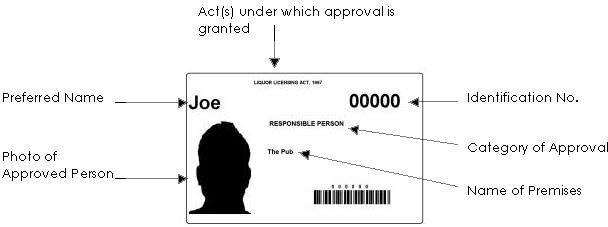
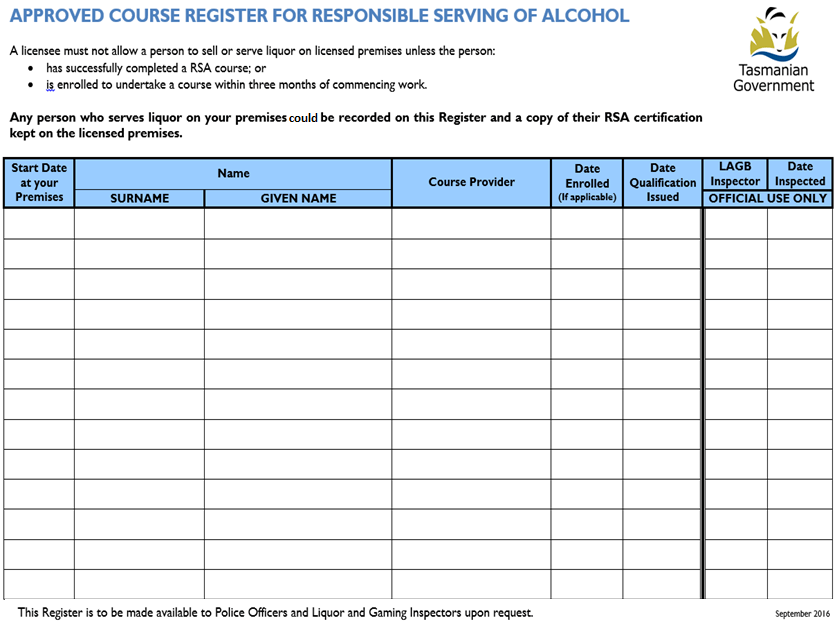
.png)
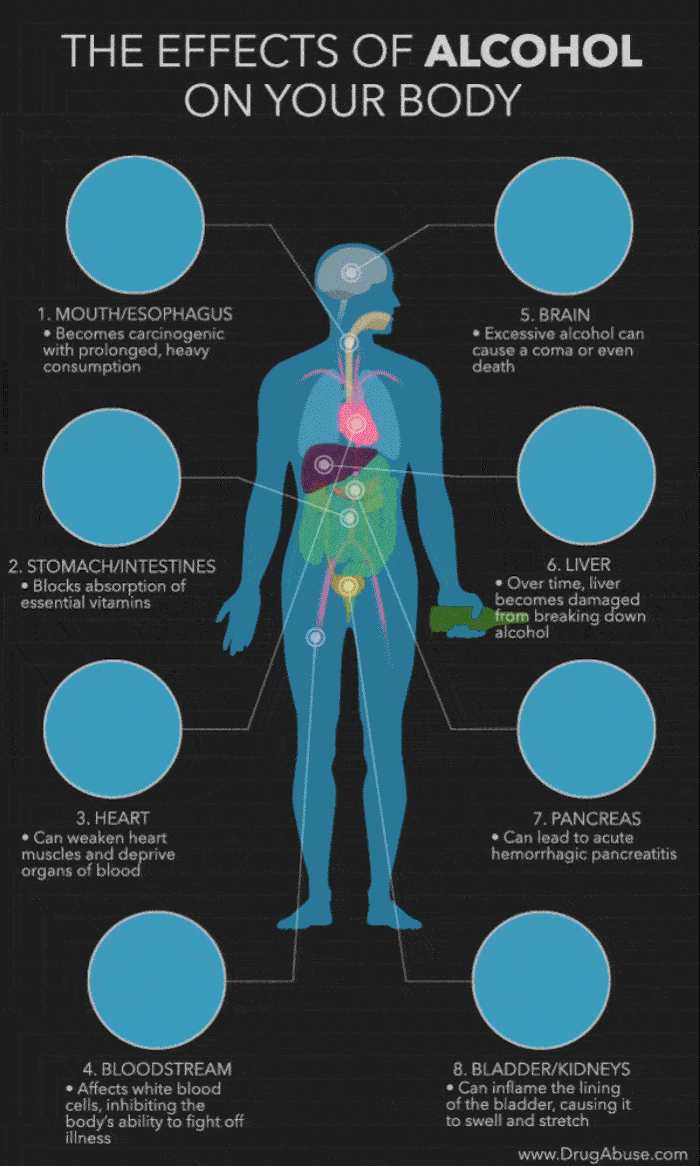
.png)
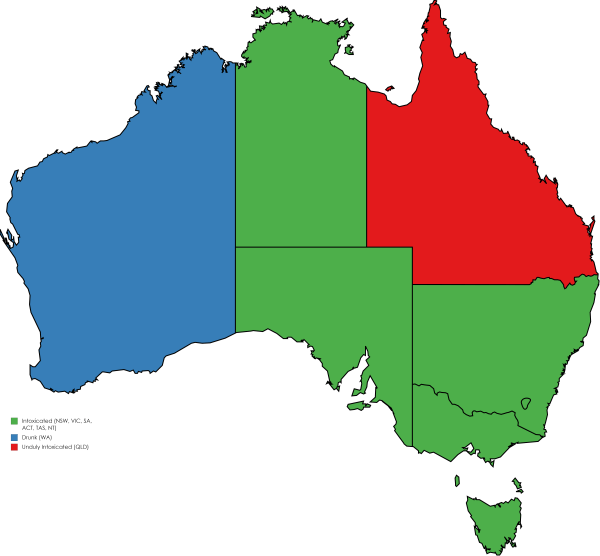
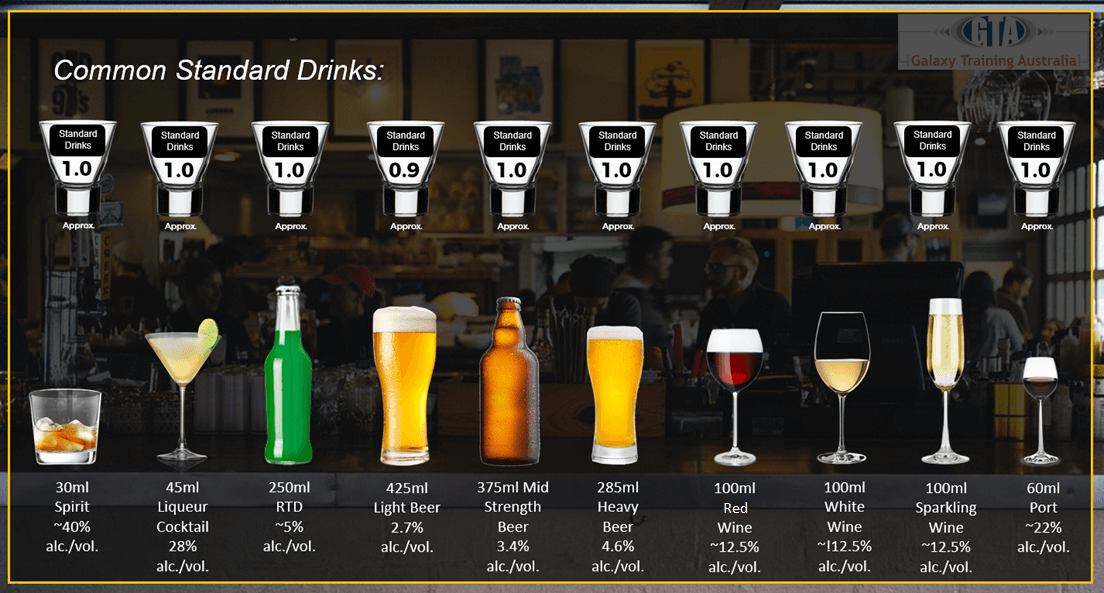
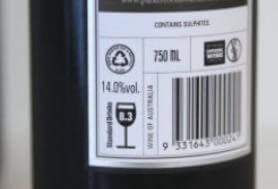
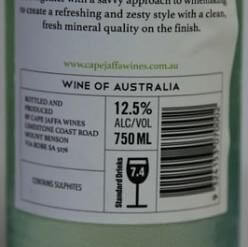
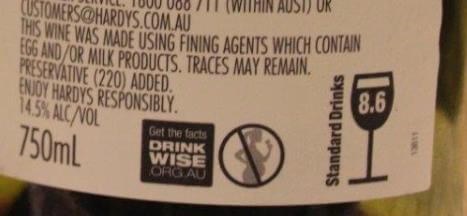
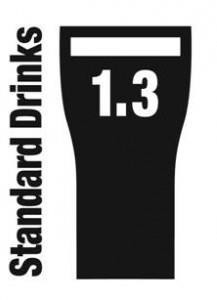
.png)
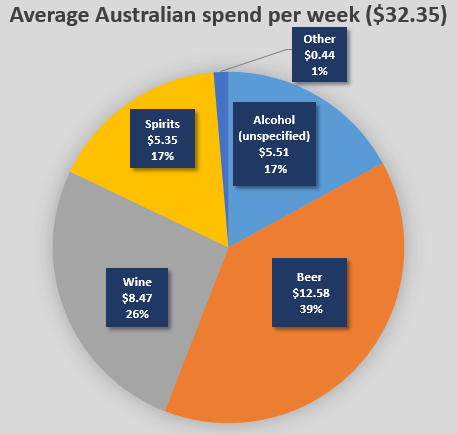
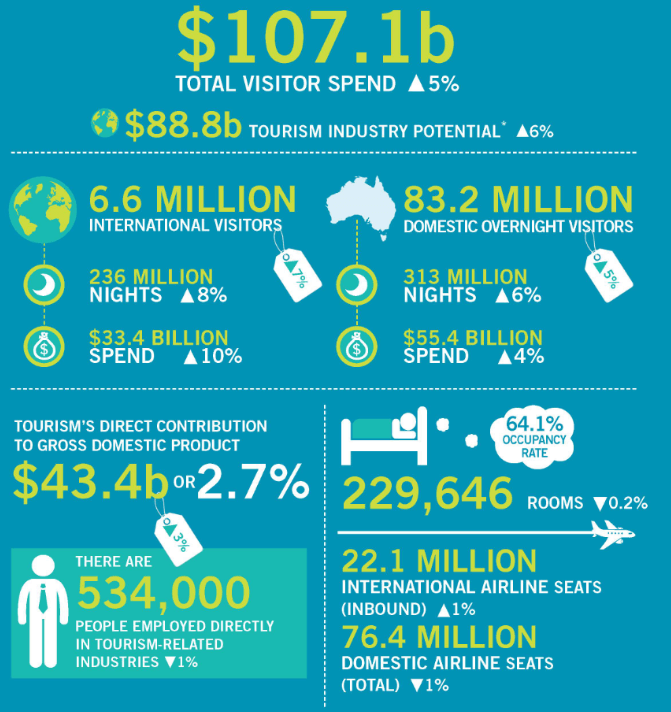
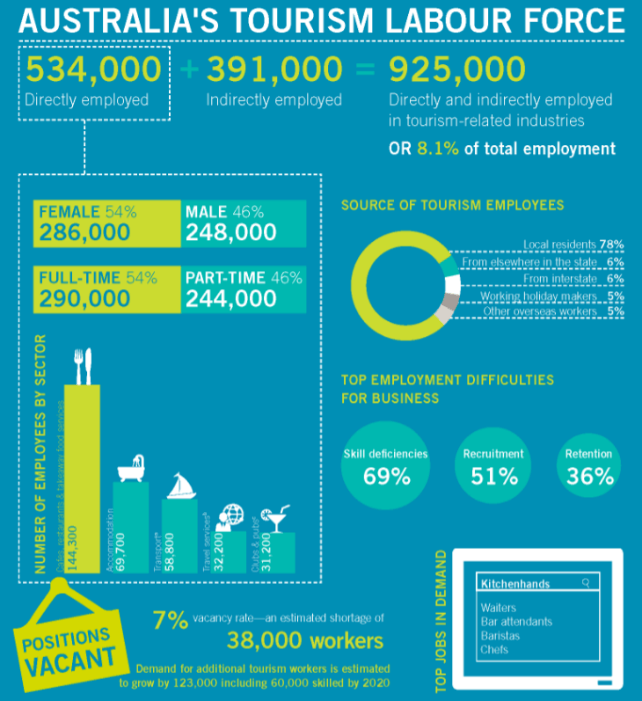

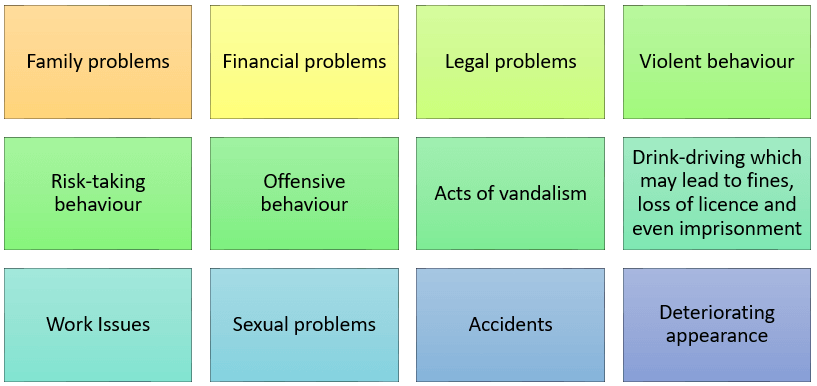
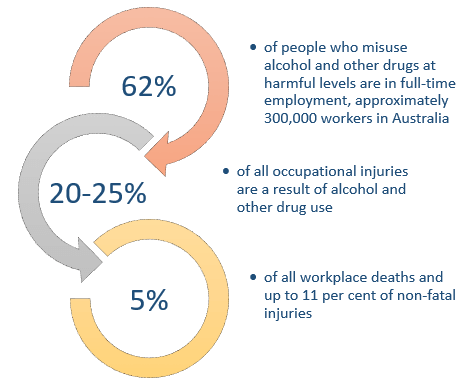

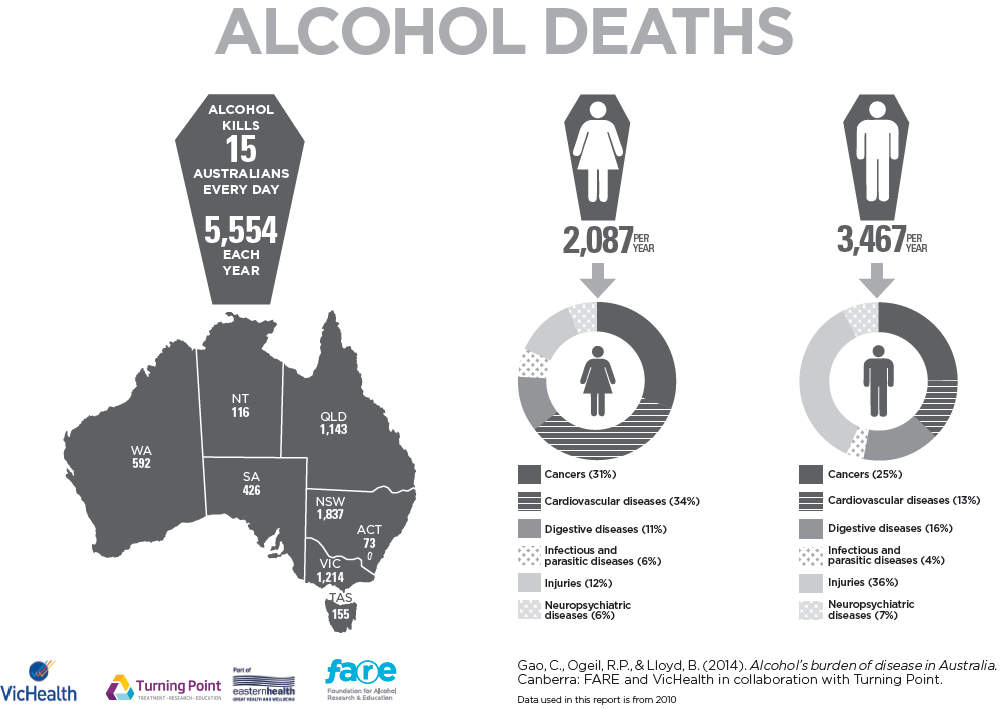

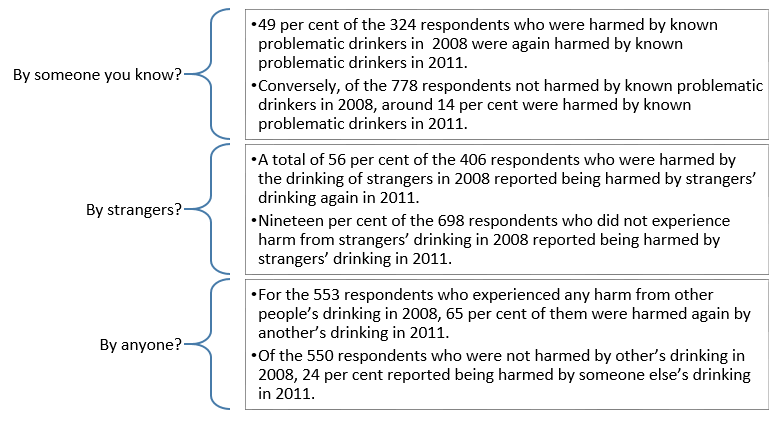

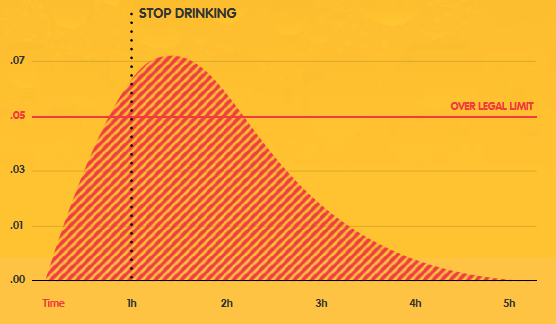




.png)
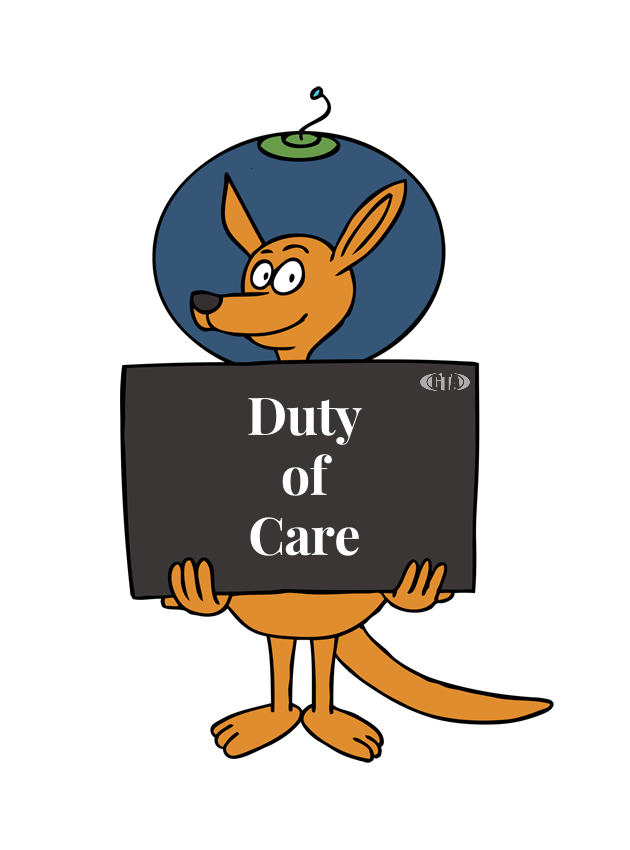
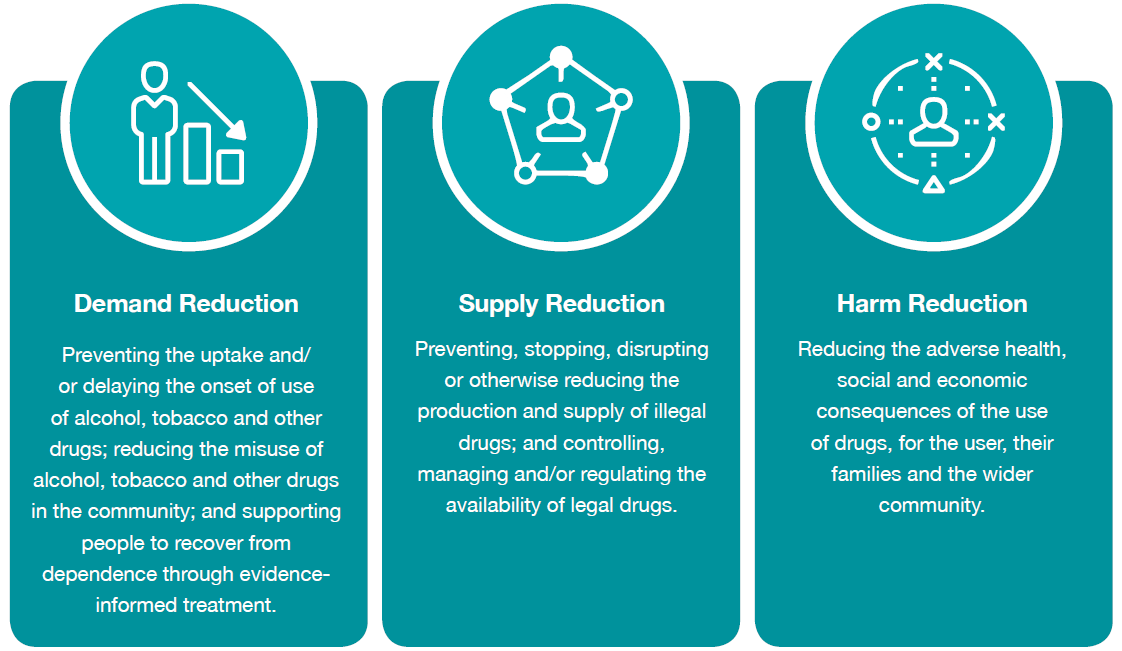
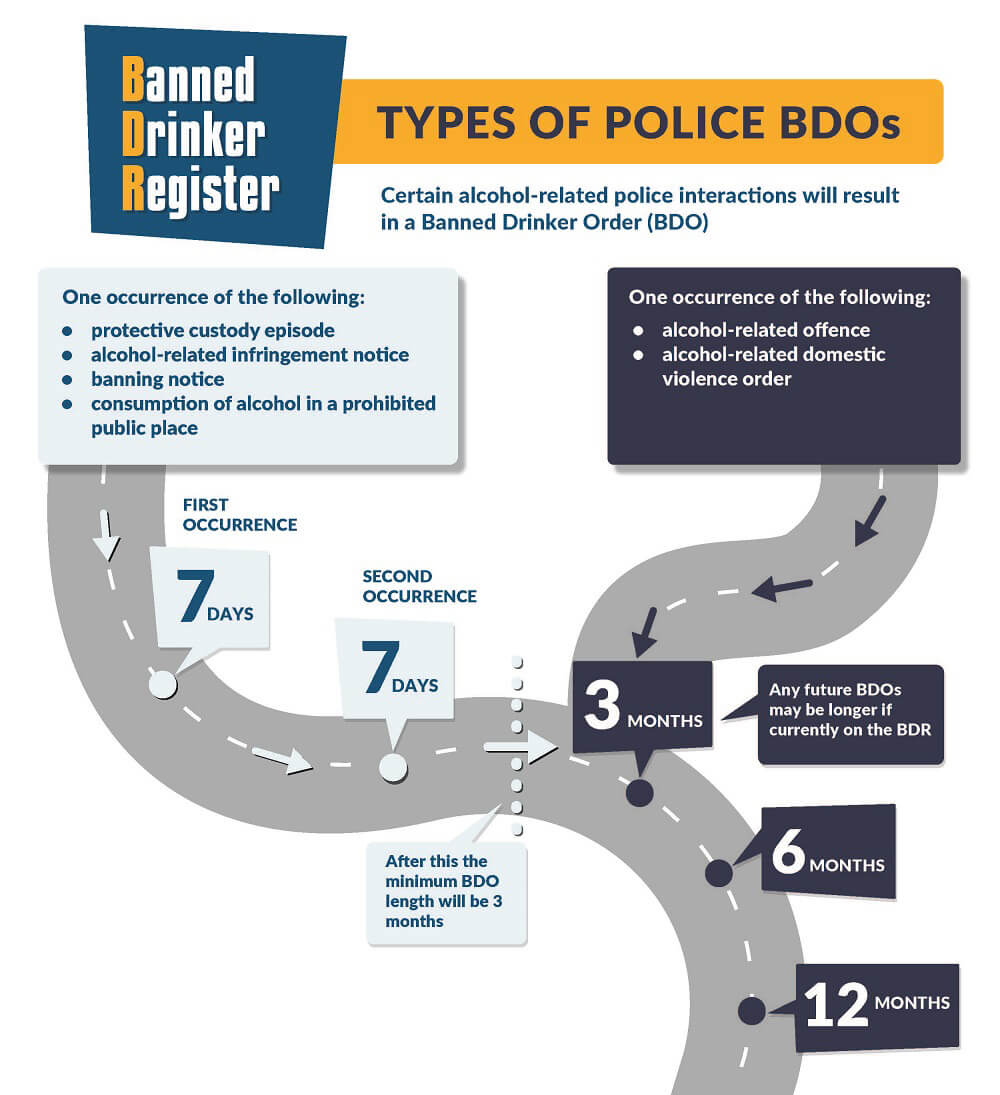

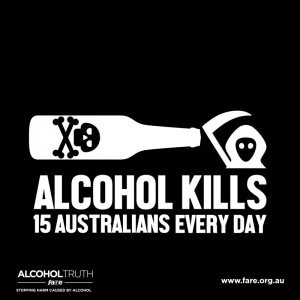
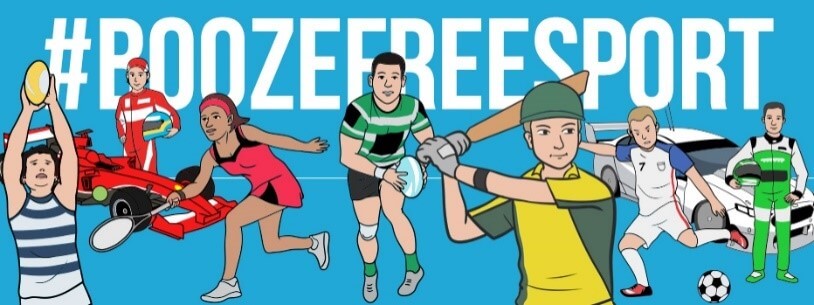
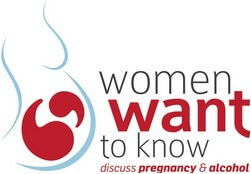
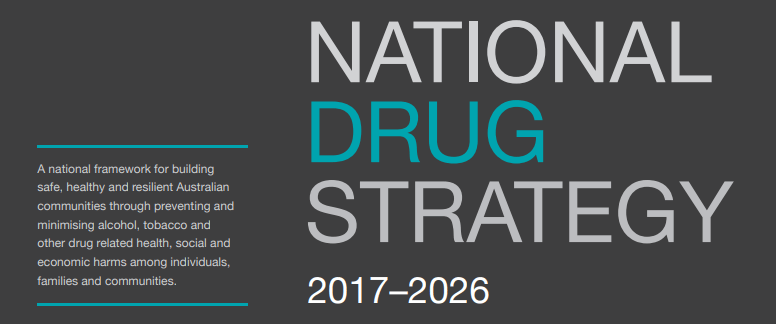
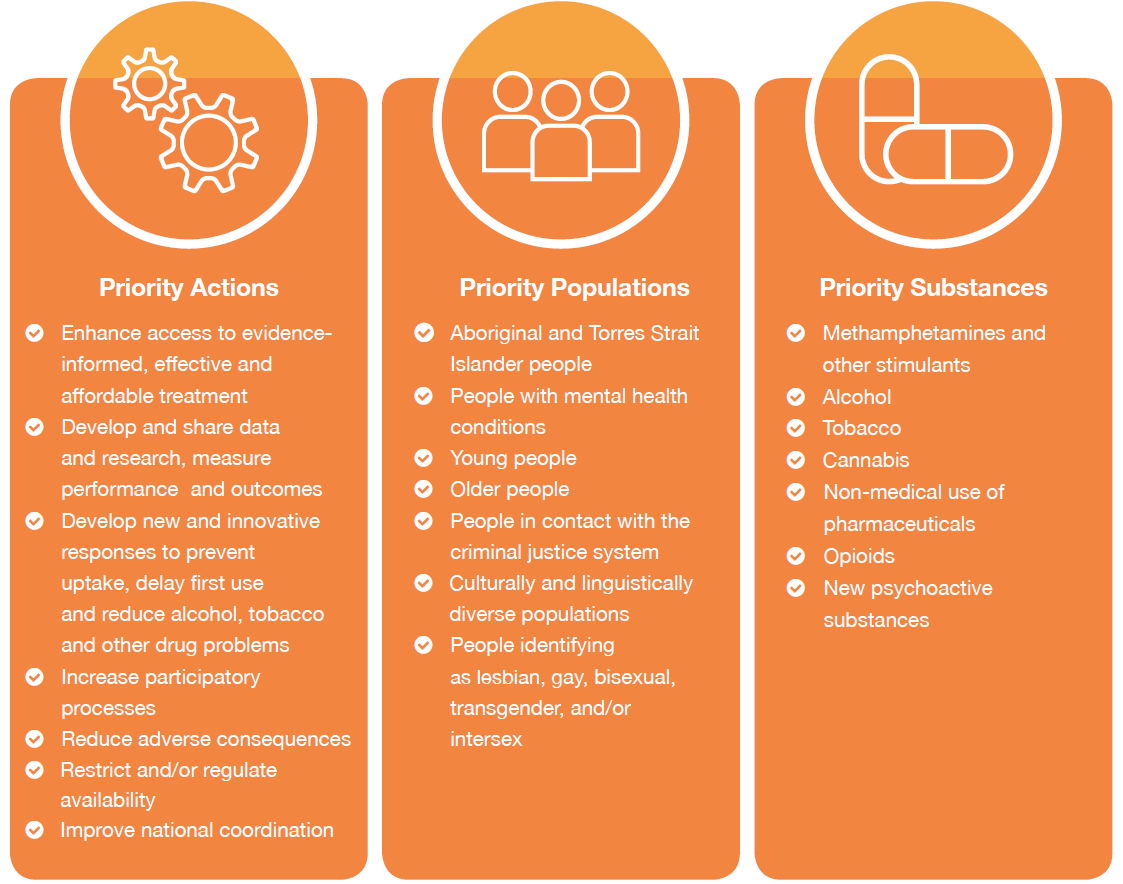
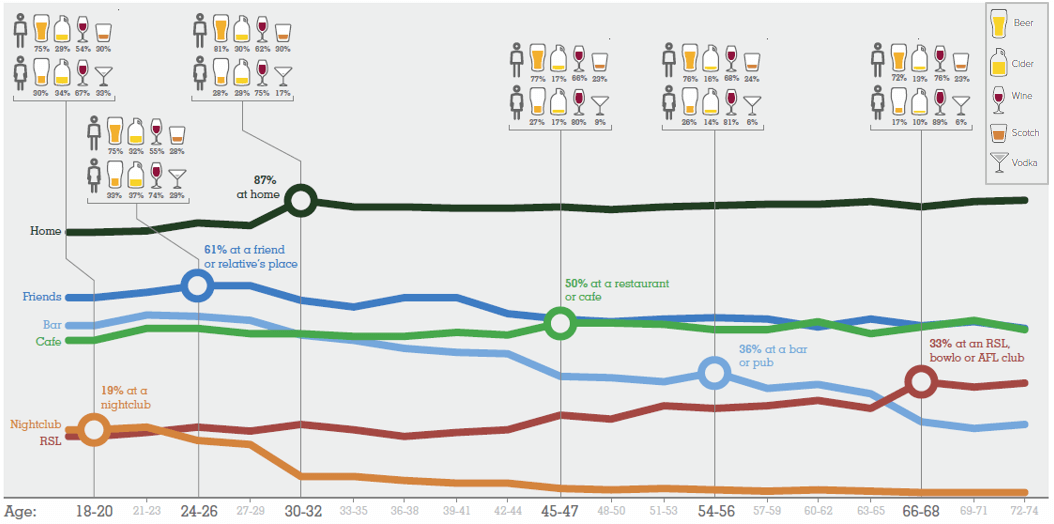
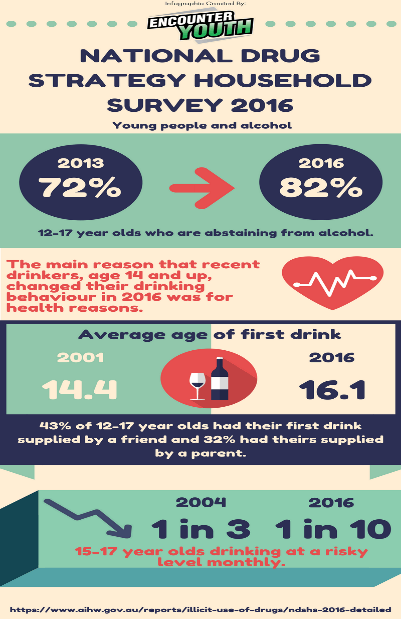
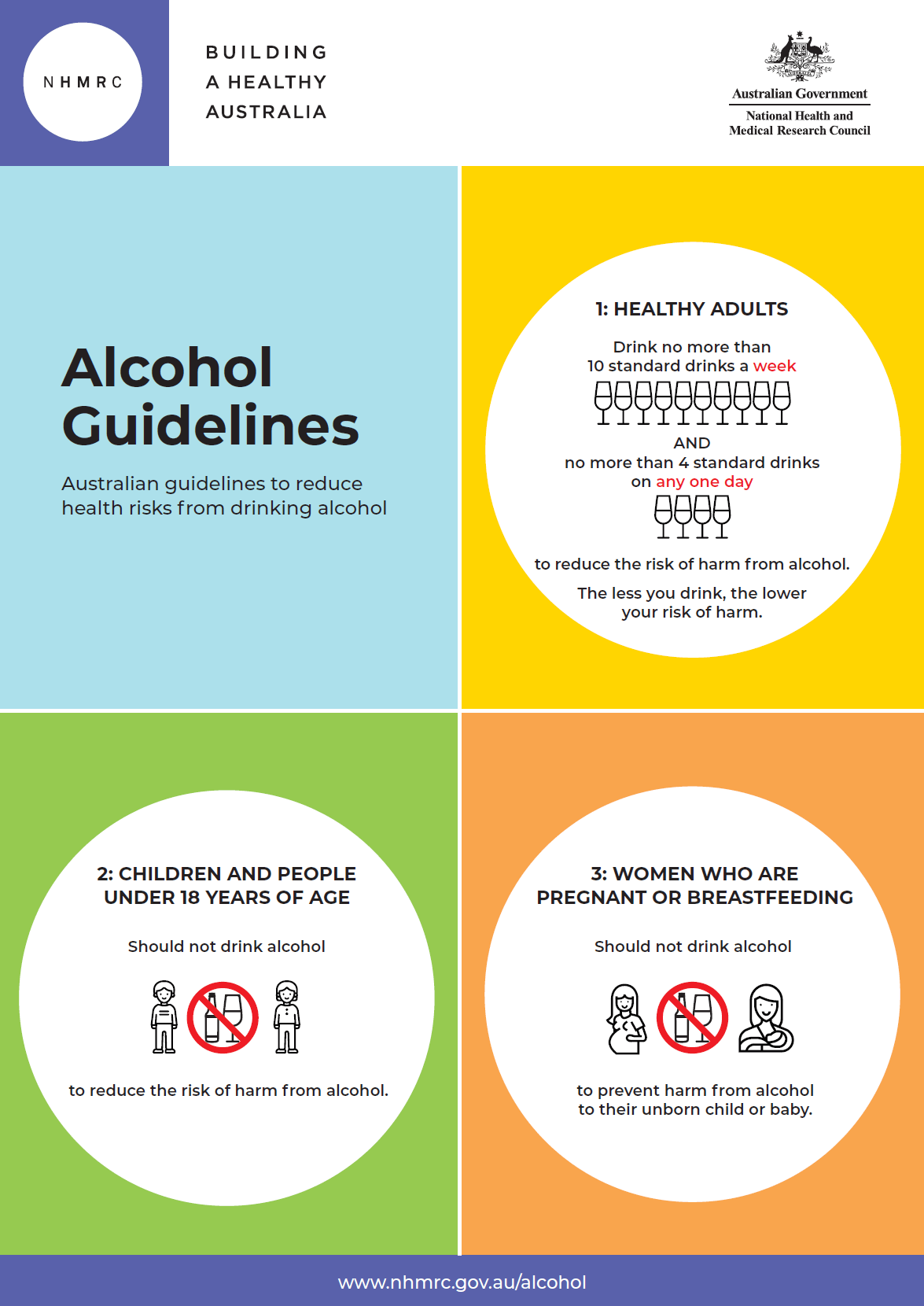
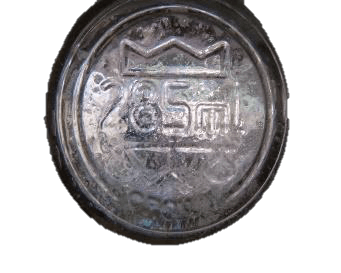
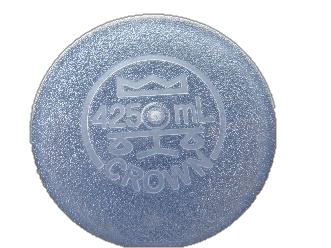
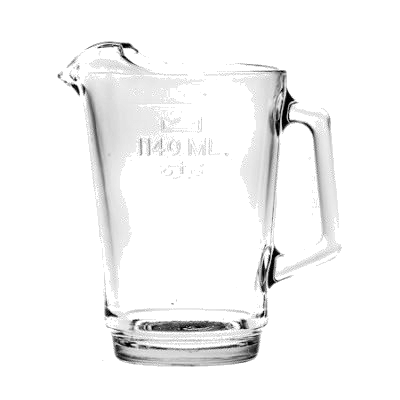
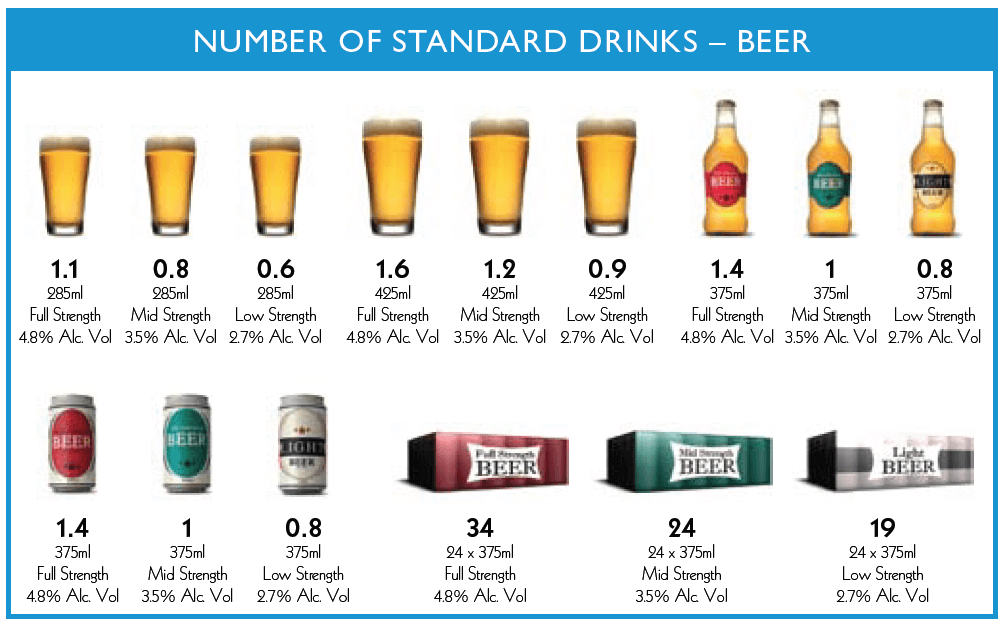


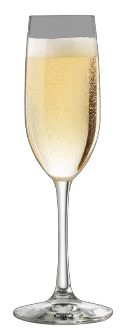
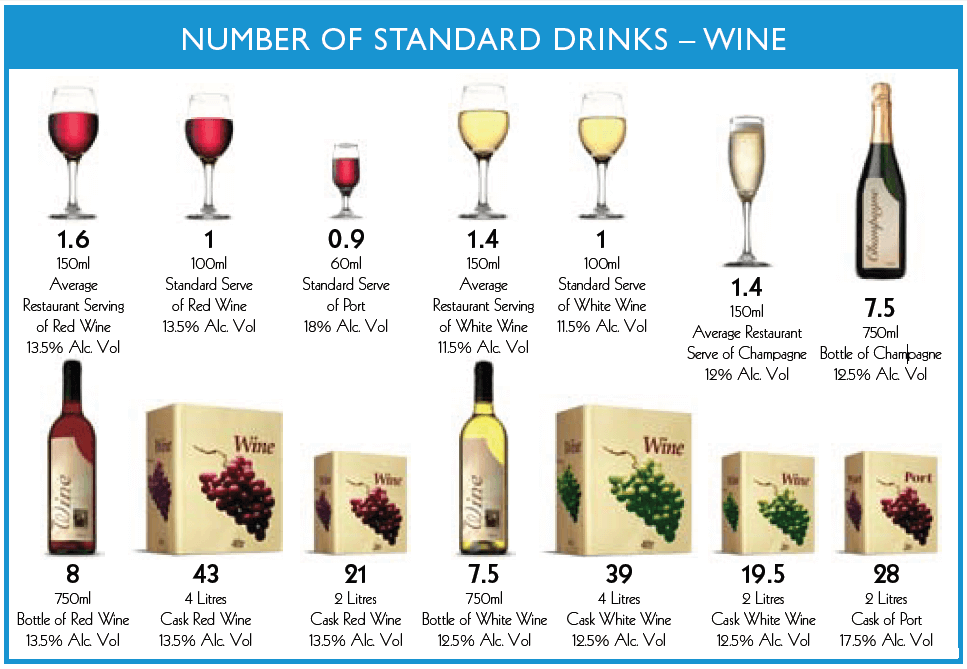

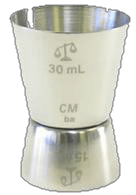
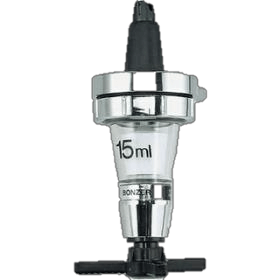

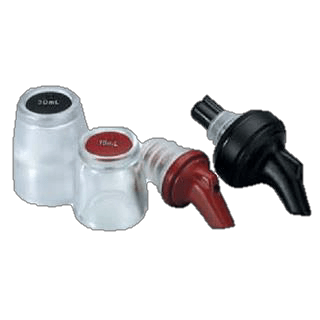
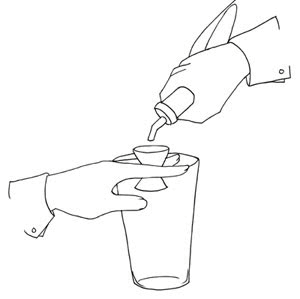
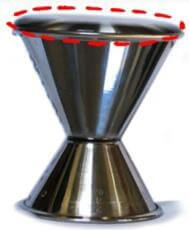
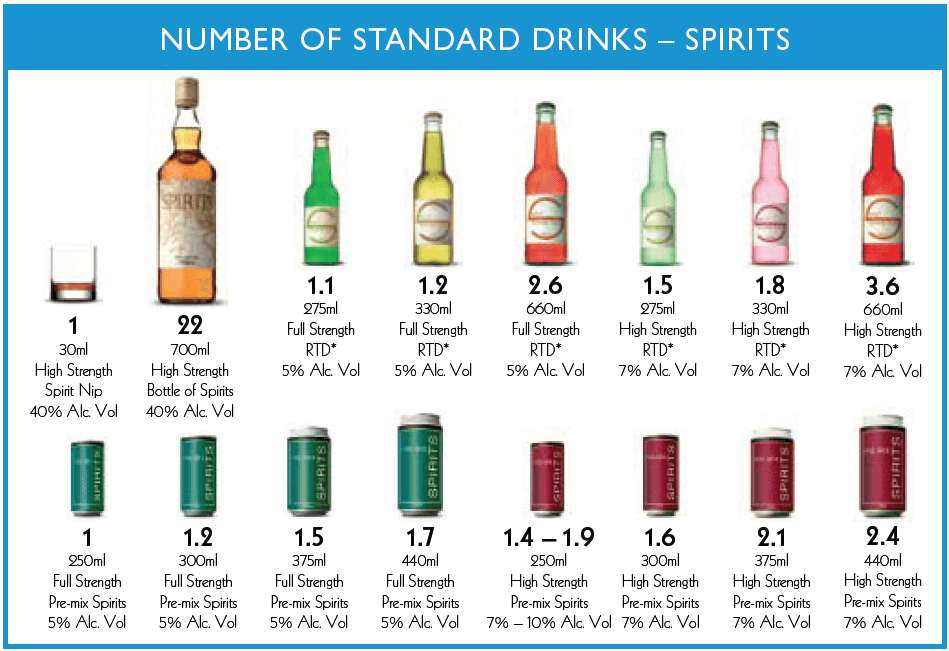
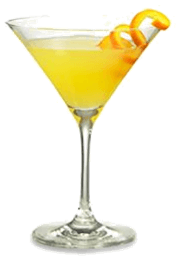
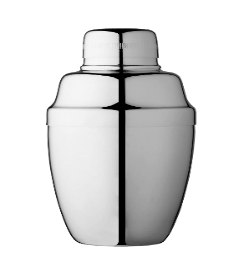
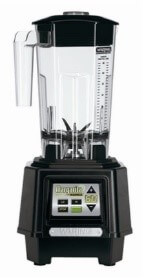
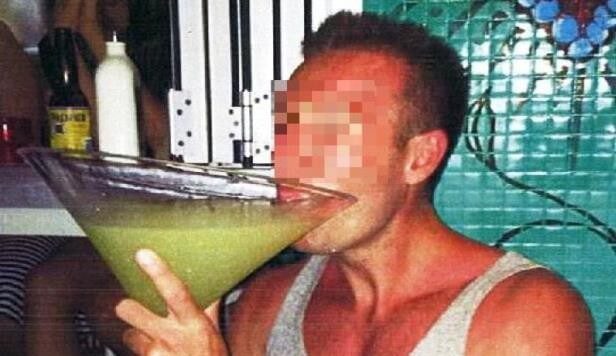
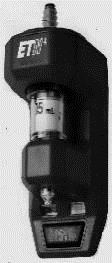

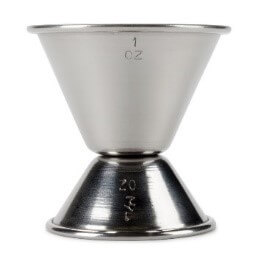
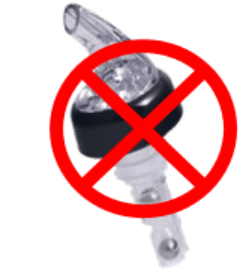
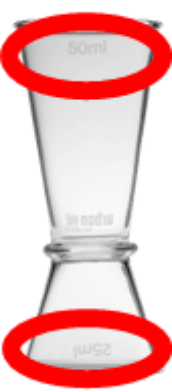
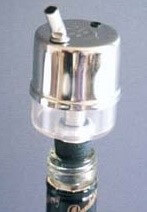
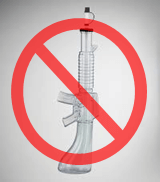
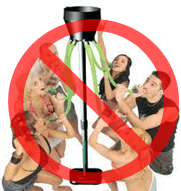
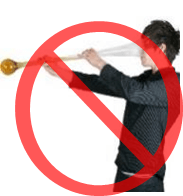
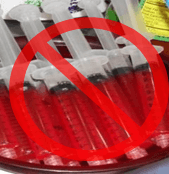
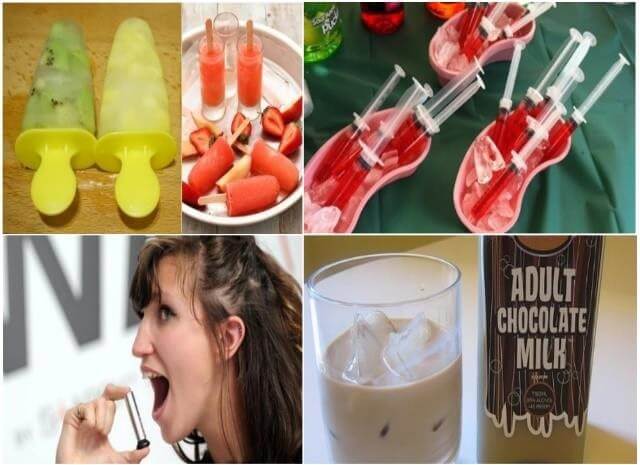
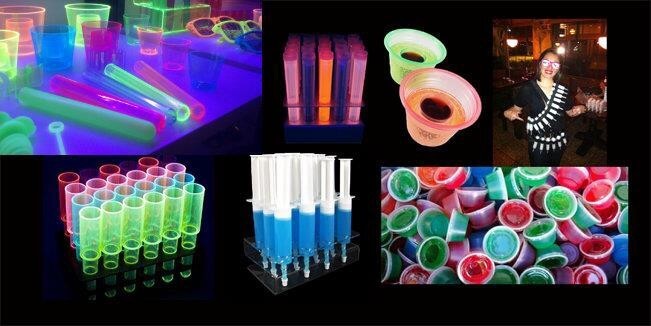
.png)
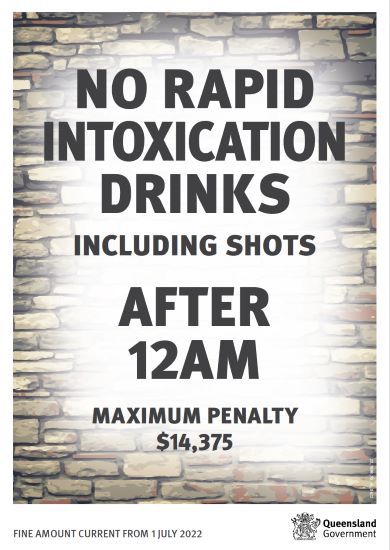

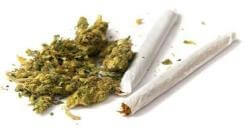

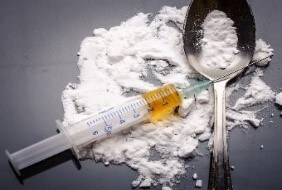
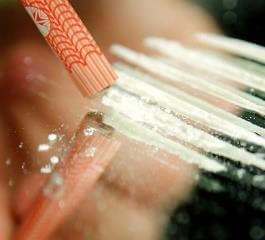
.png)

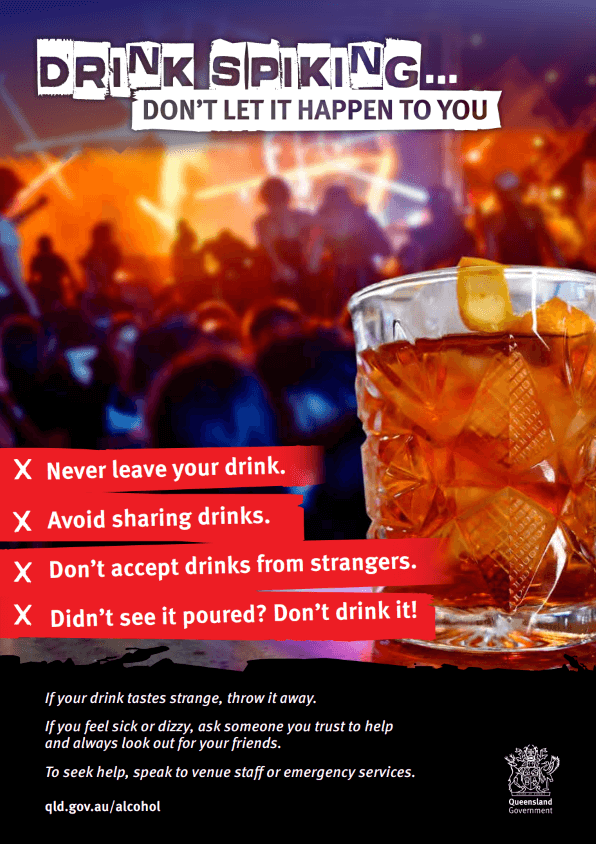
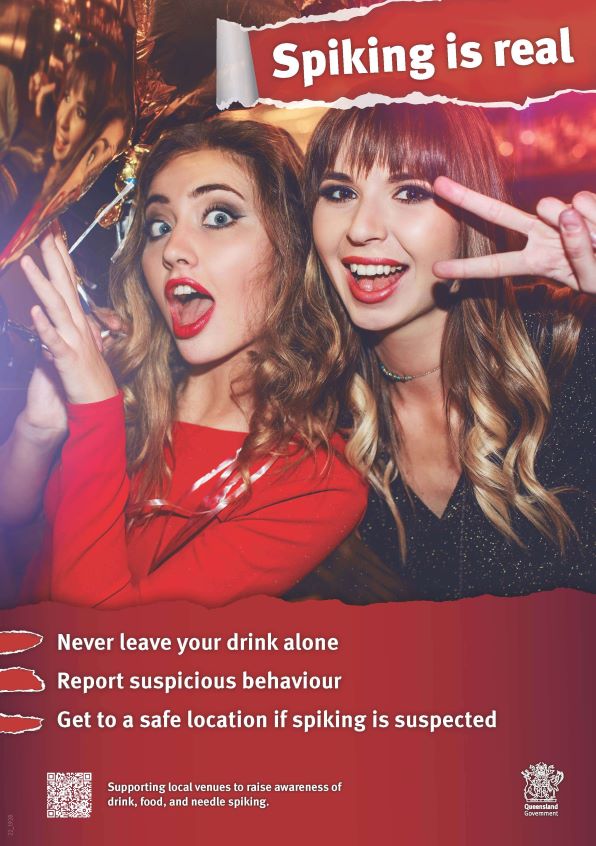
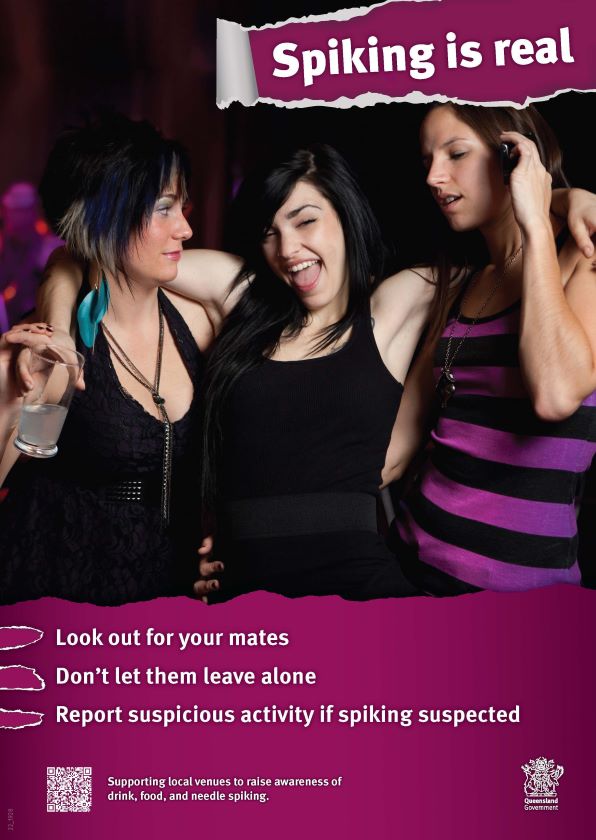
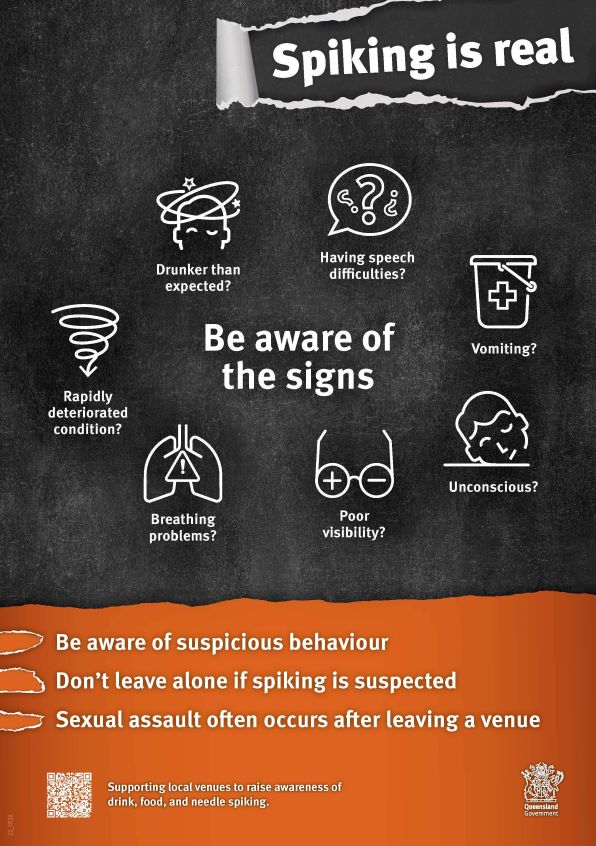
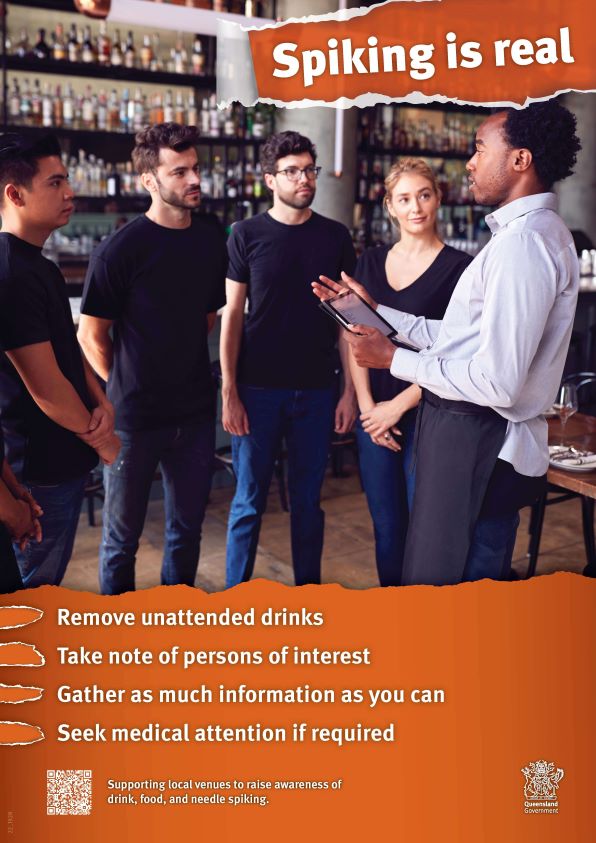
.png)
.png)
.png)
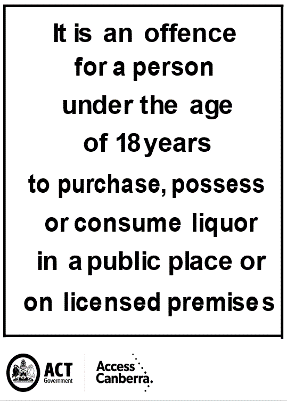
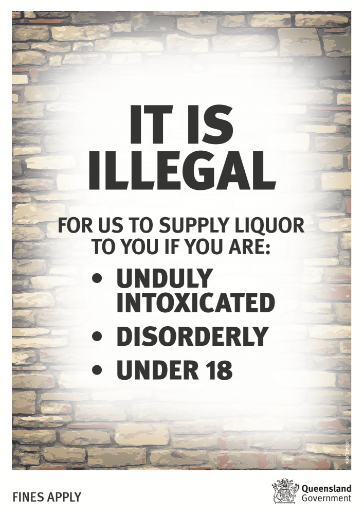
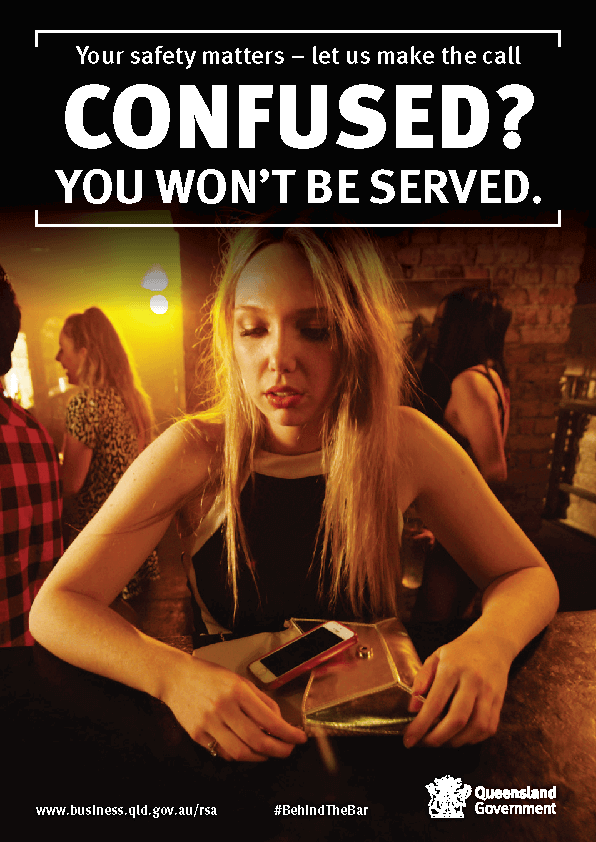
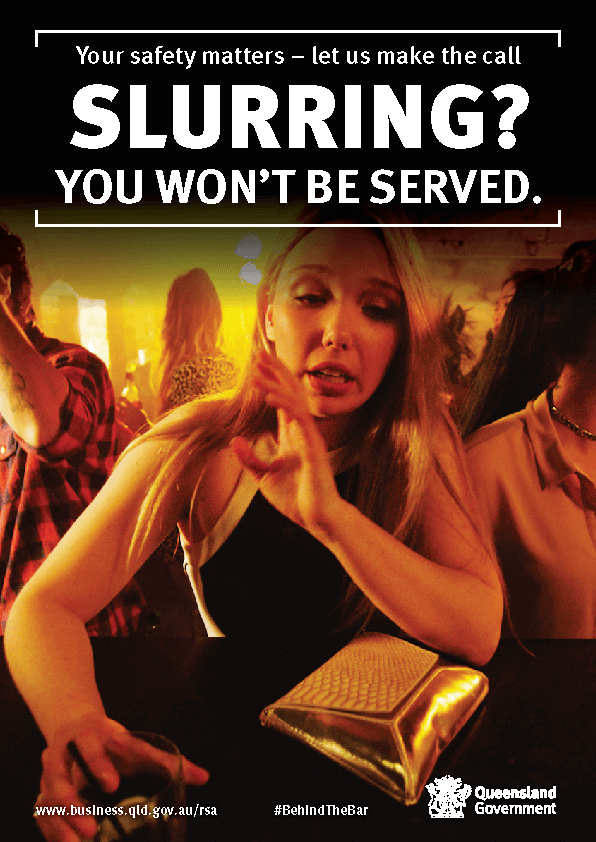
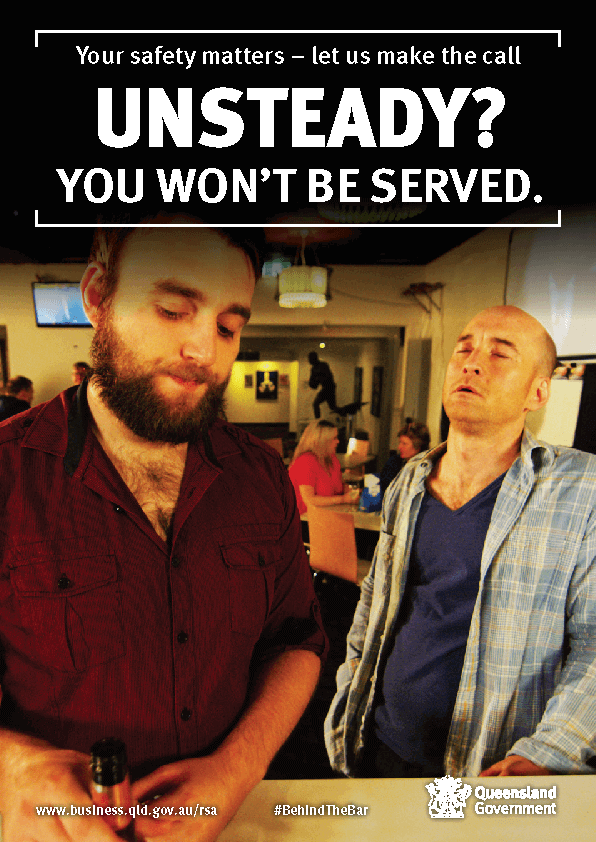
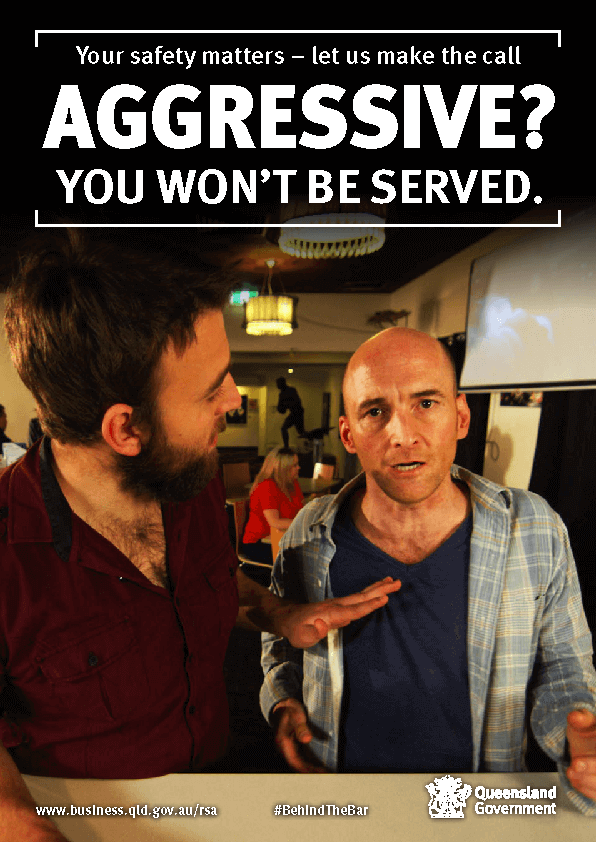
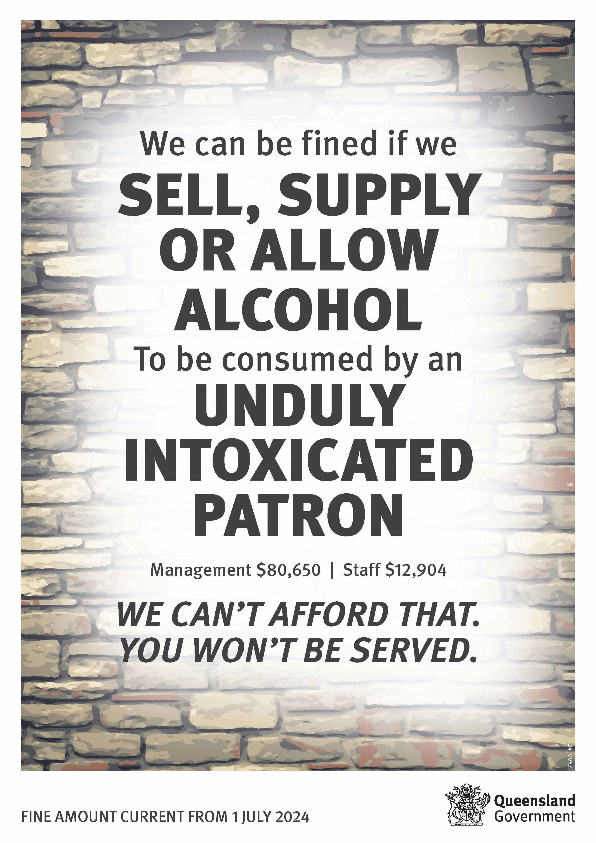
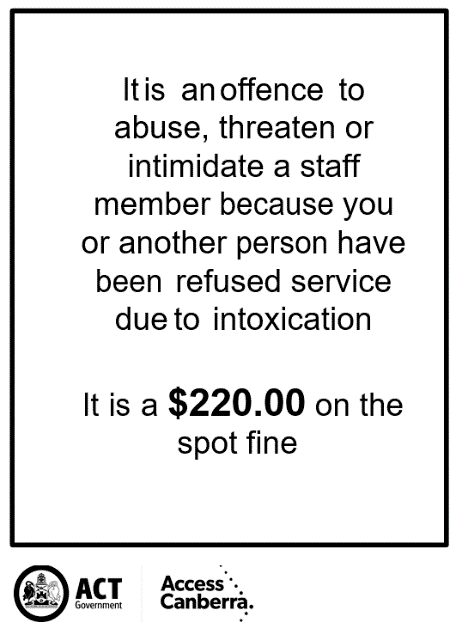
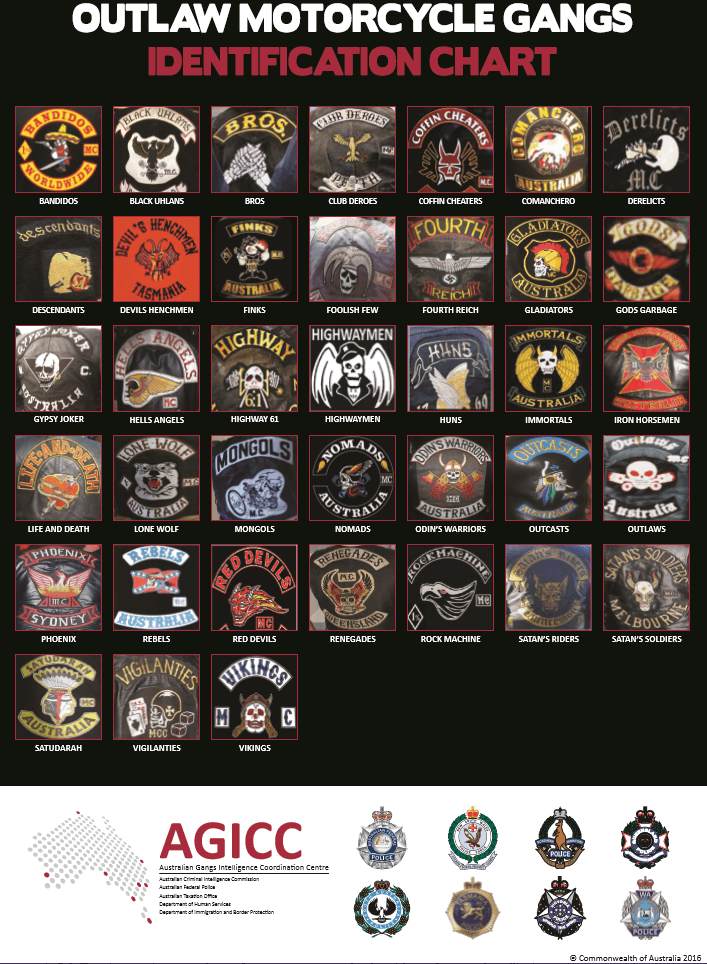
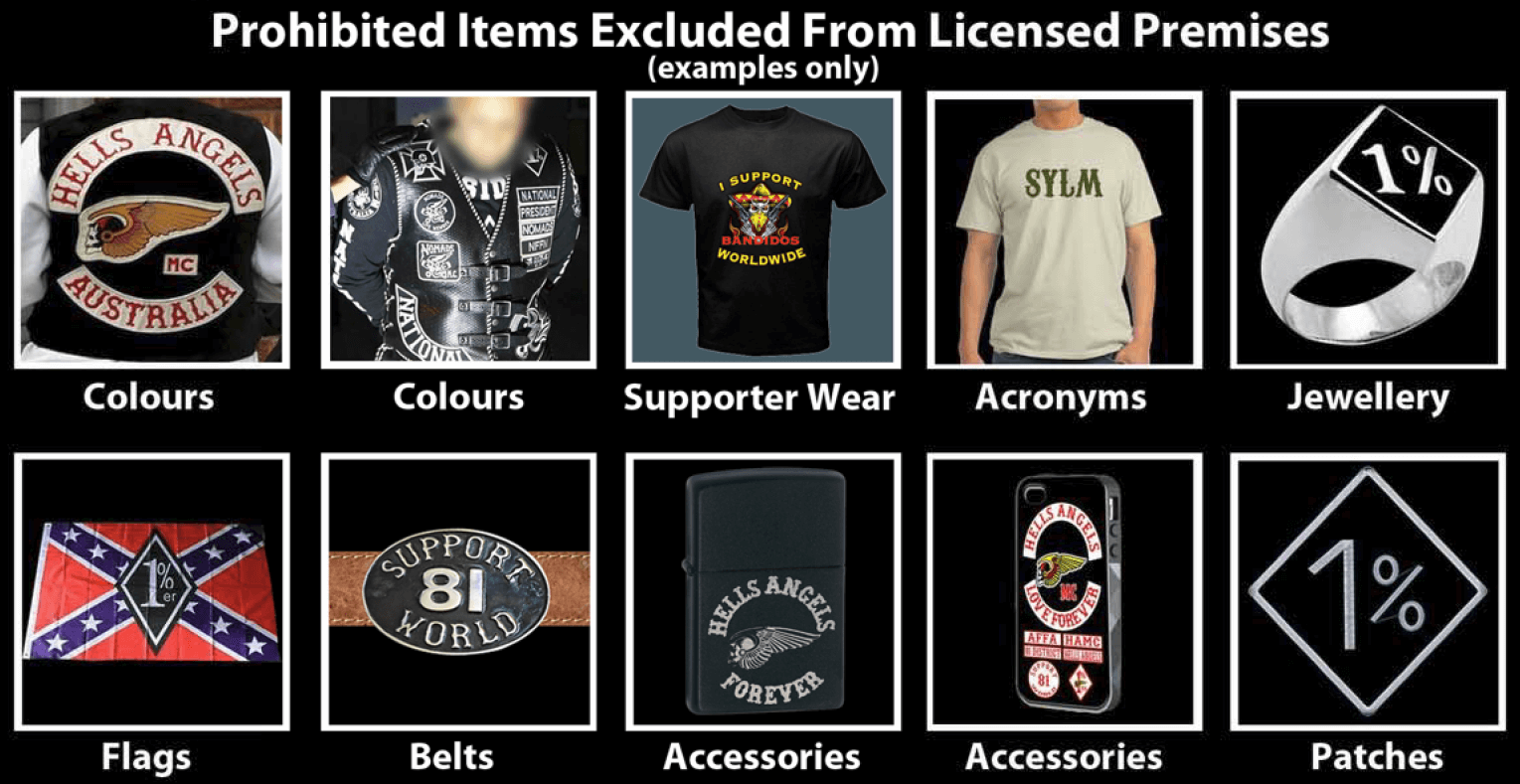
.png)
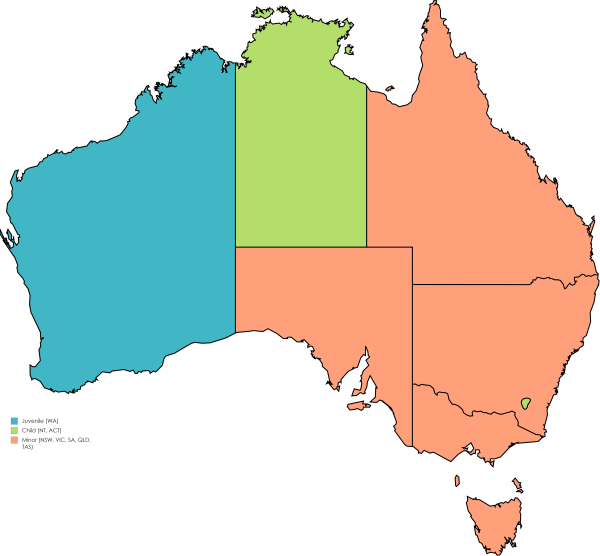
.png)
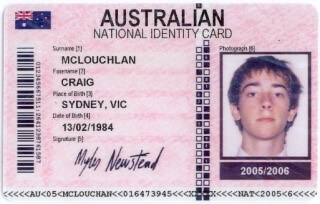
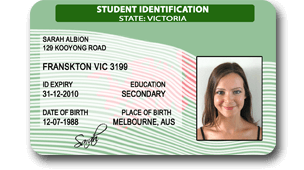
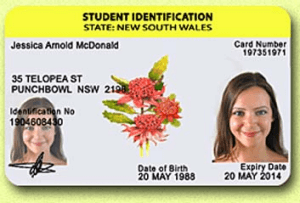
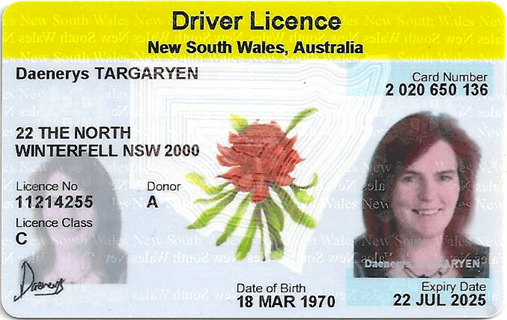

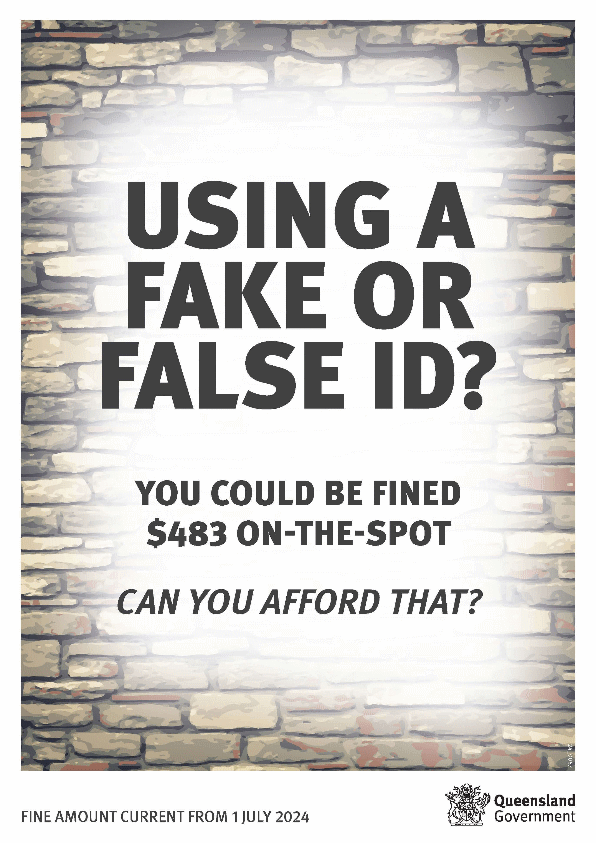
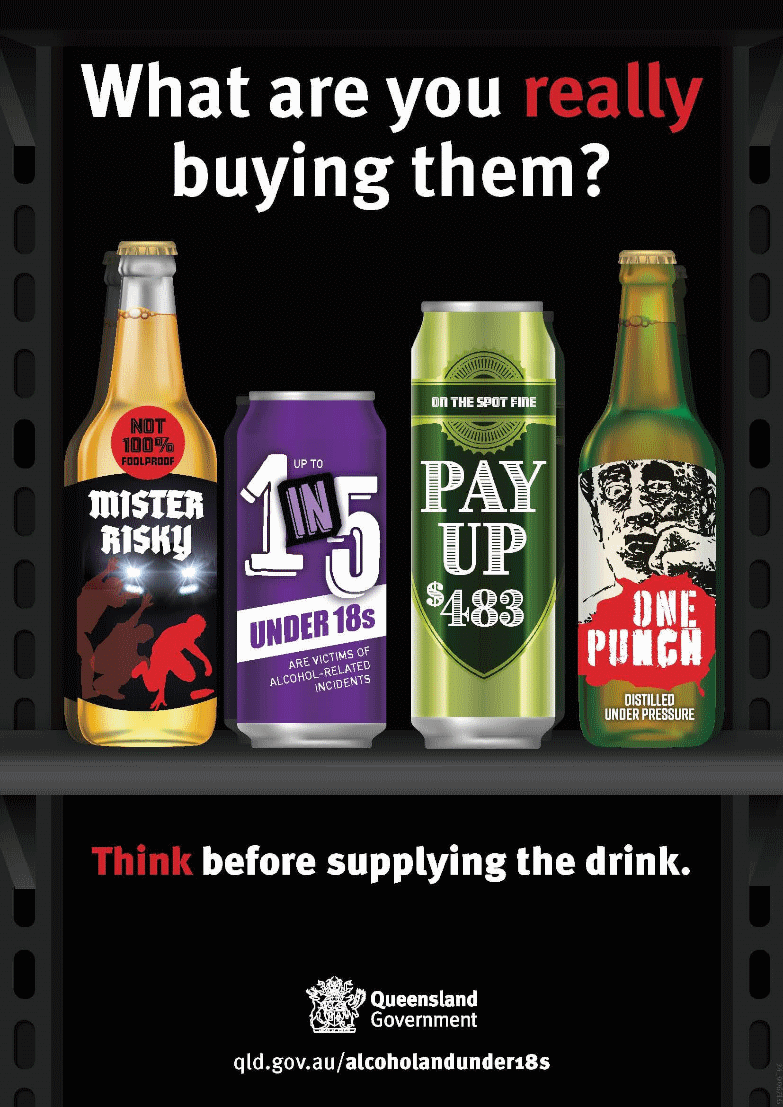

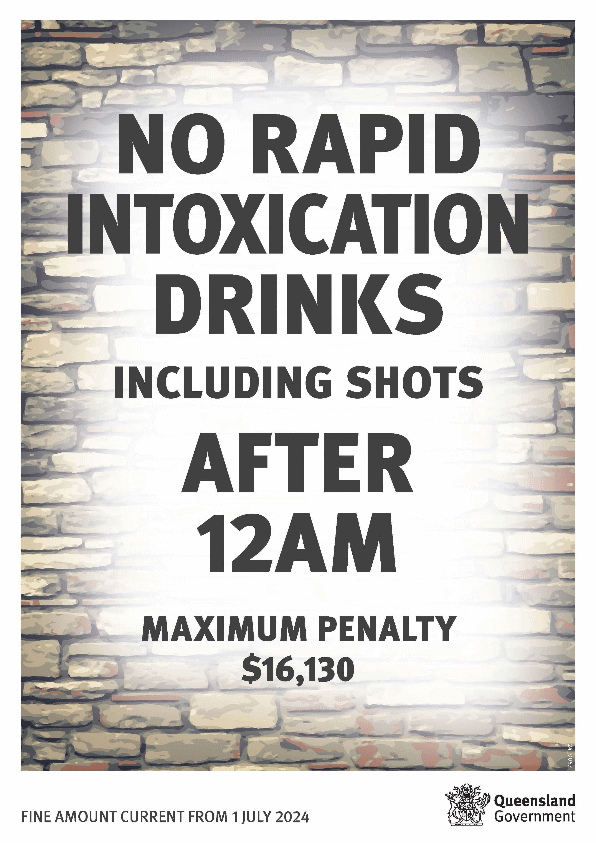
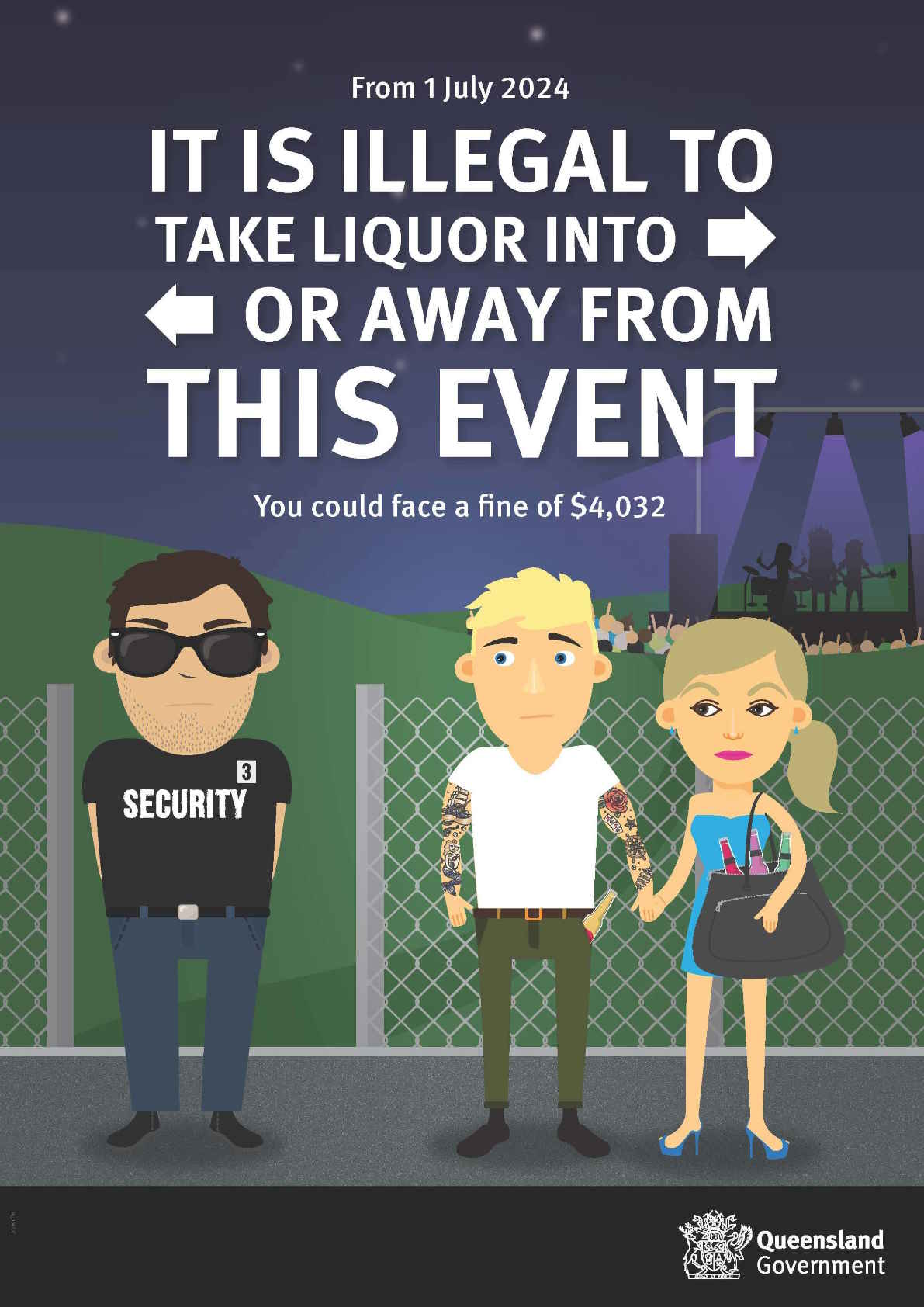
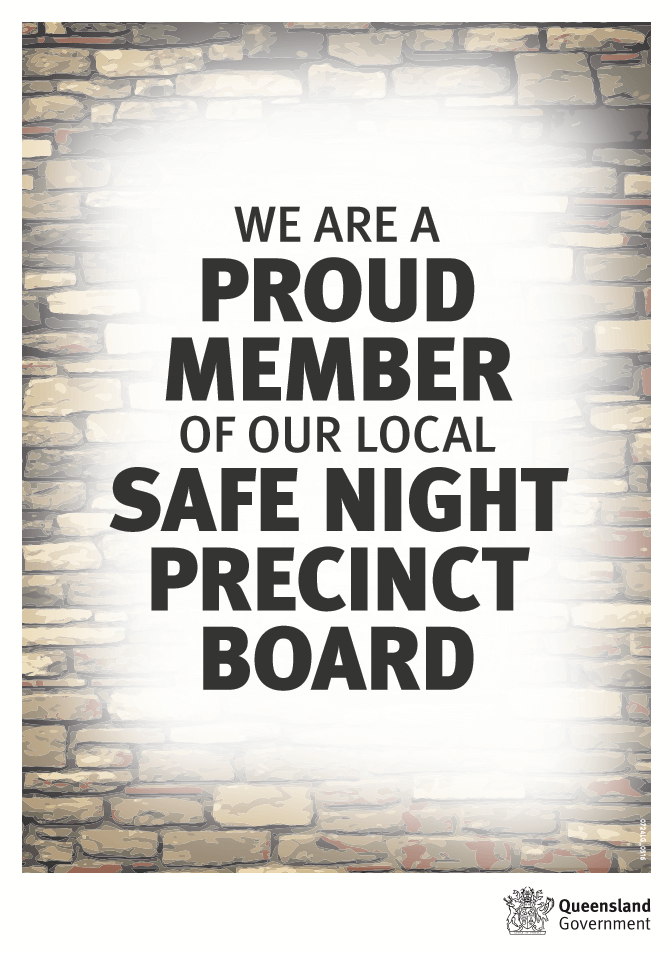
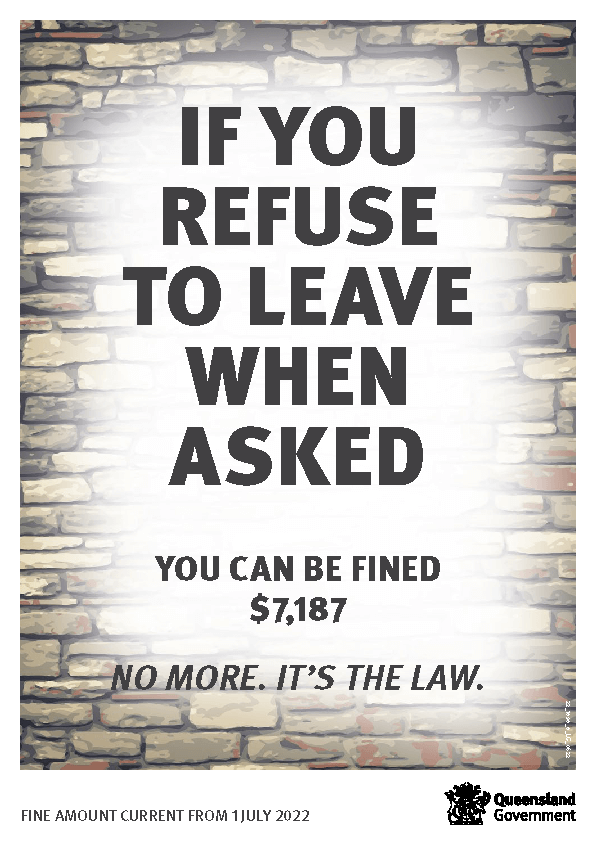
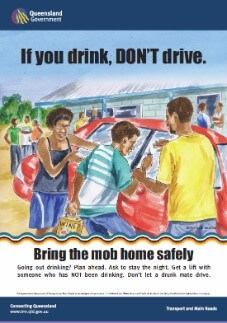
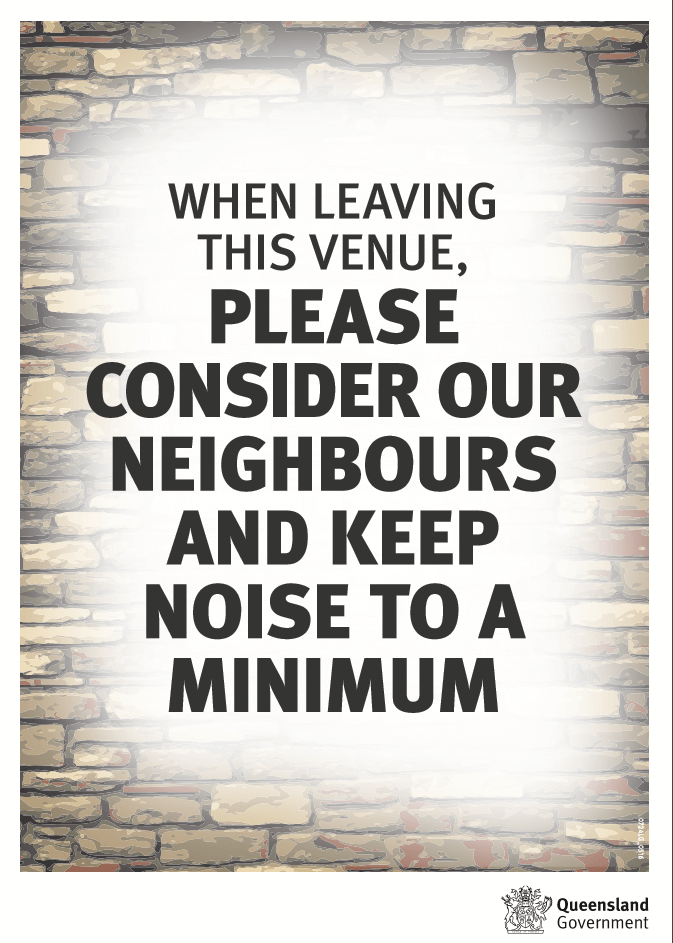
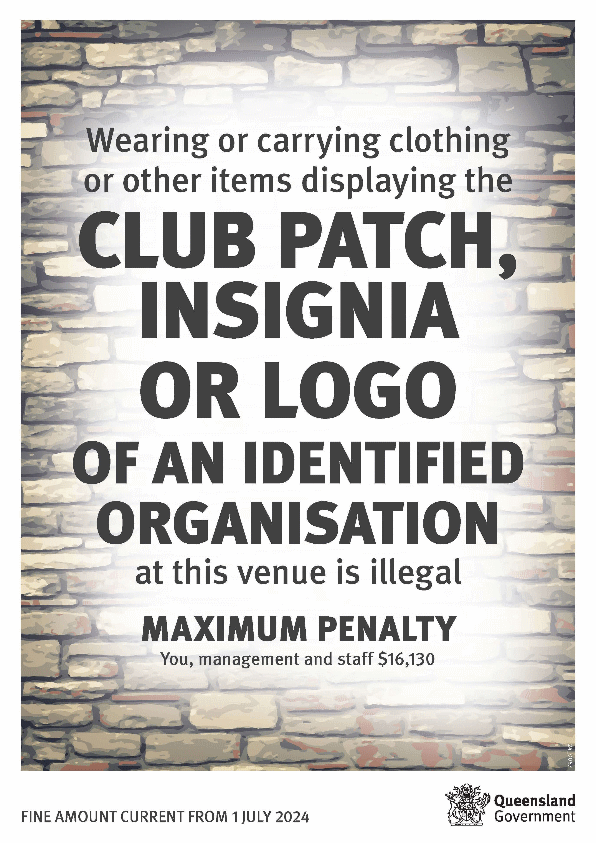
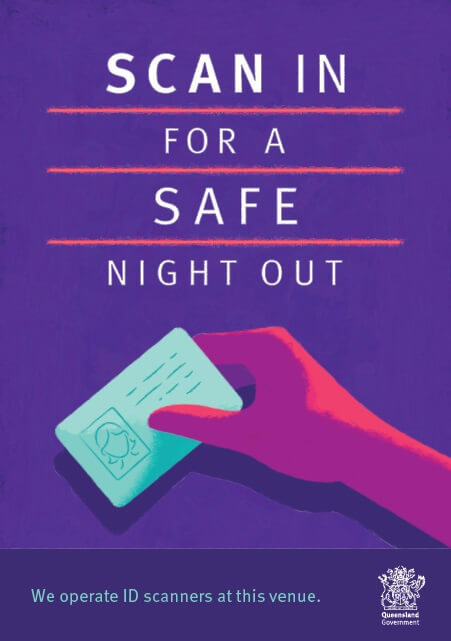
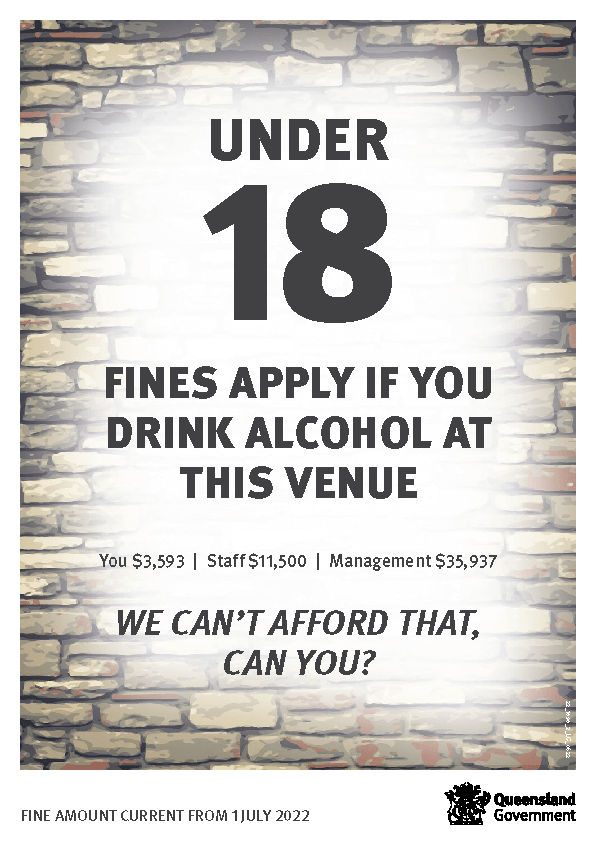

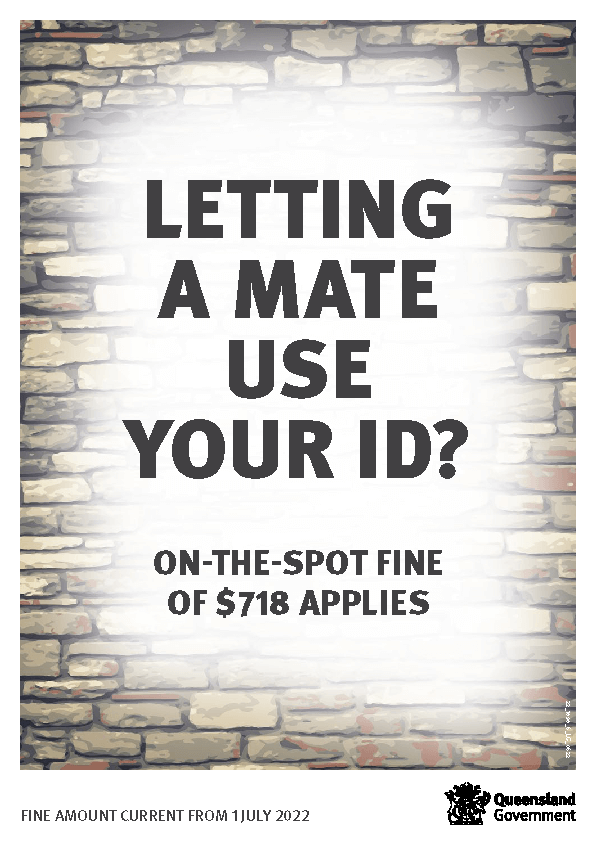

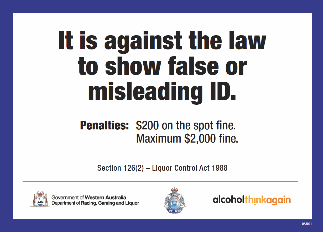
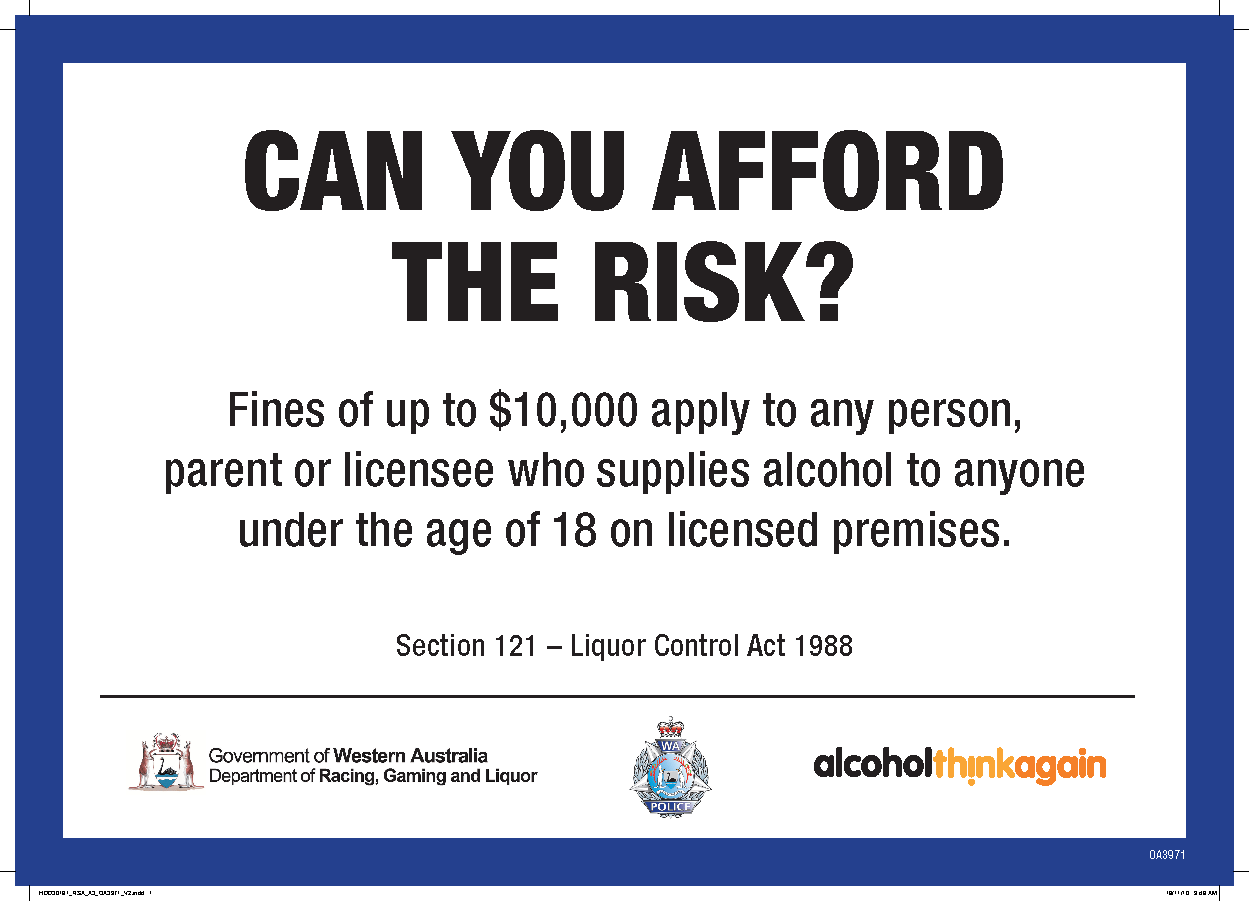
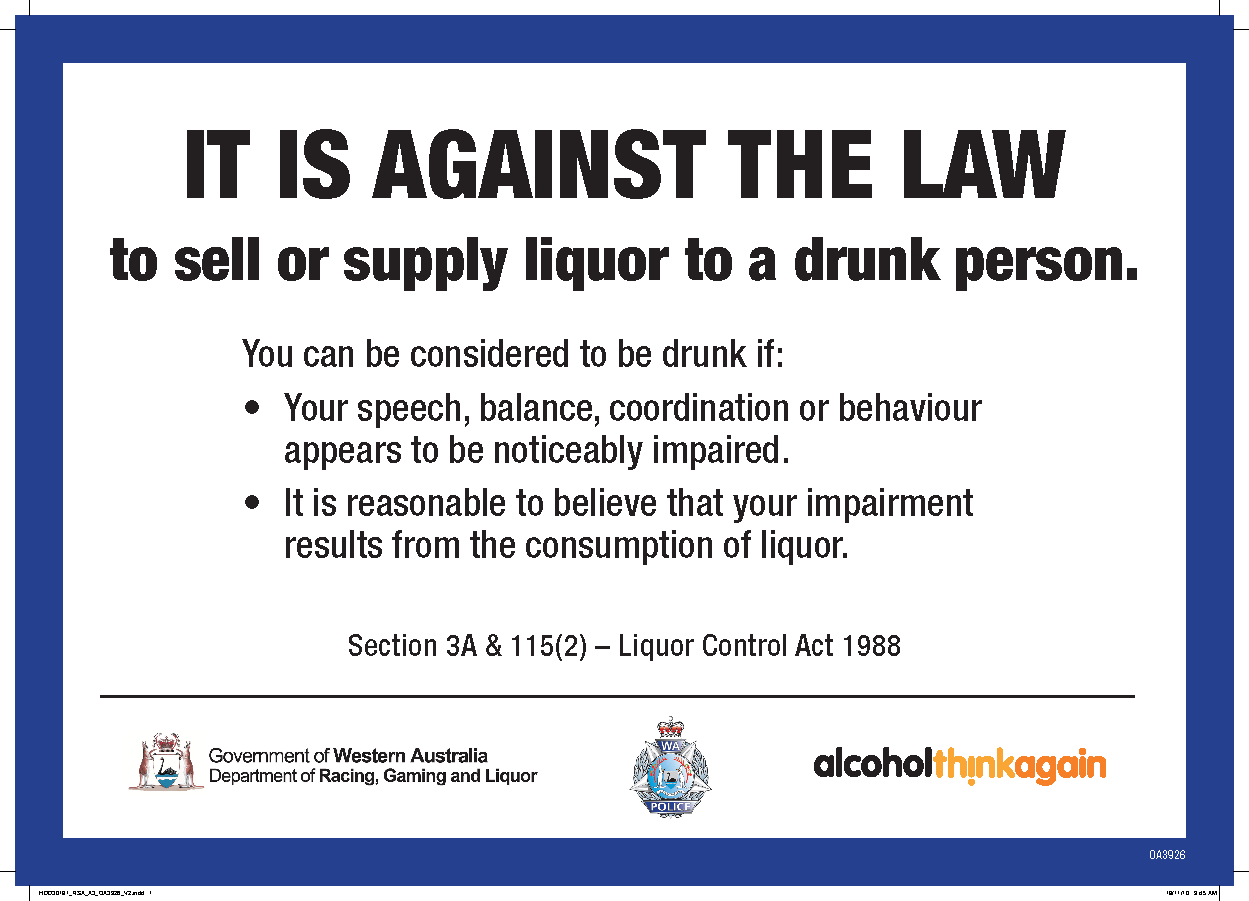
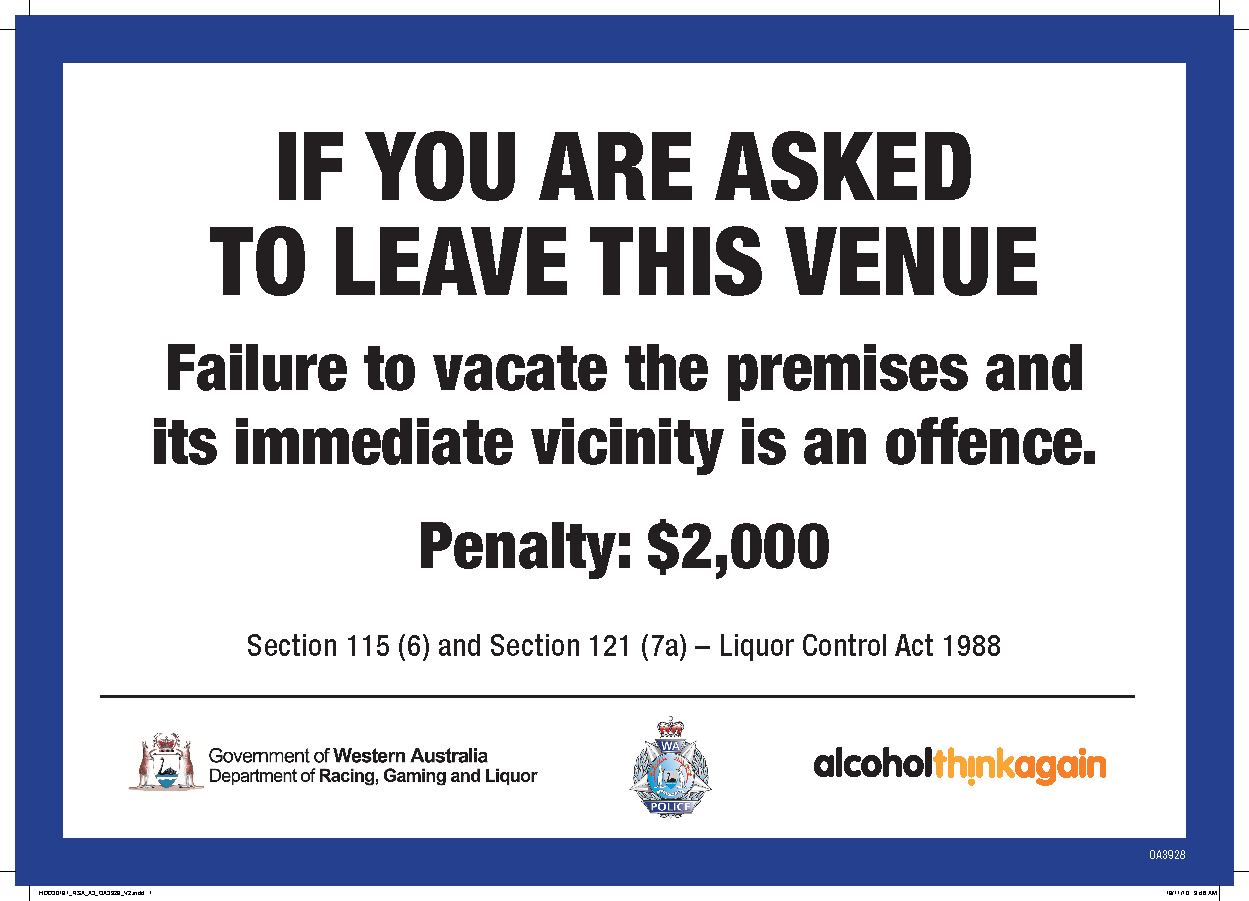
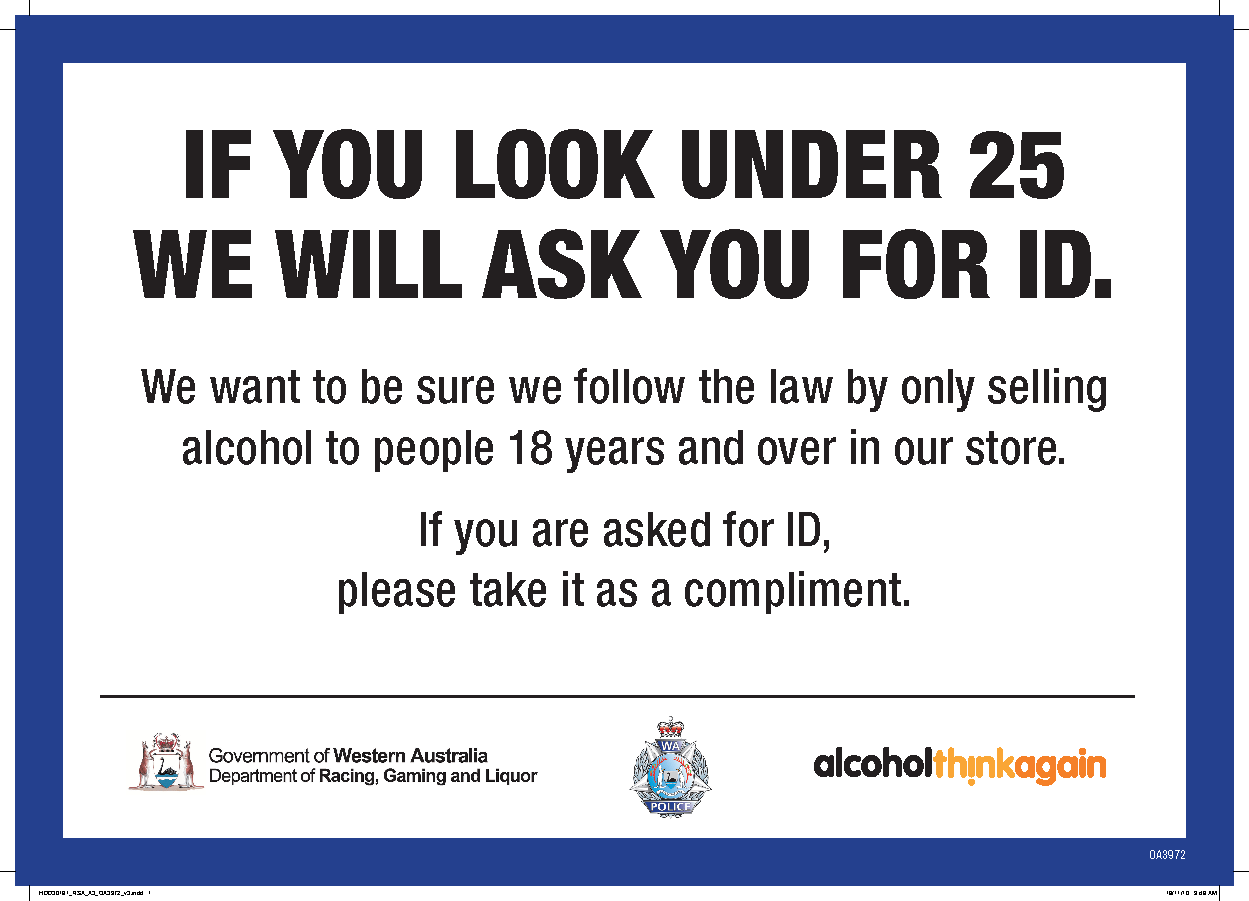
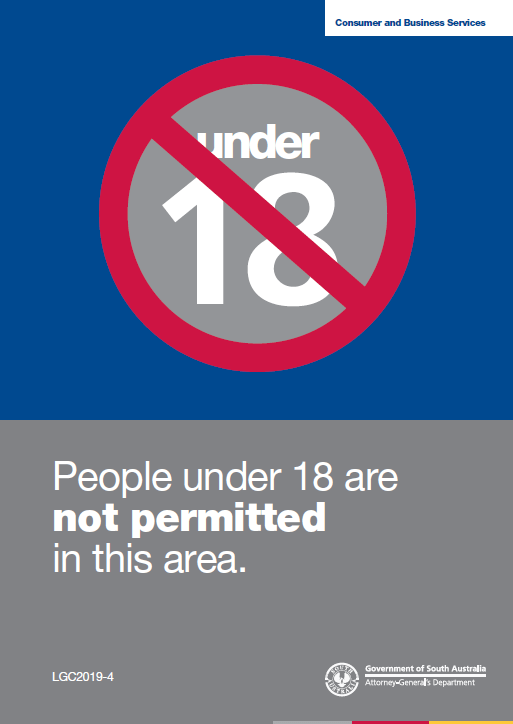
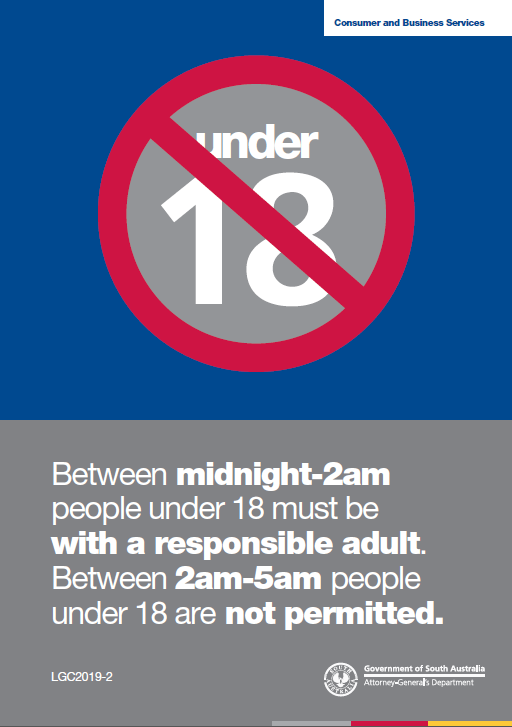
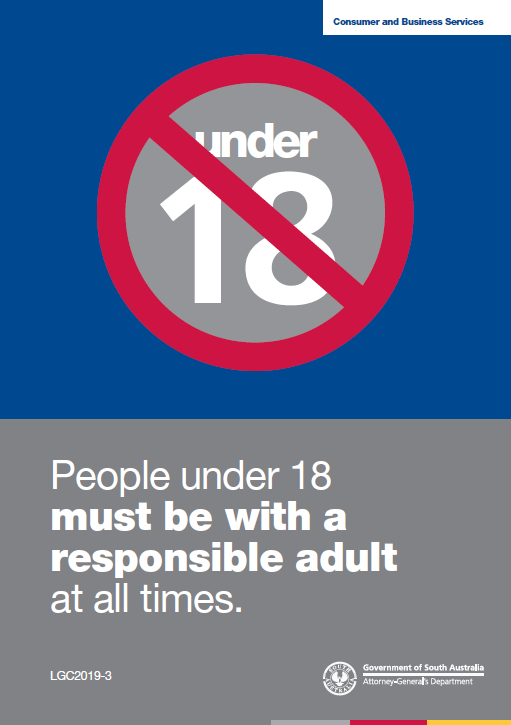
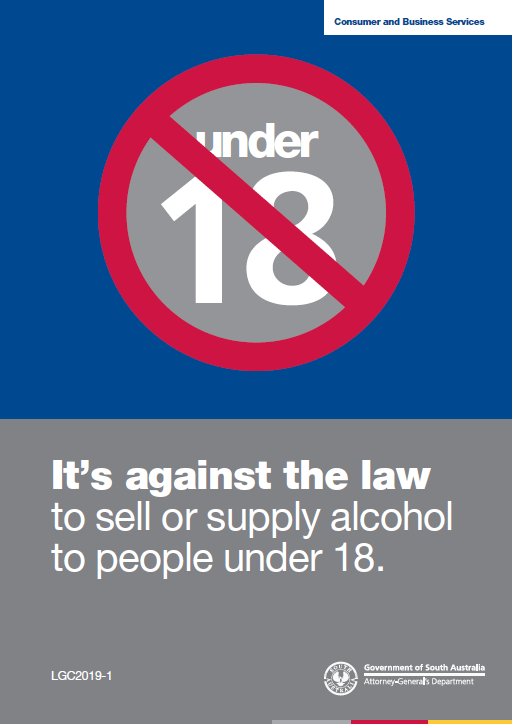
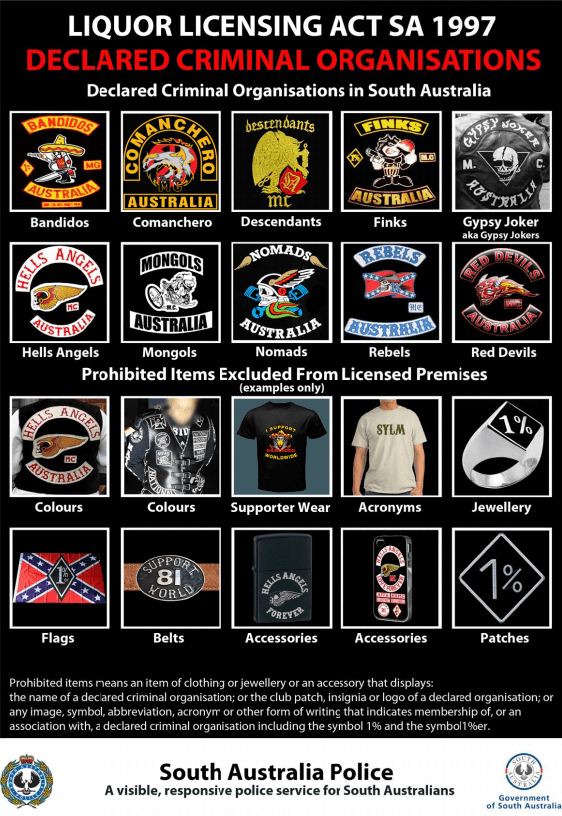
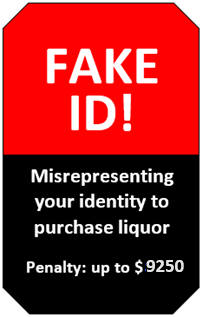
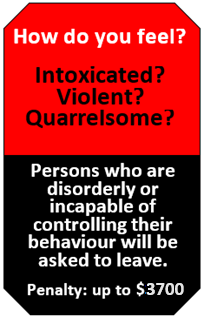
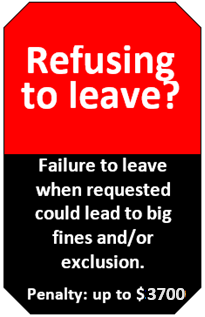
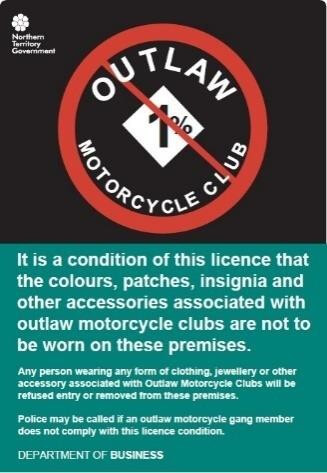
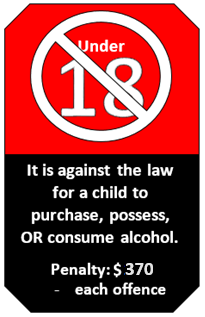
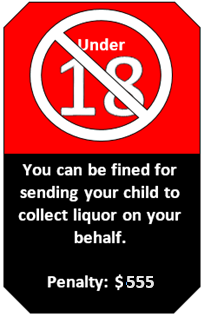
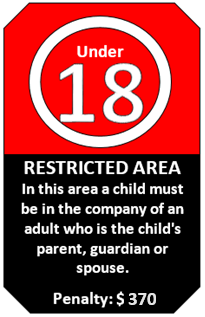
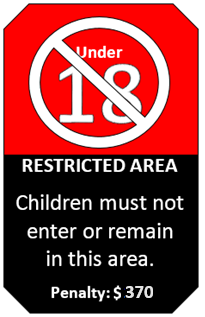
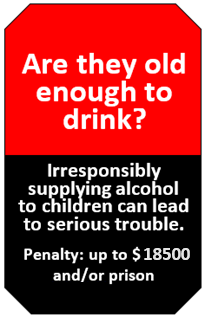
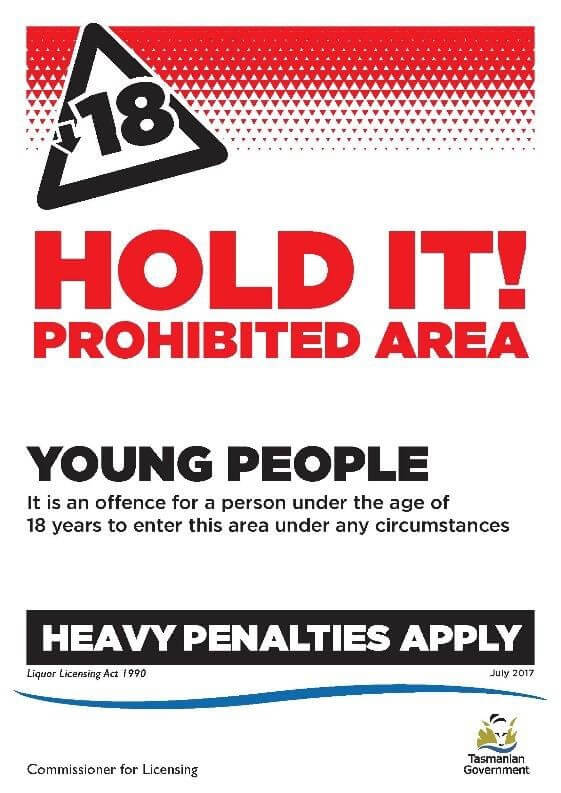
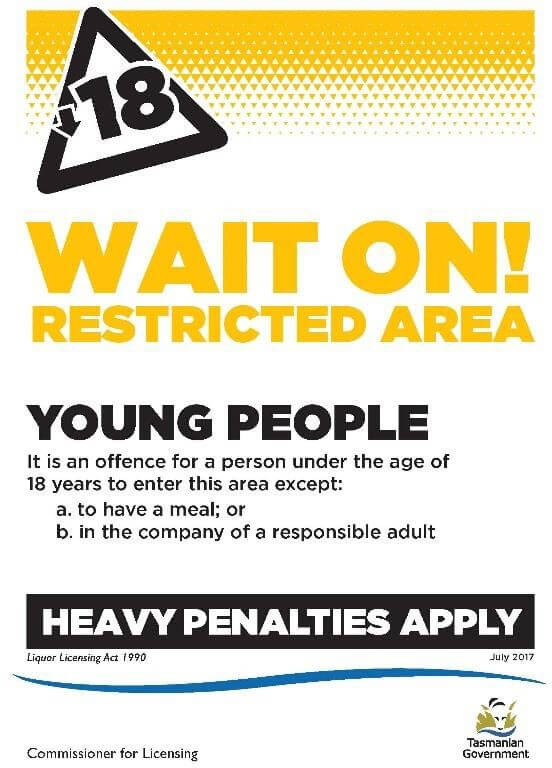
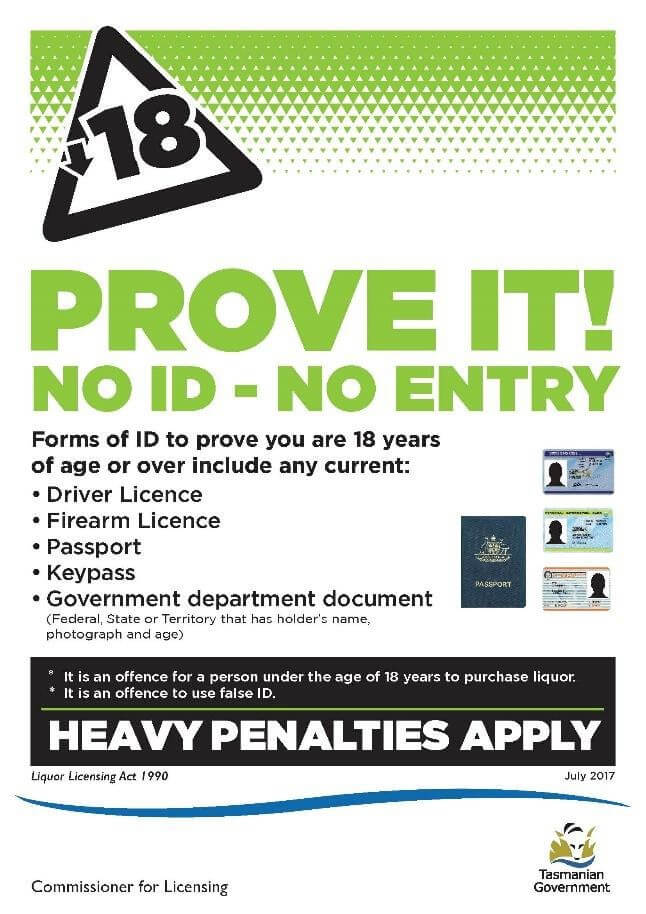
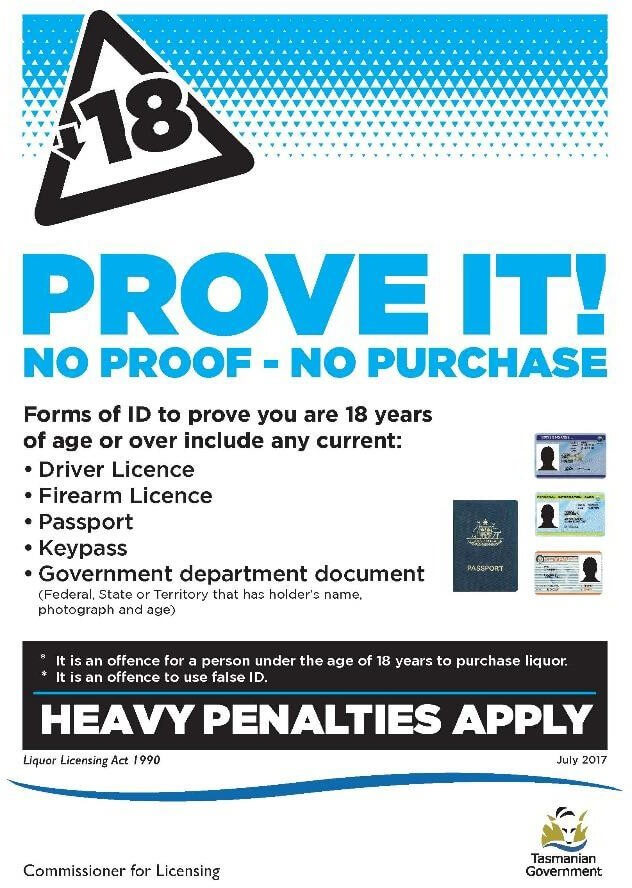
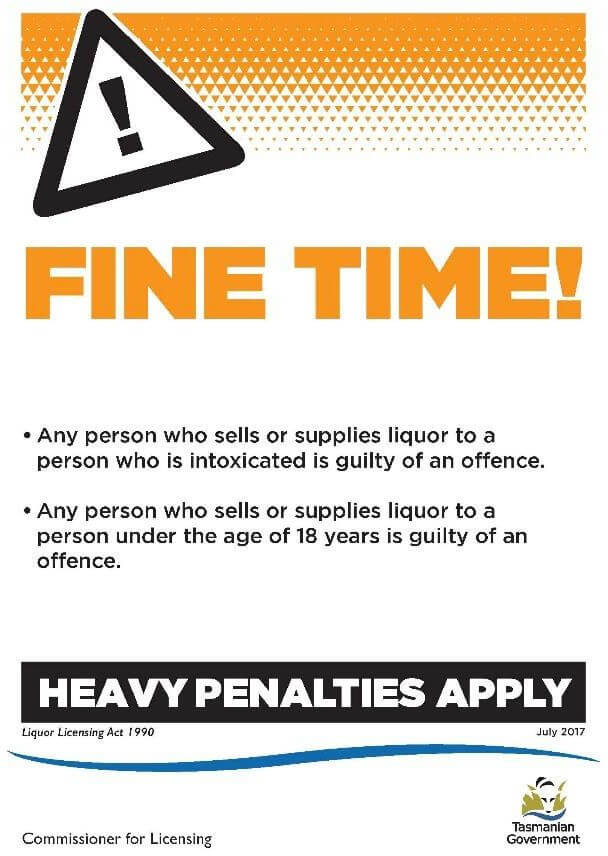
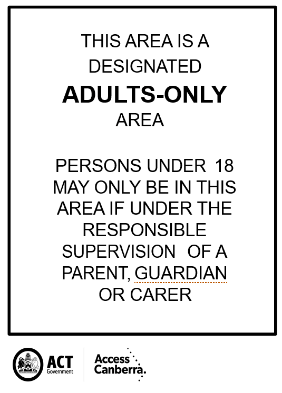
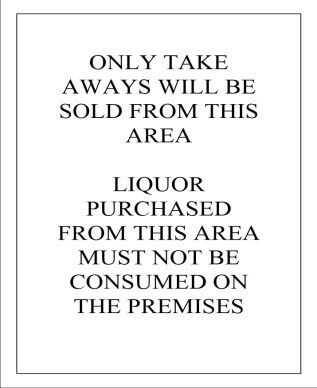
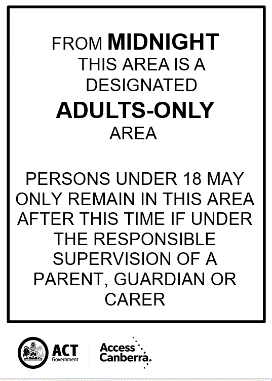
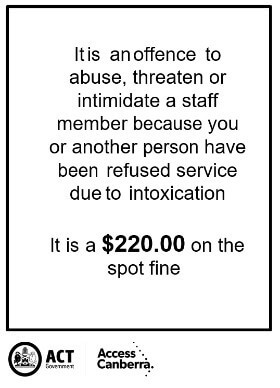
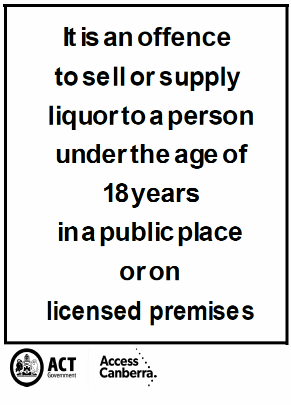
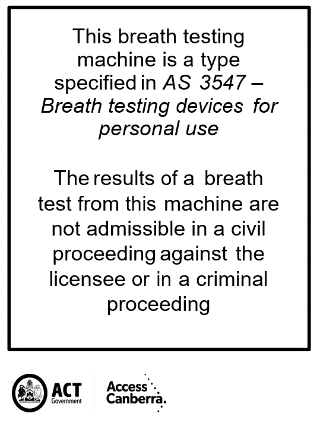
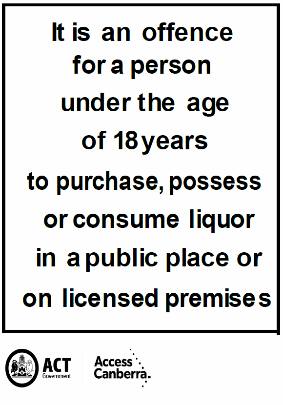
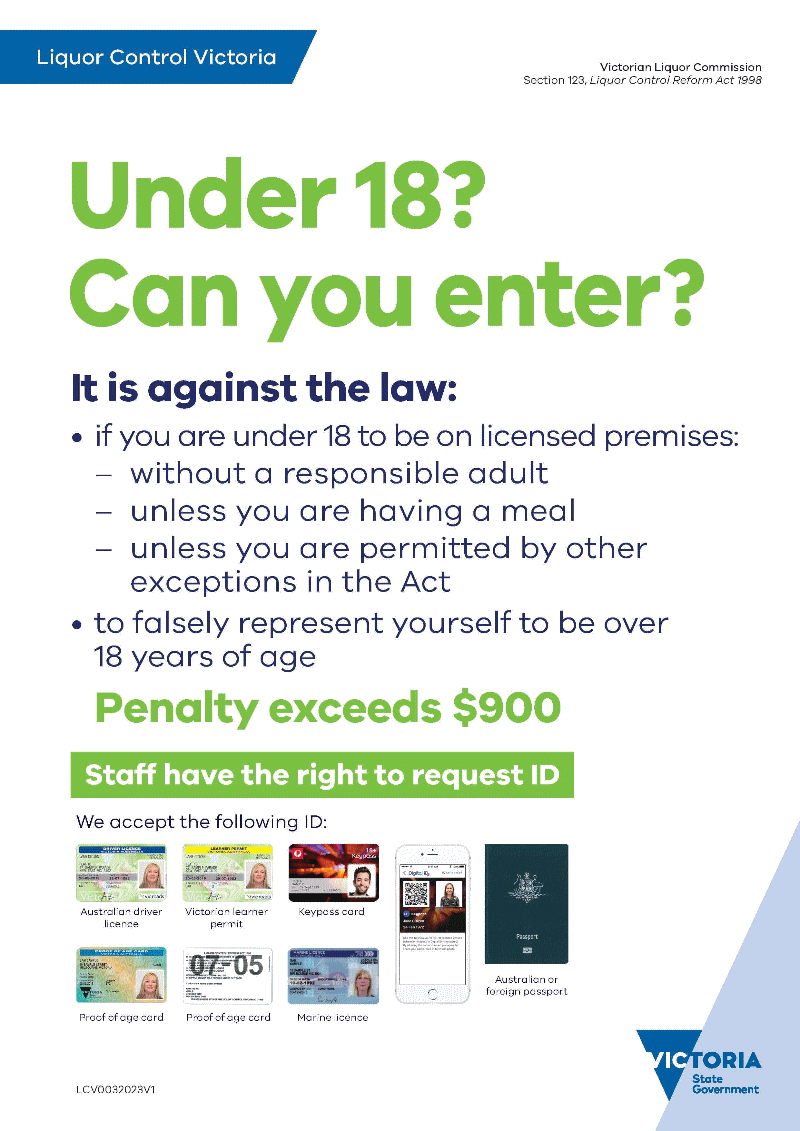
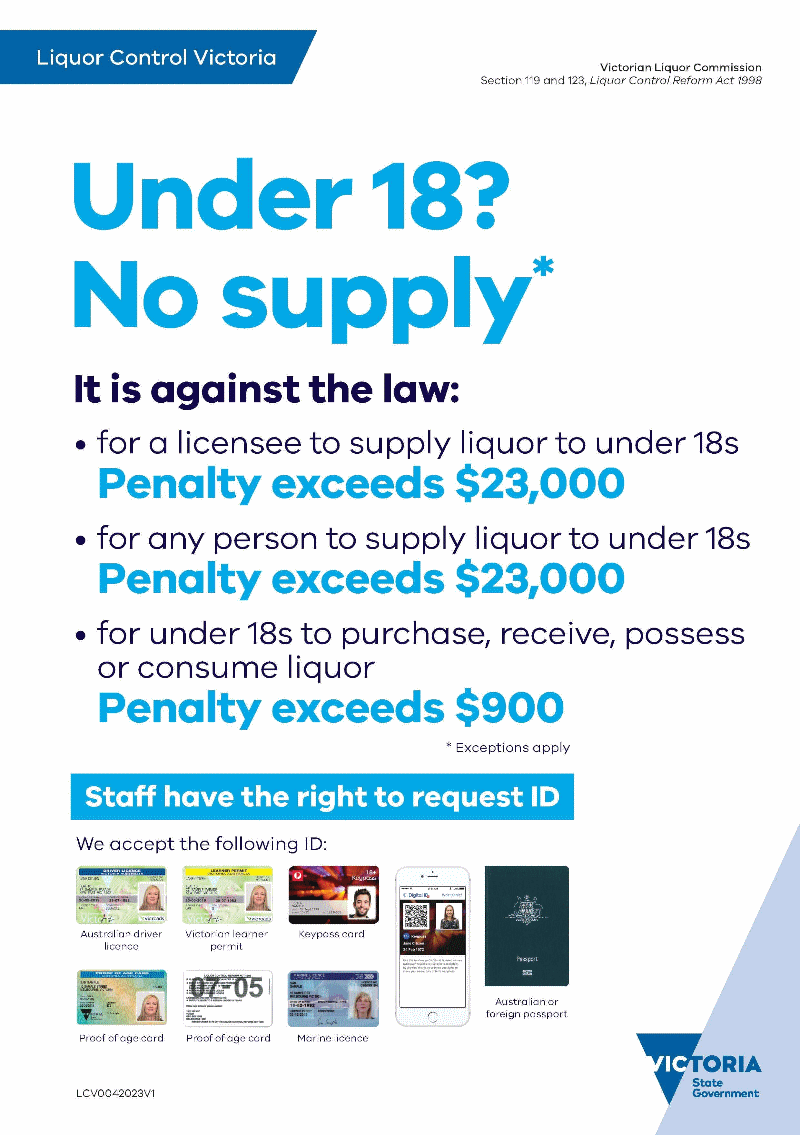
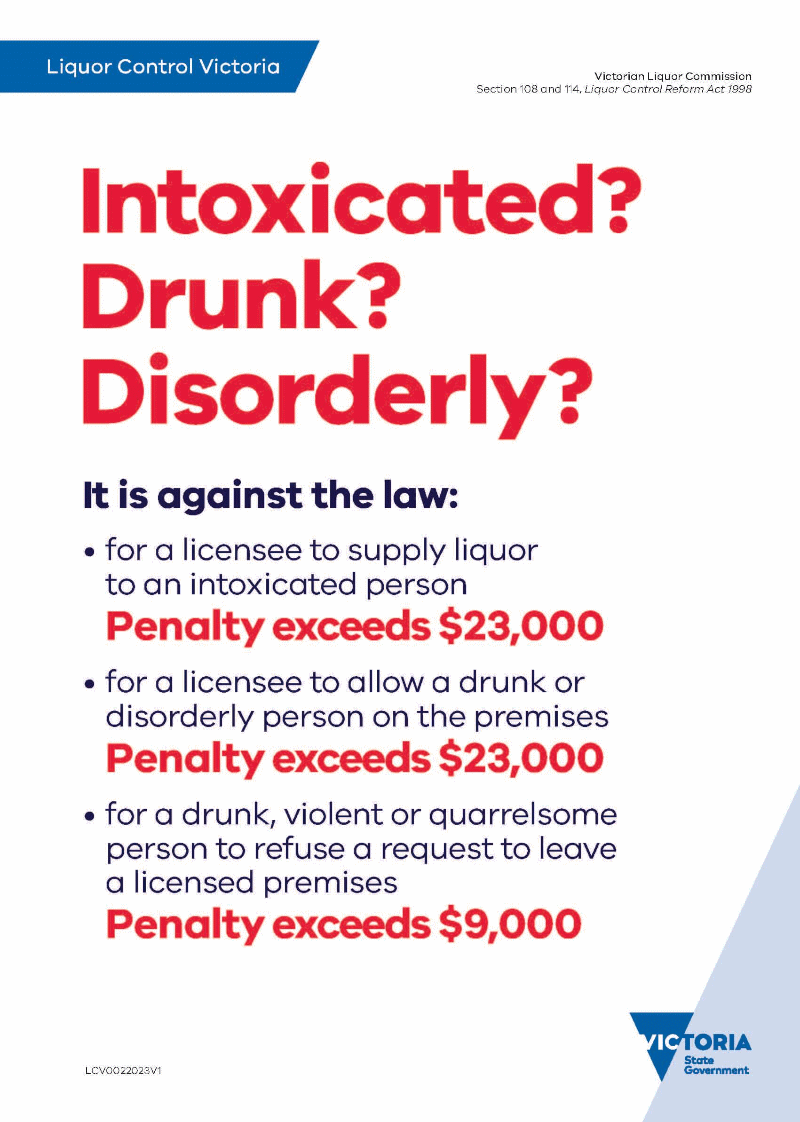
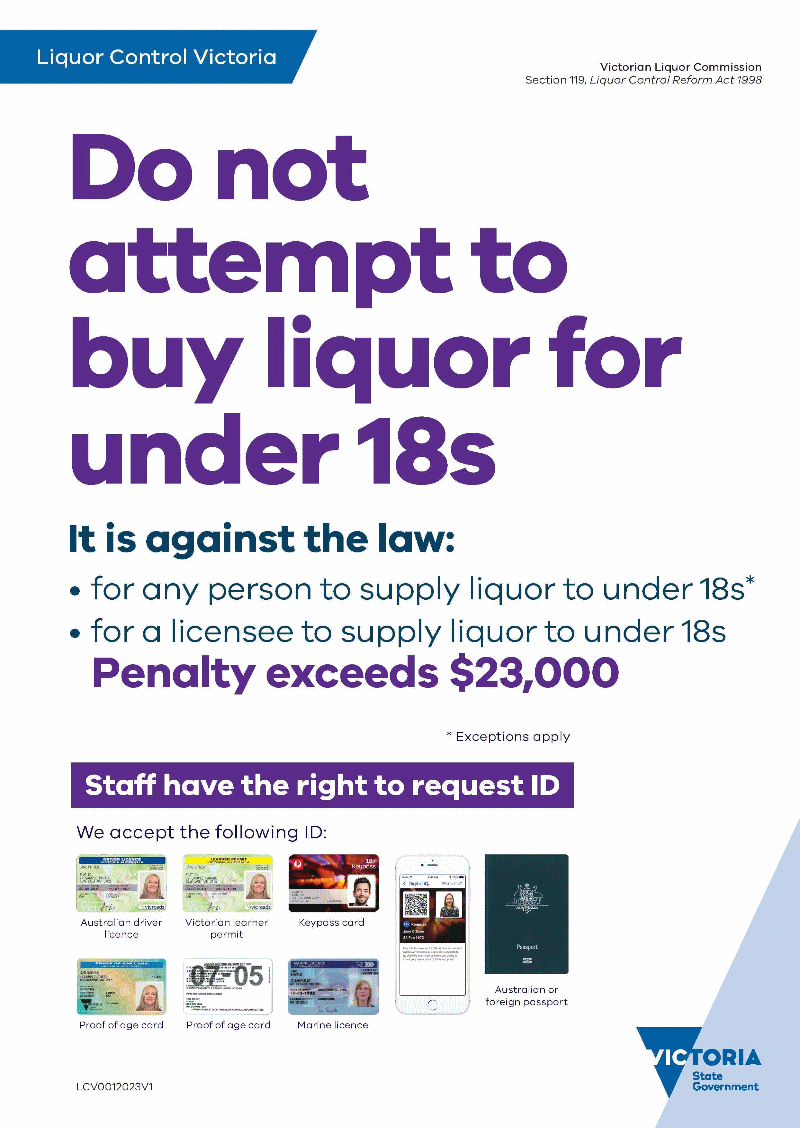

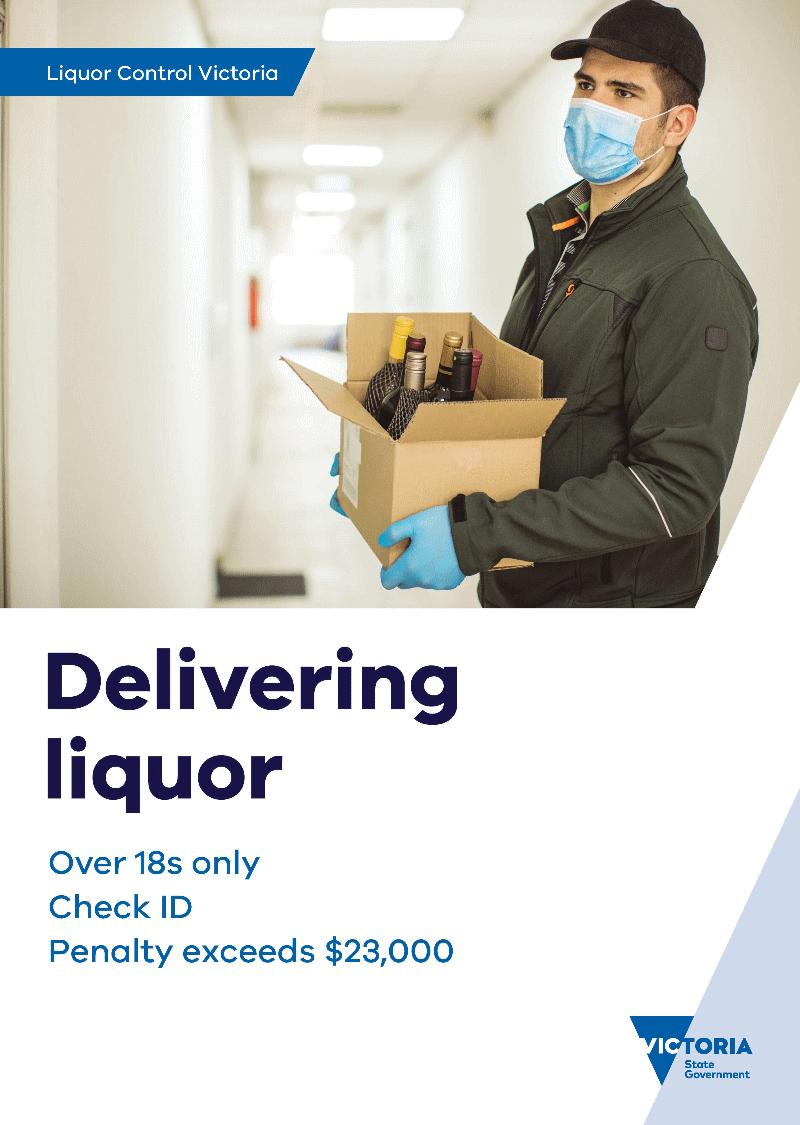
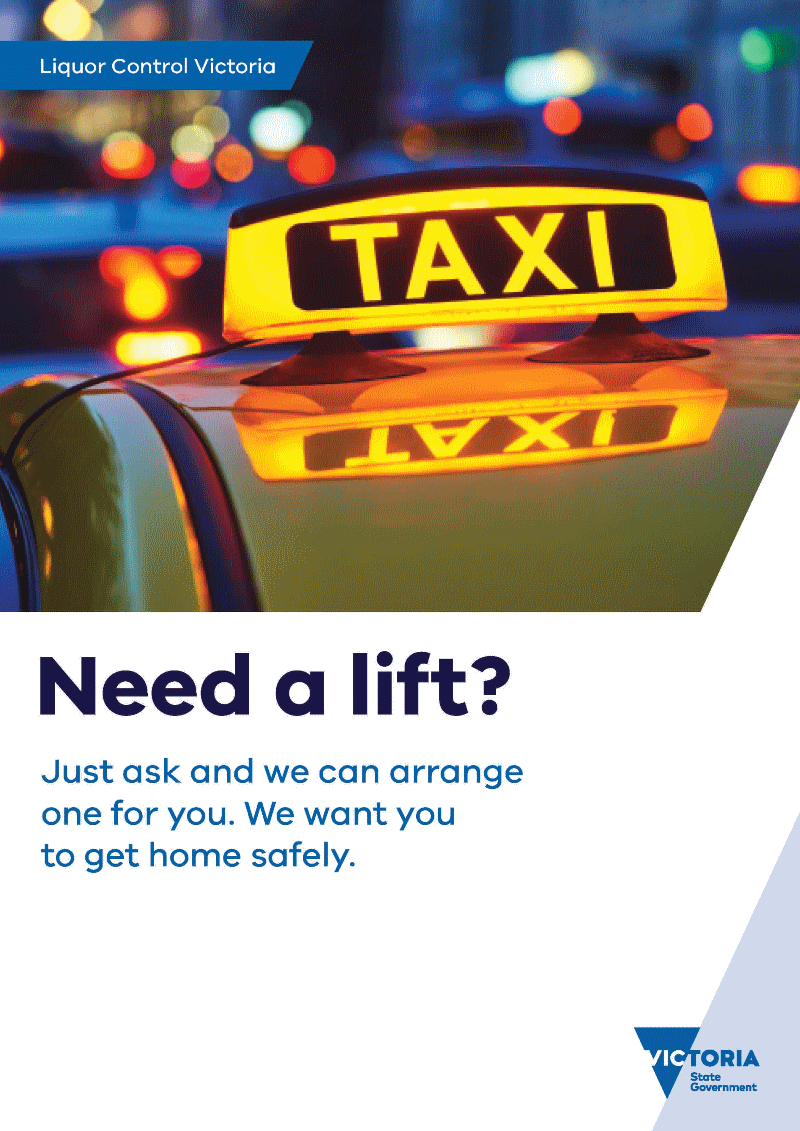

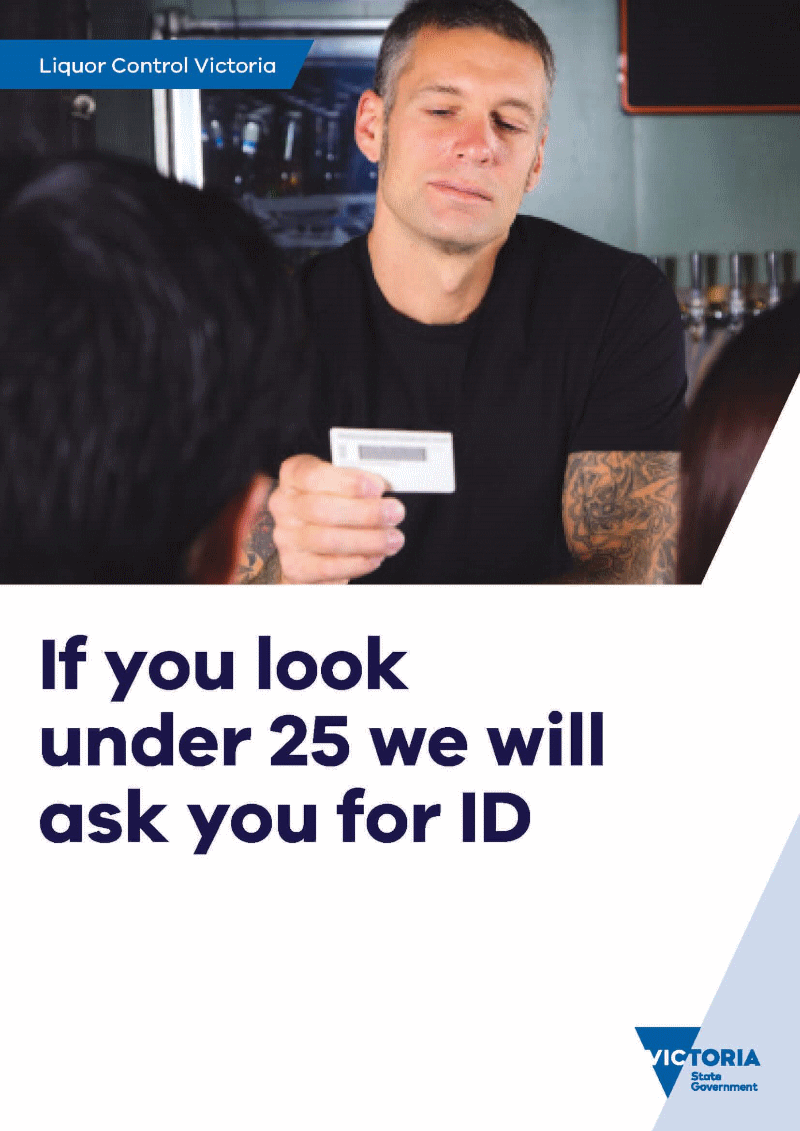
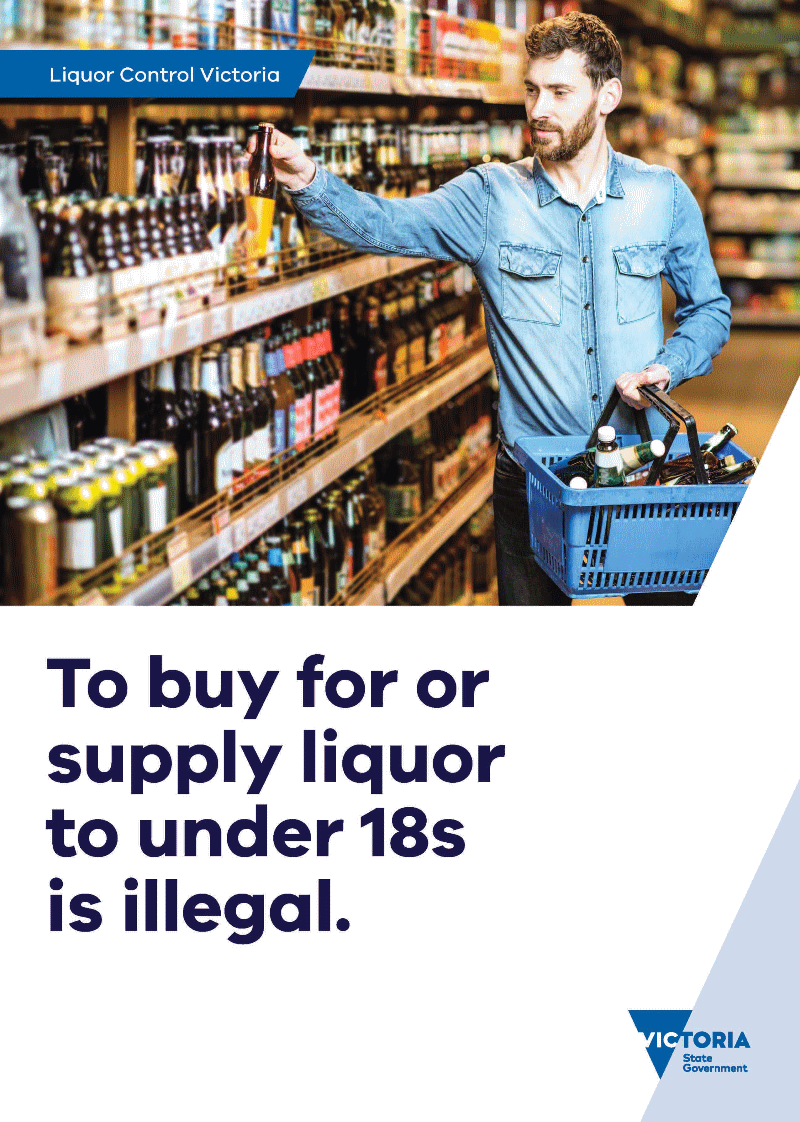
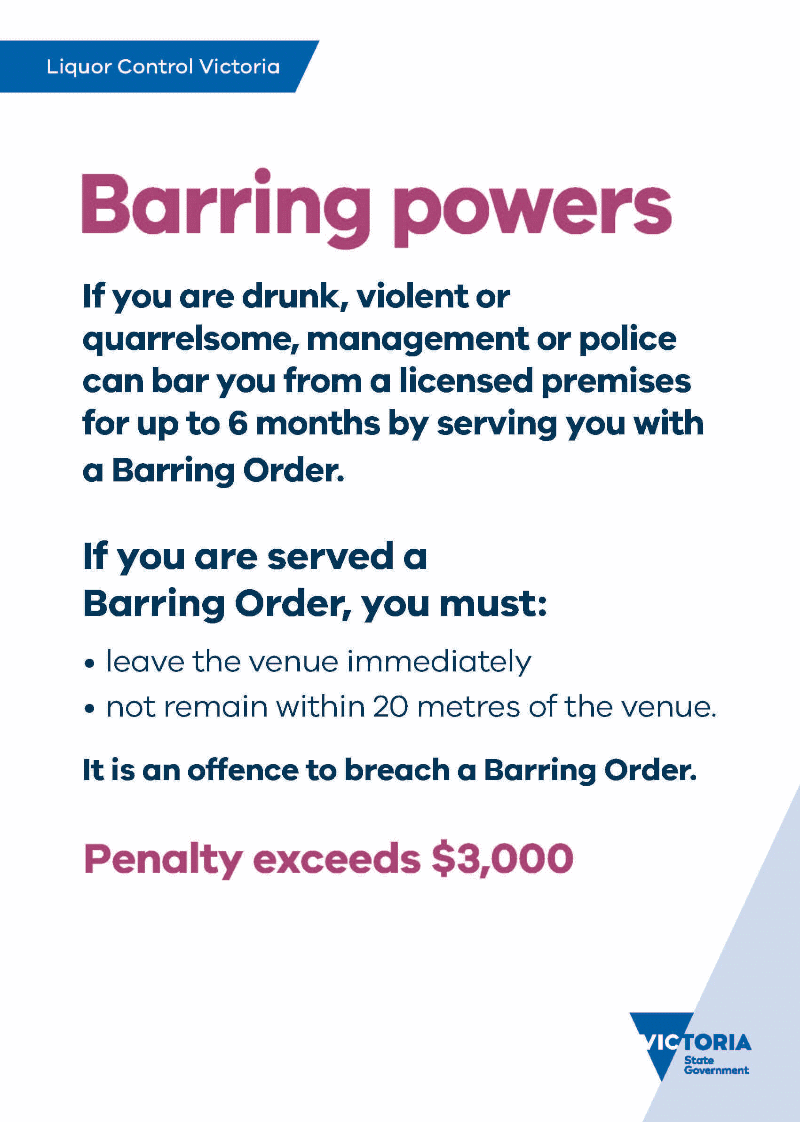
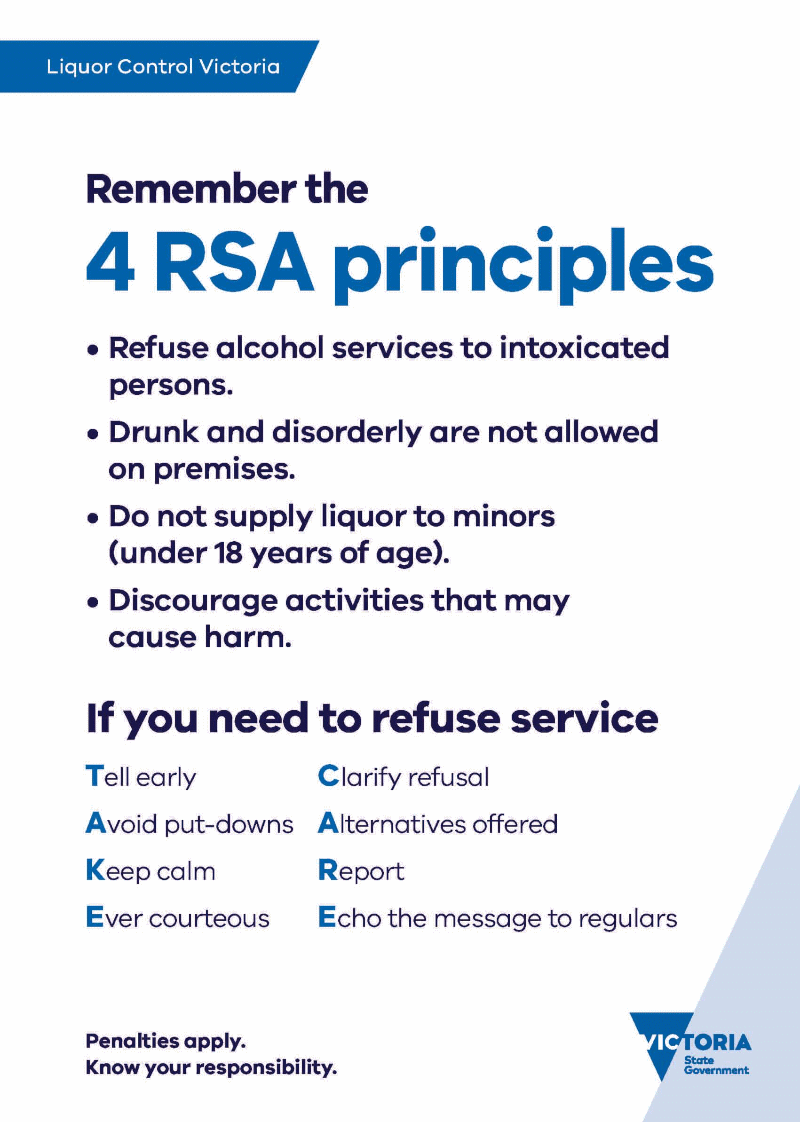
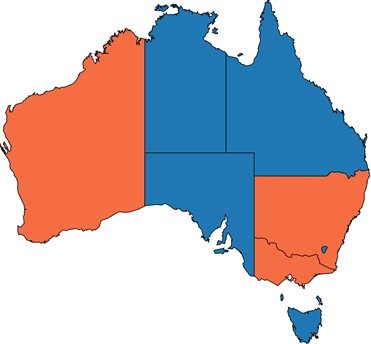
.png)
